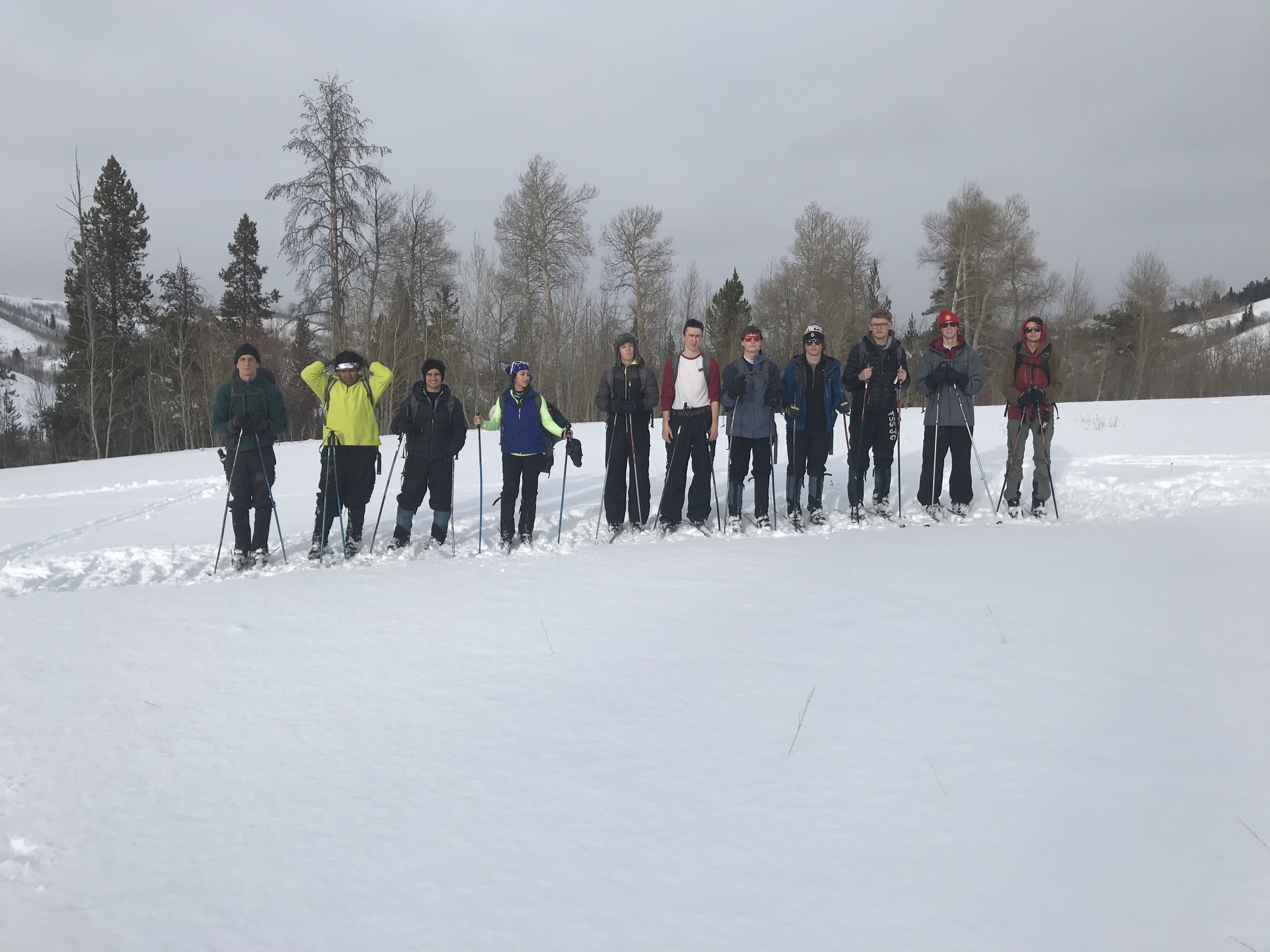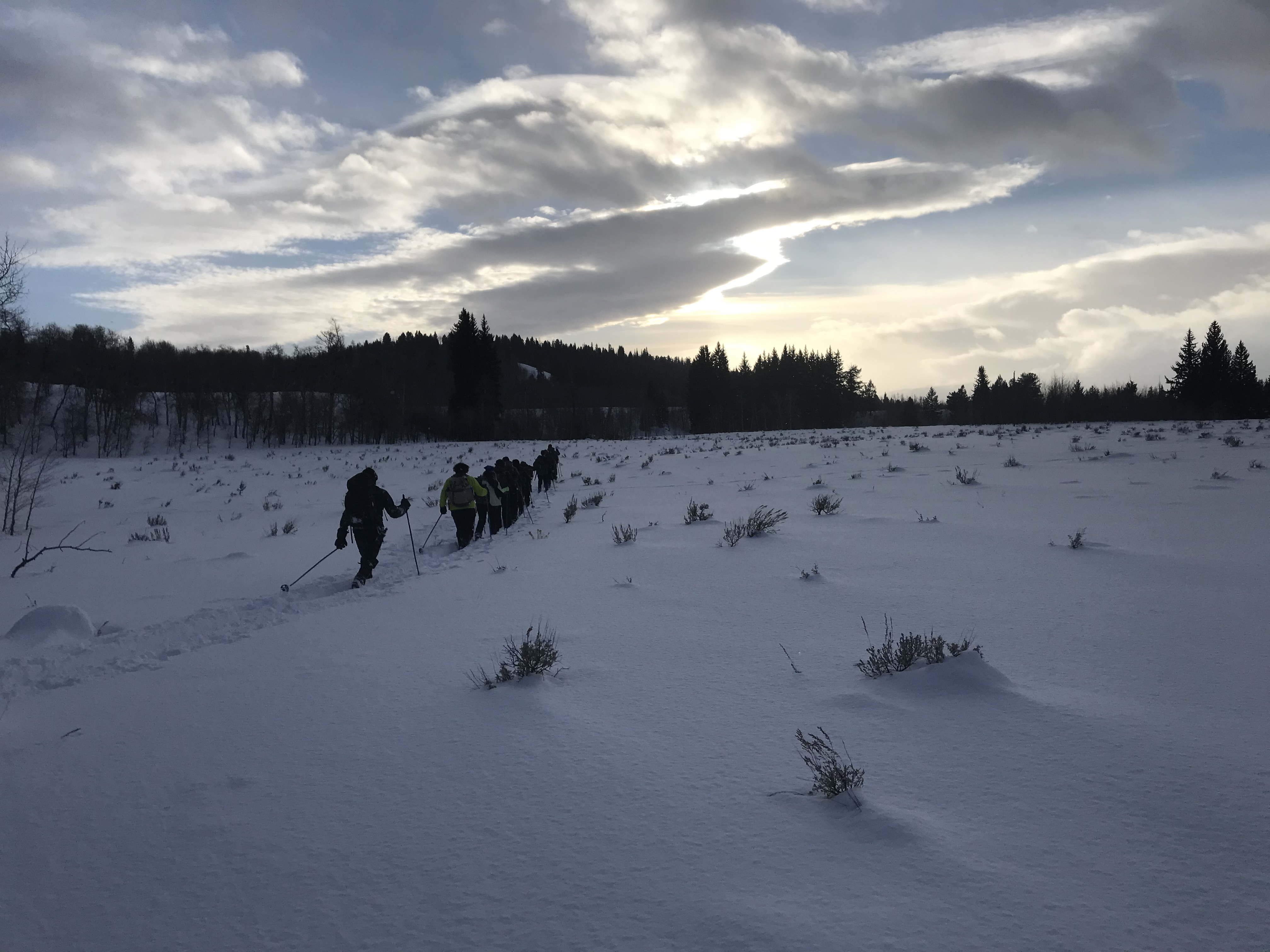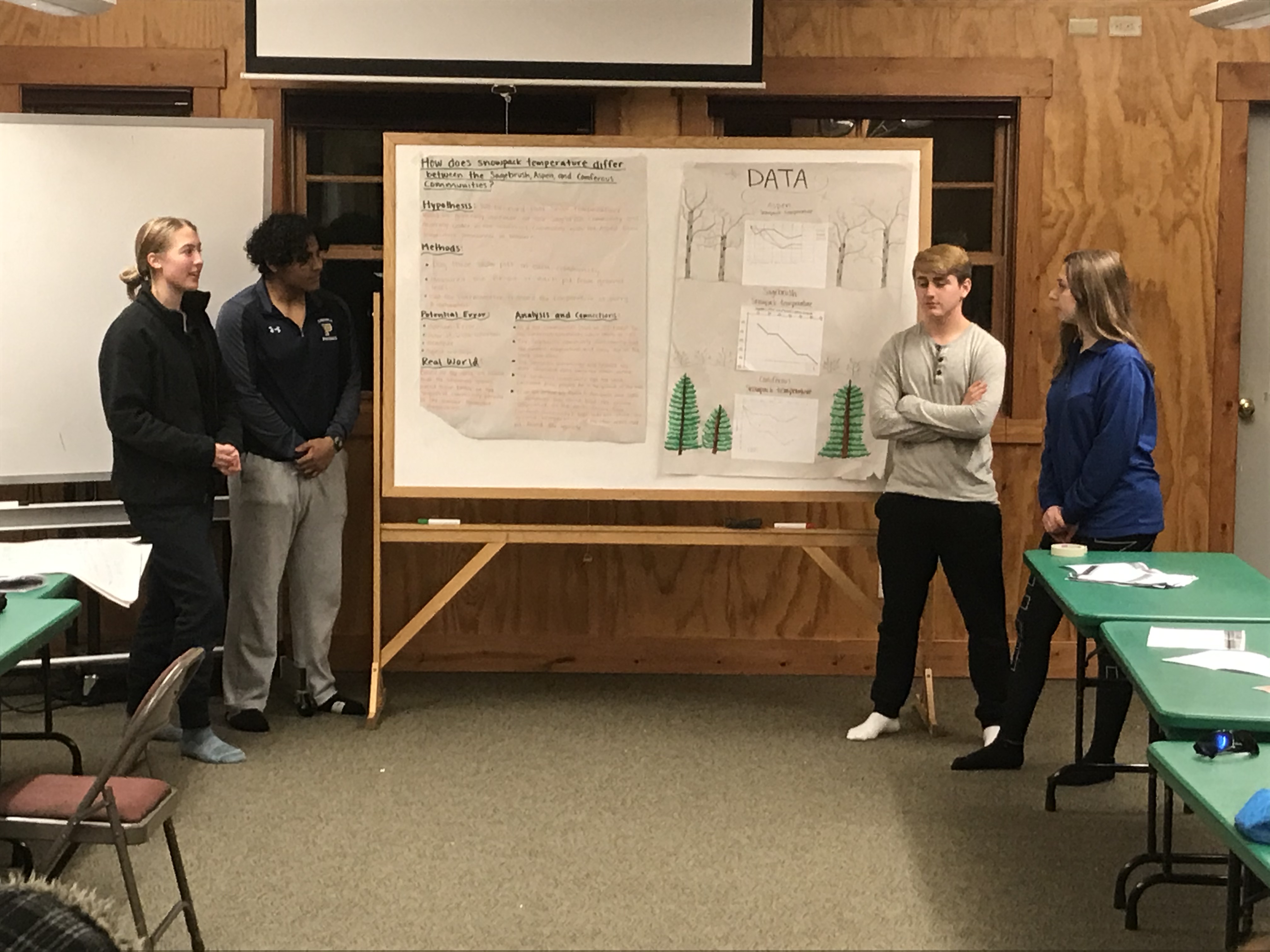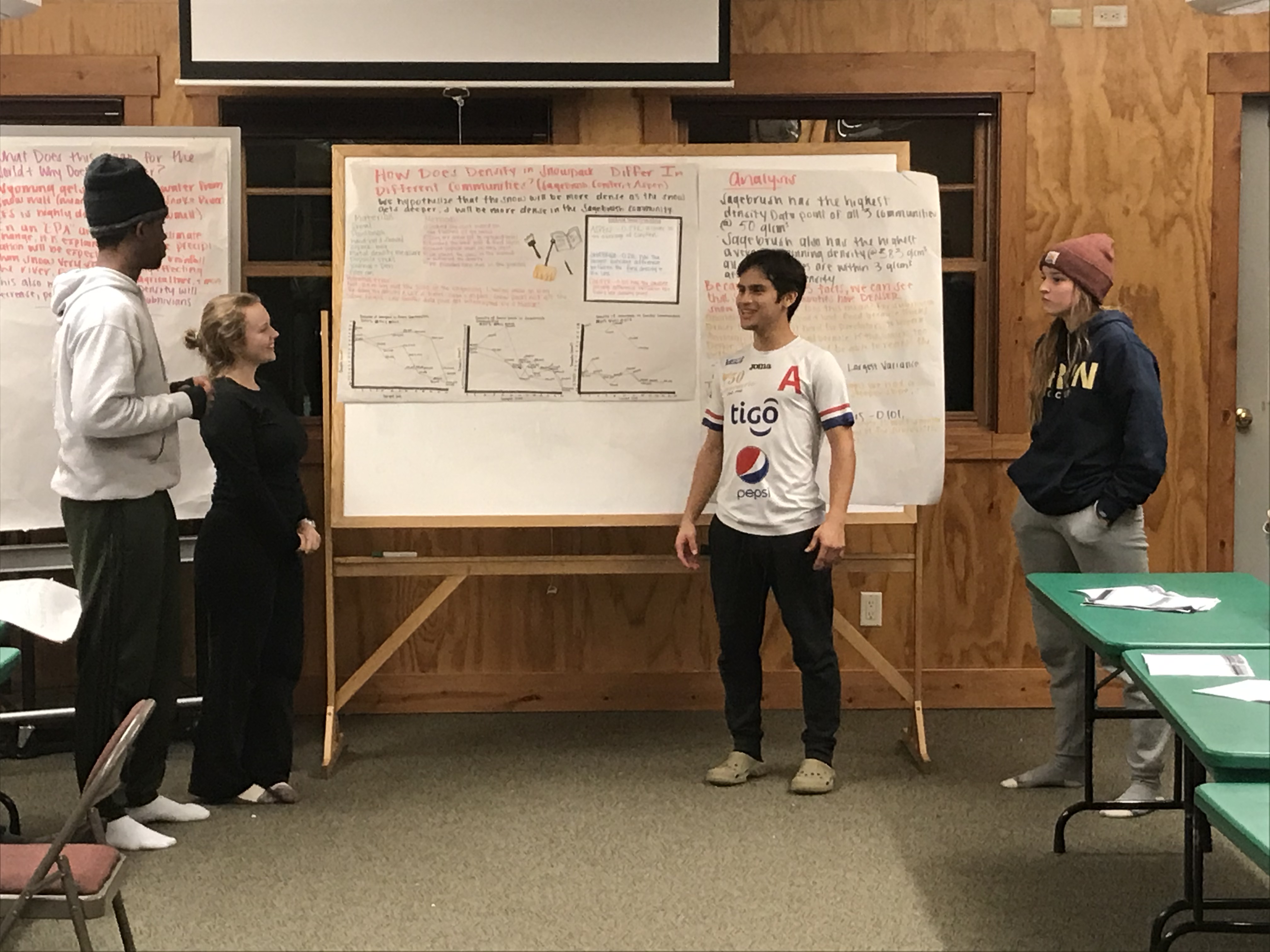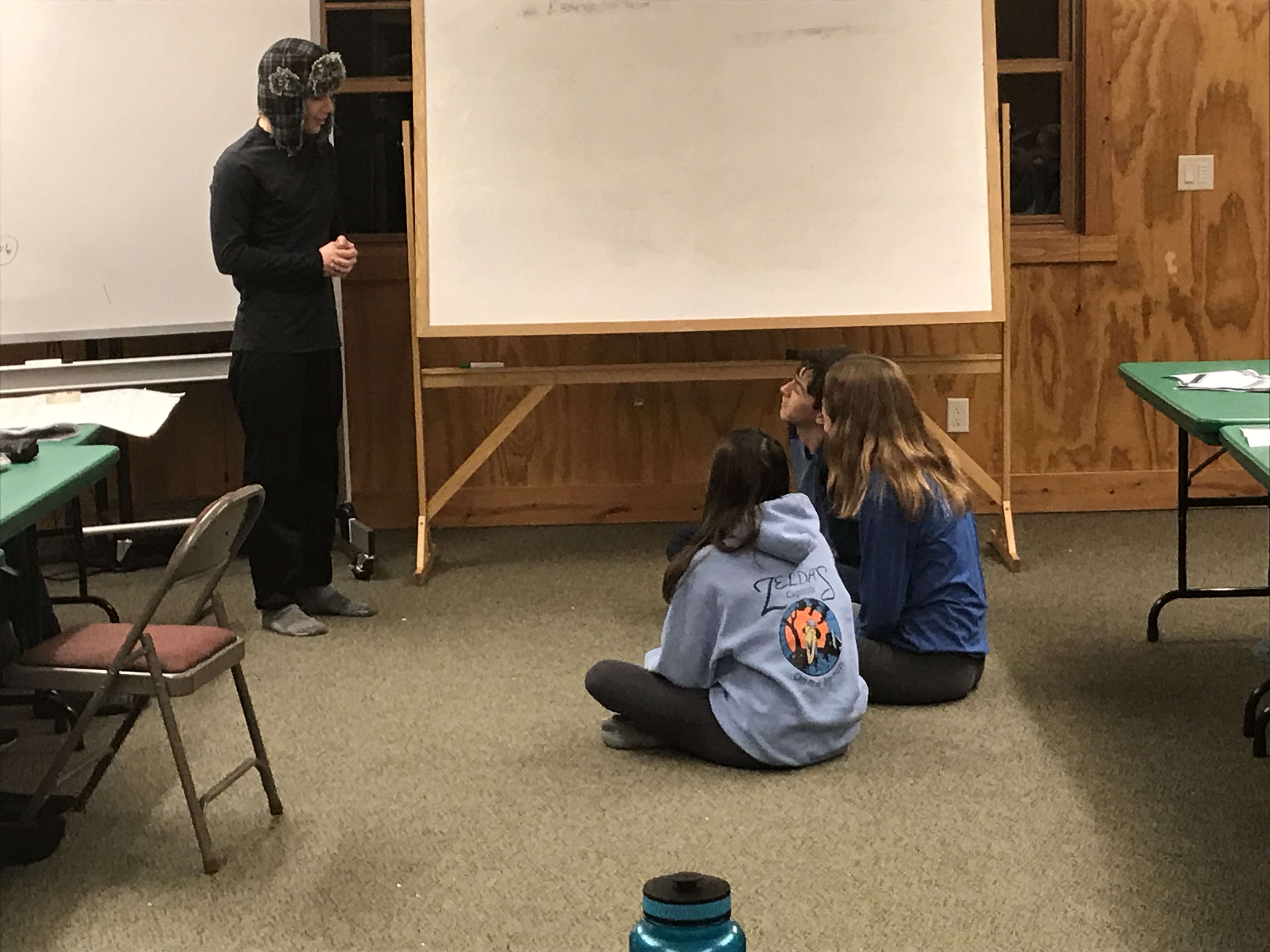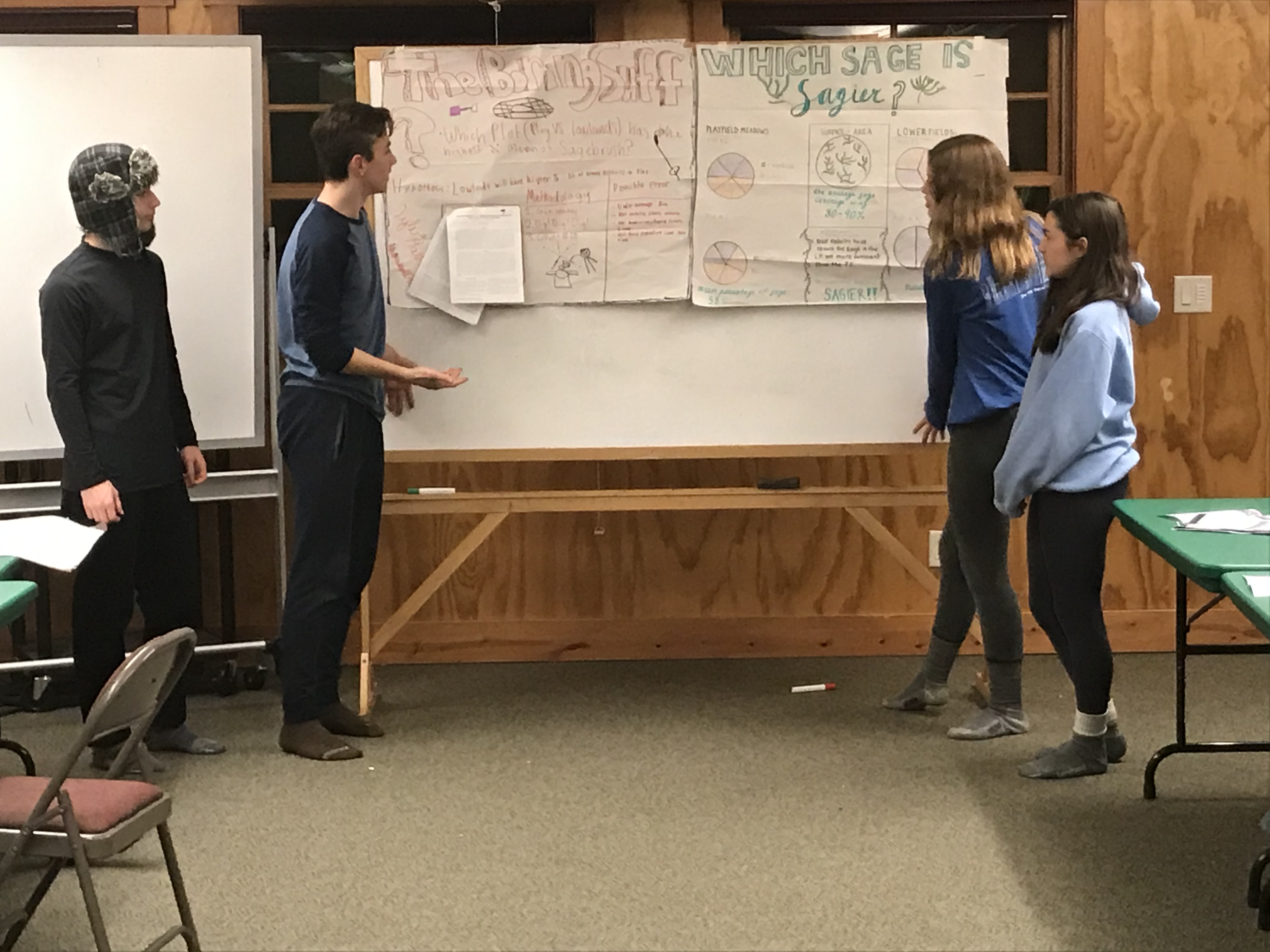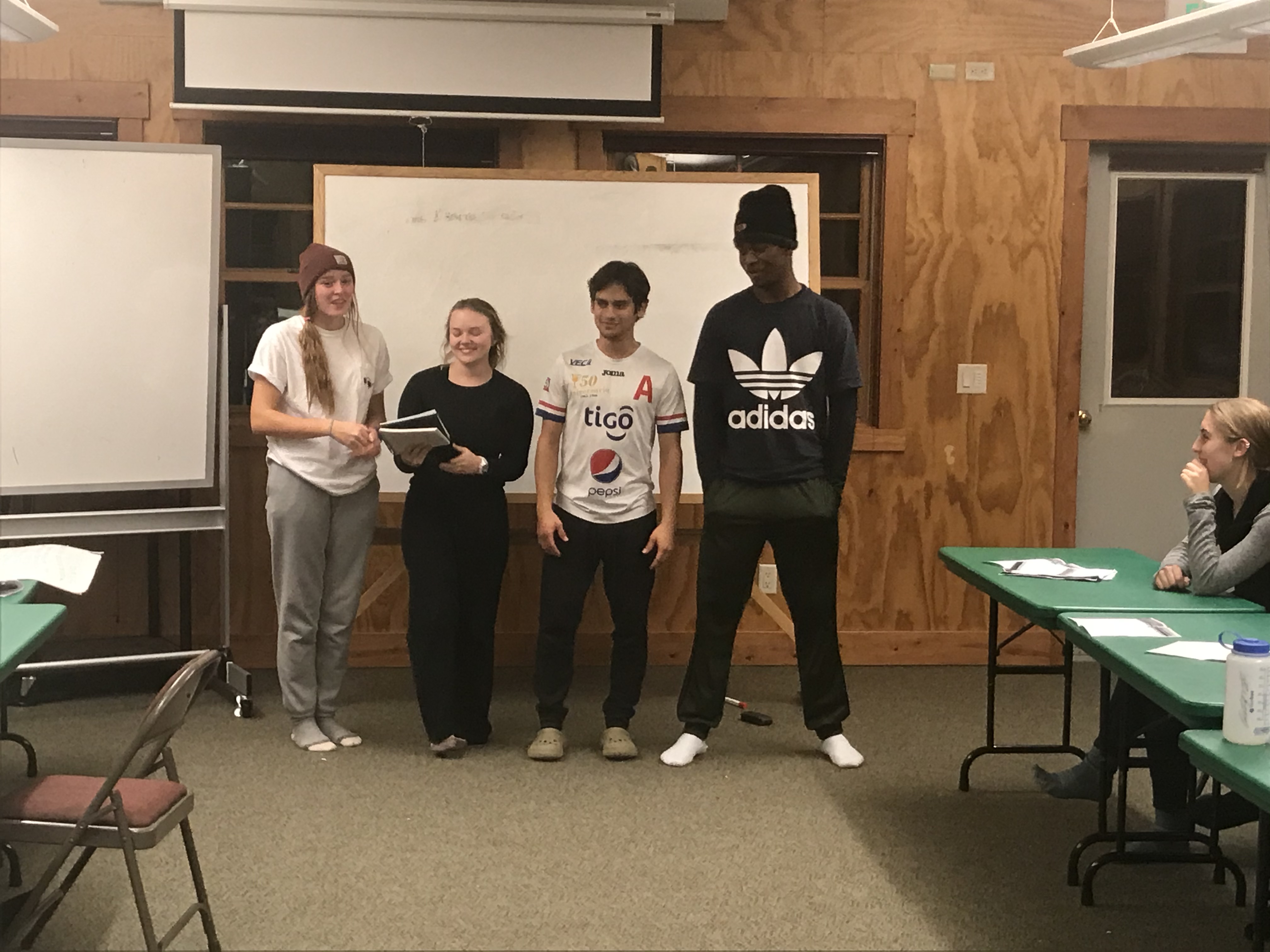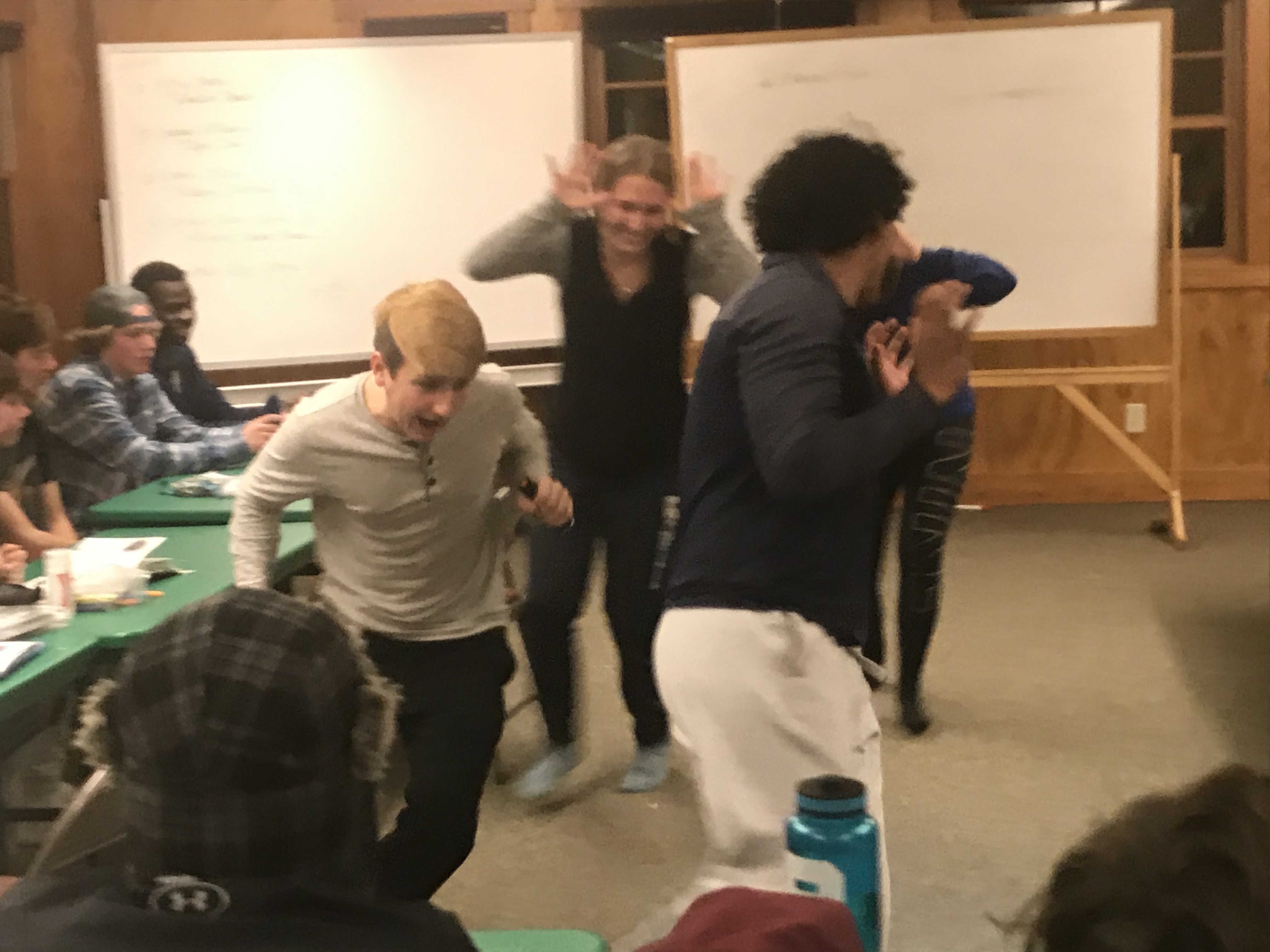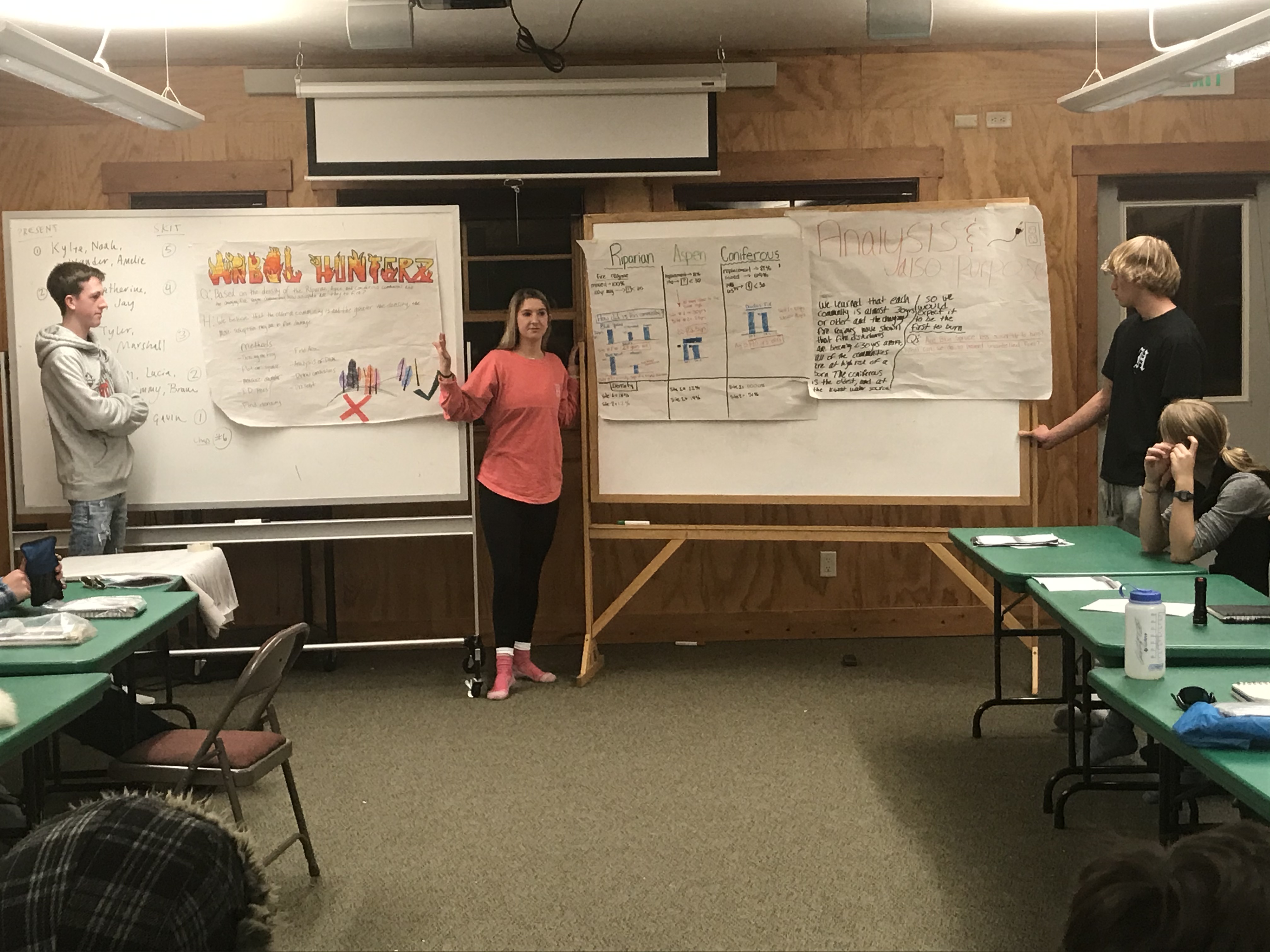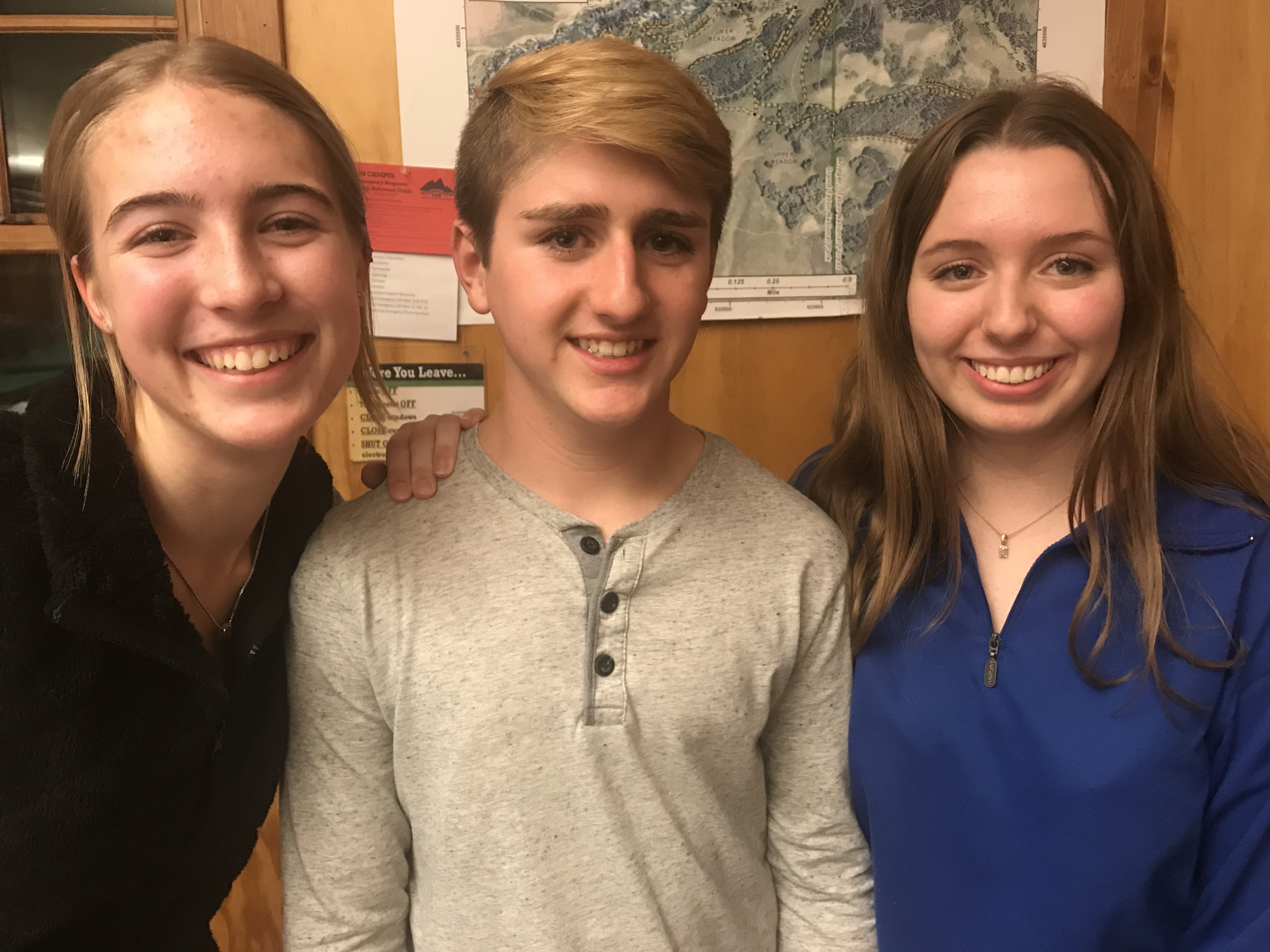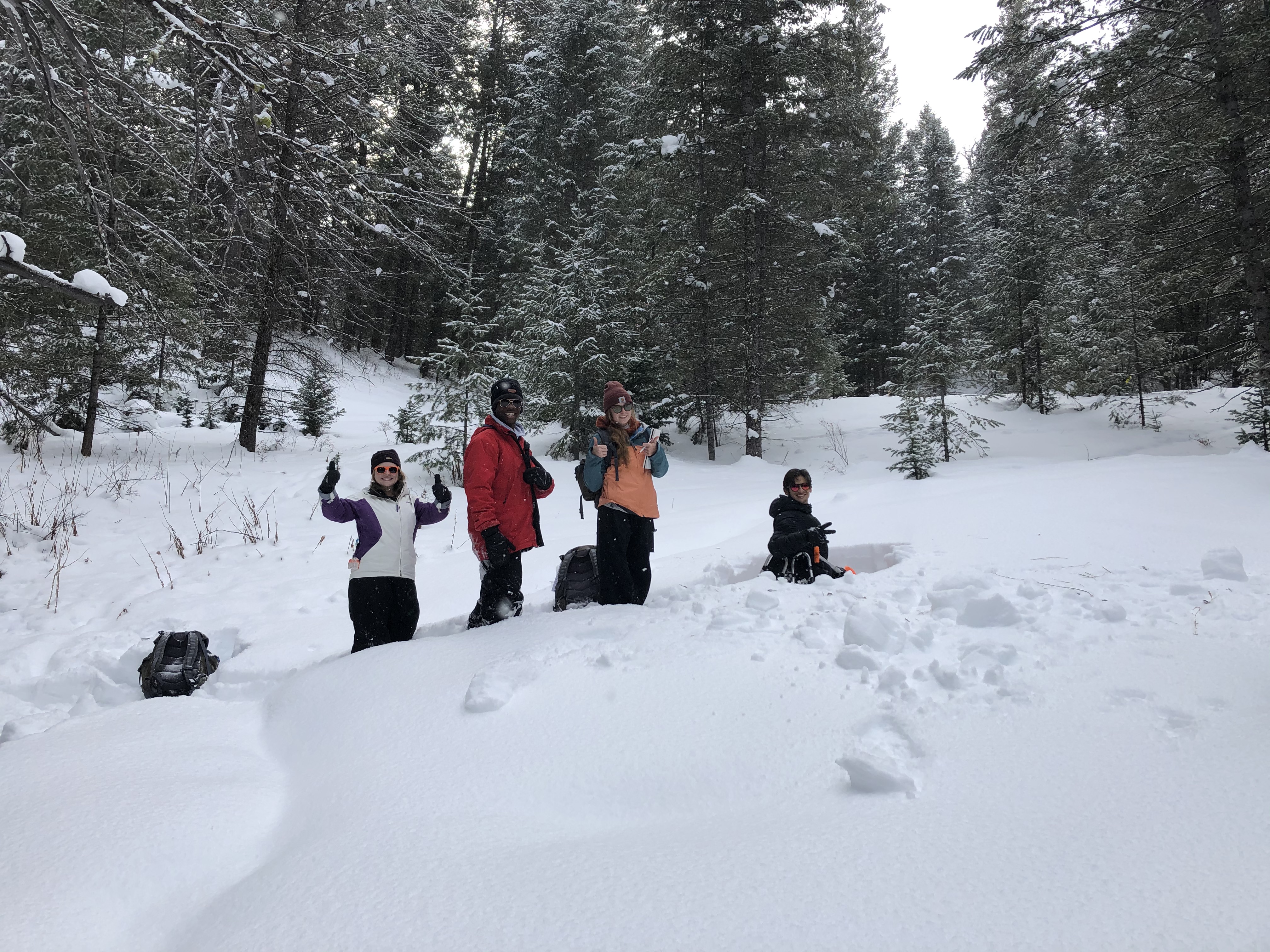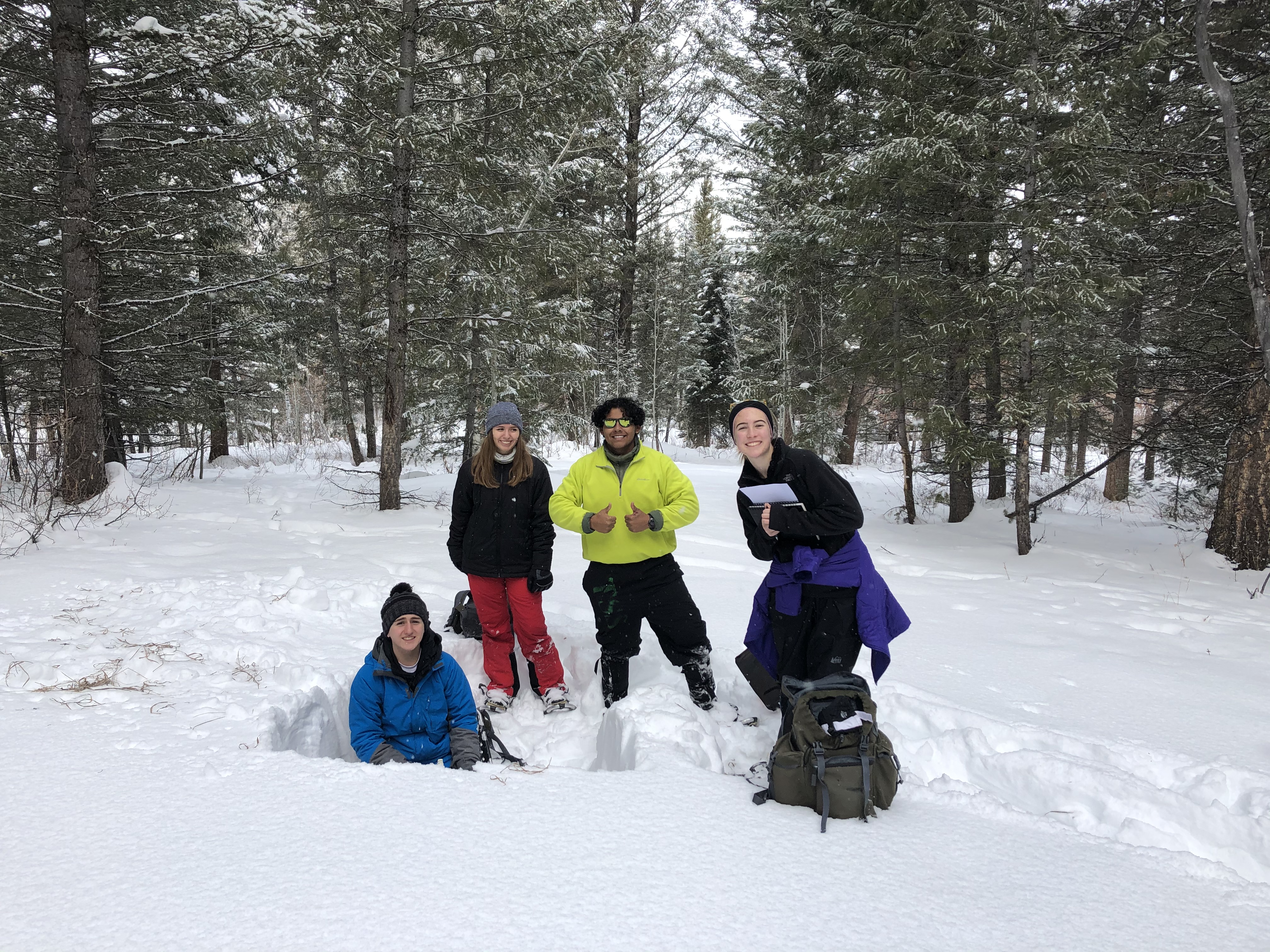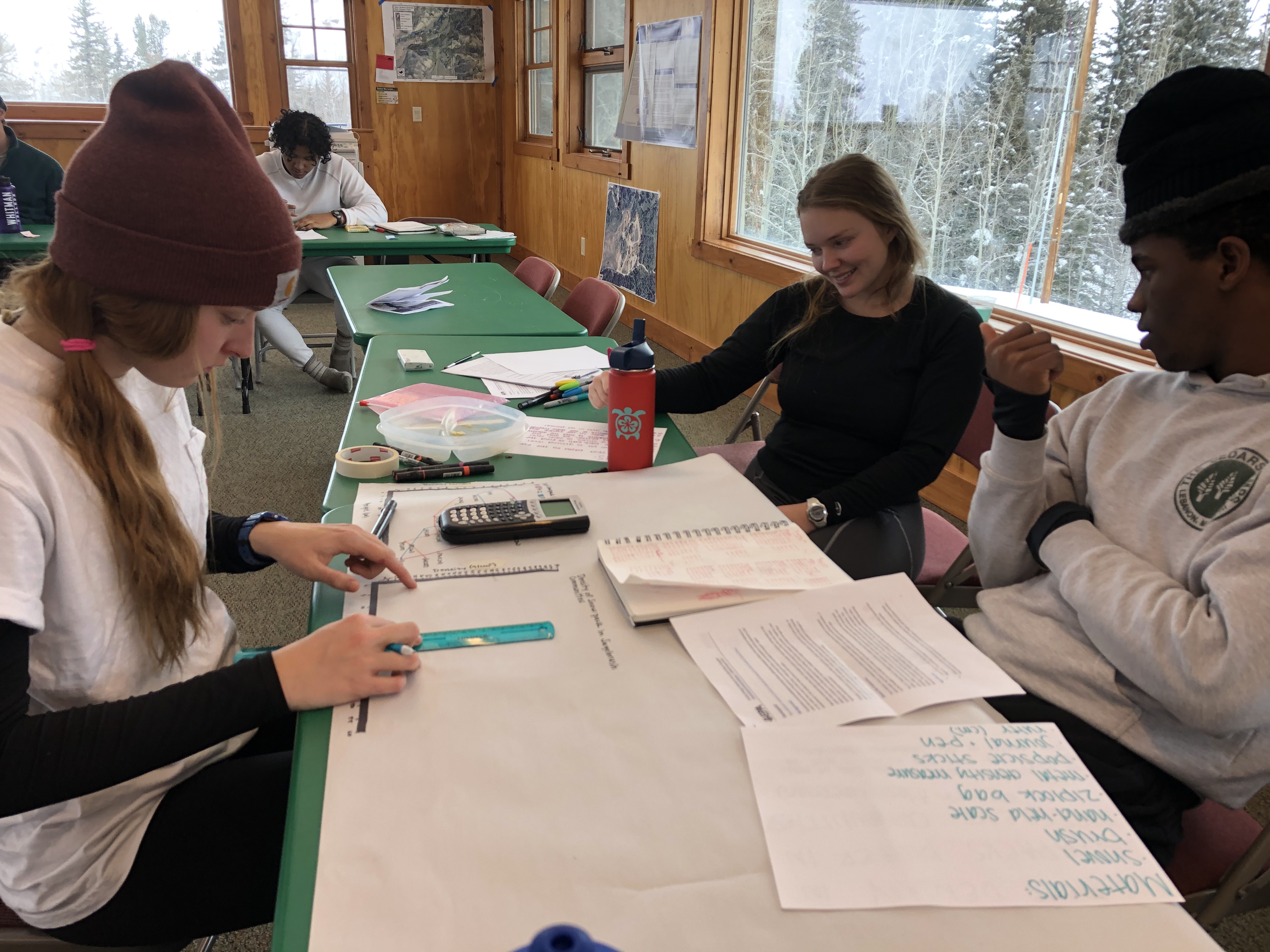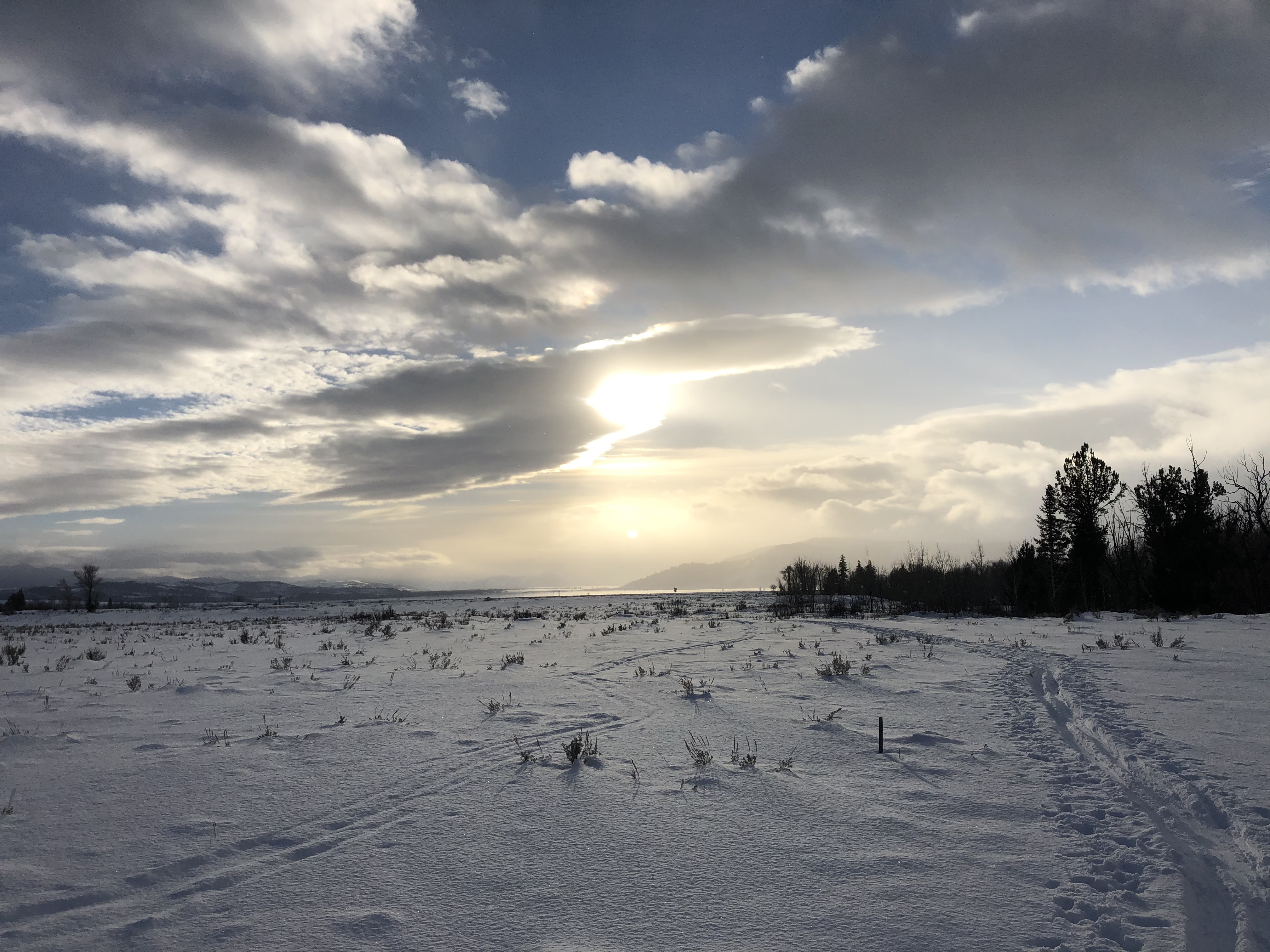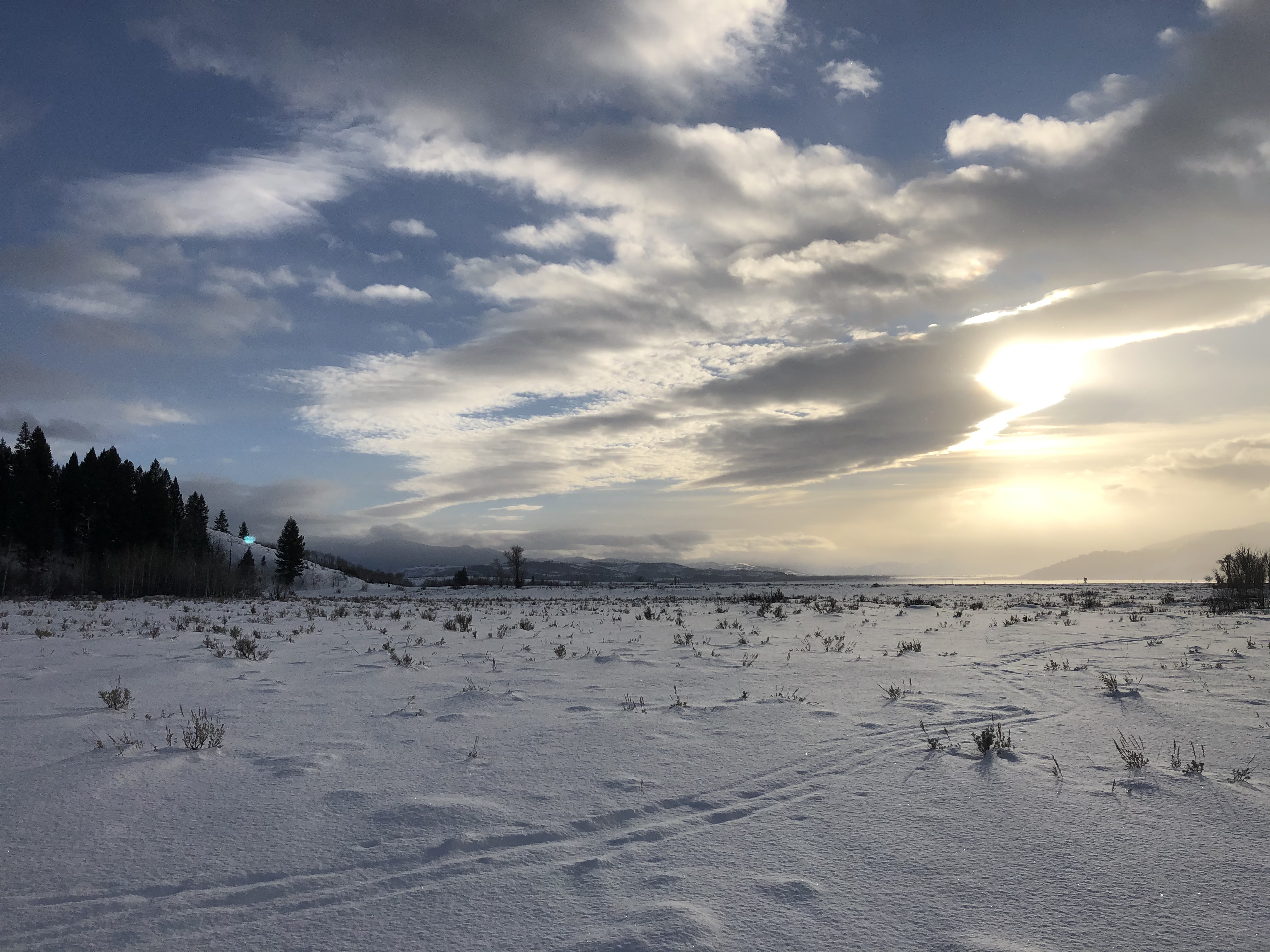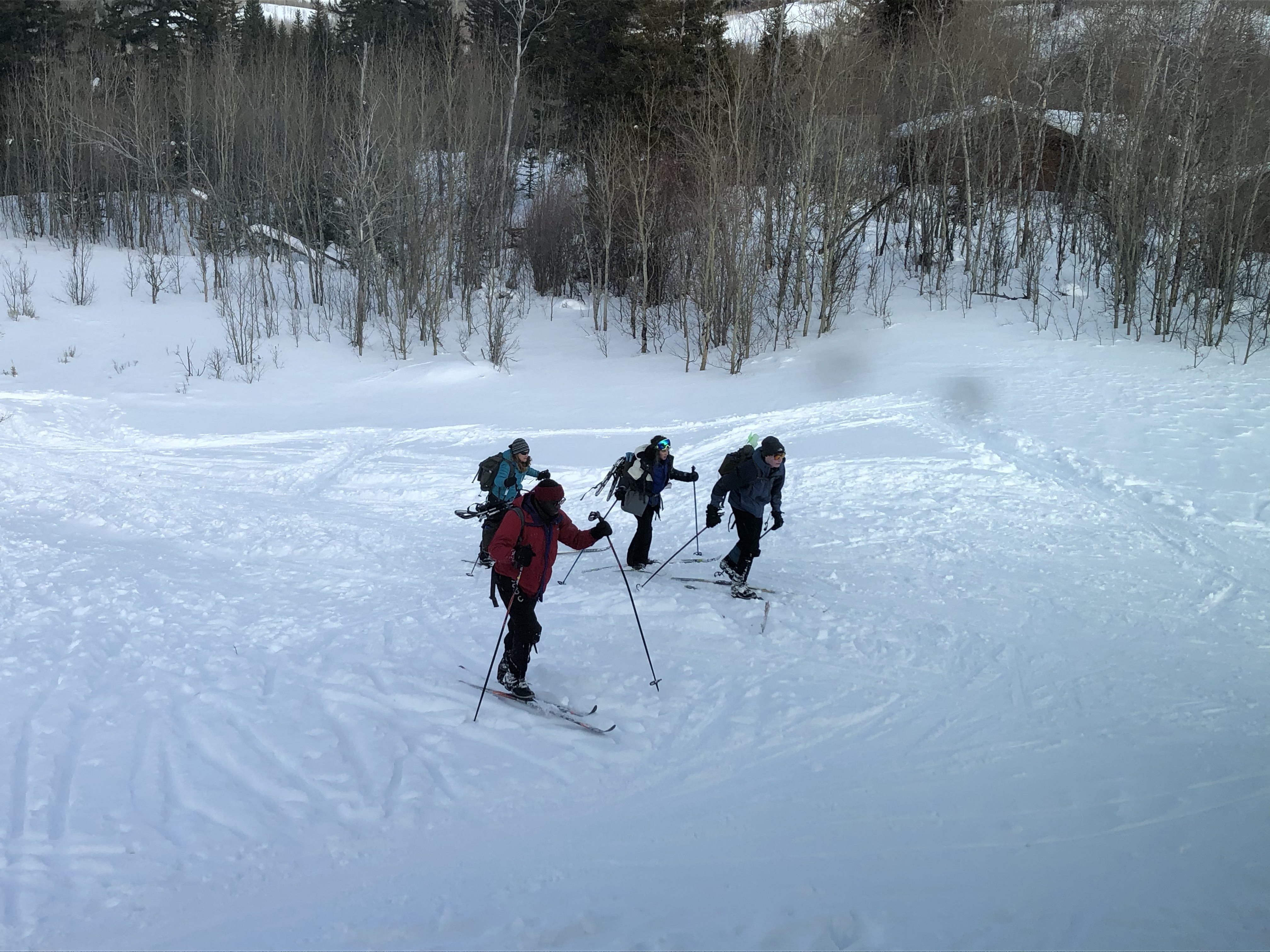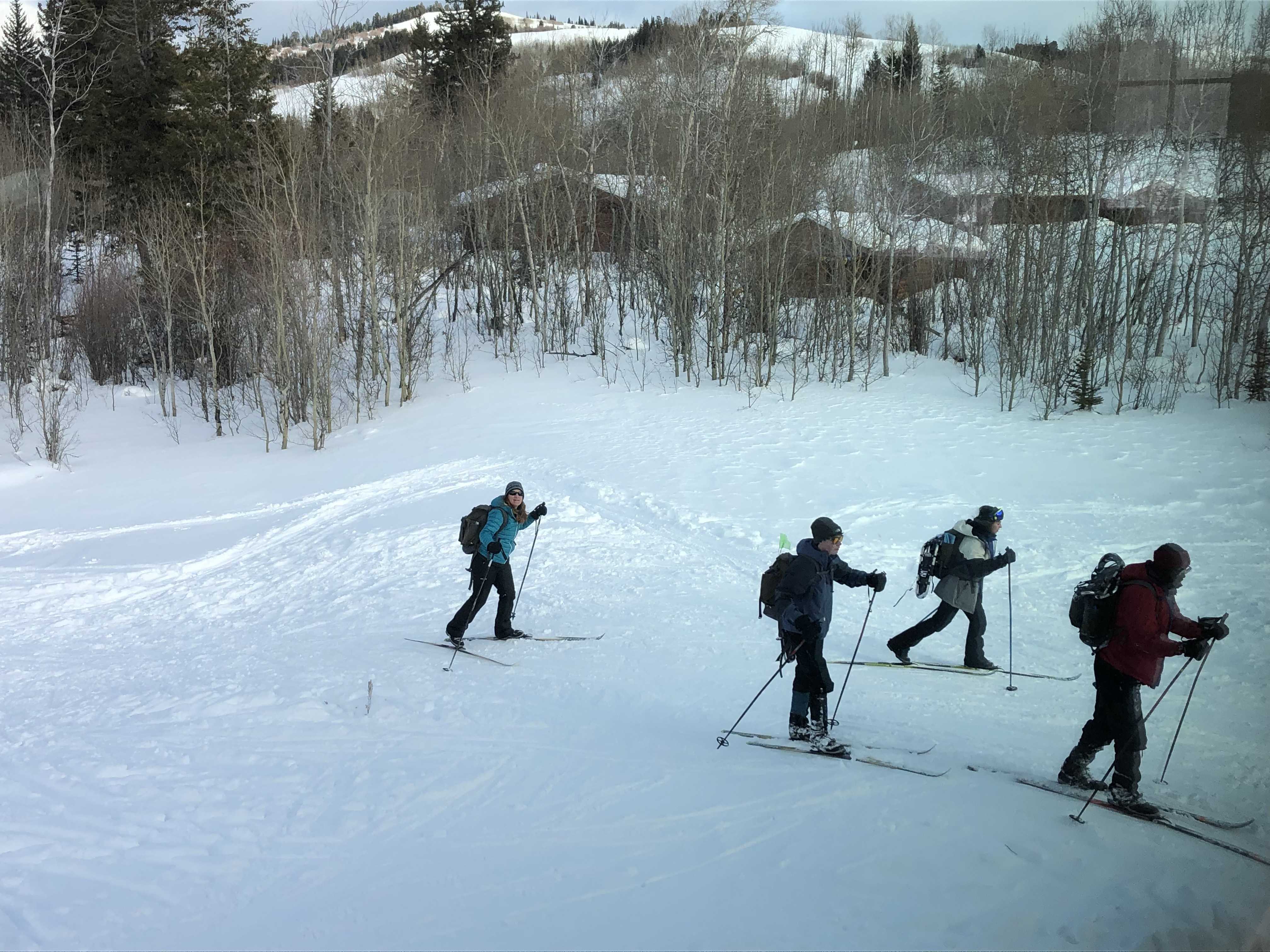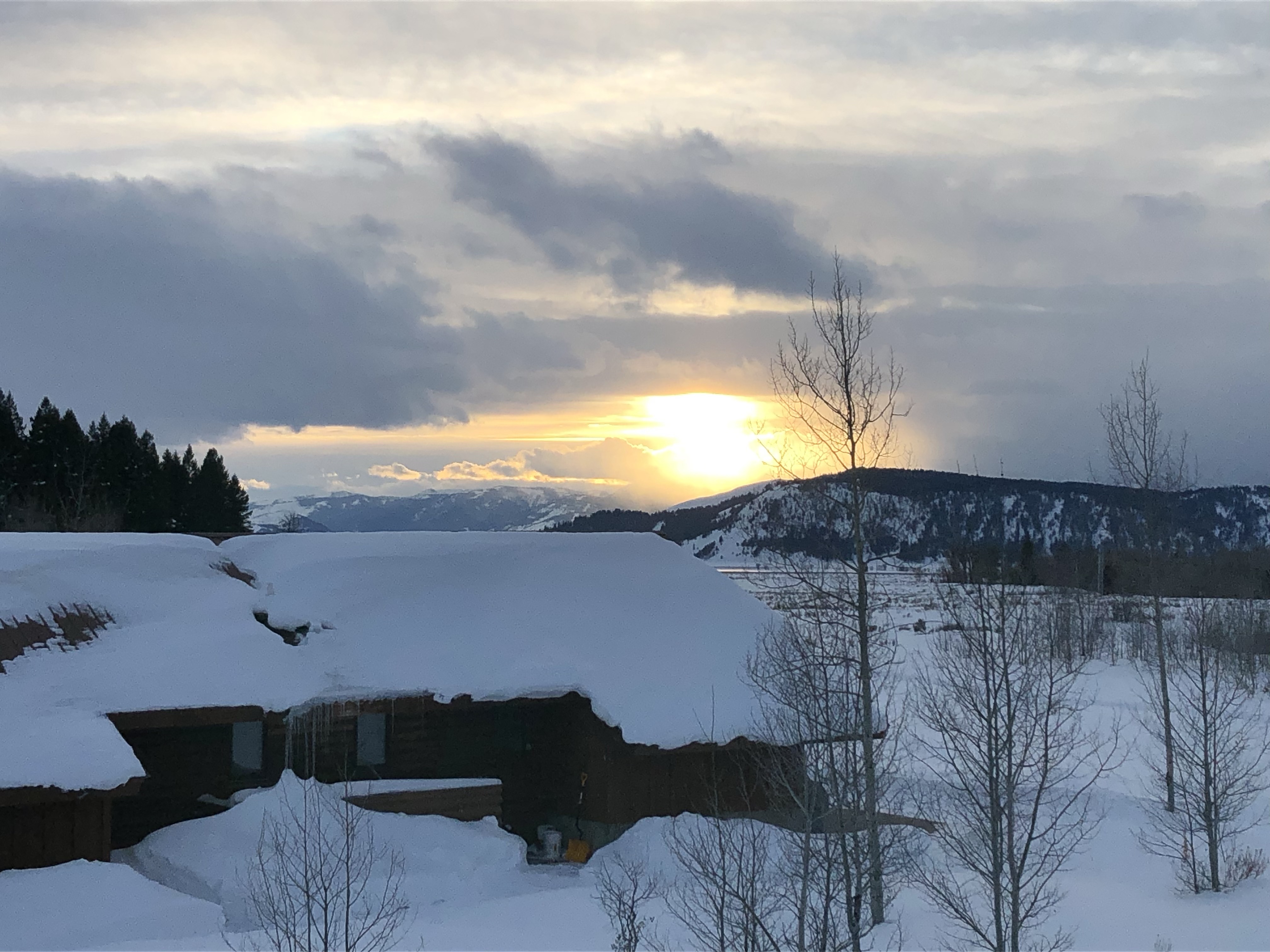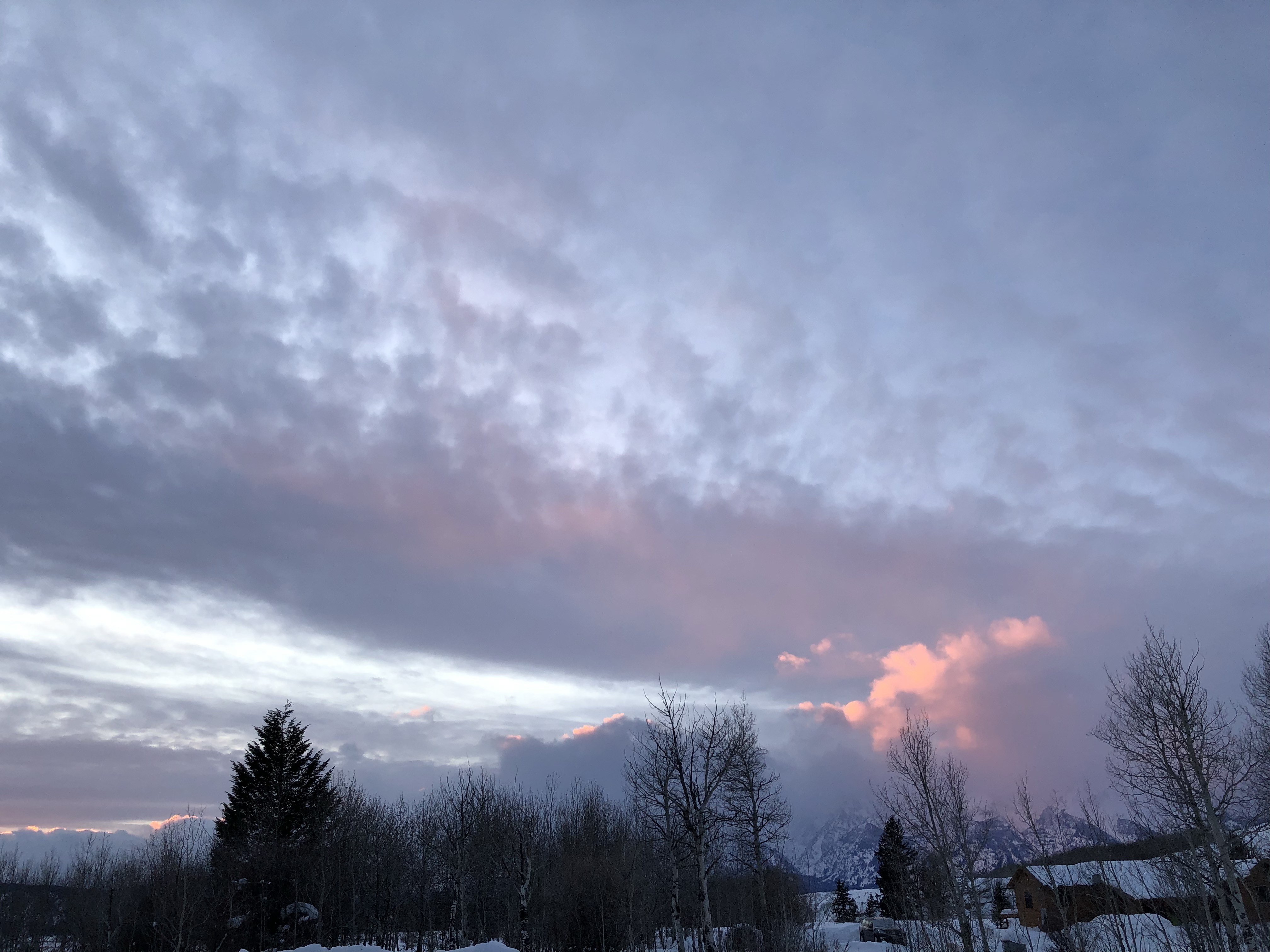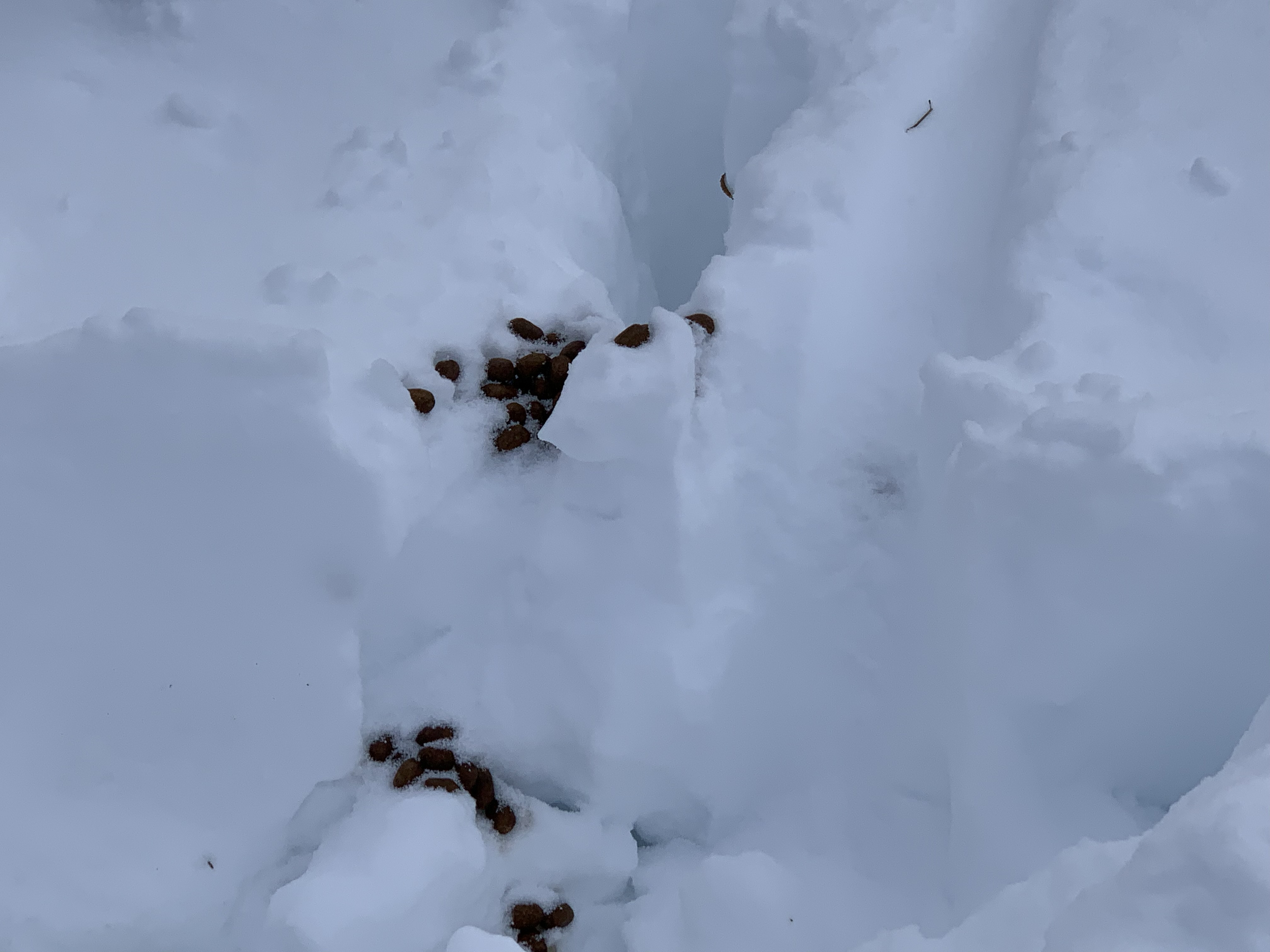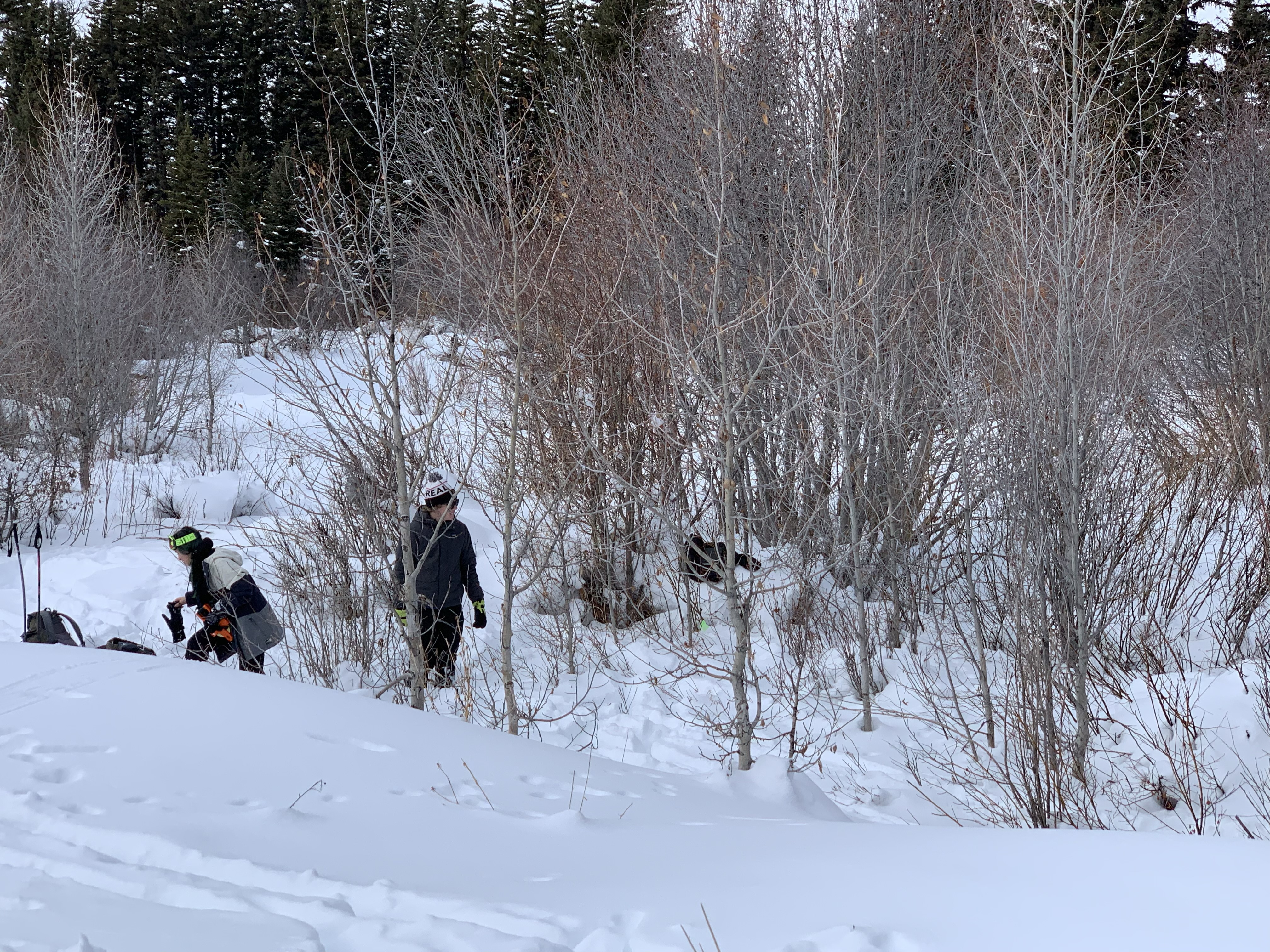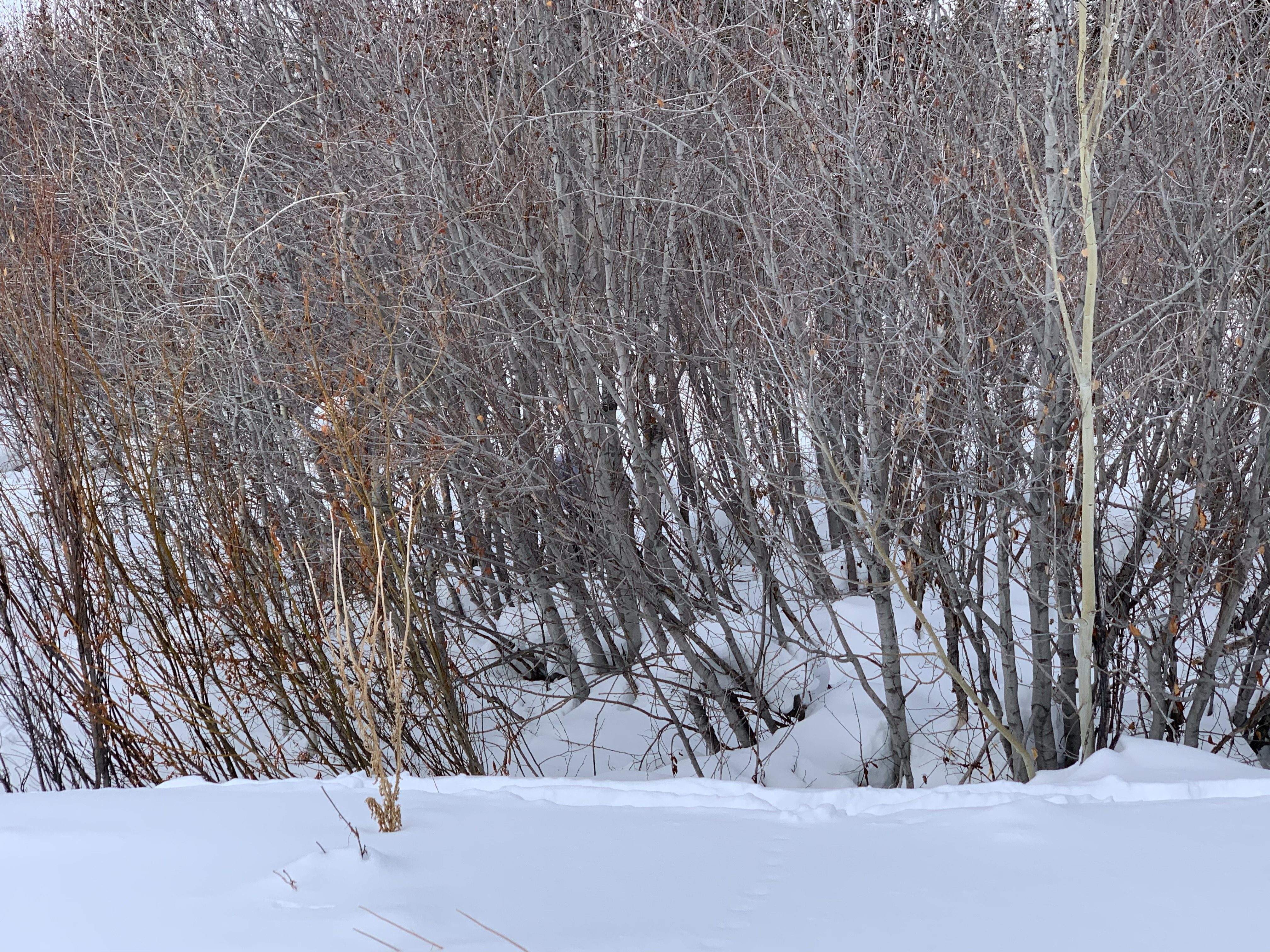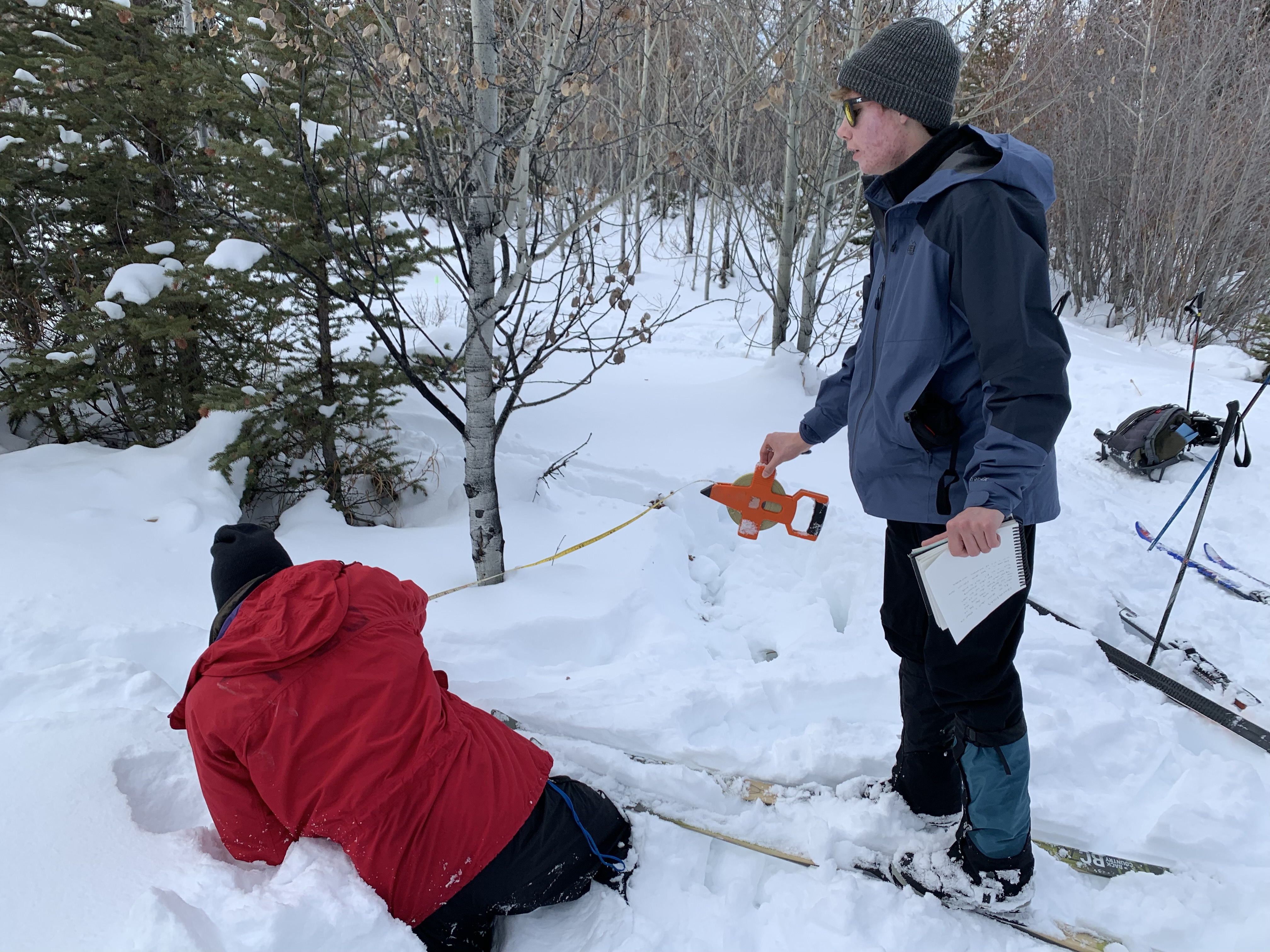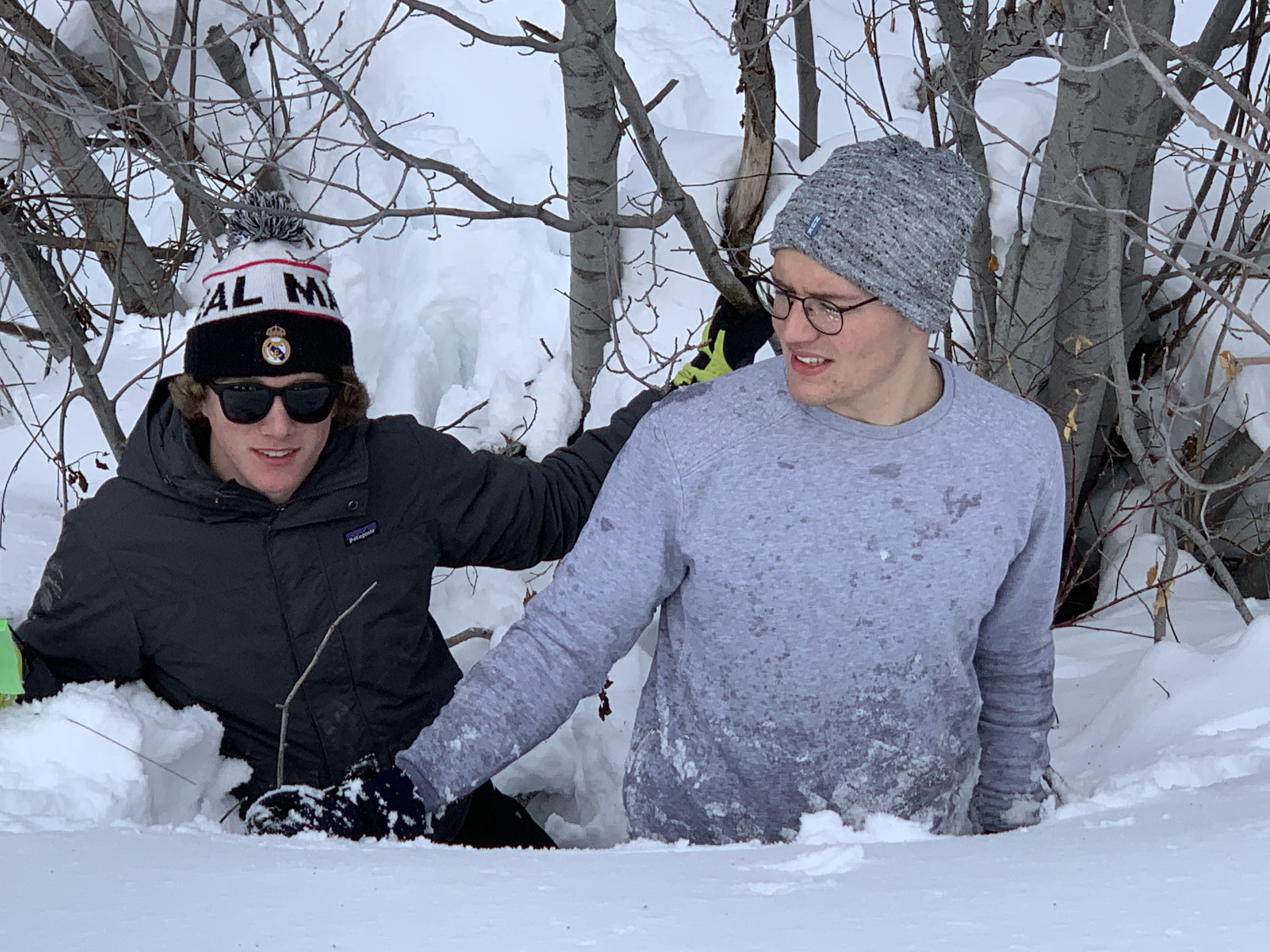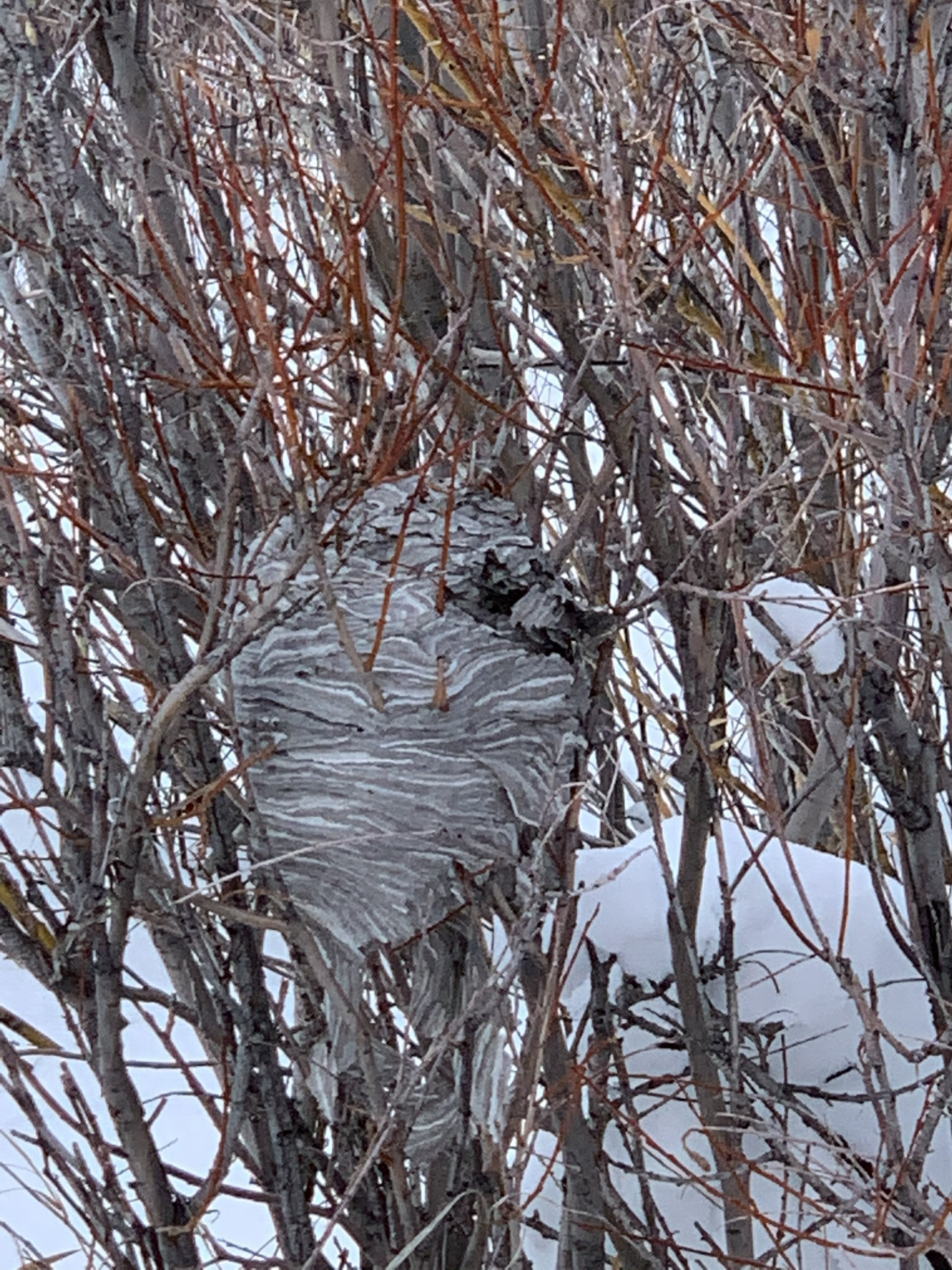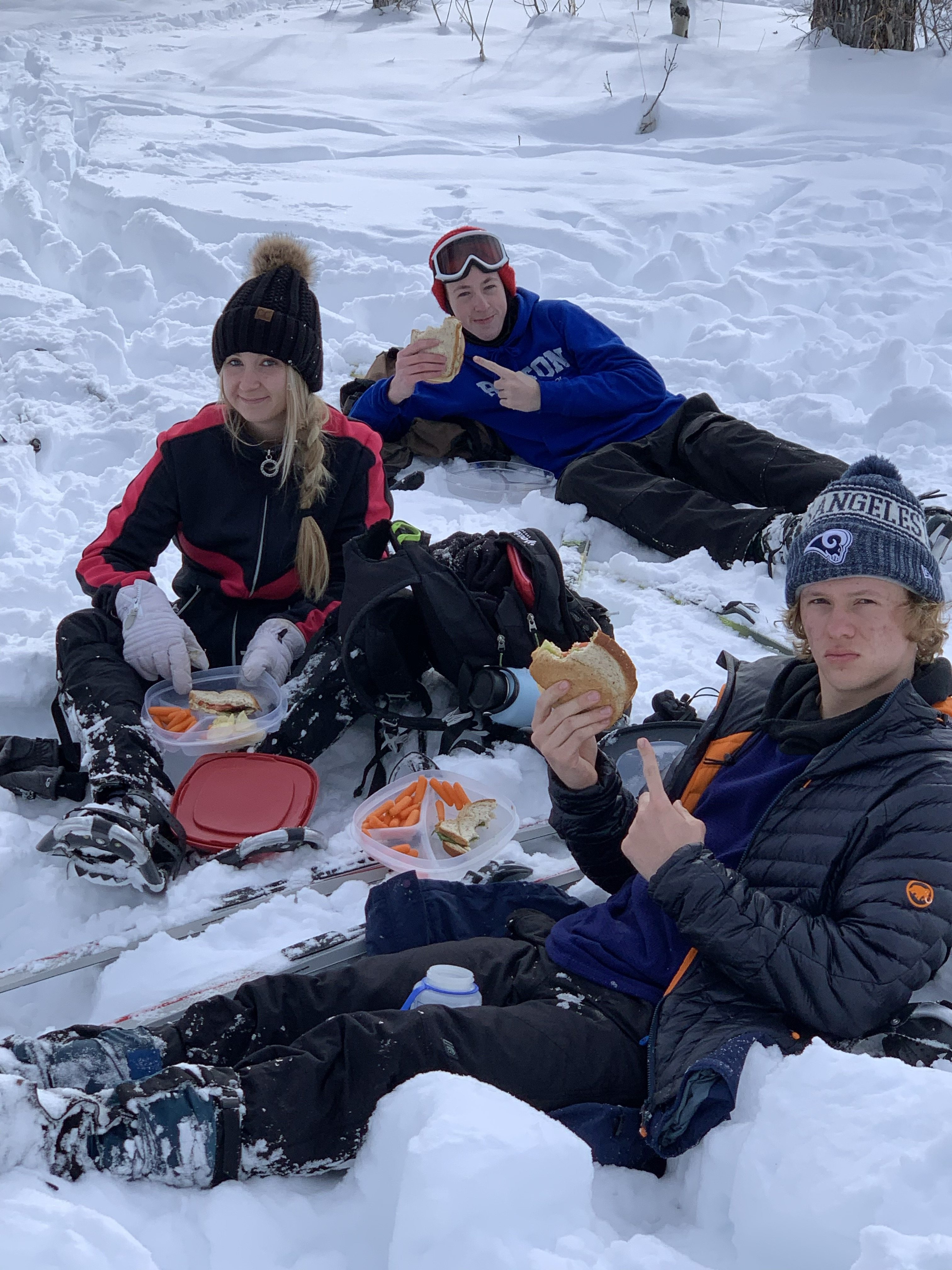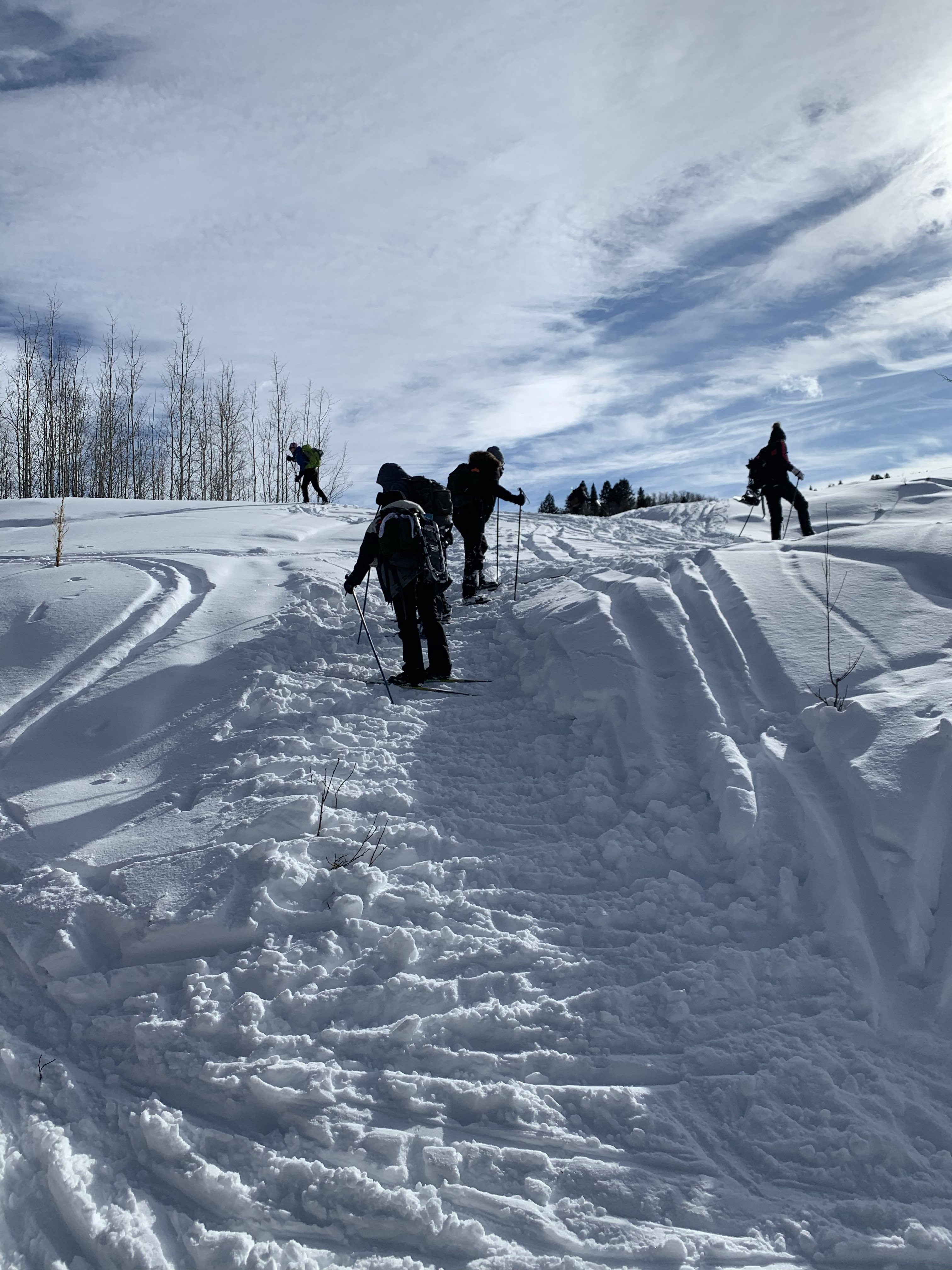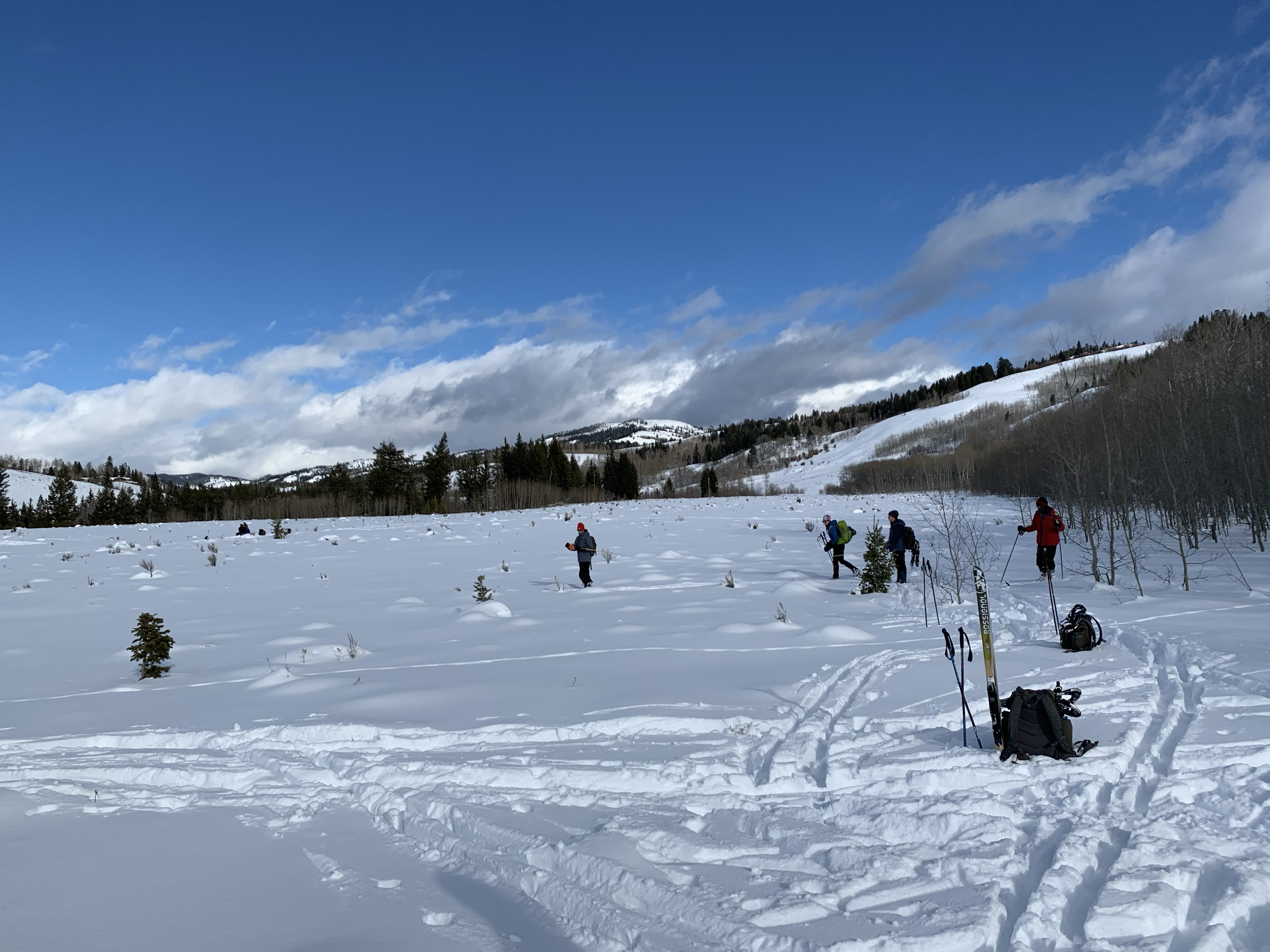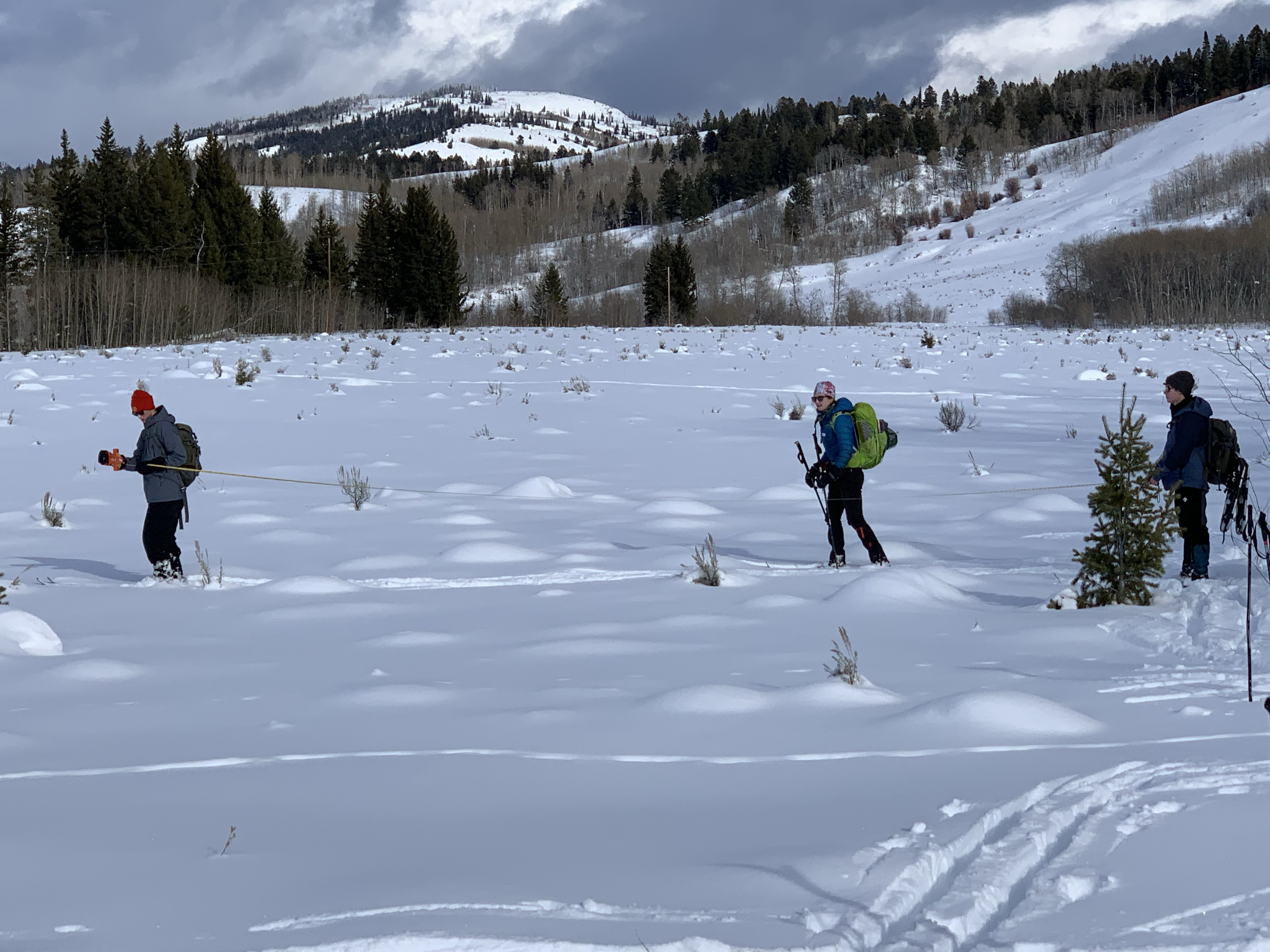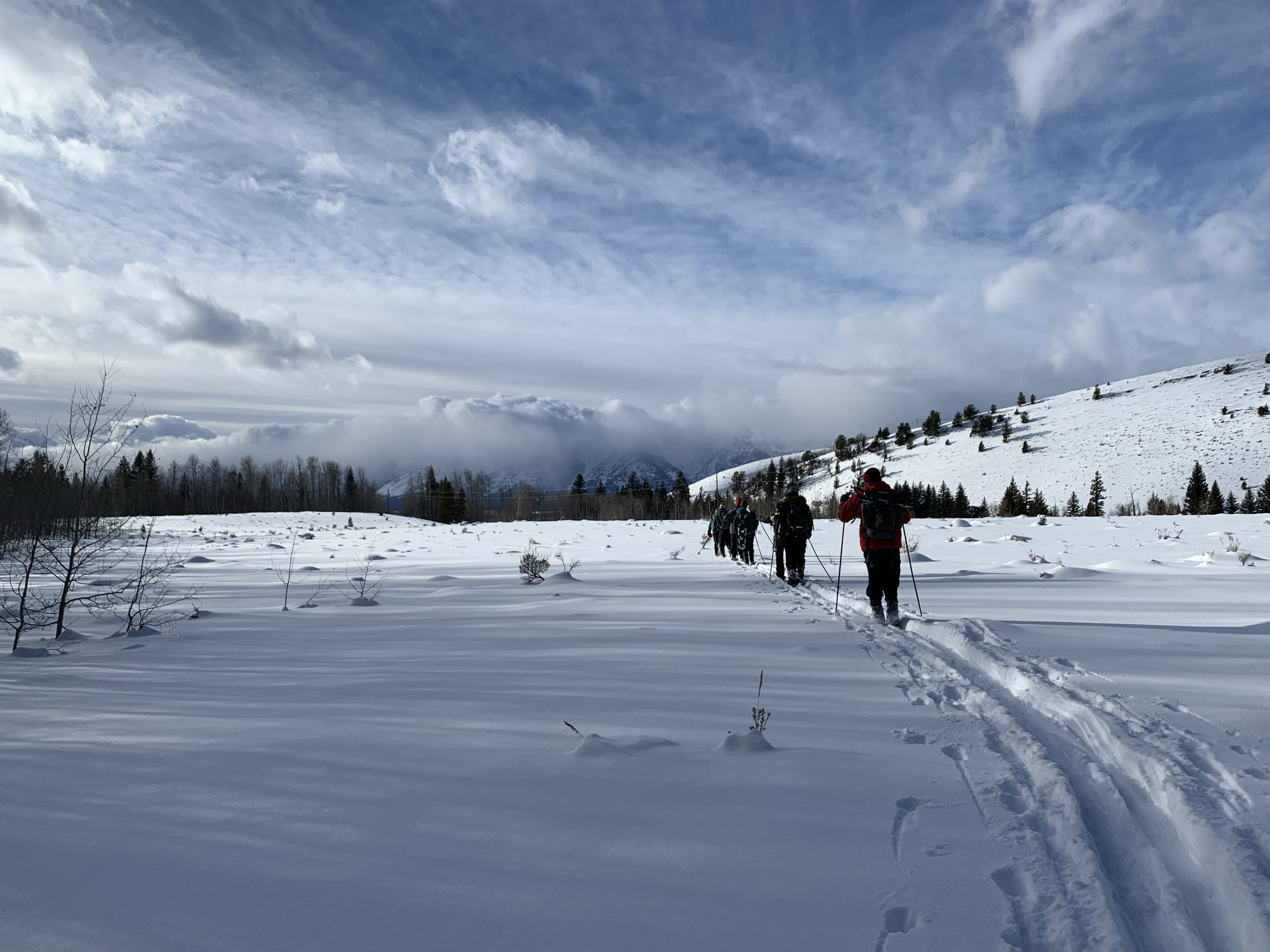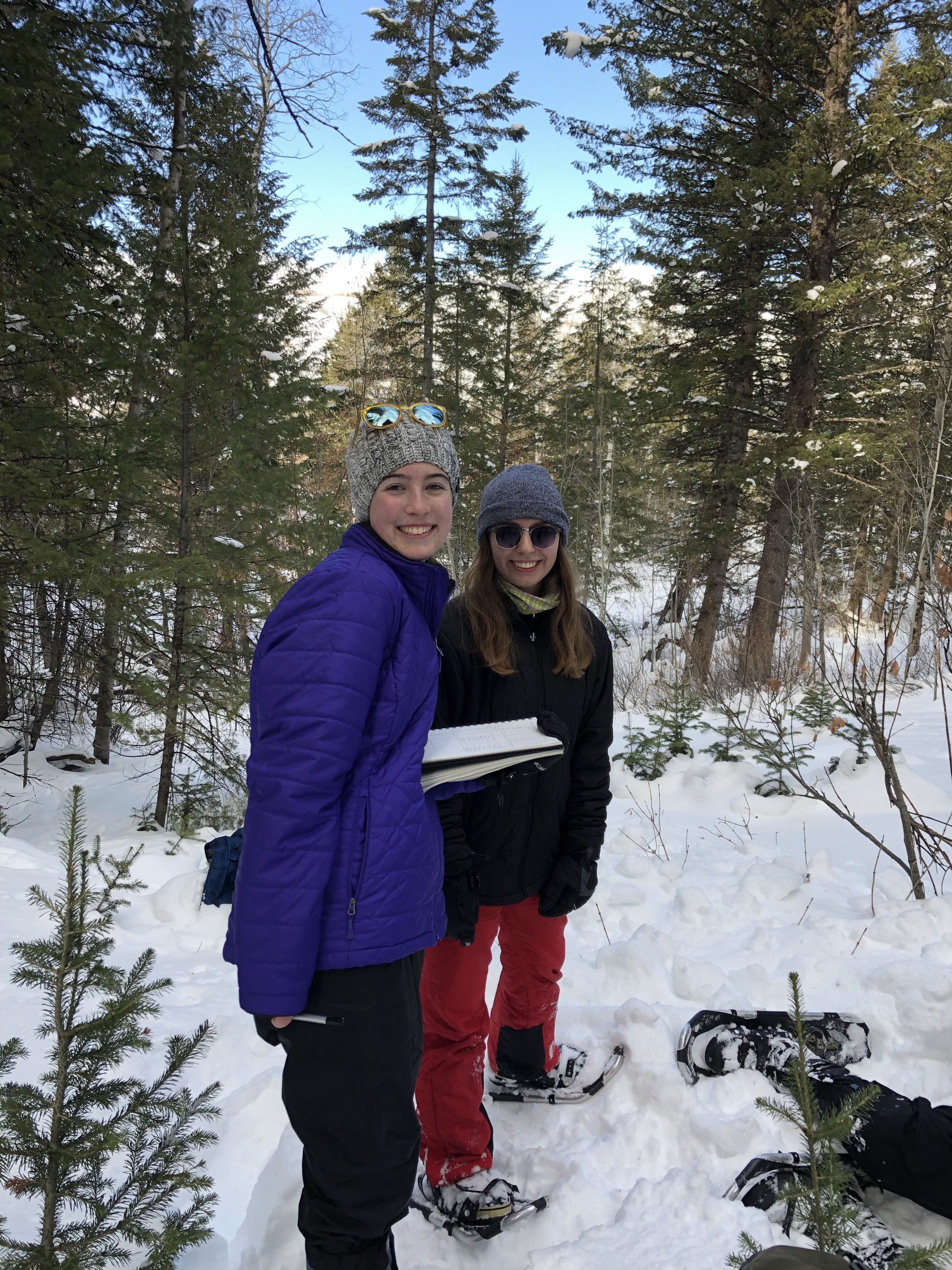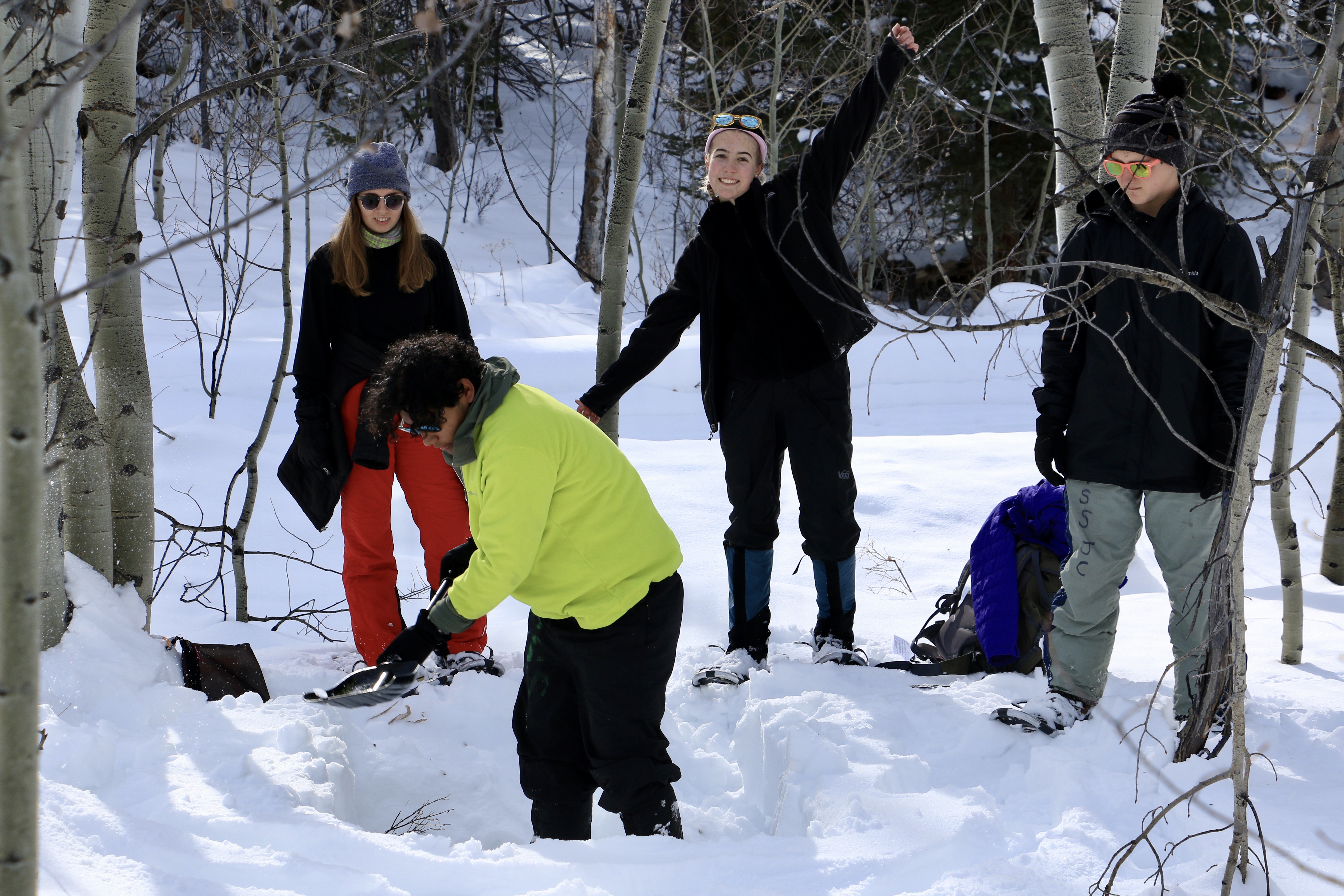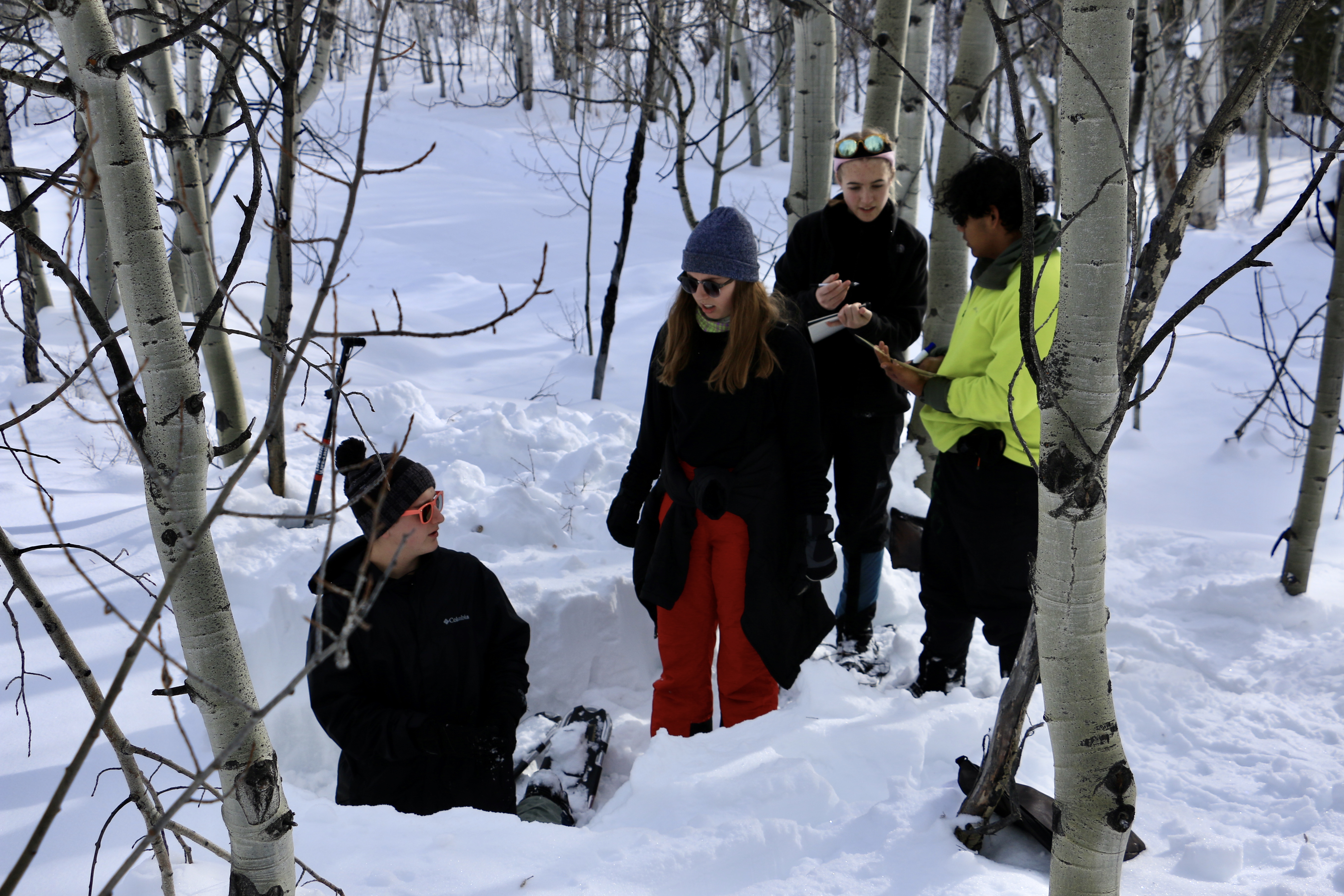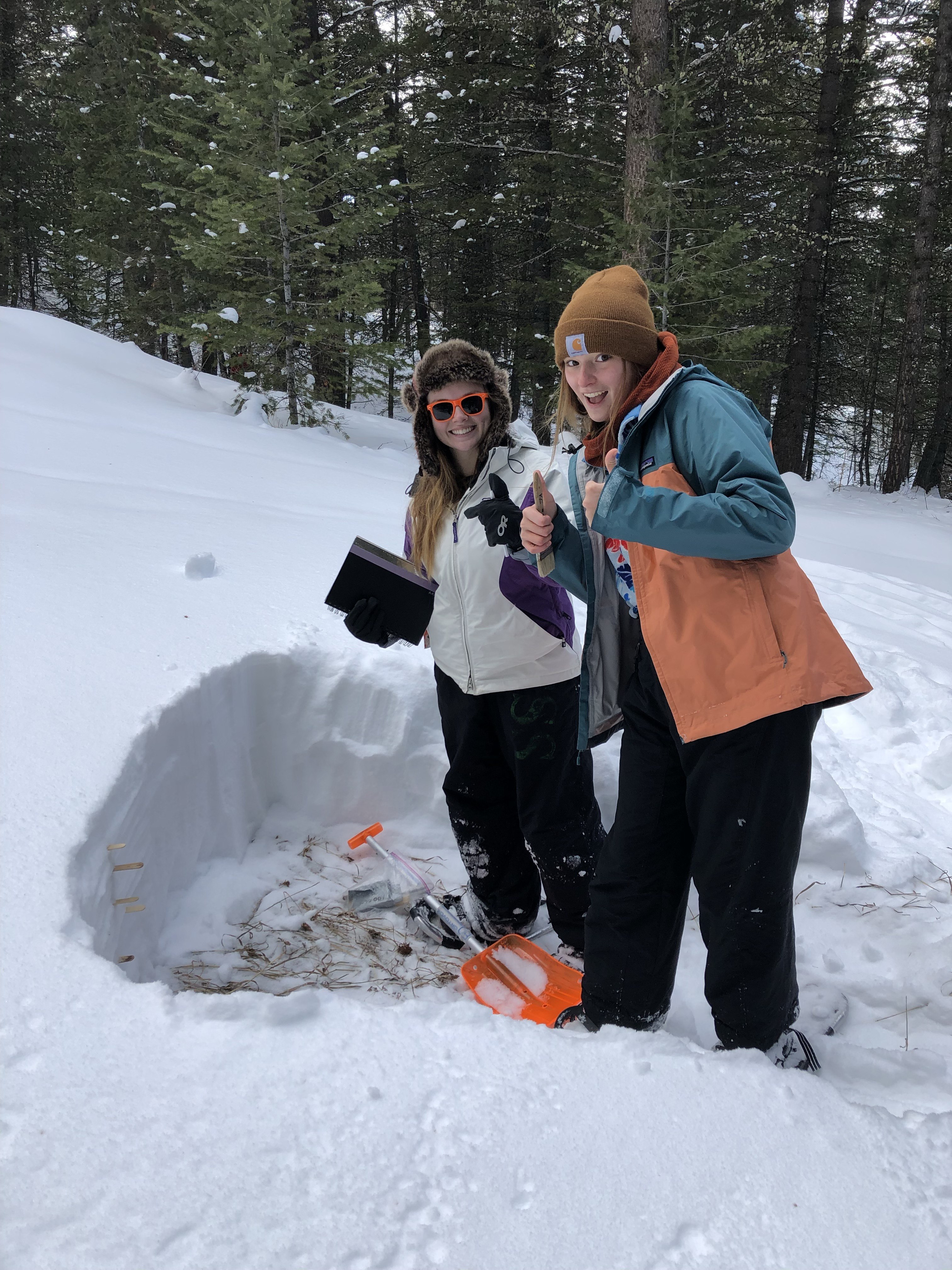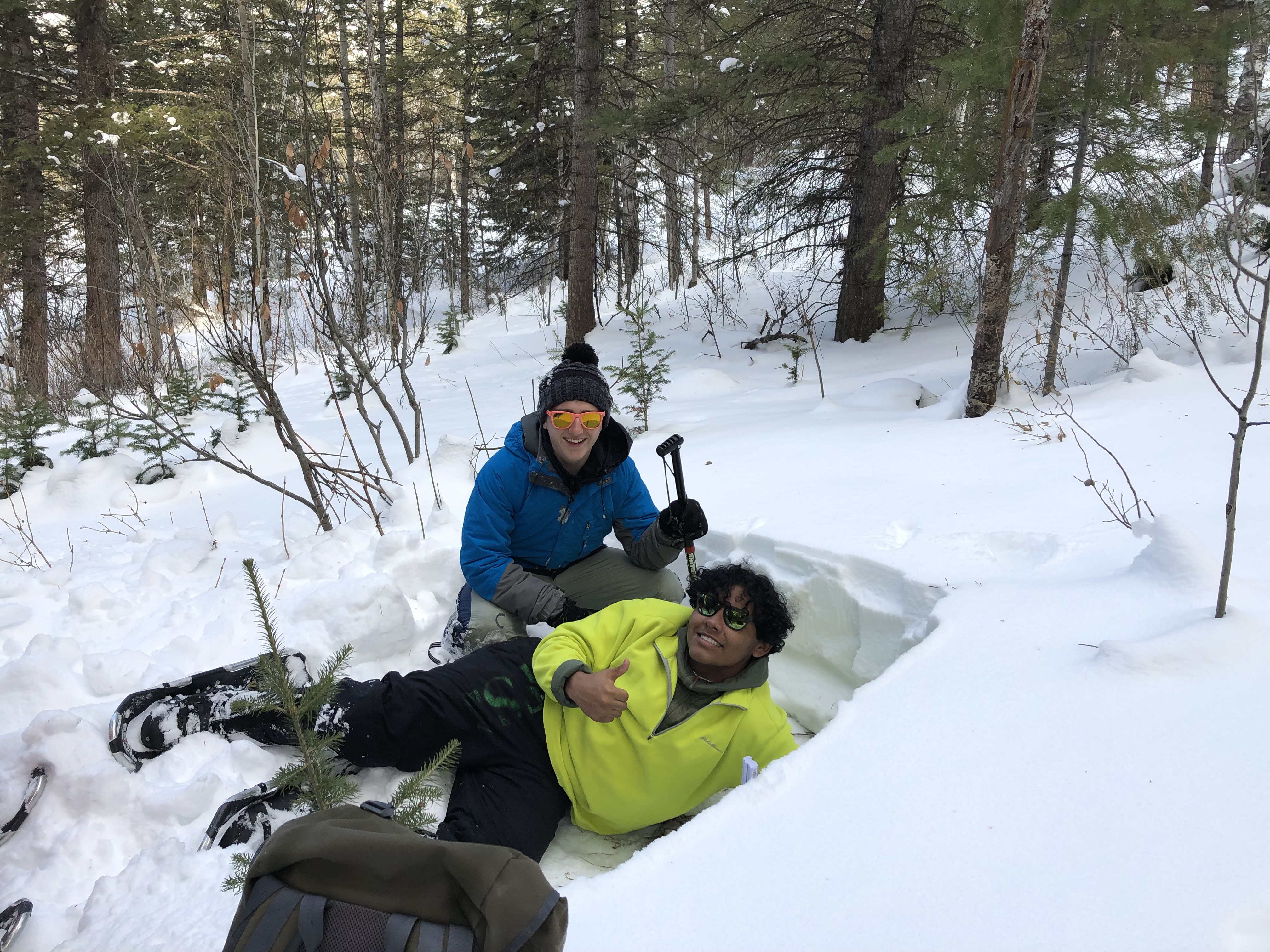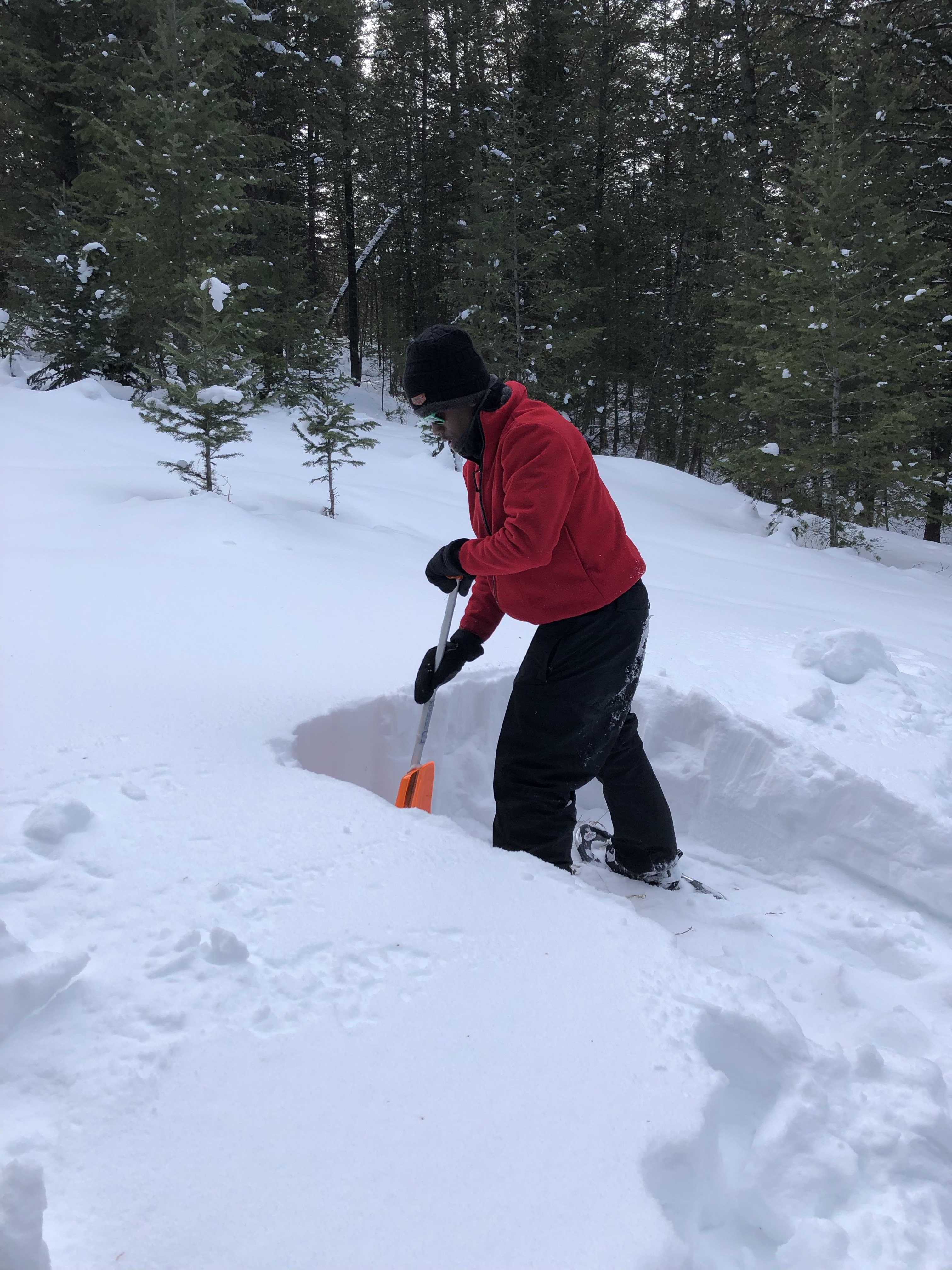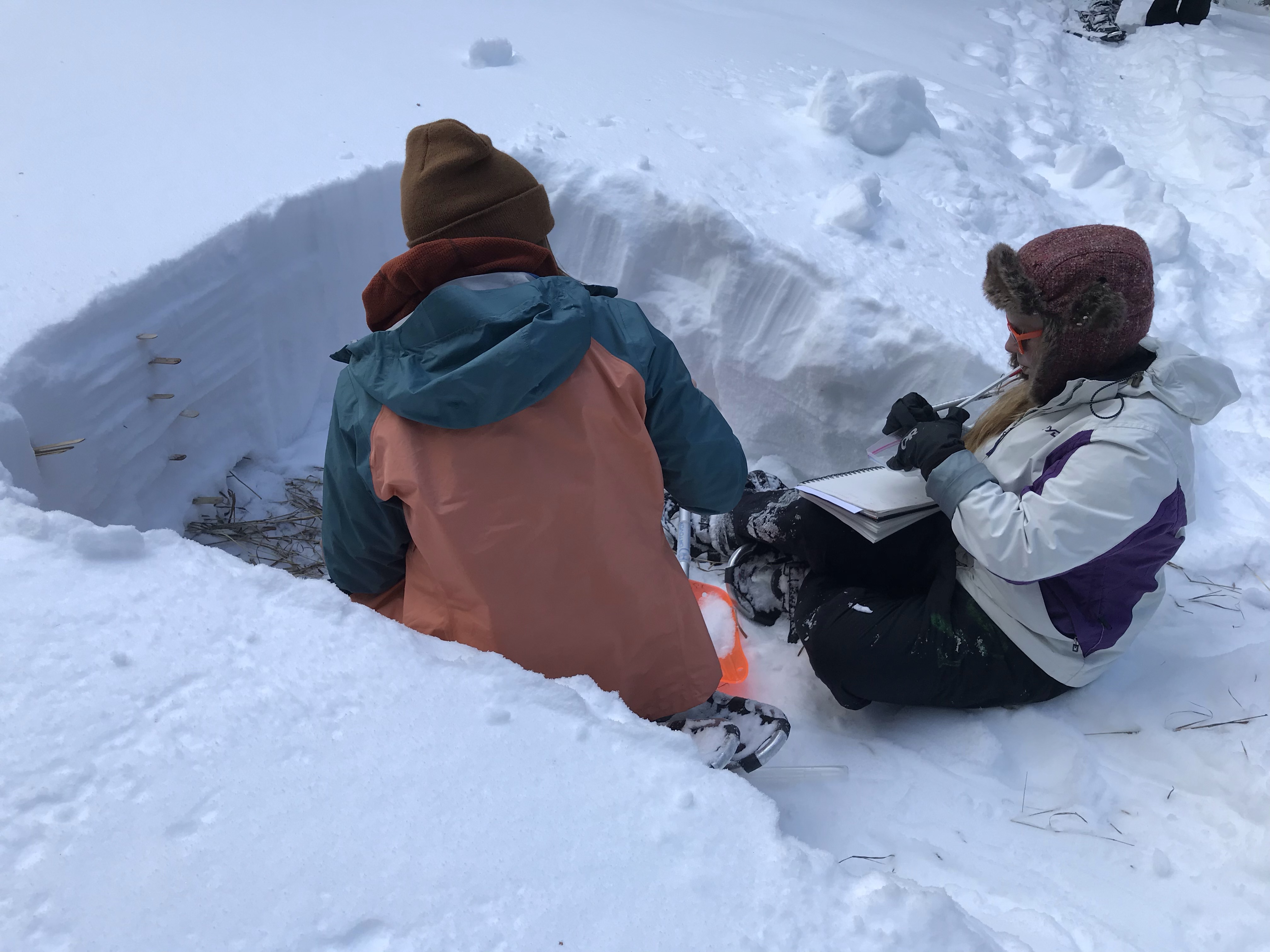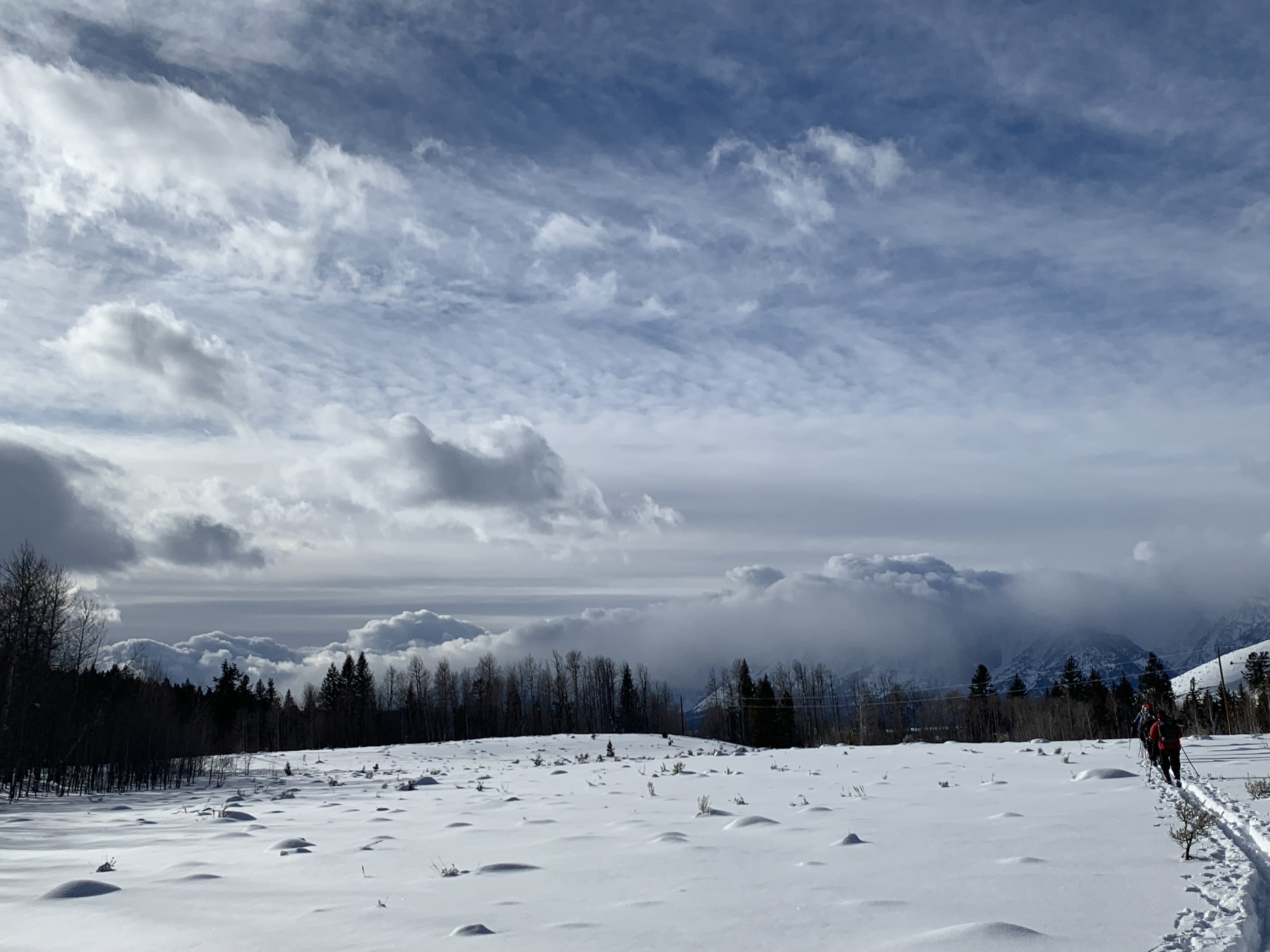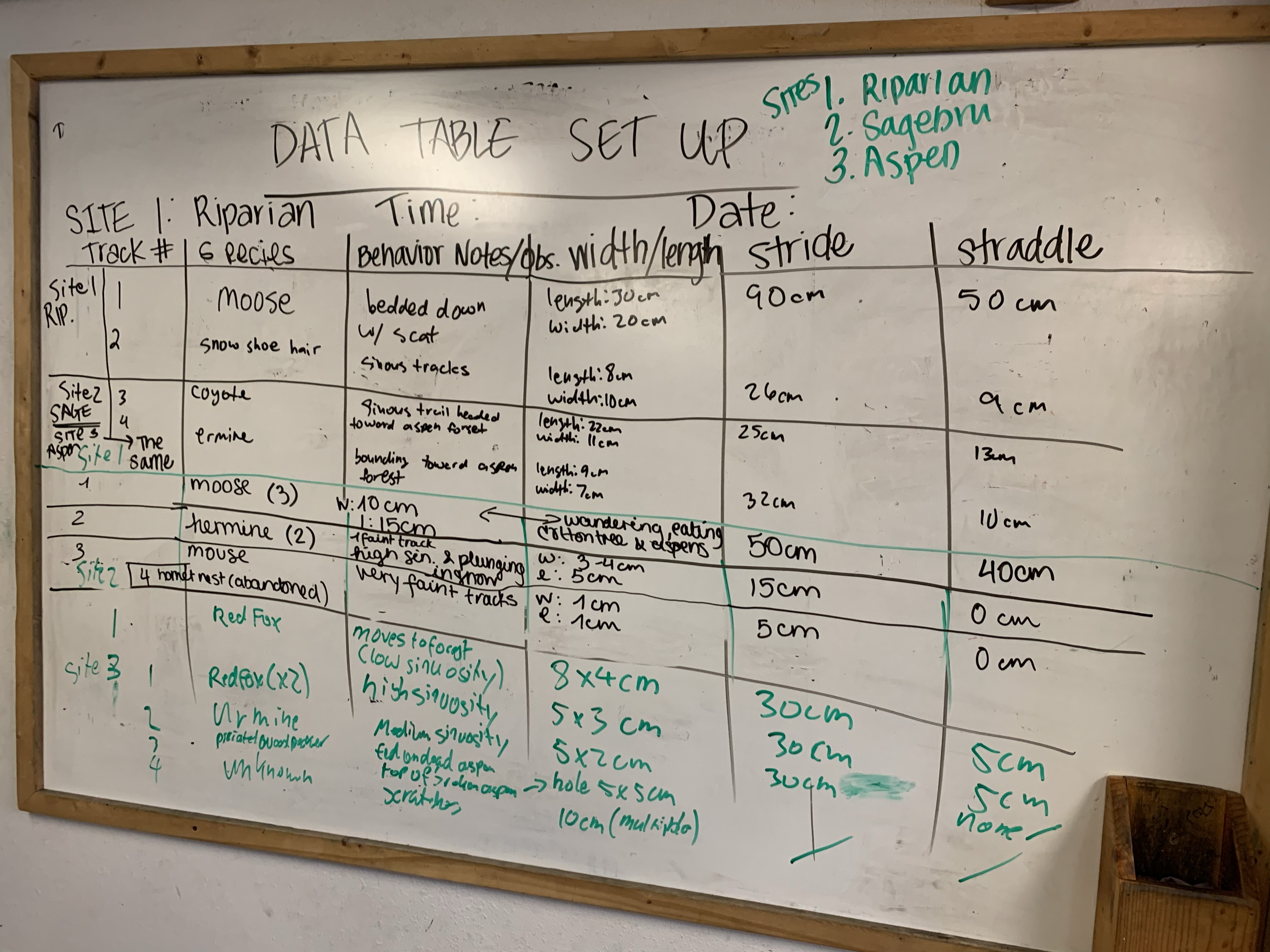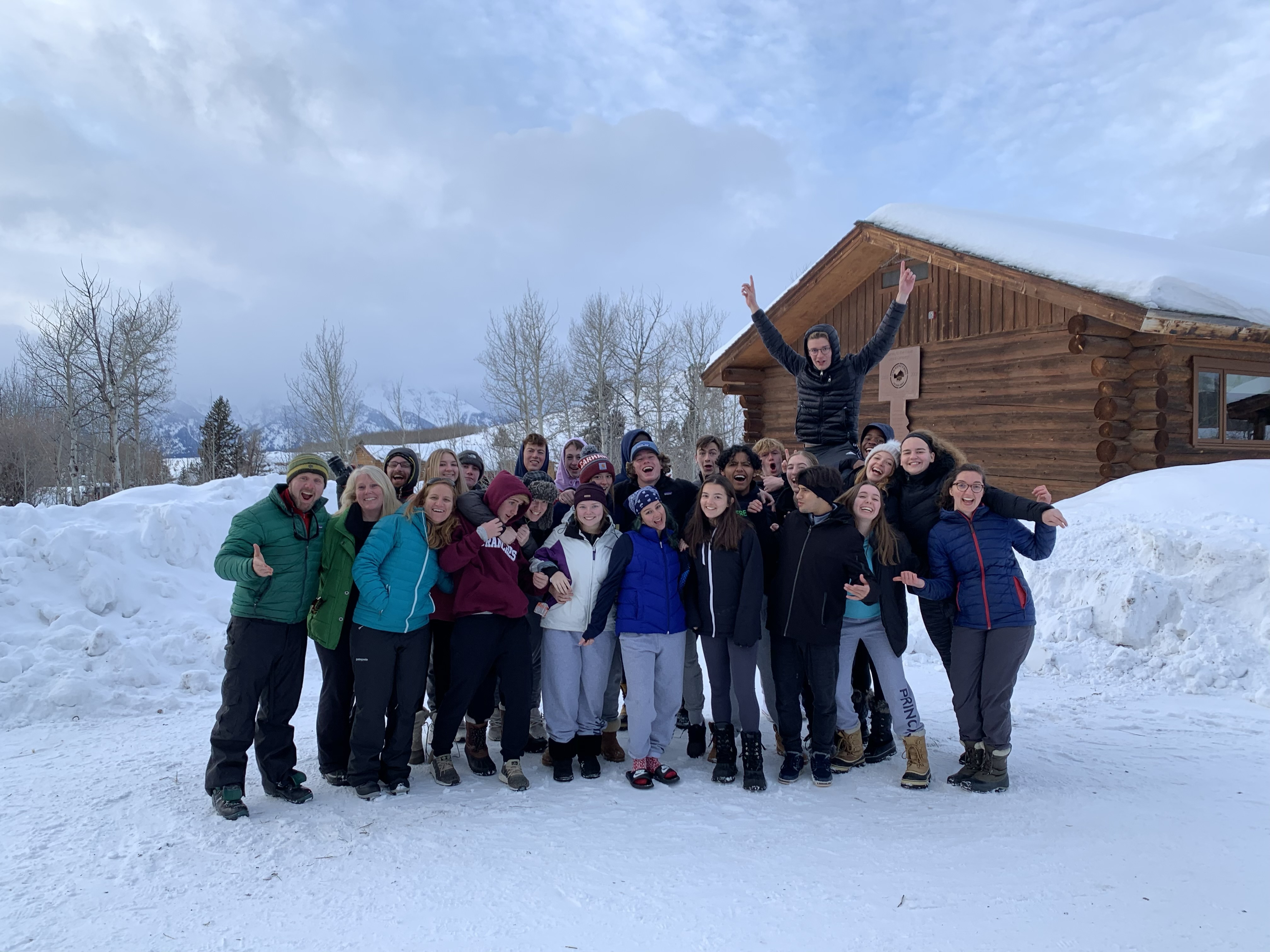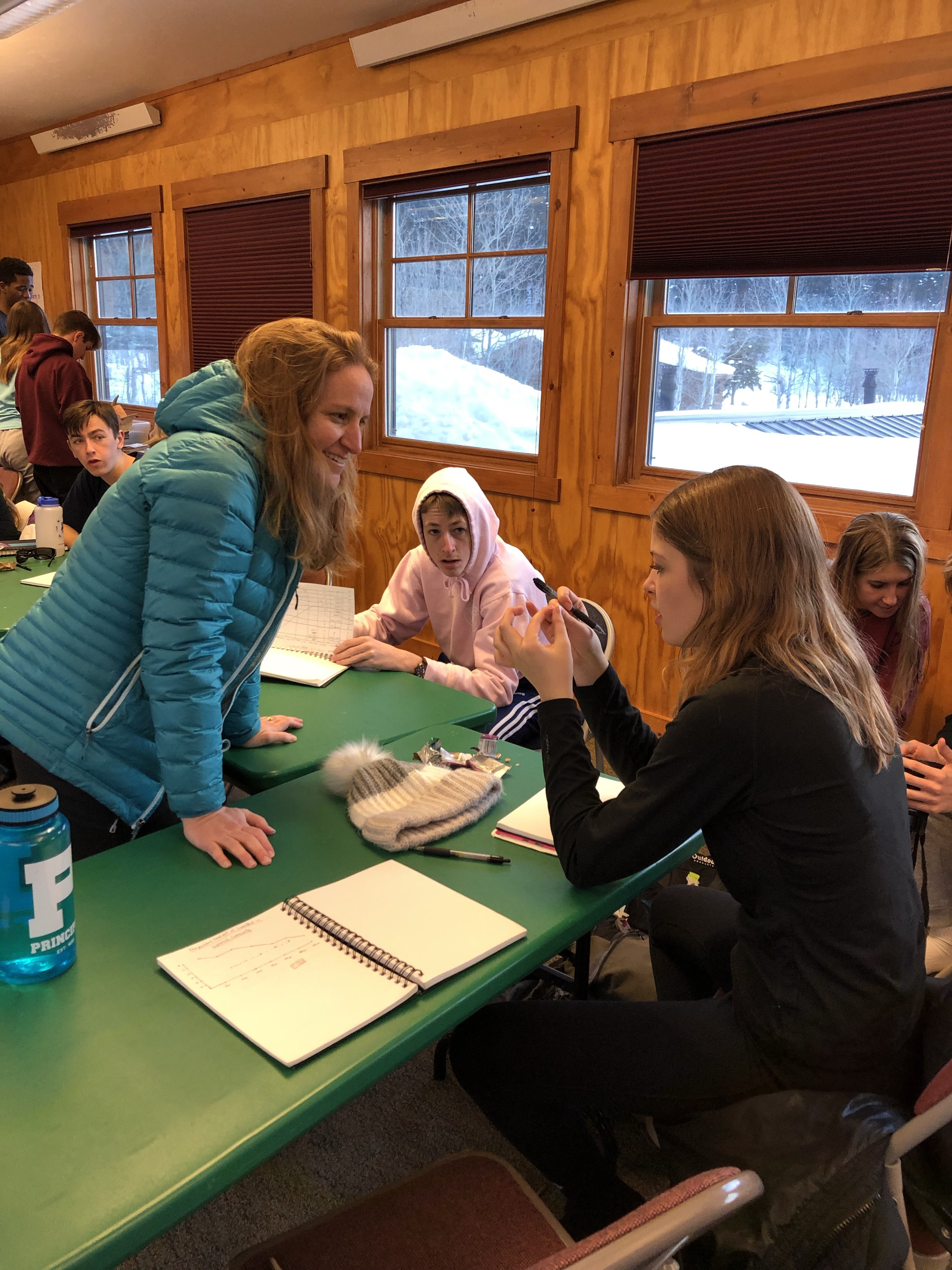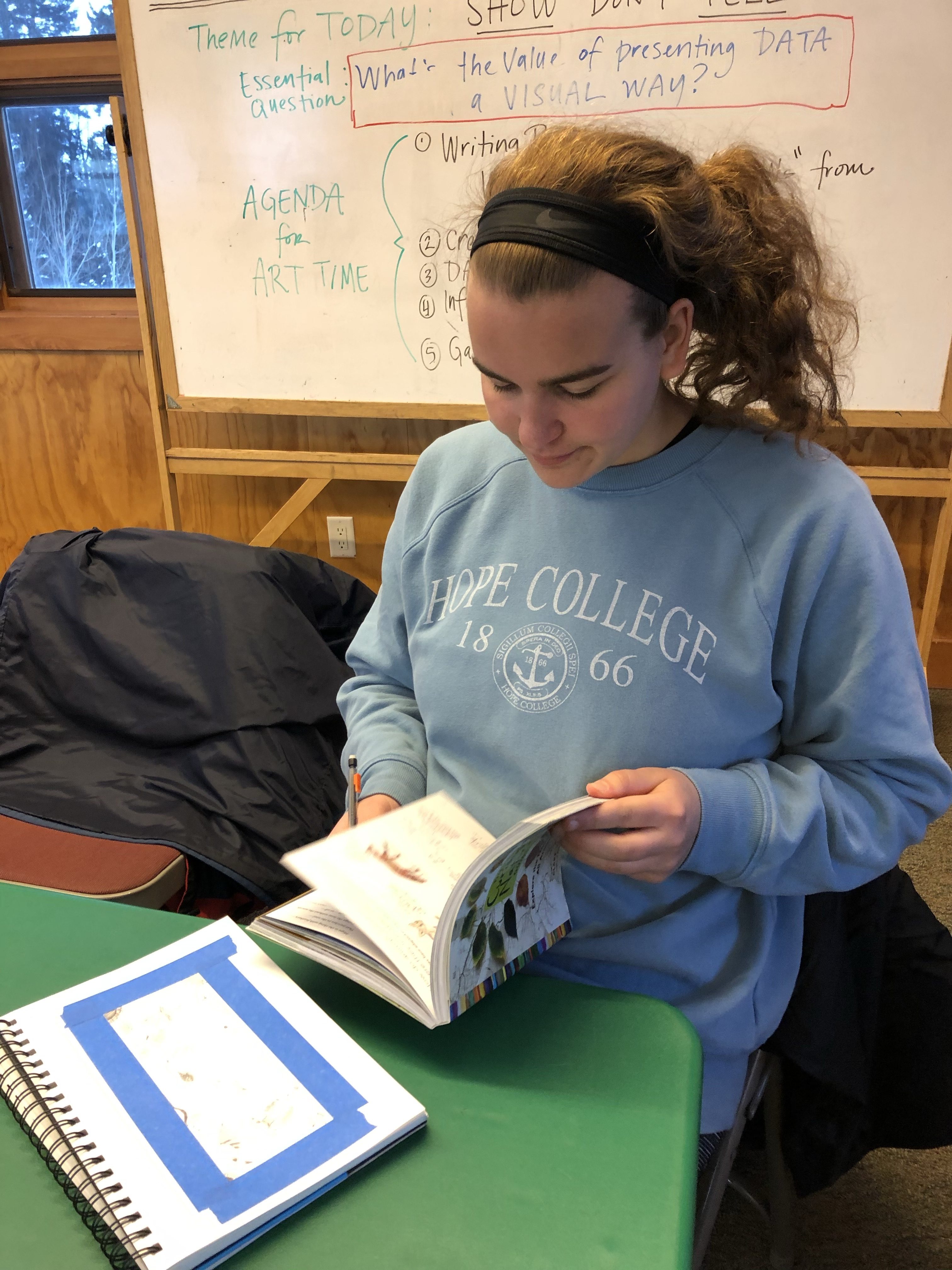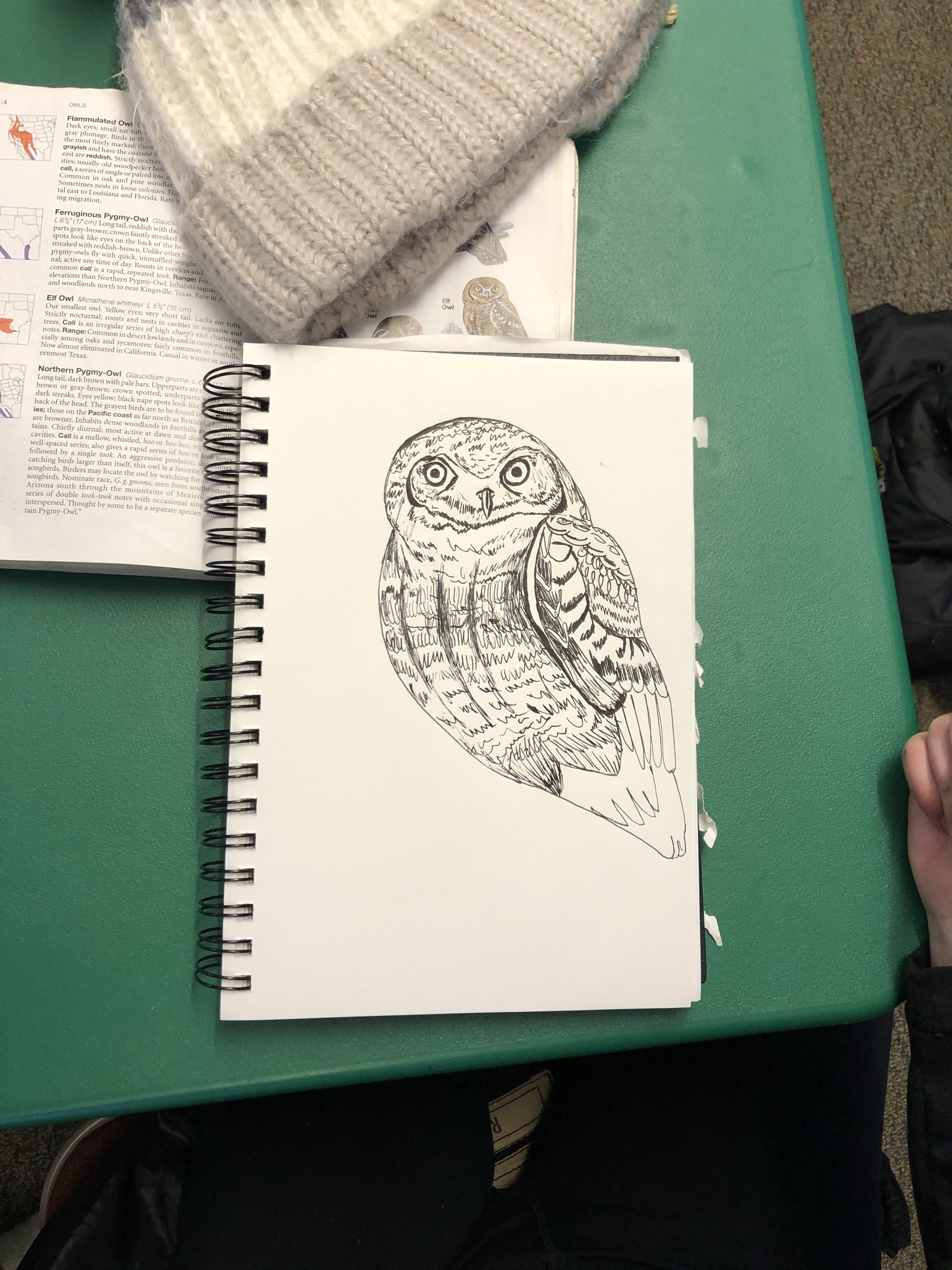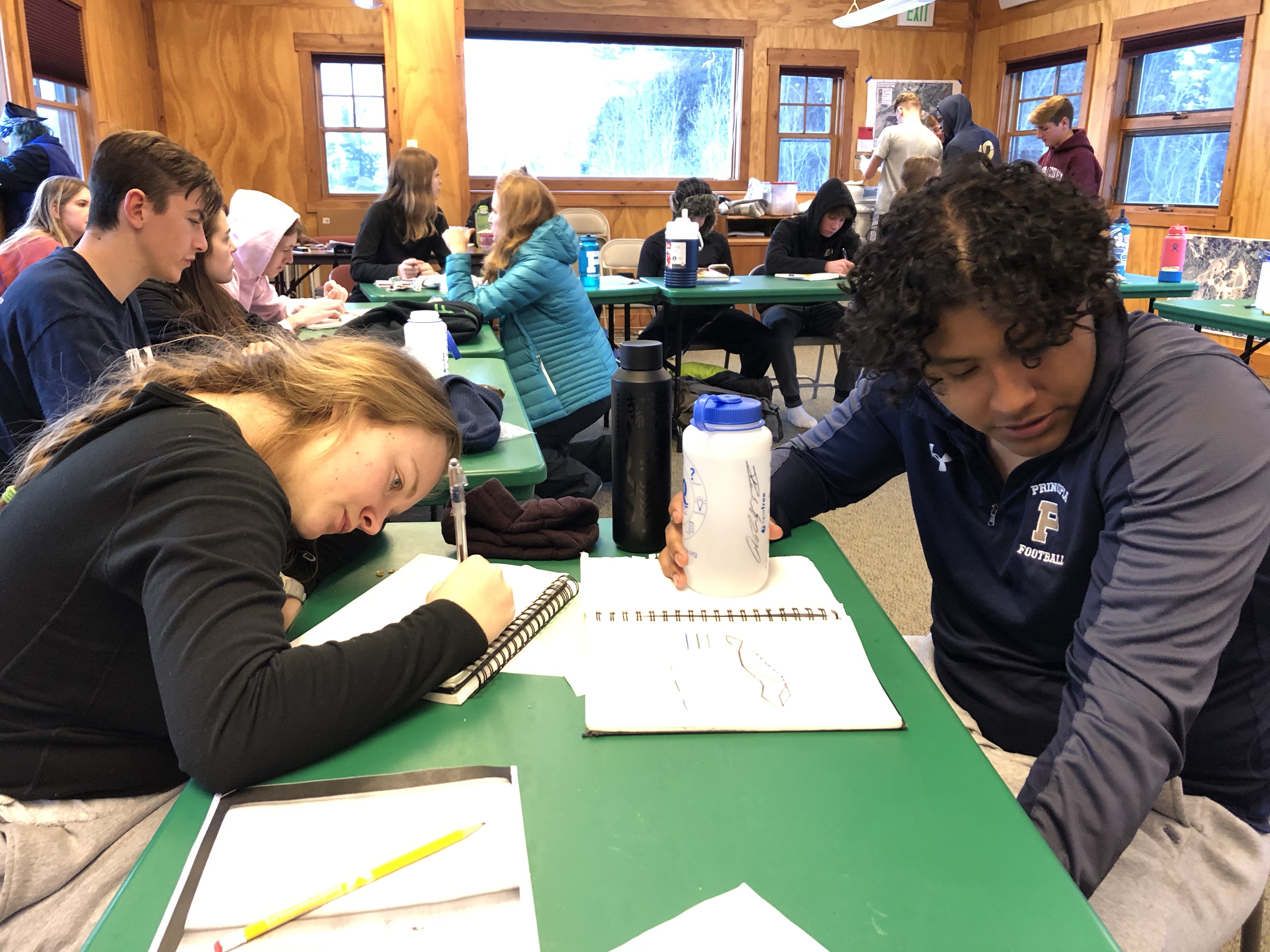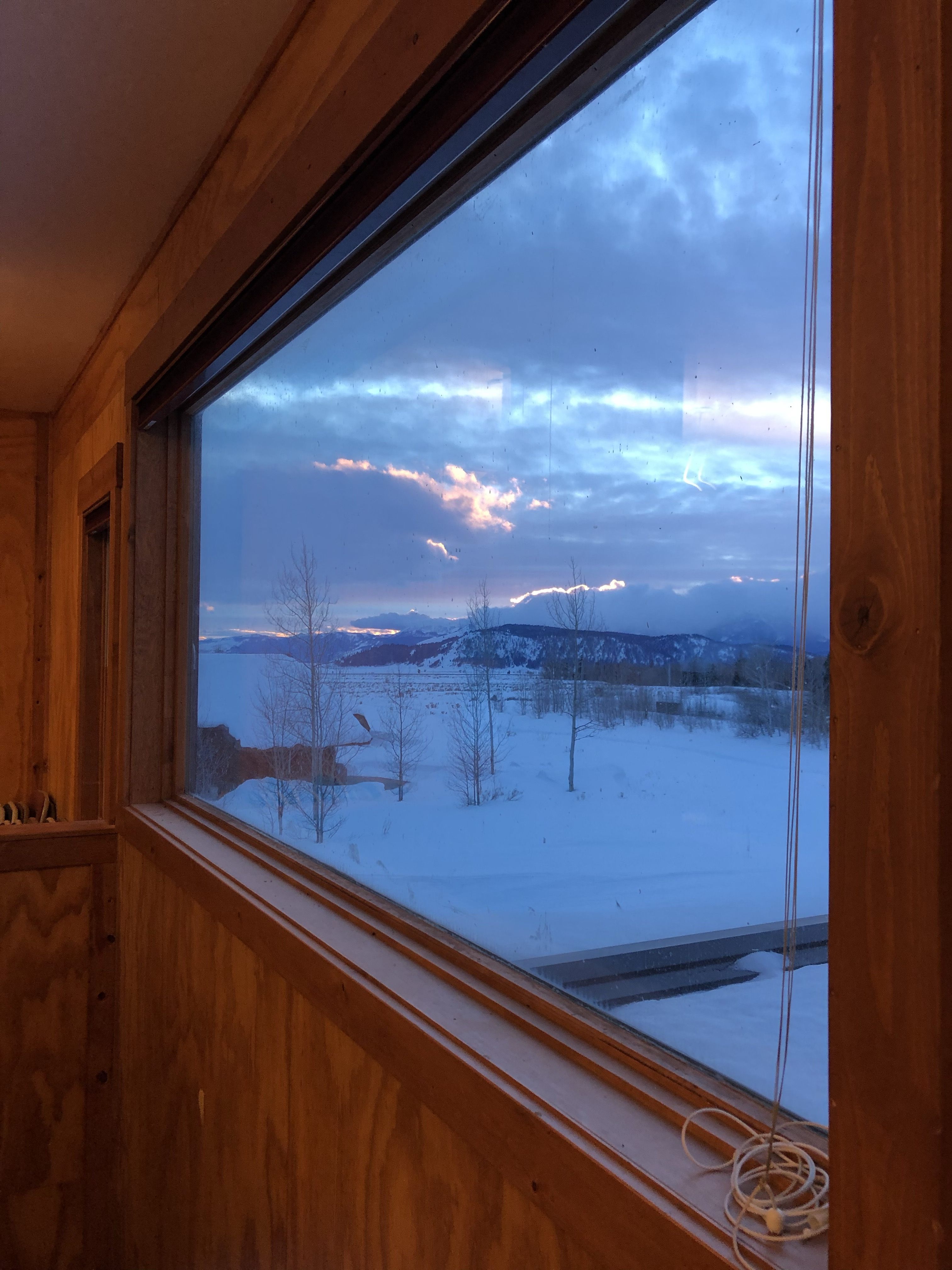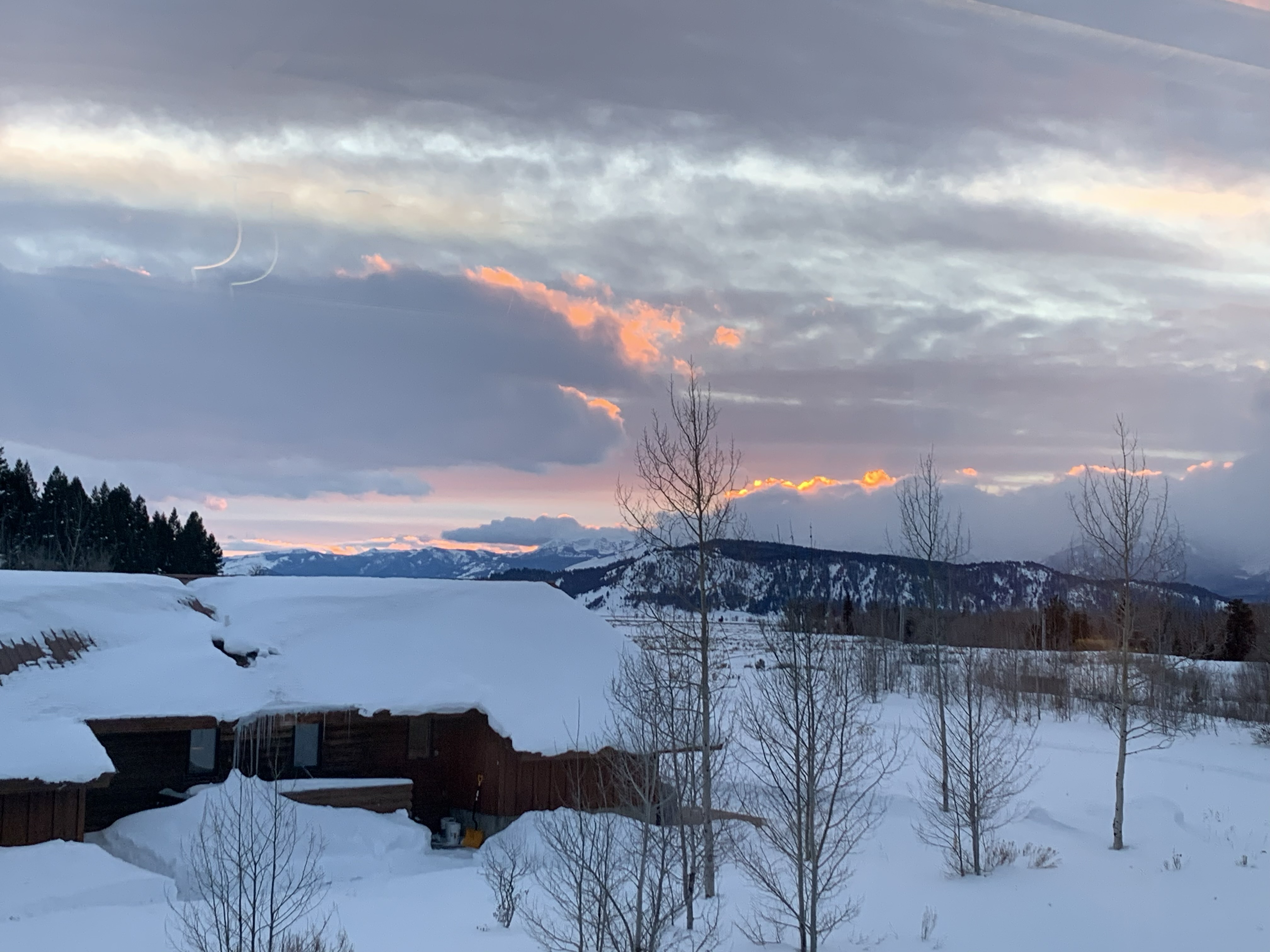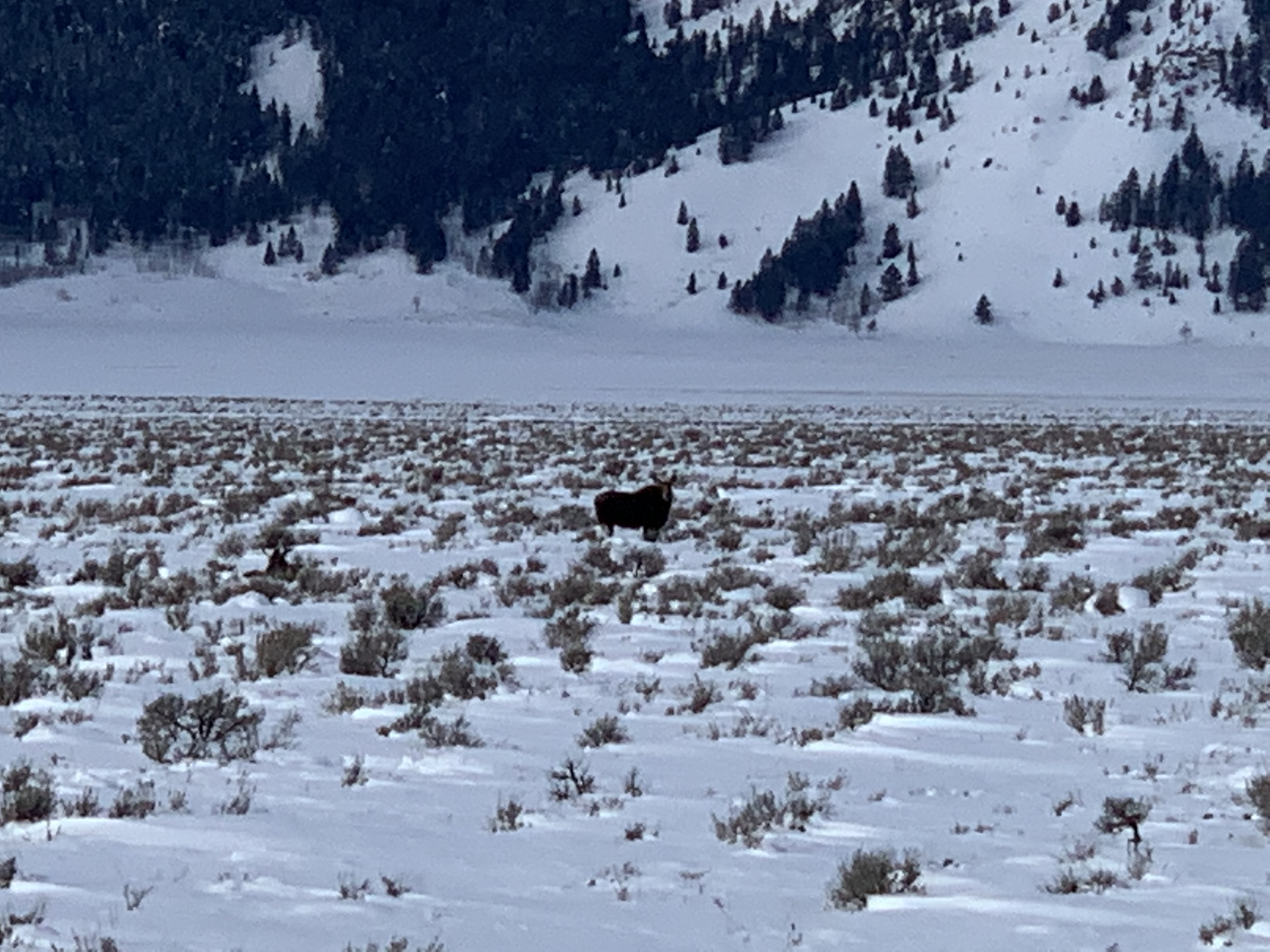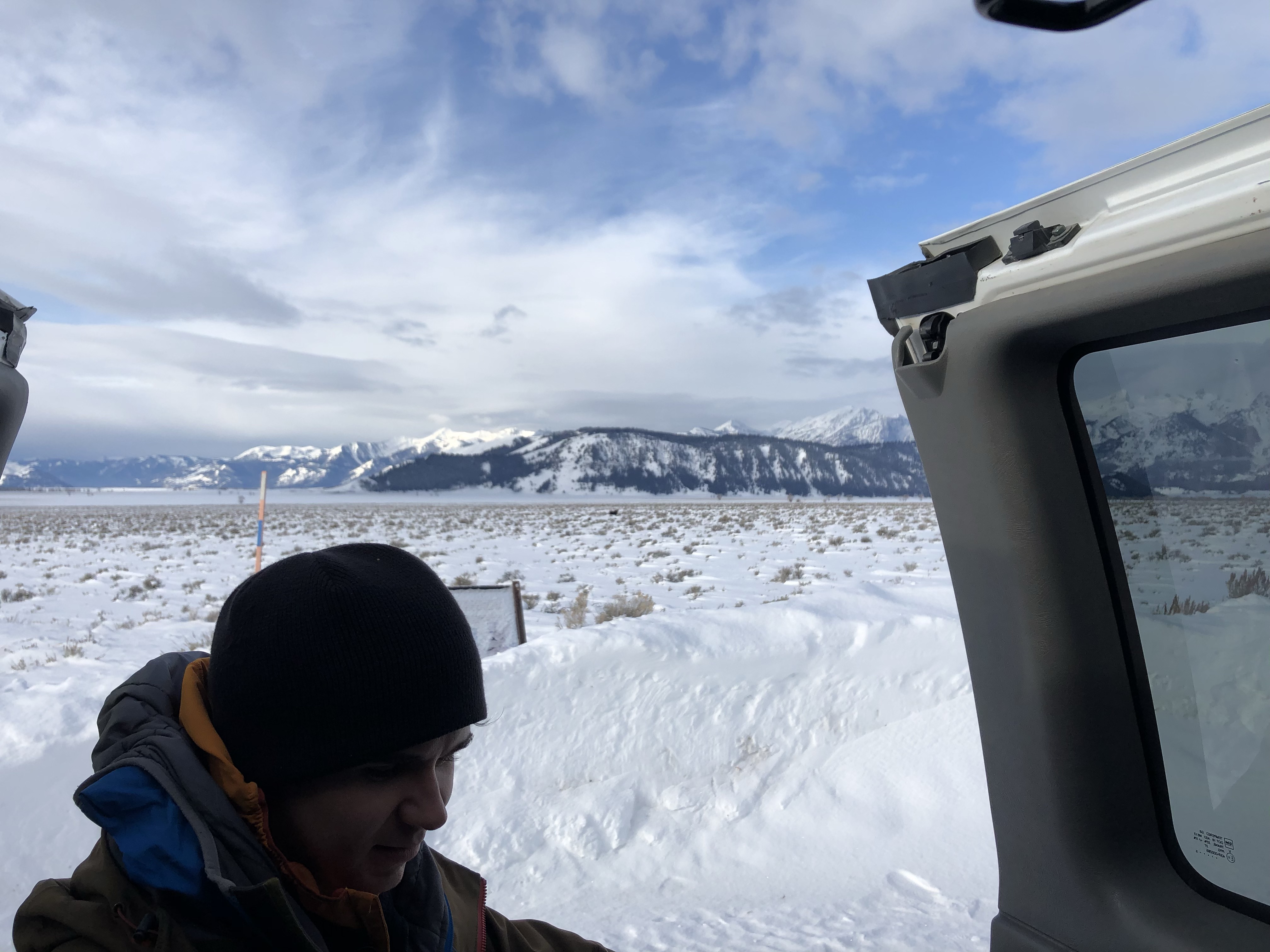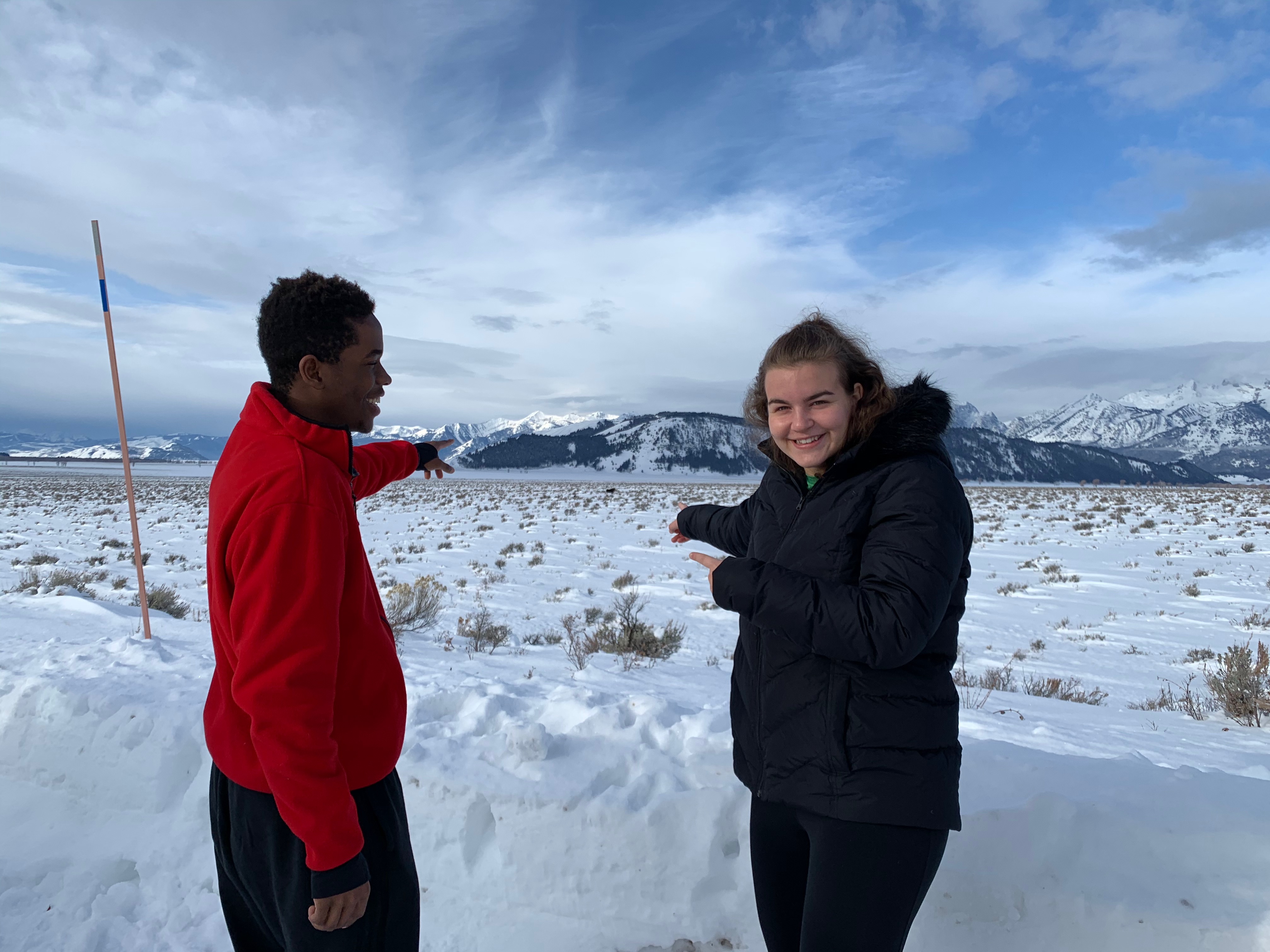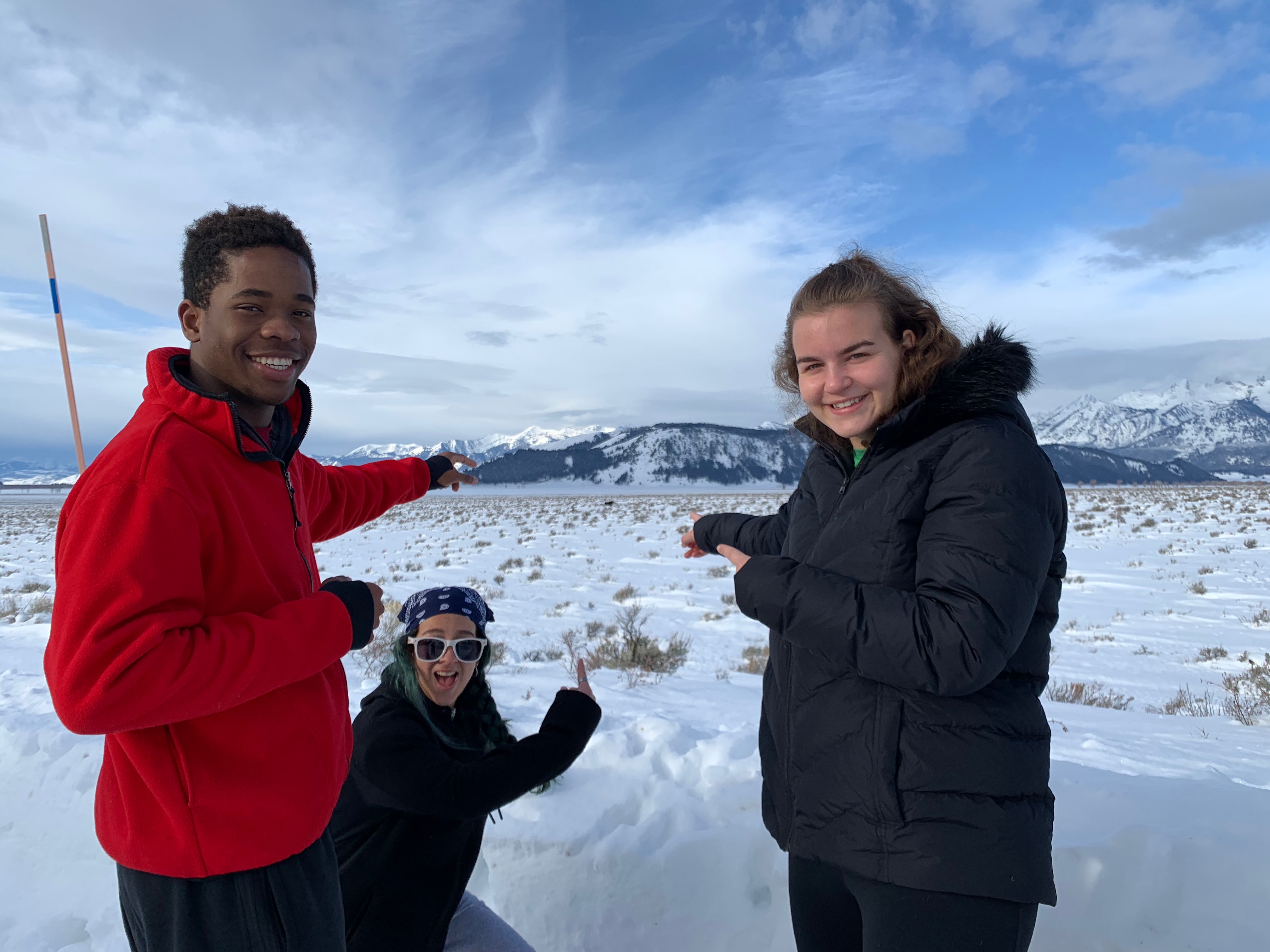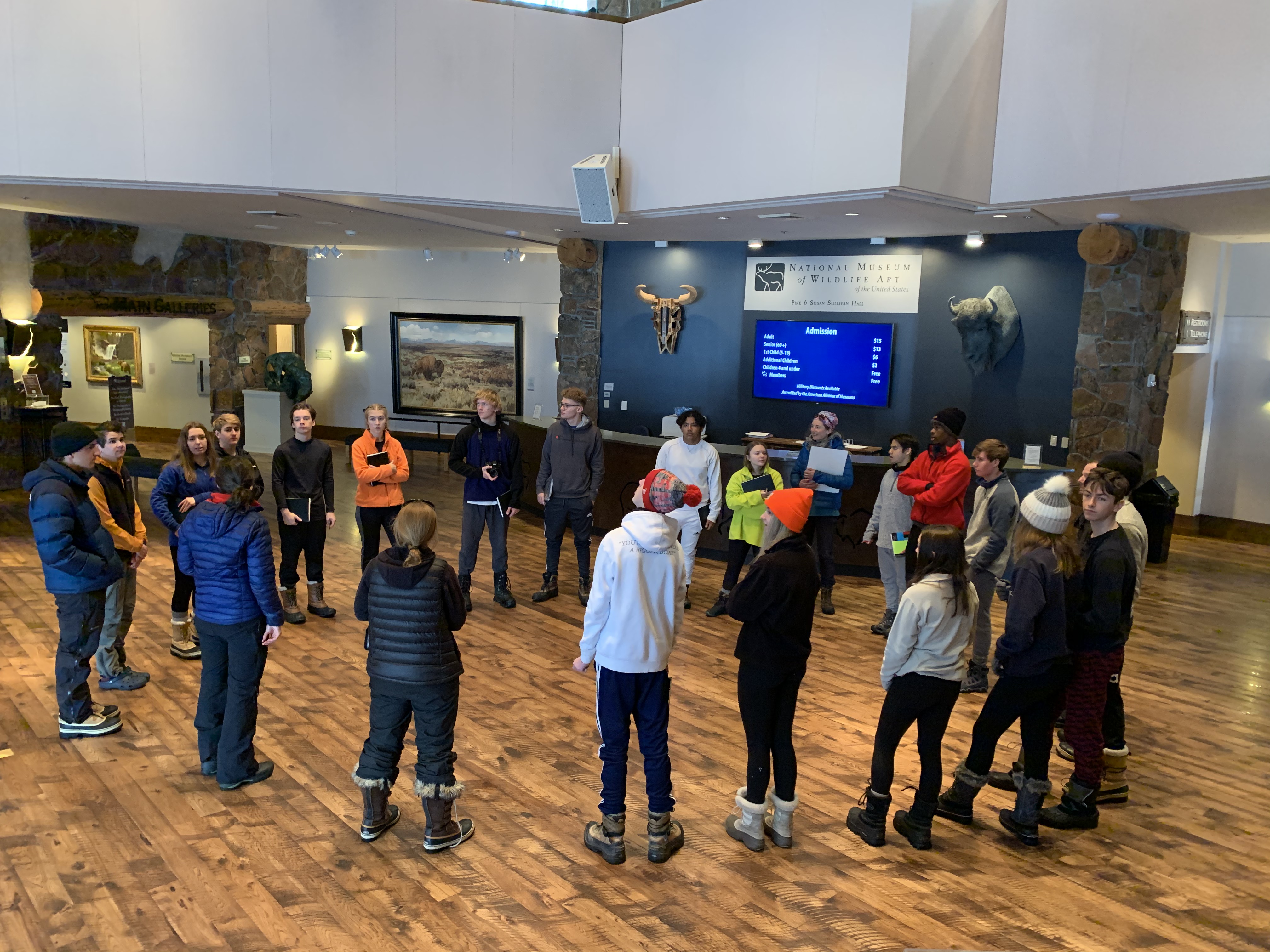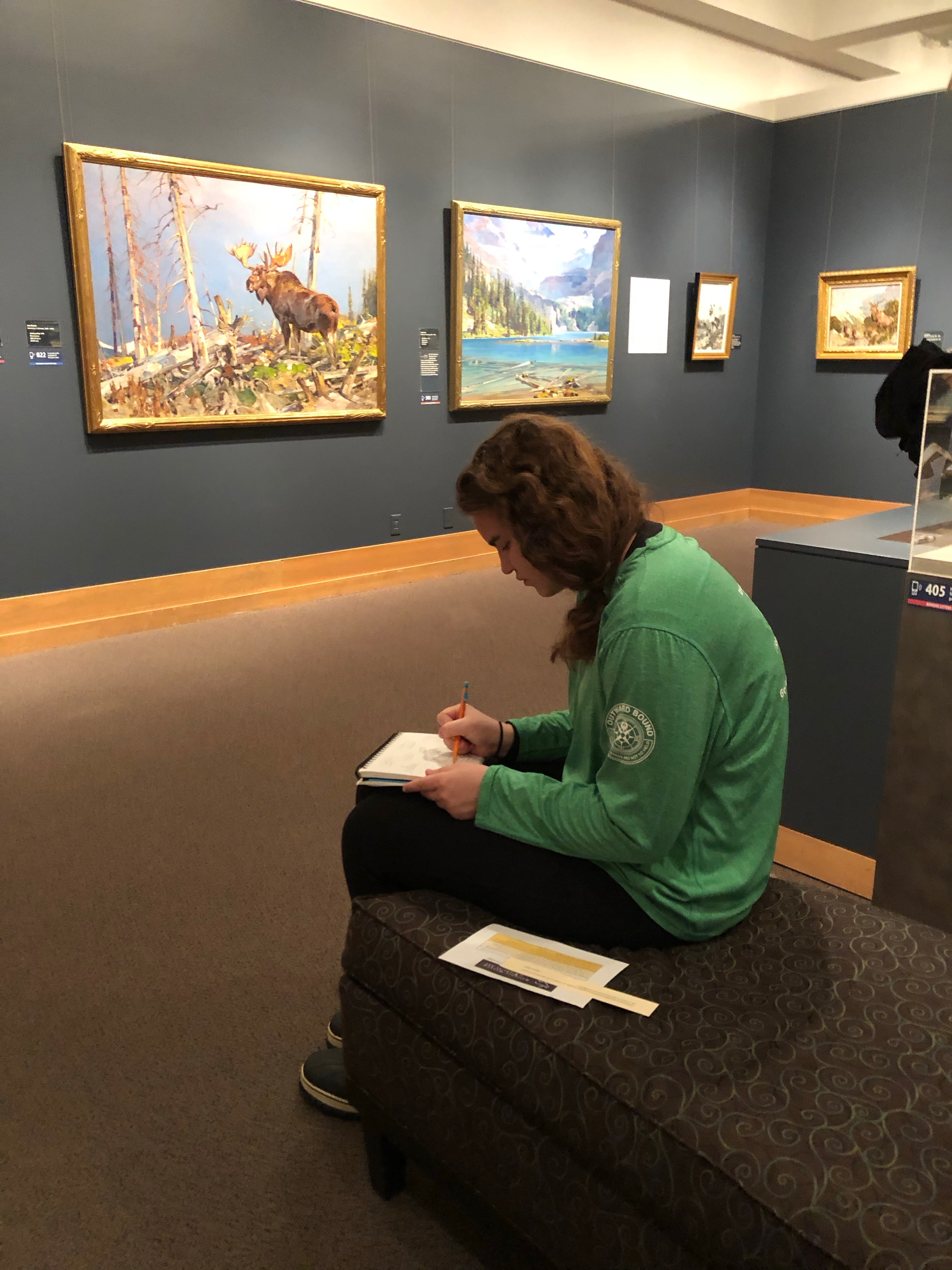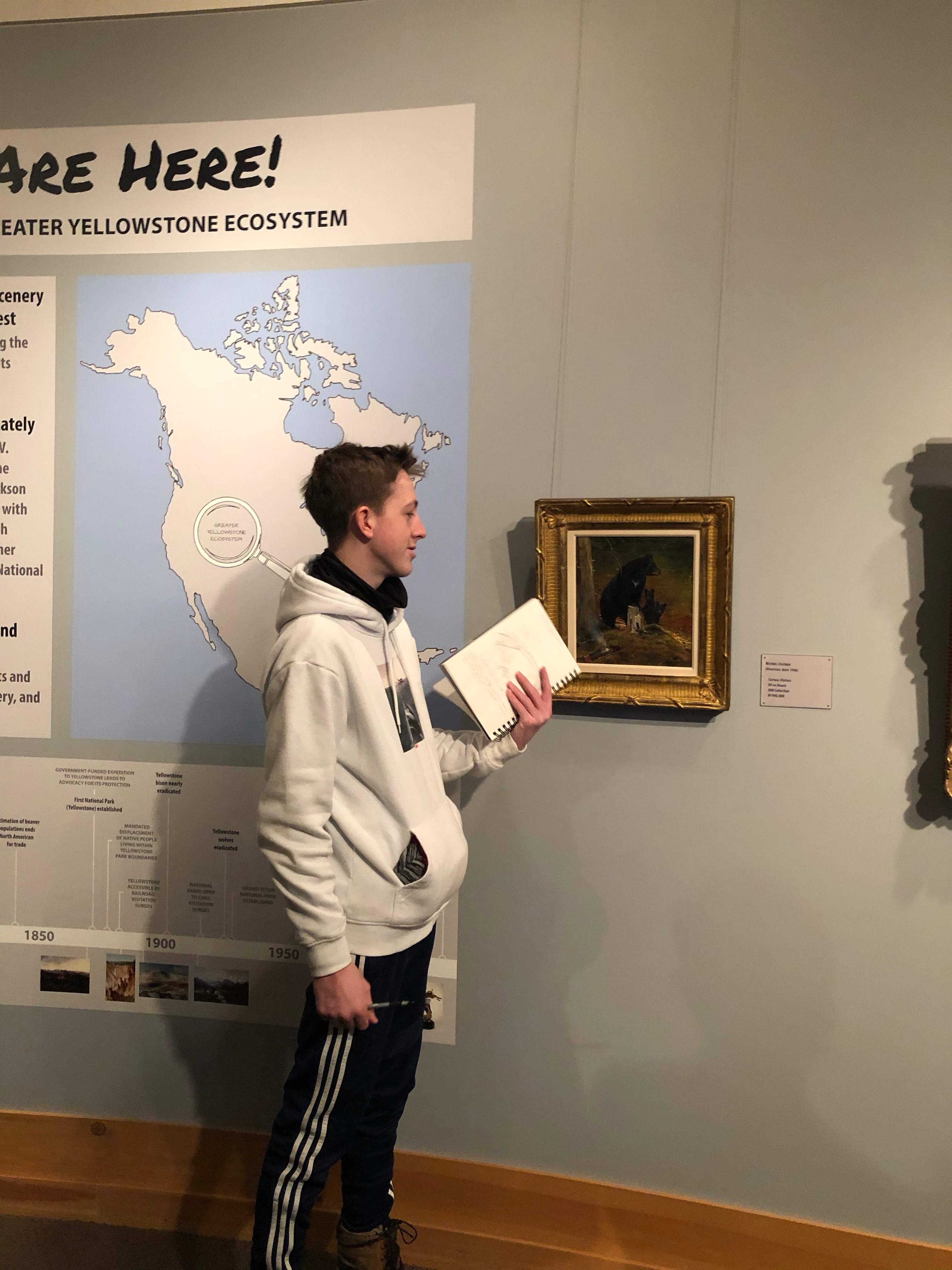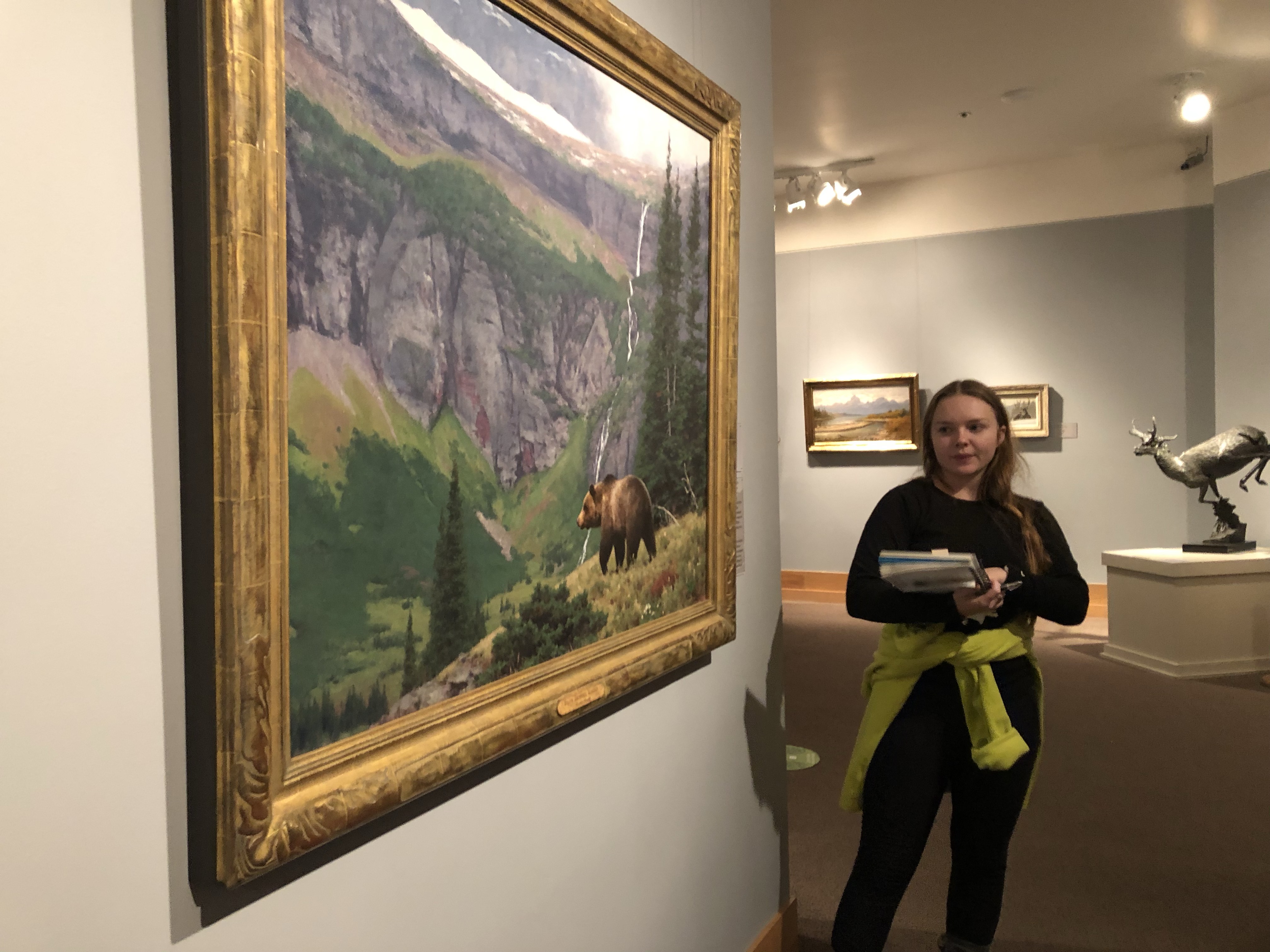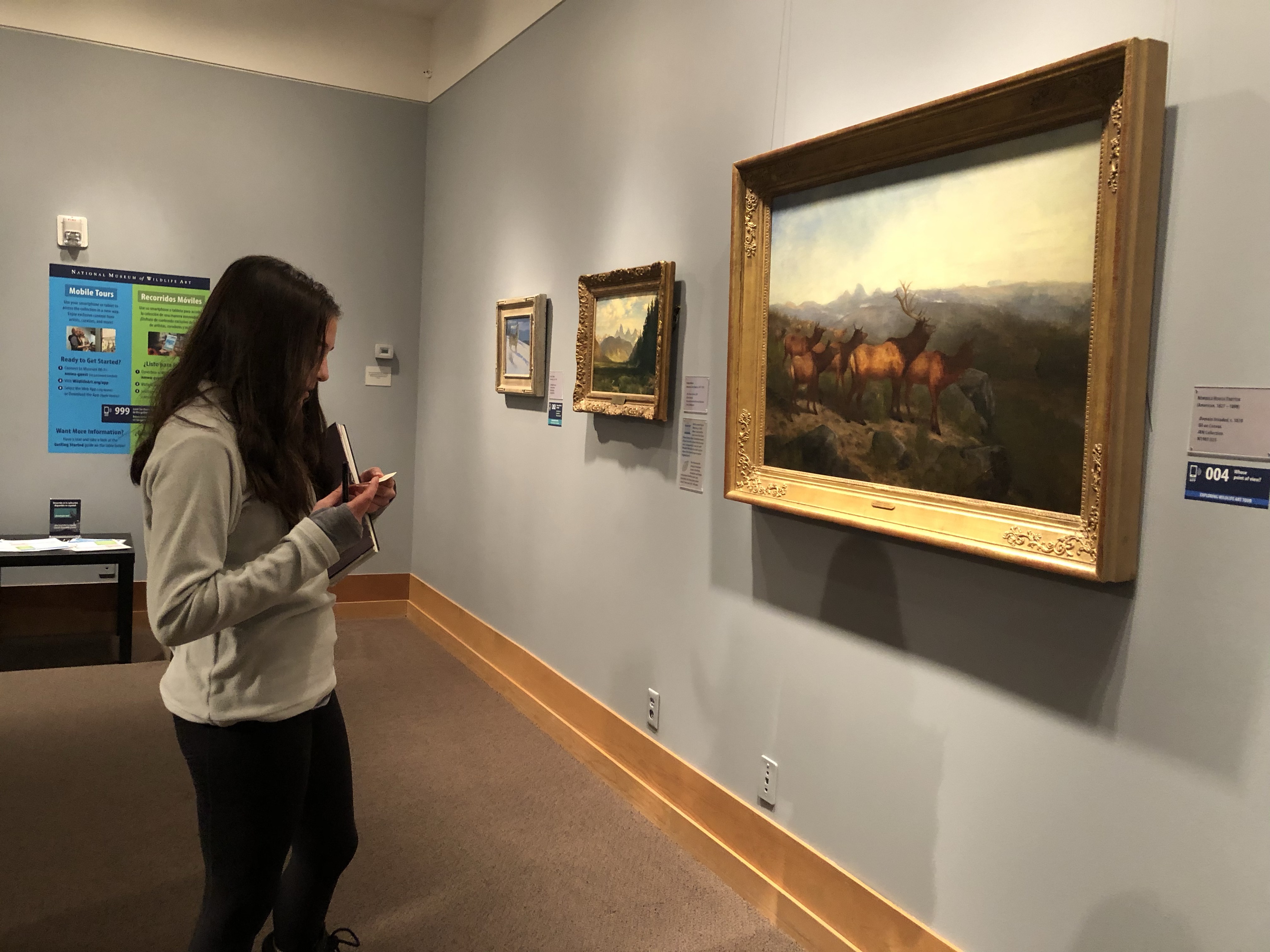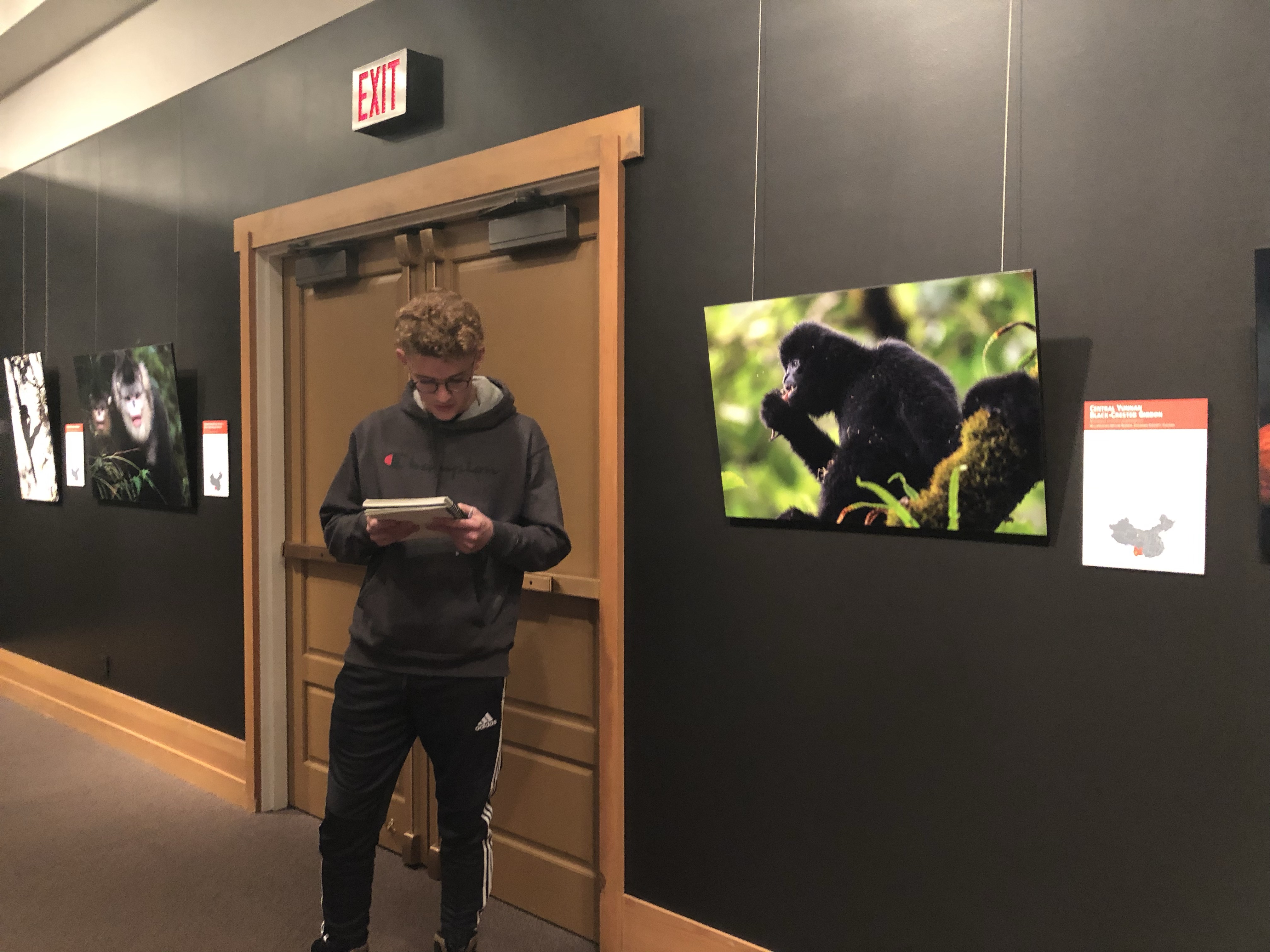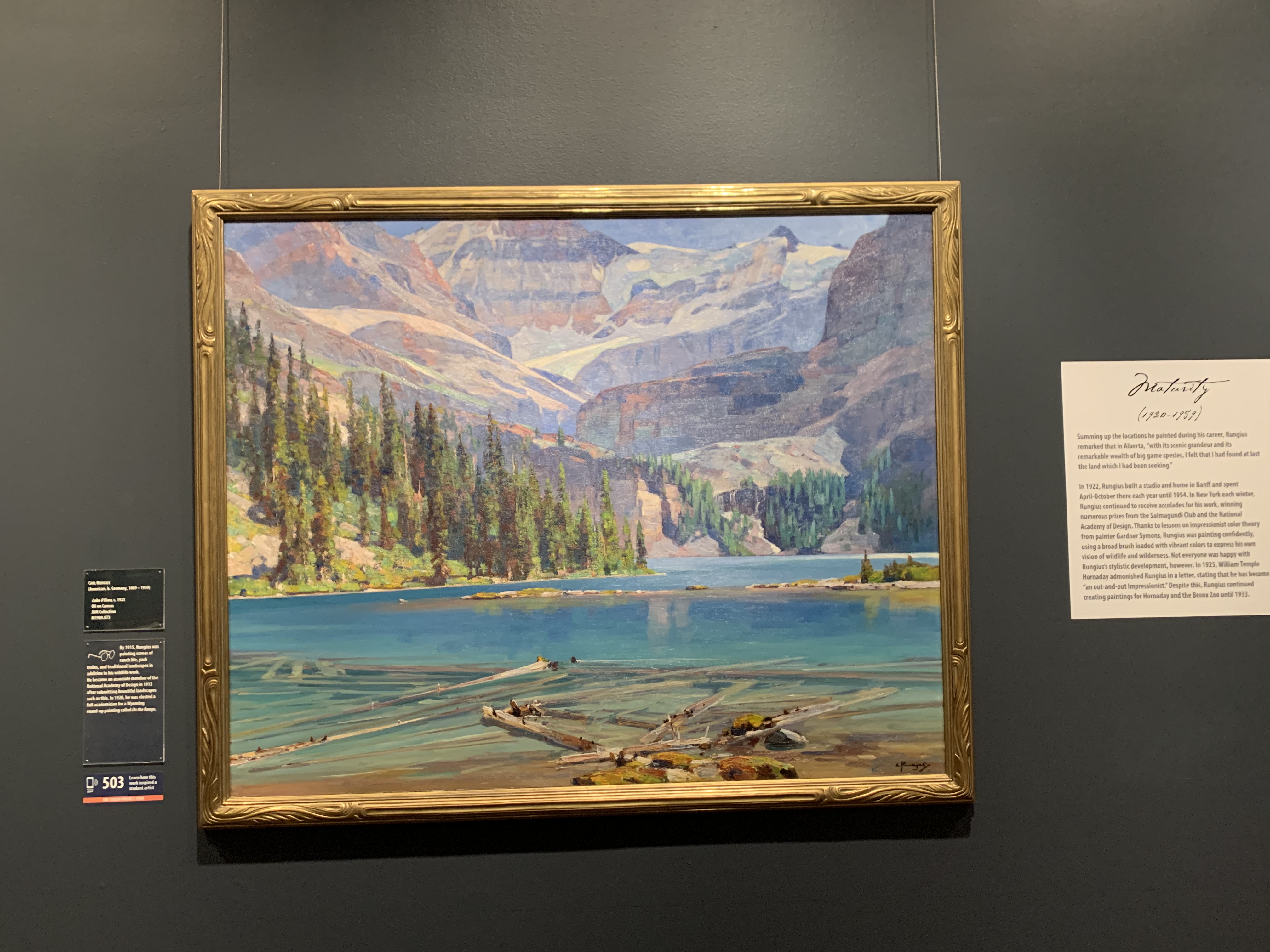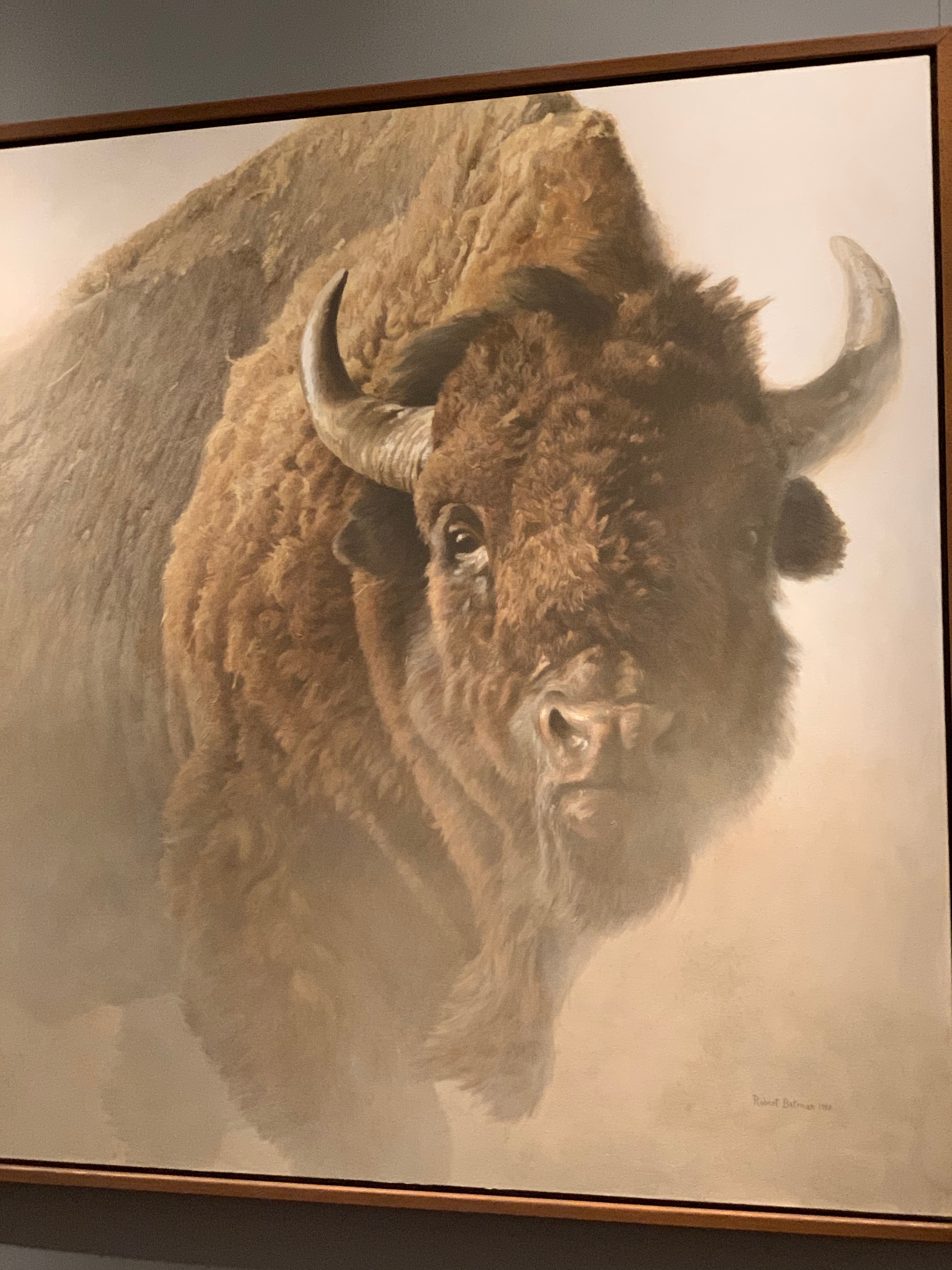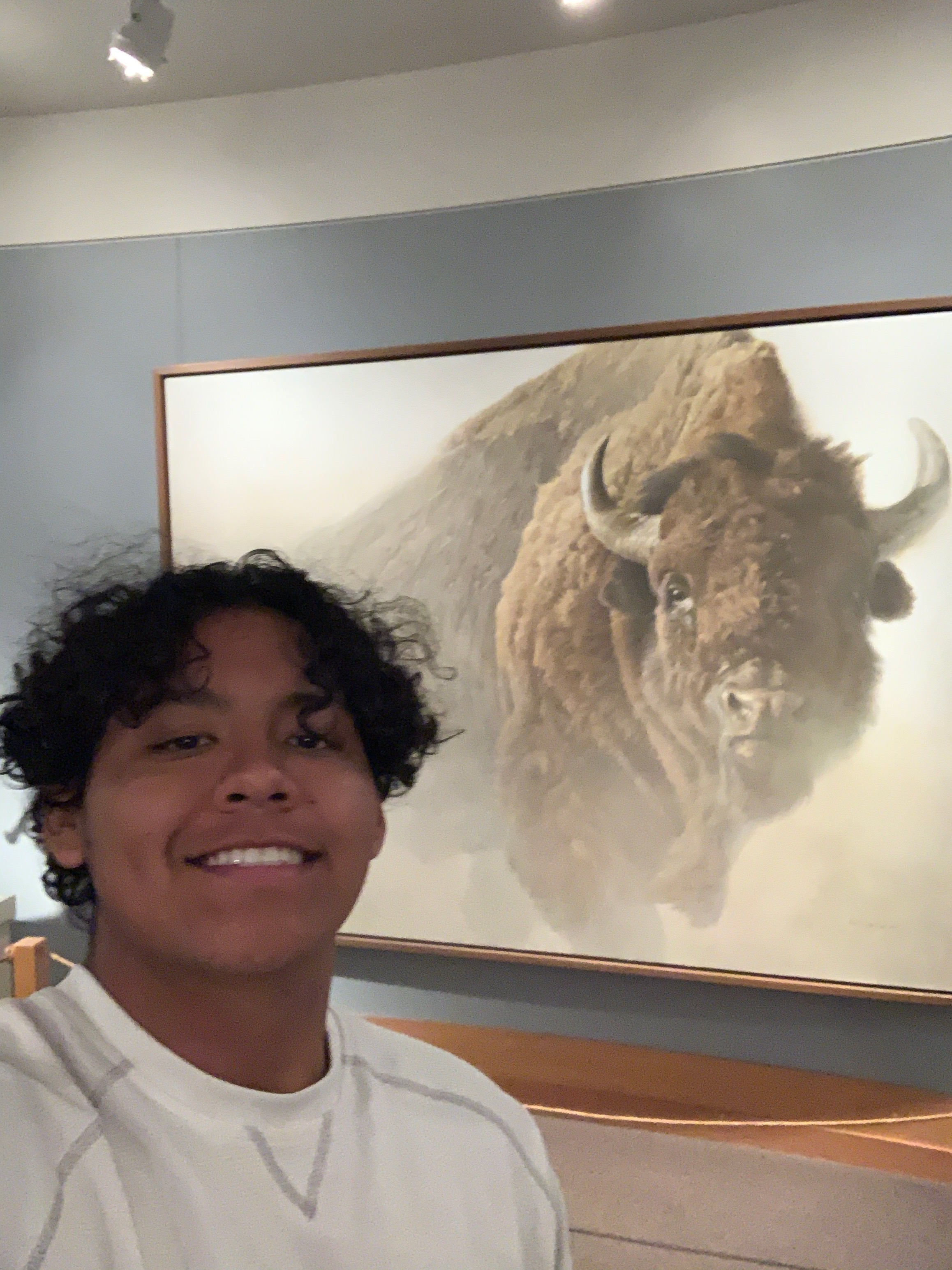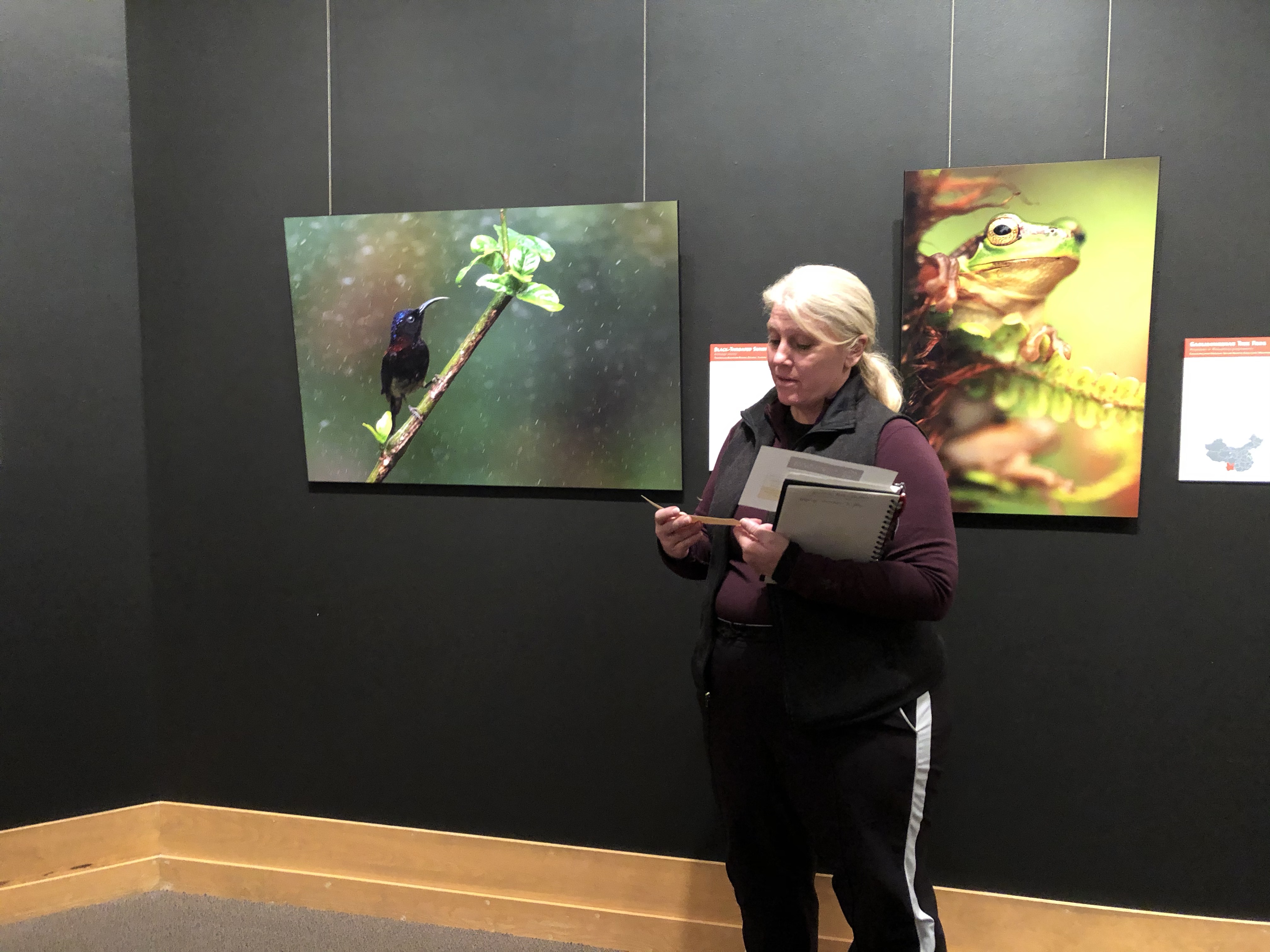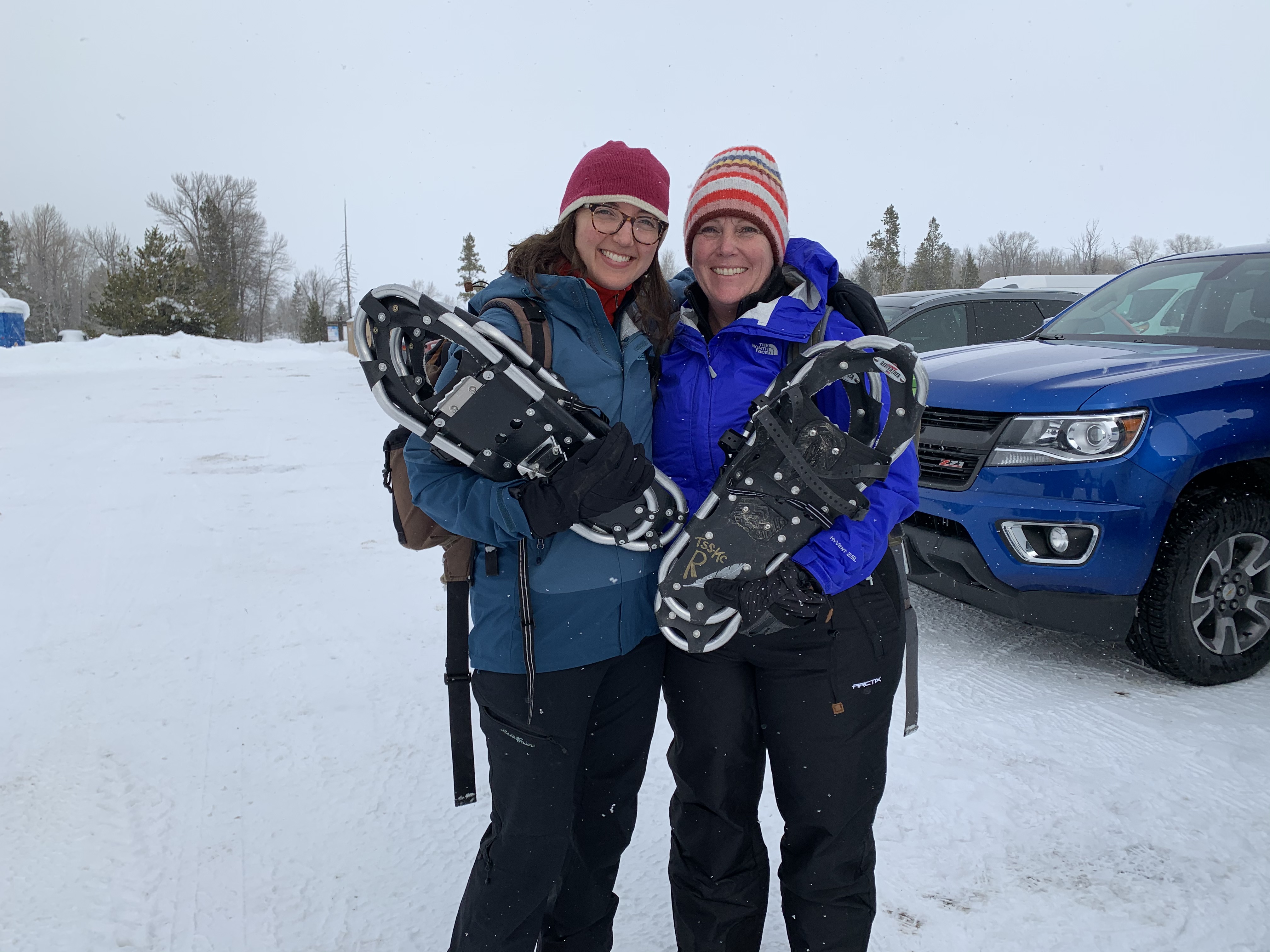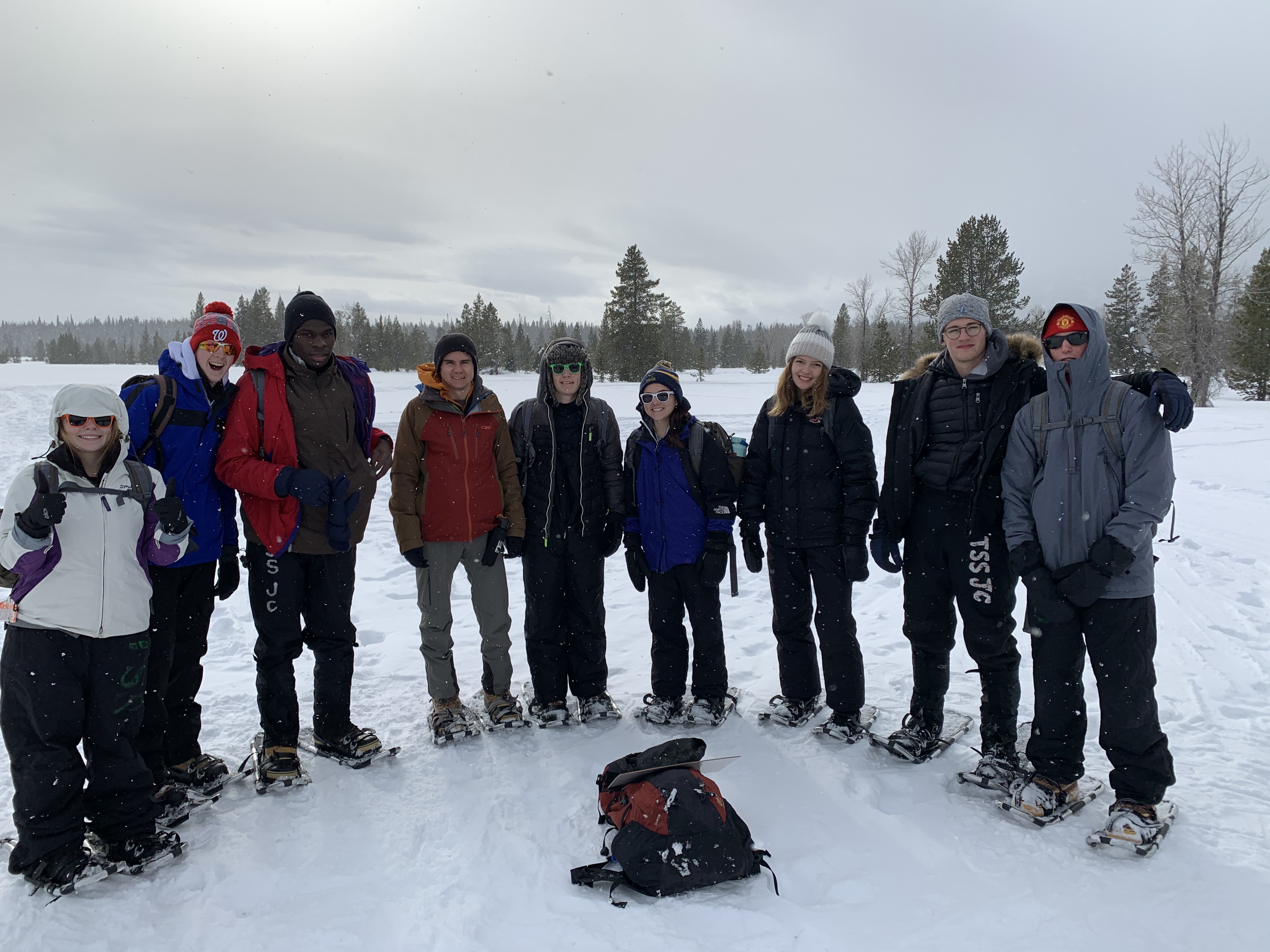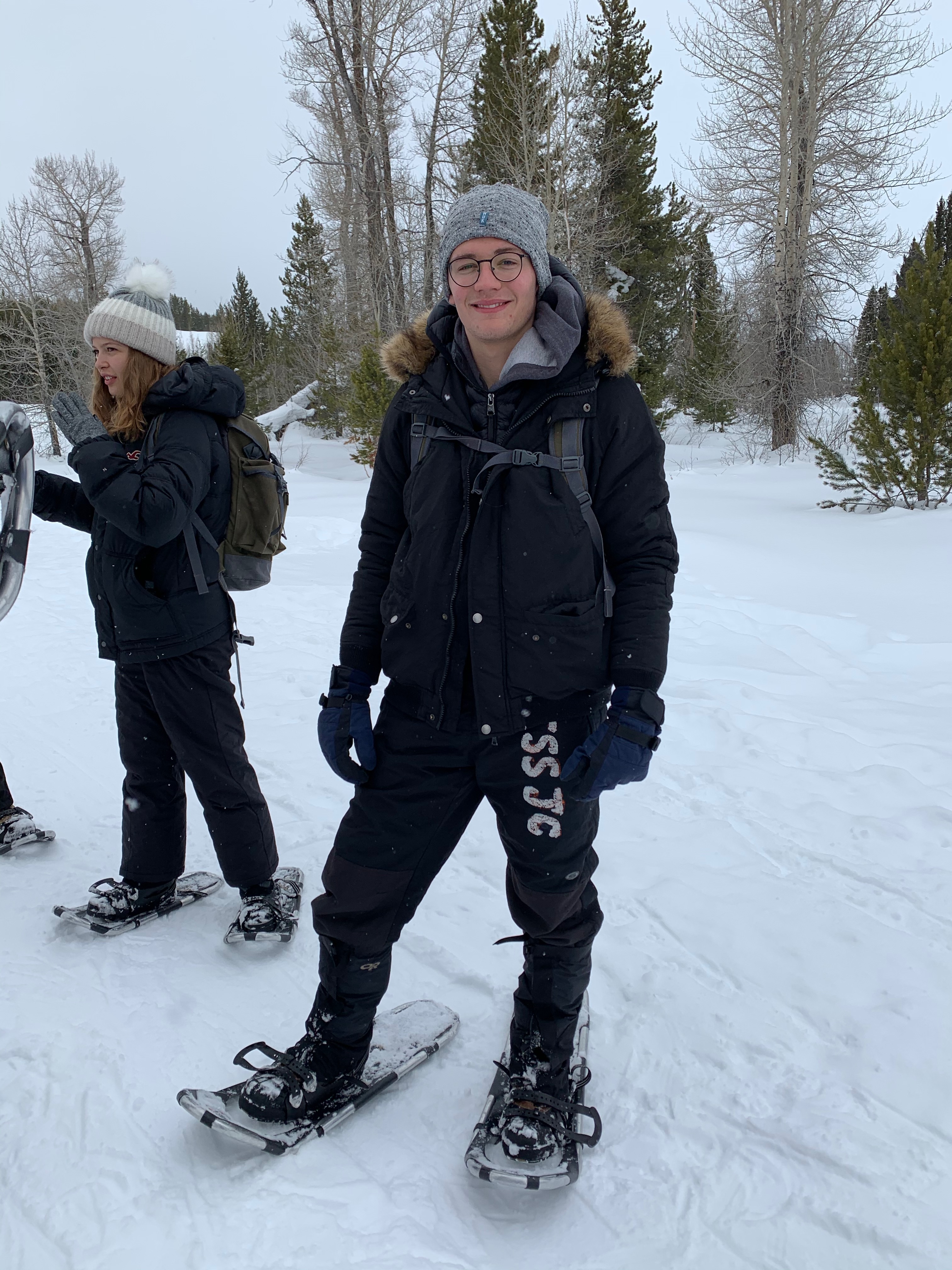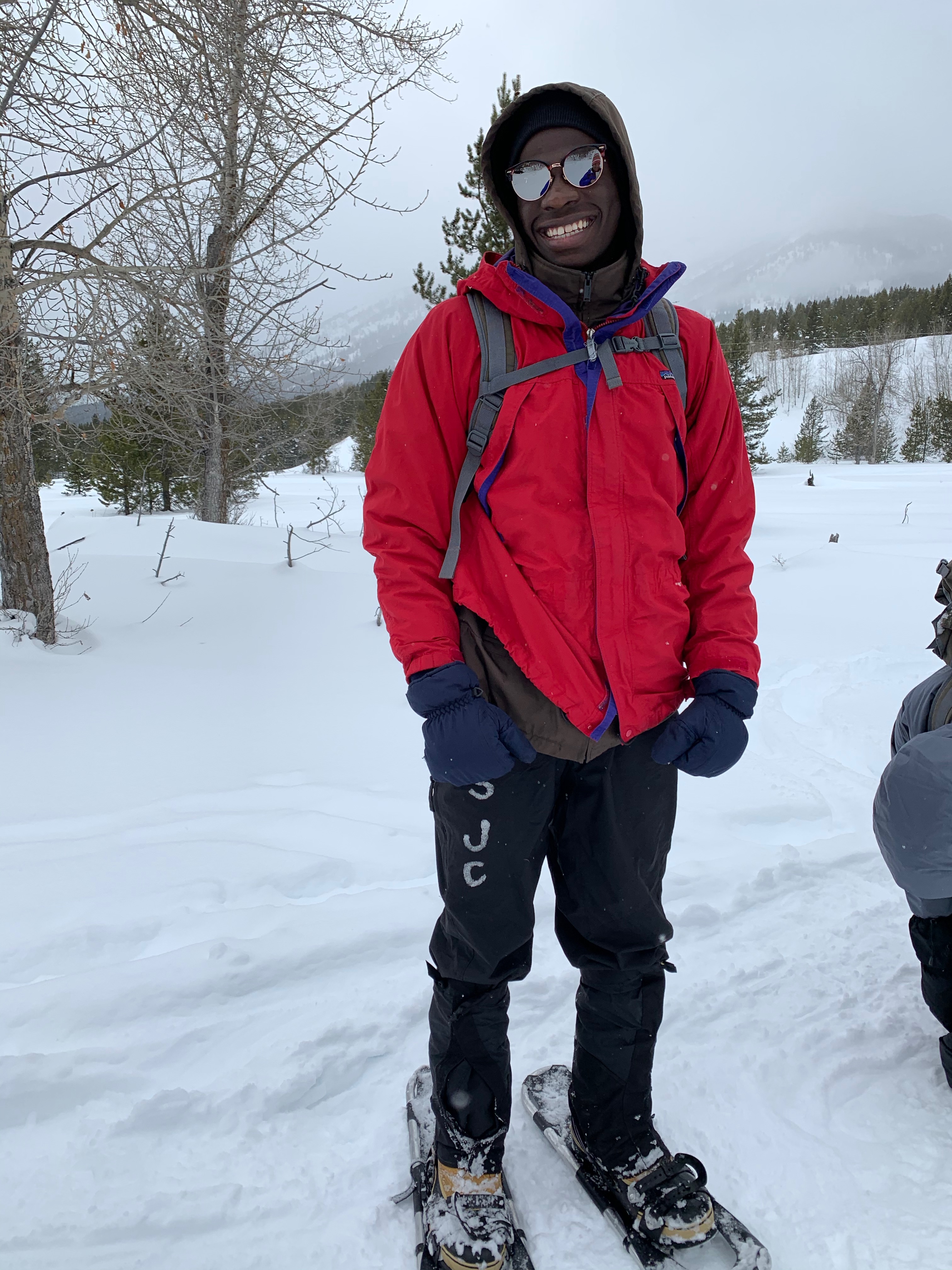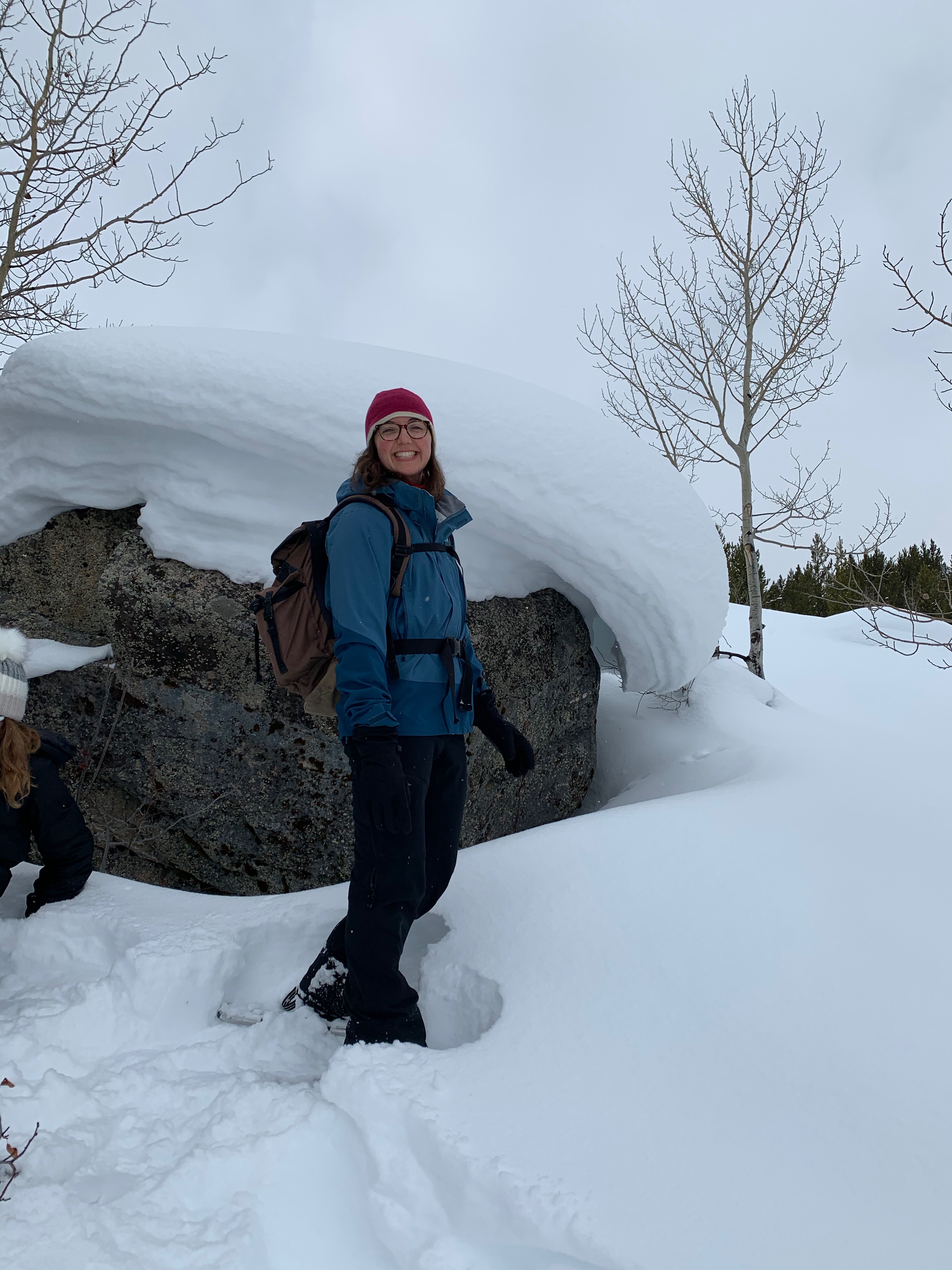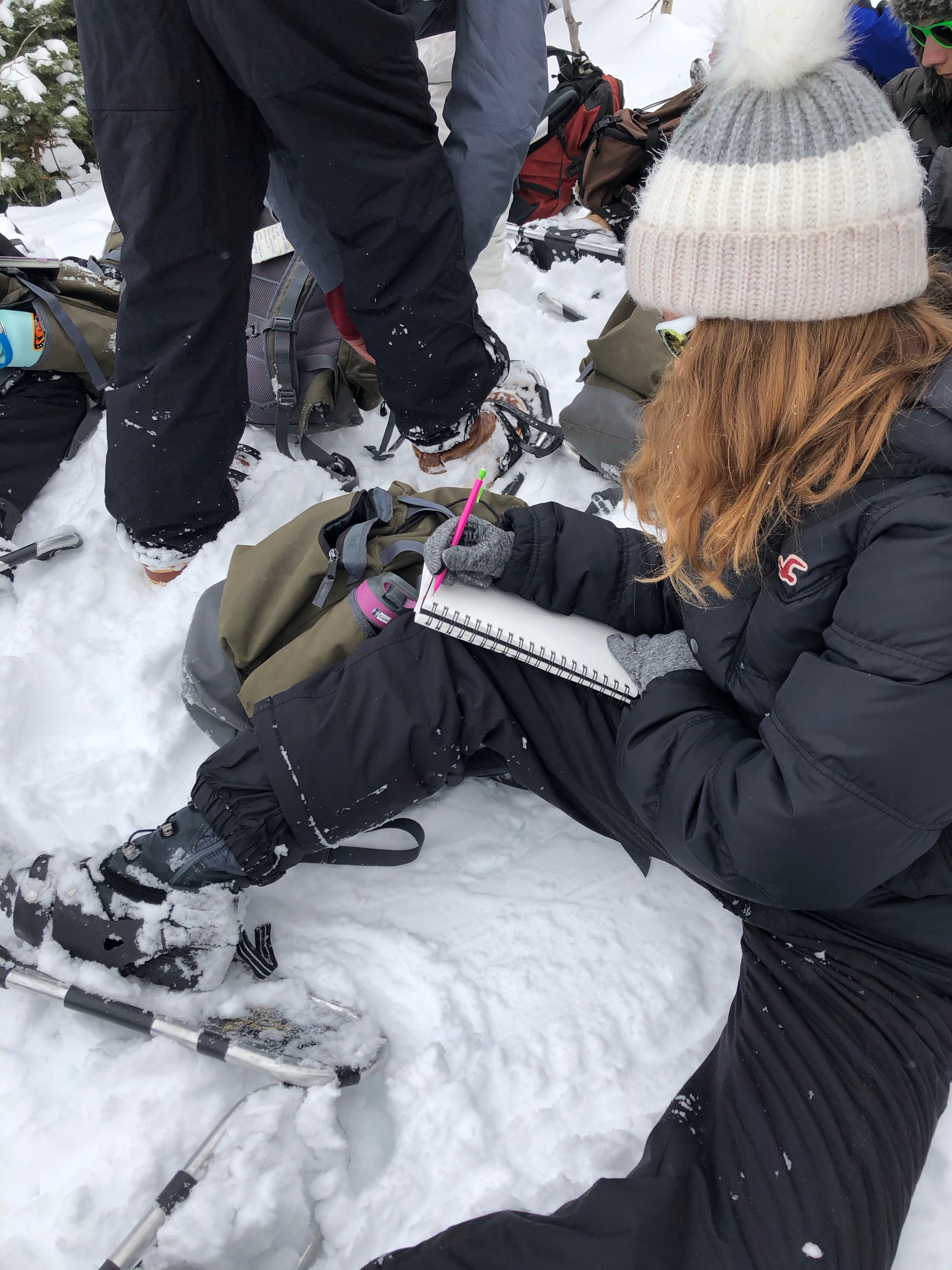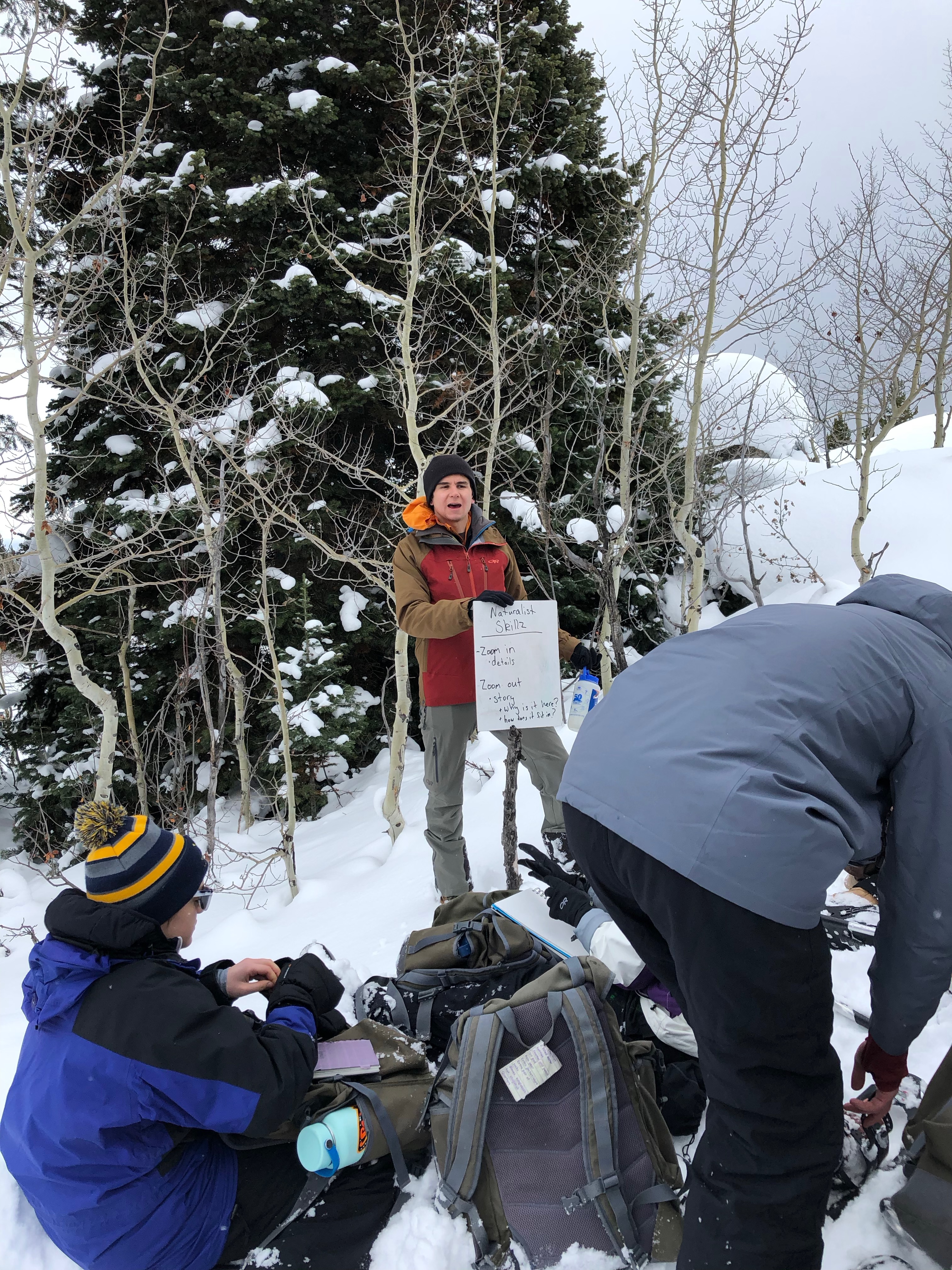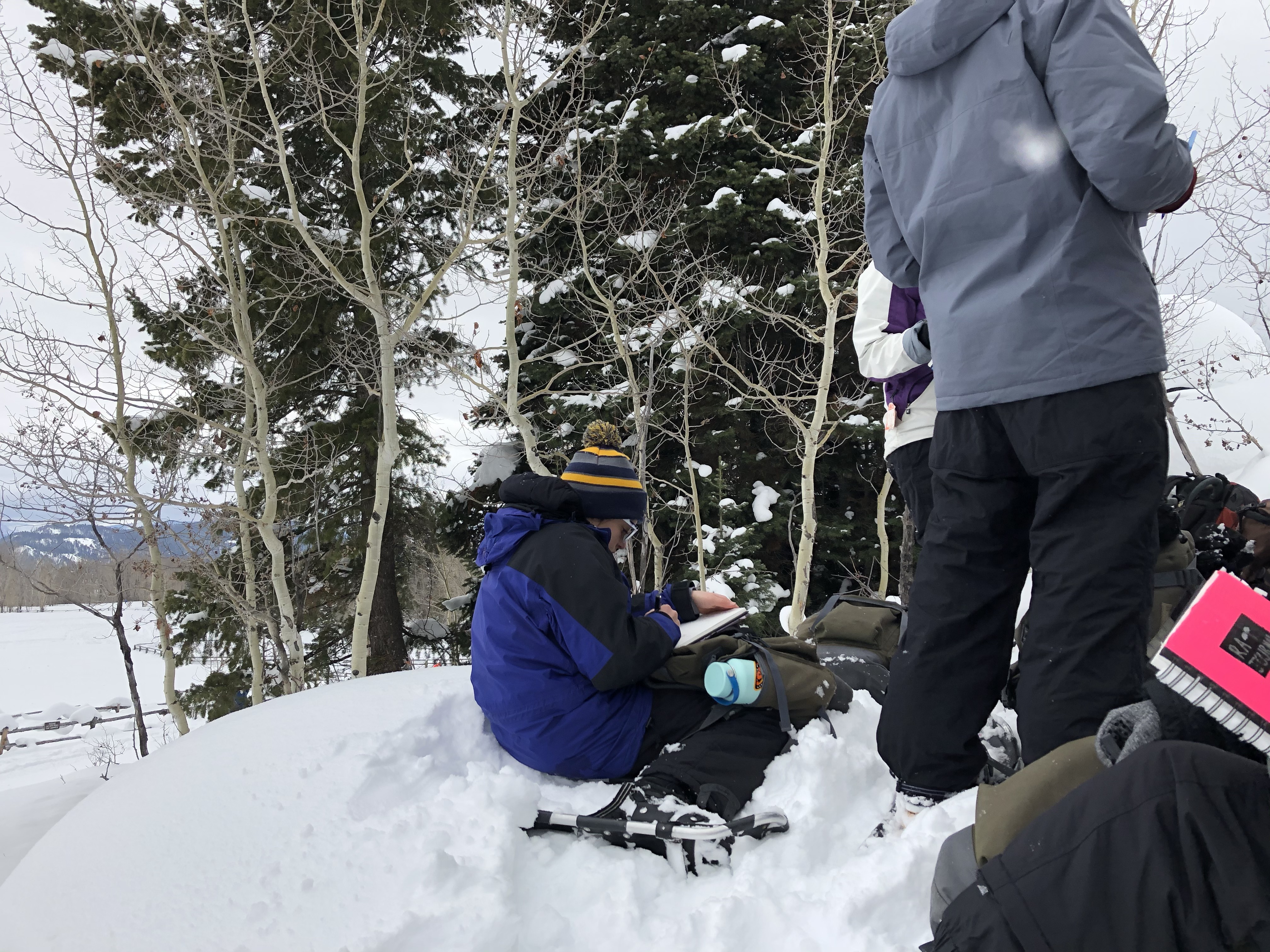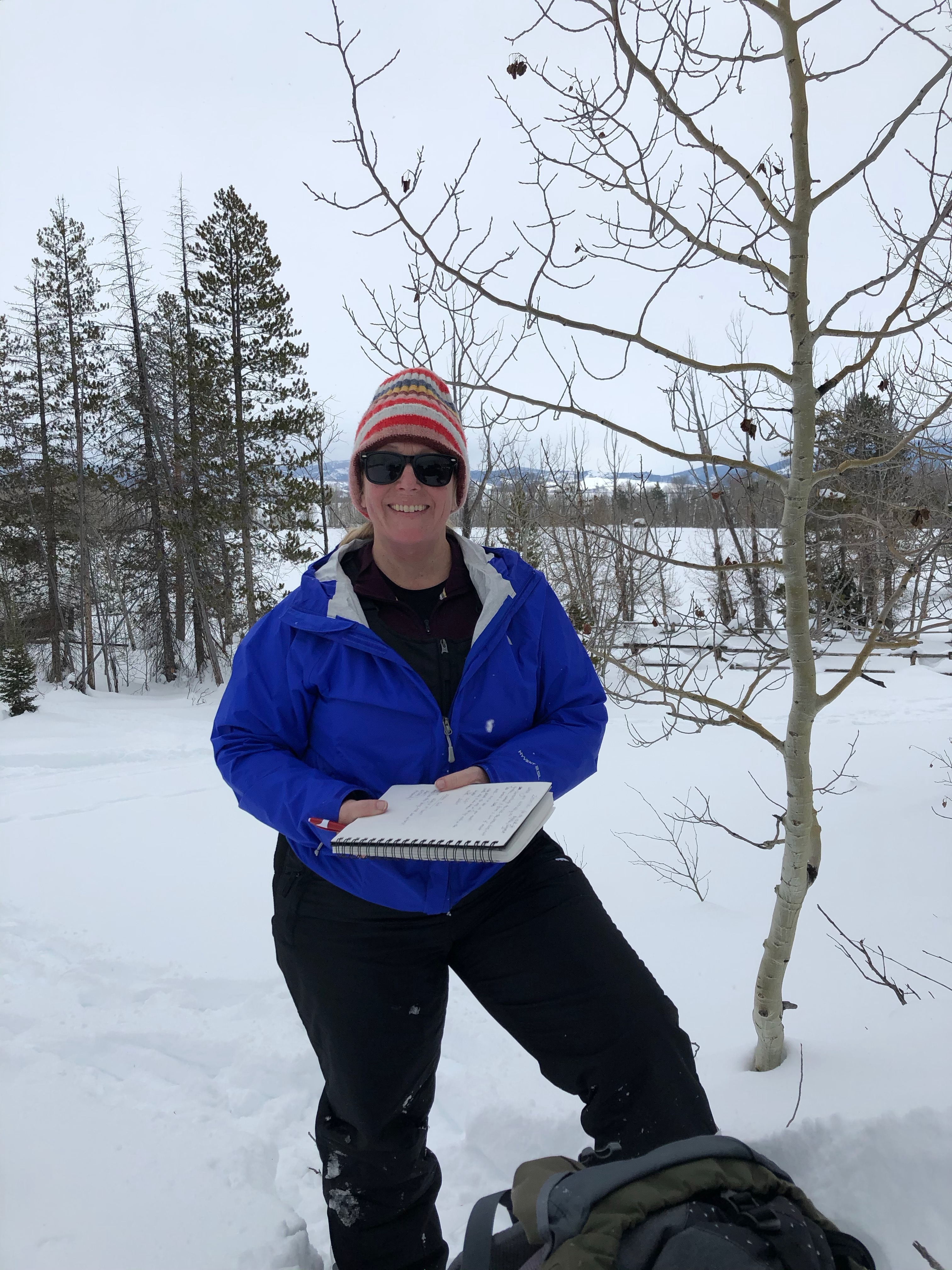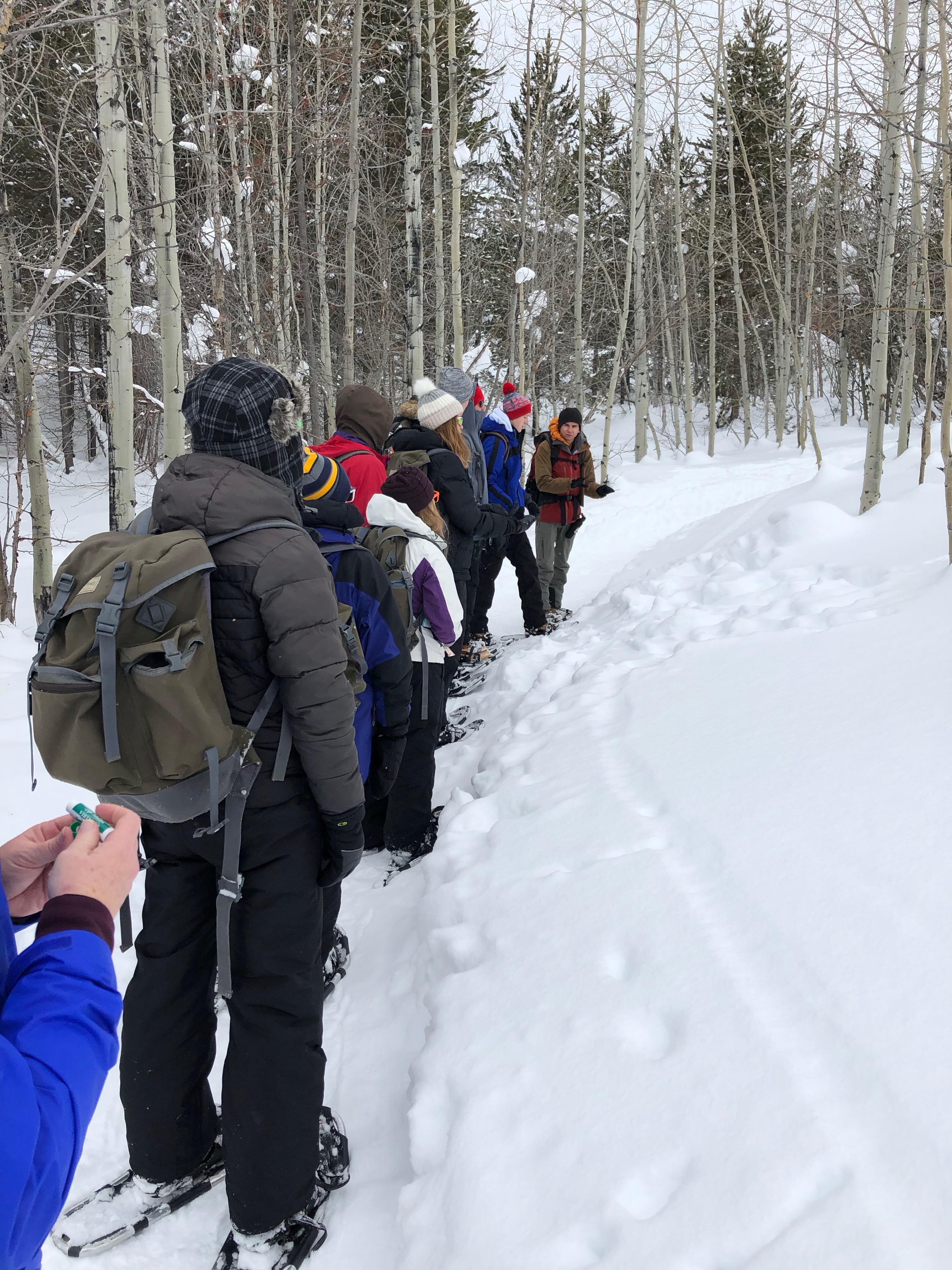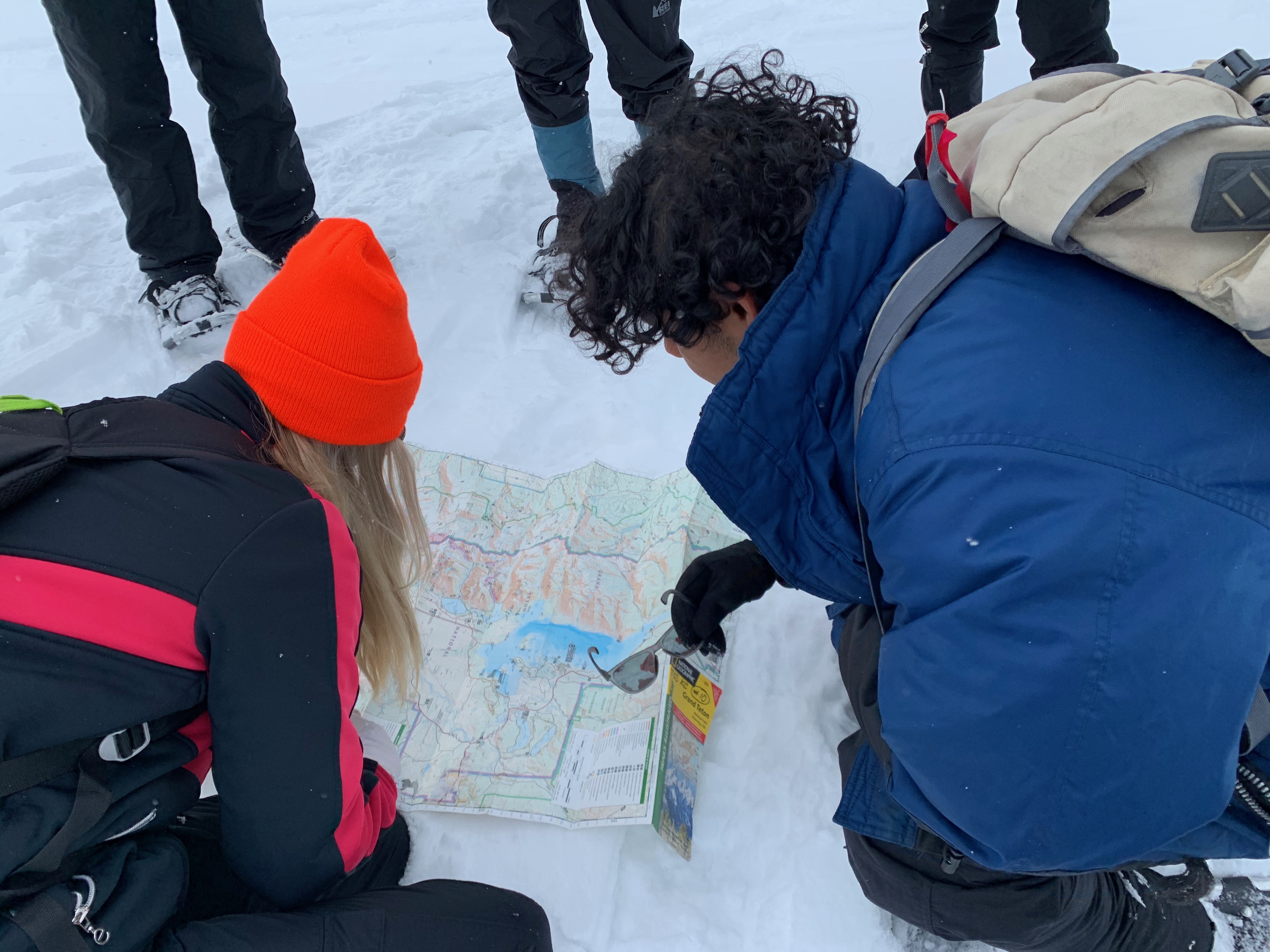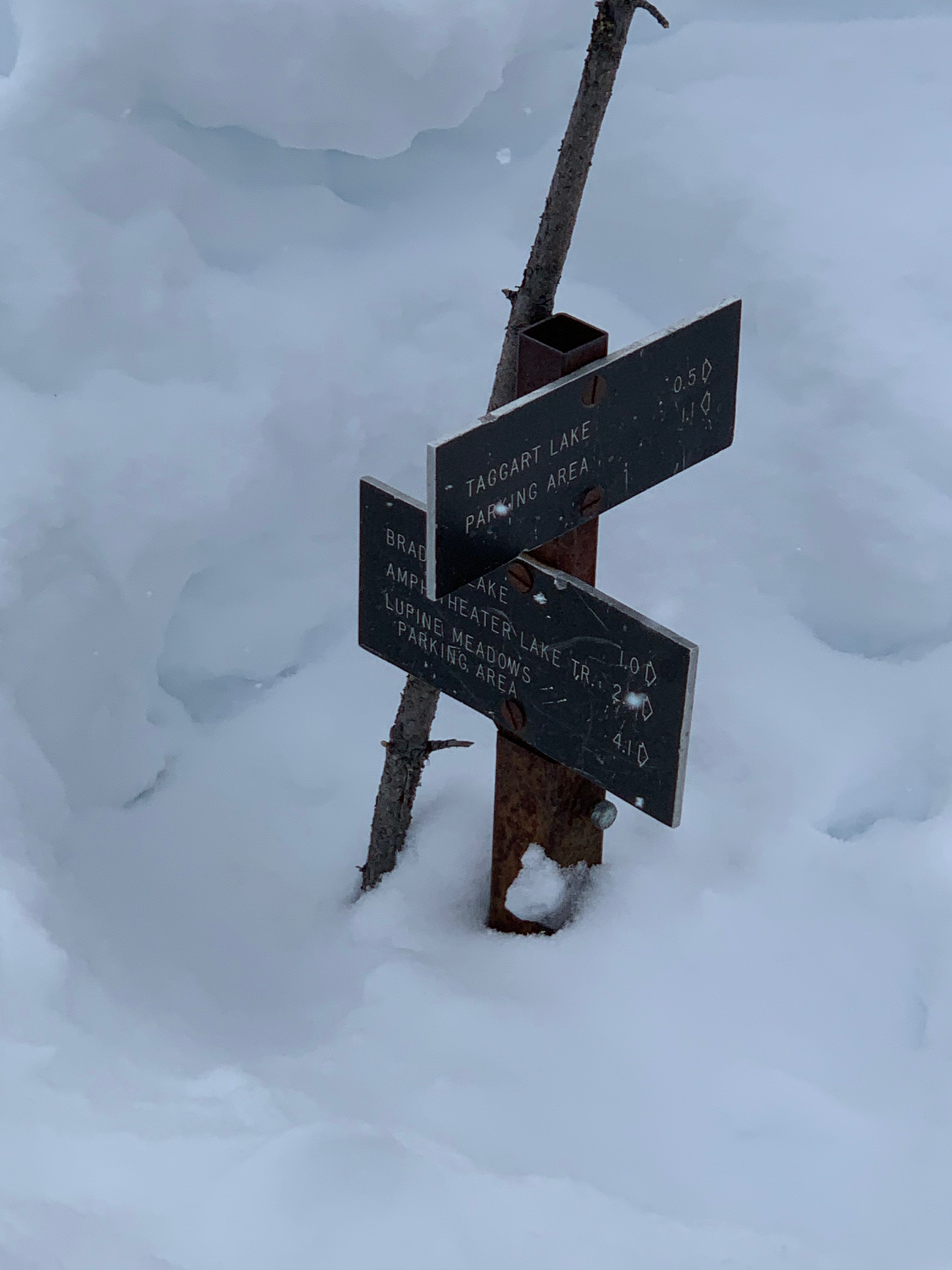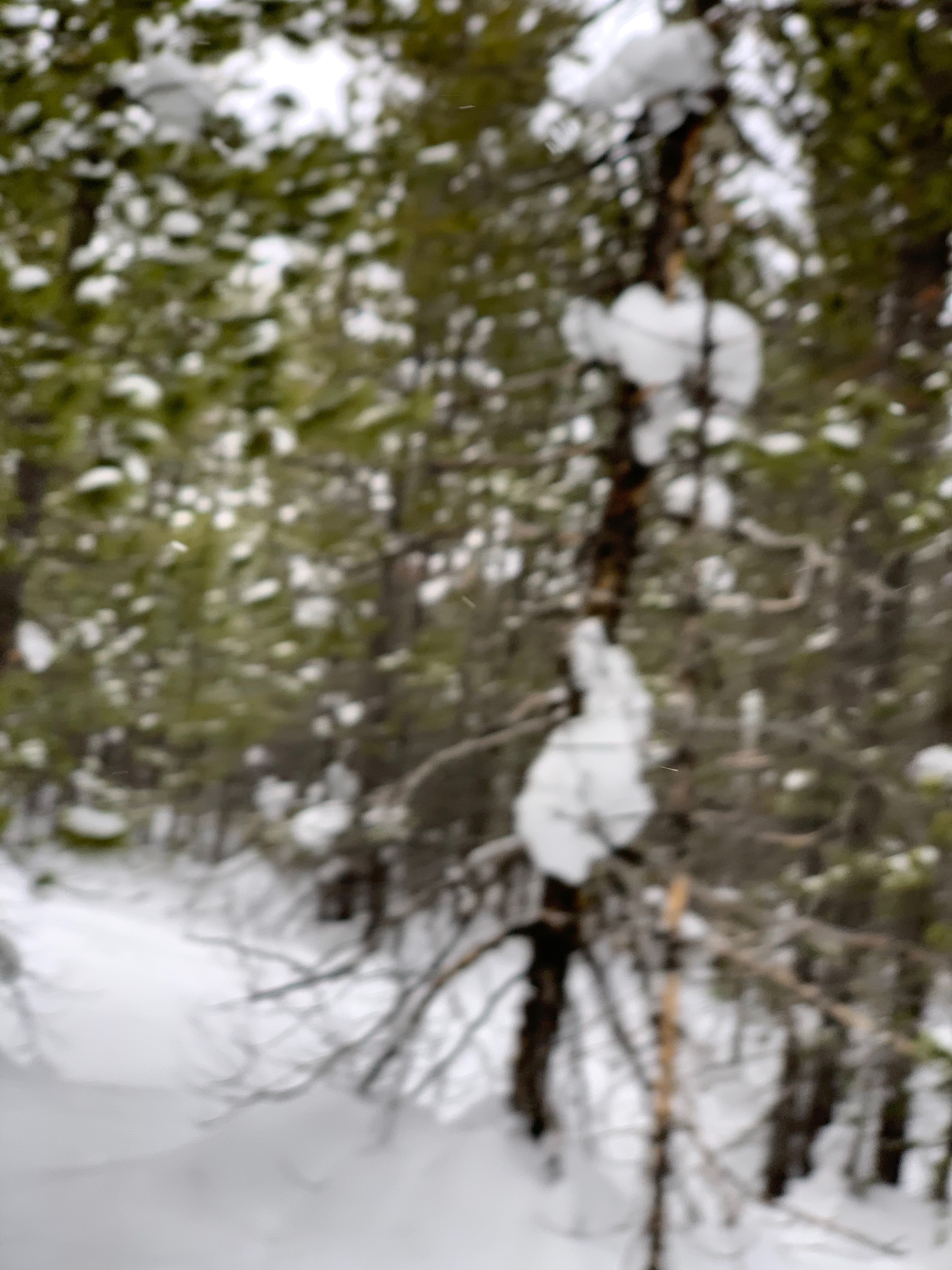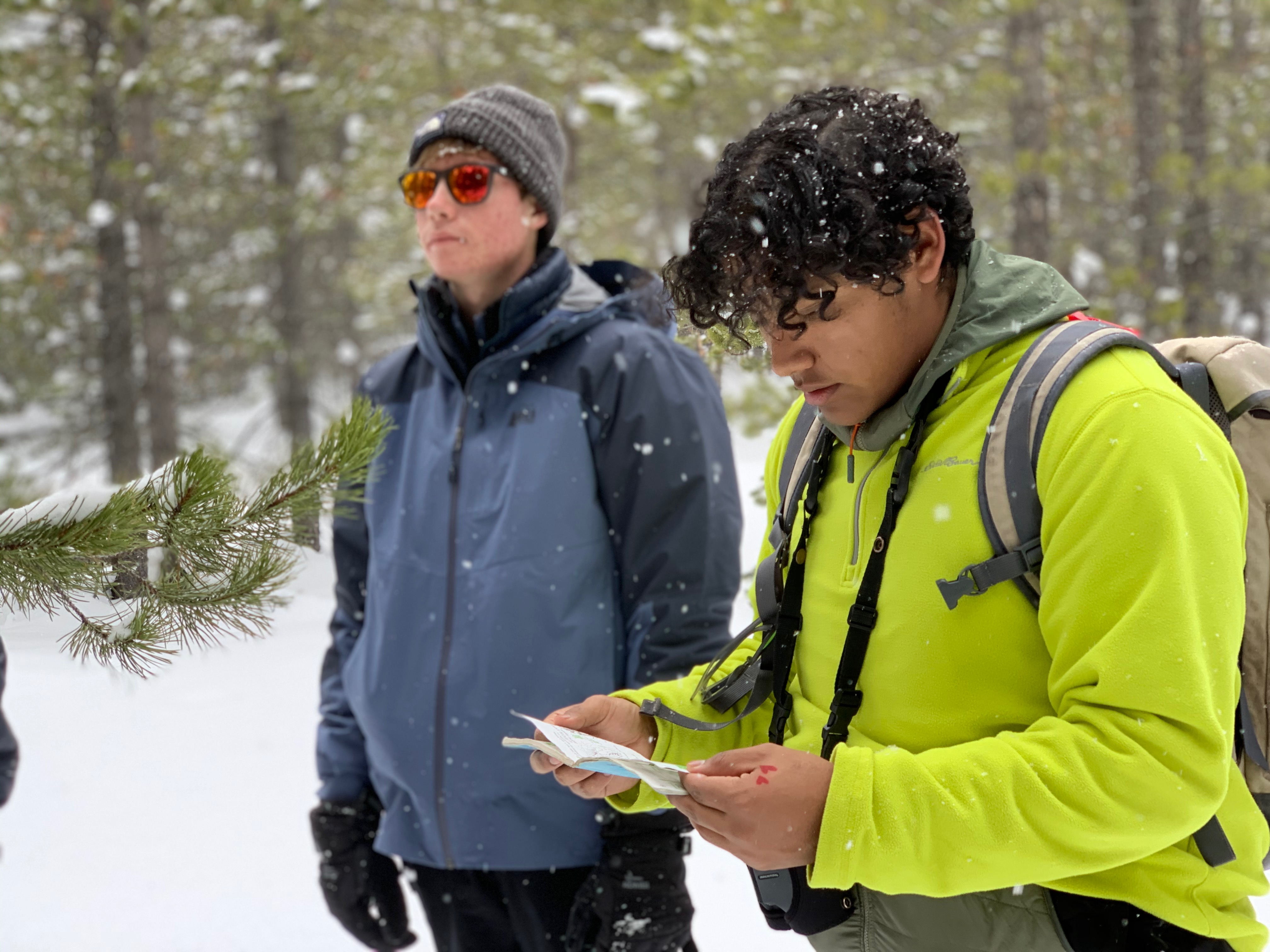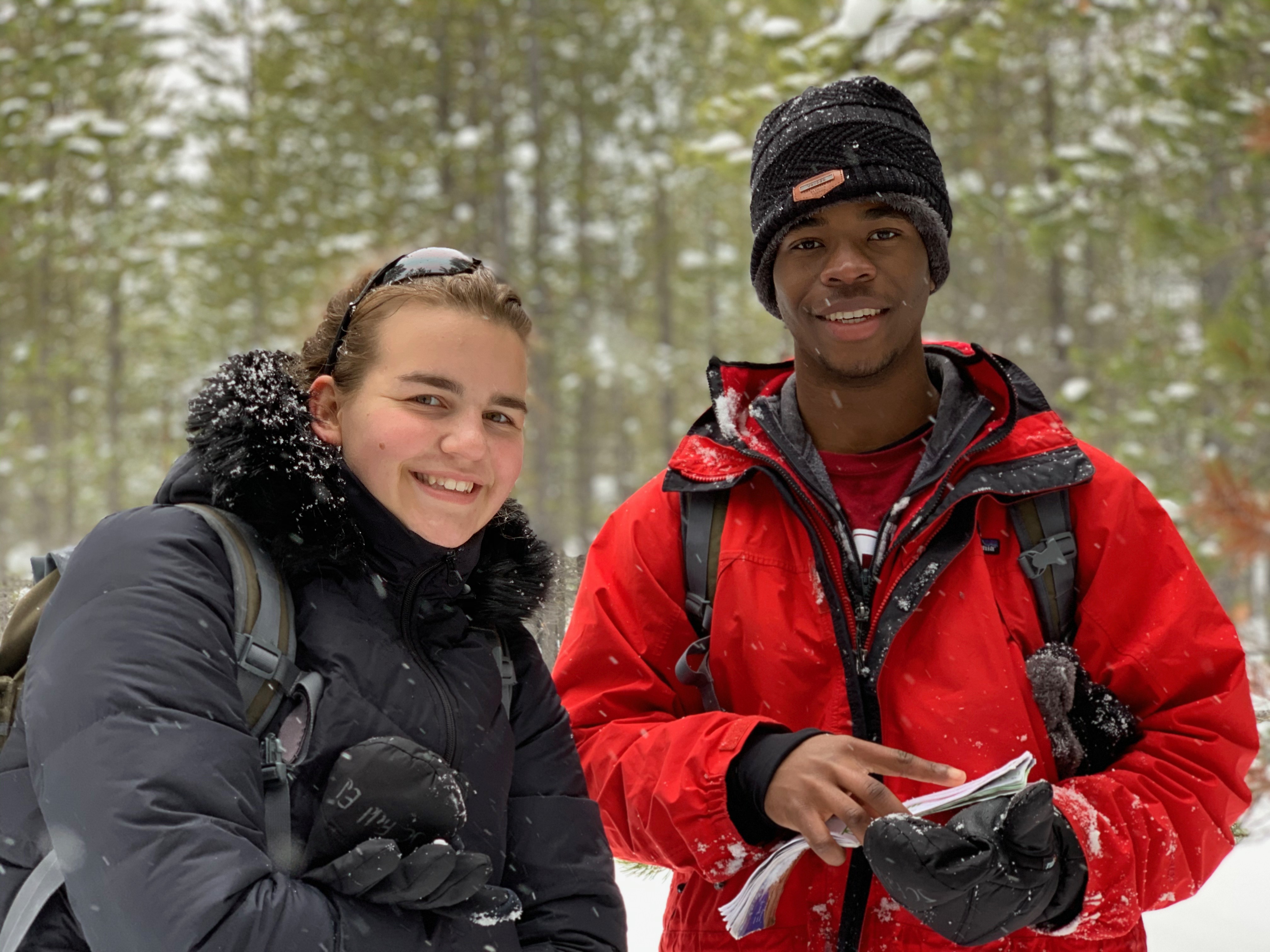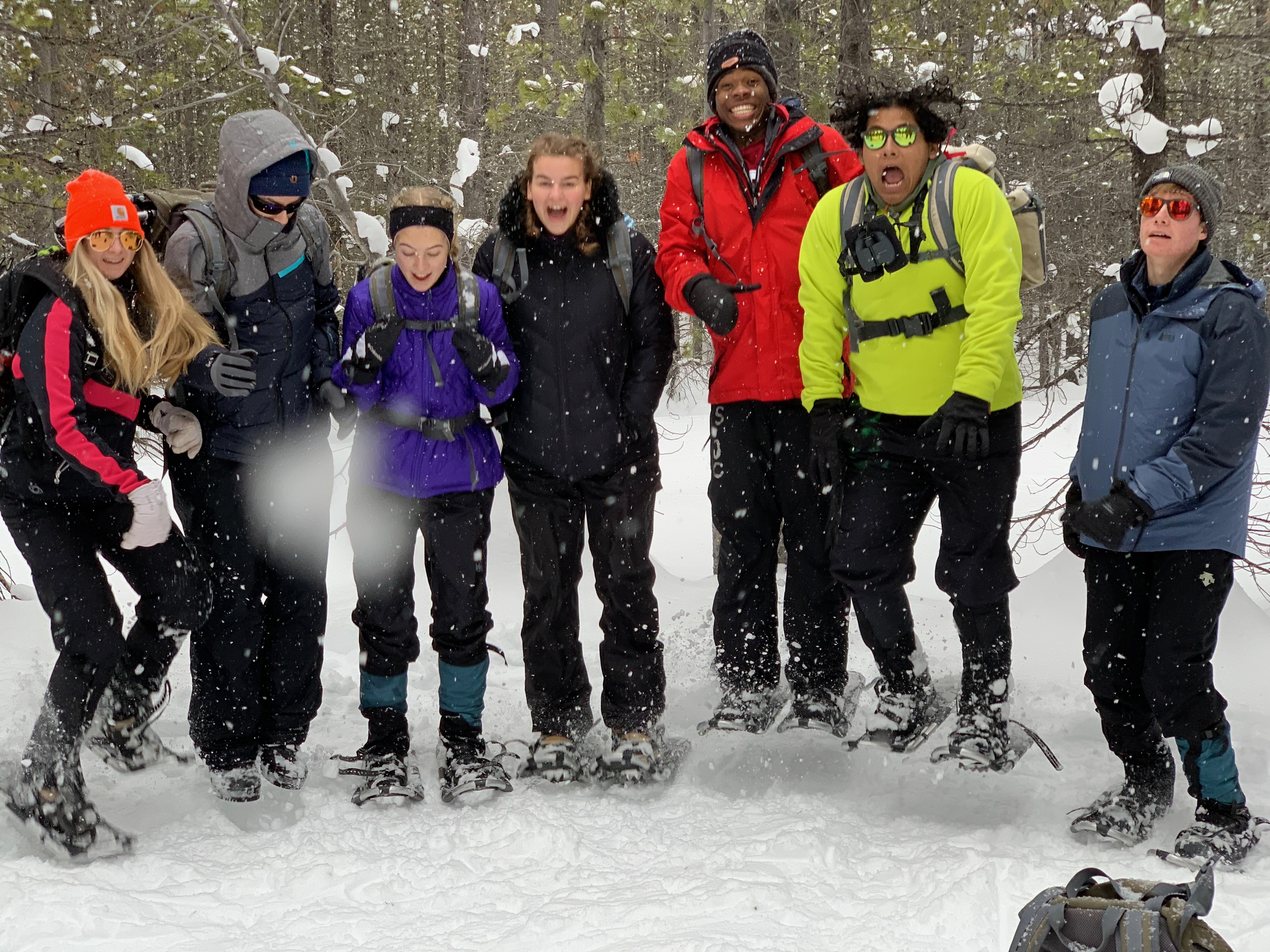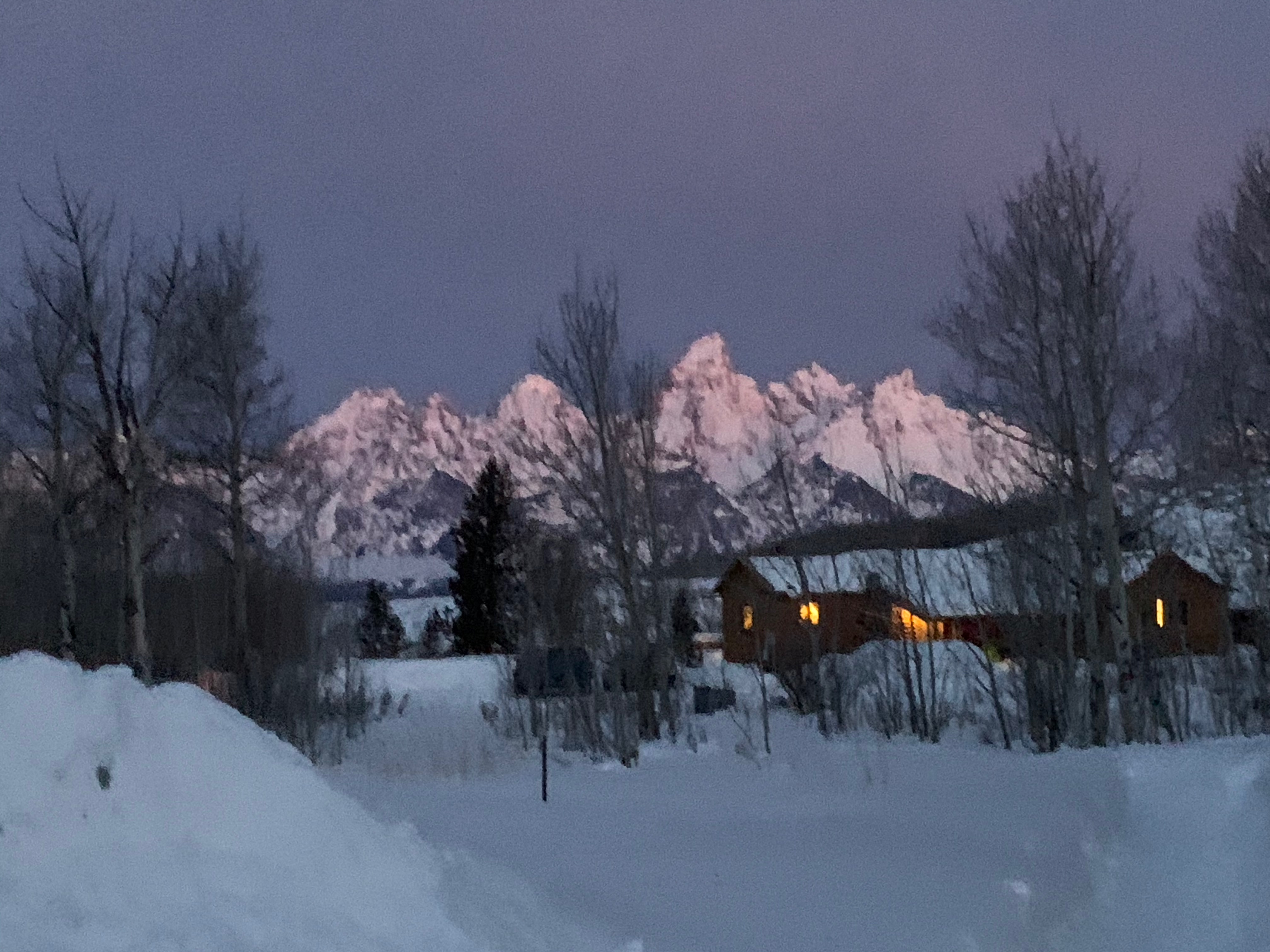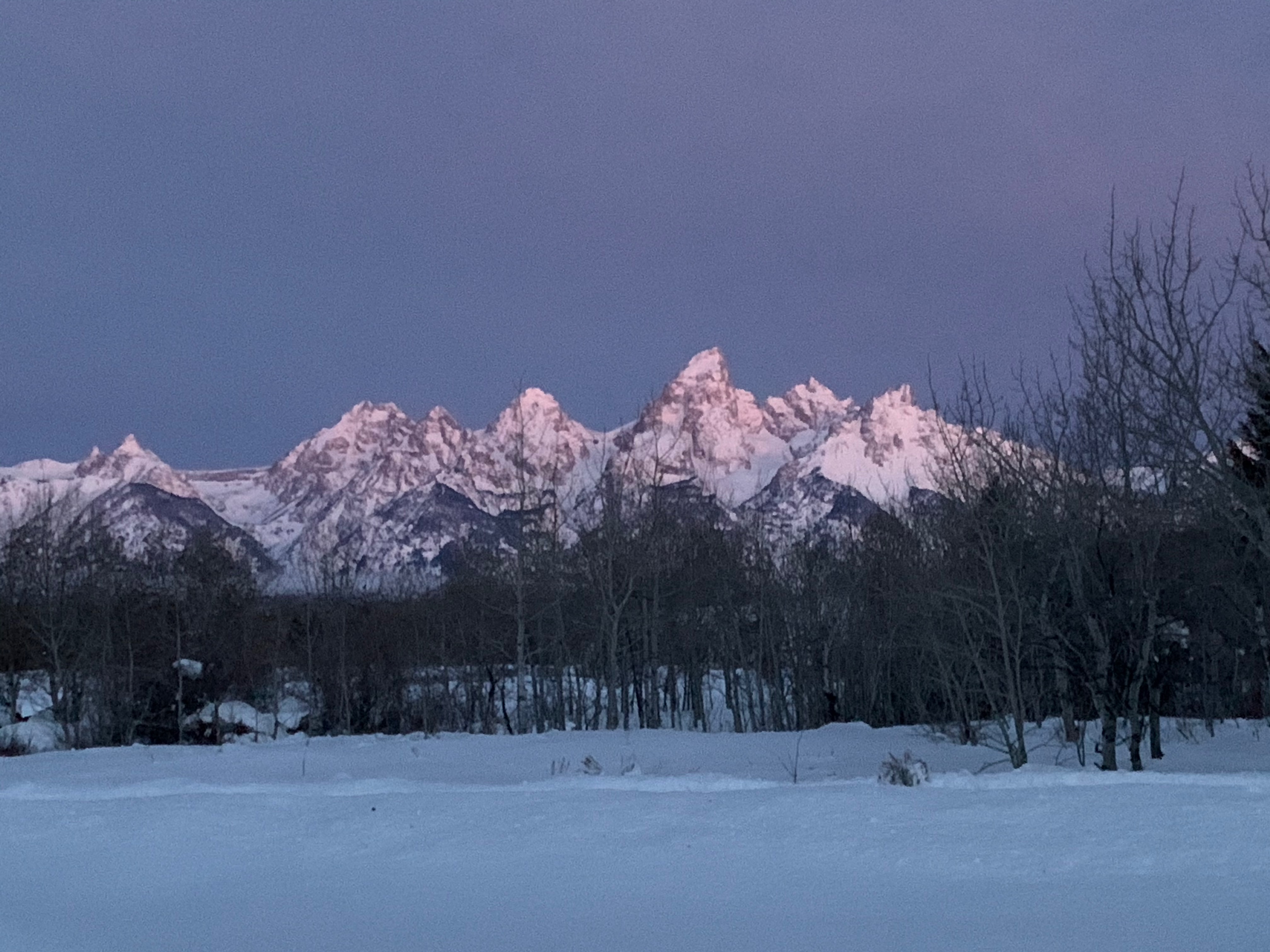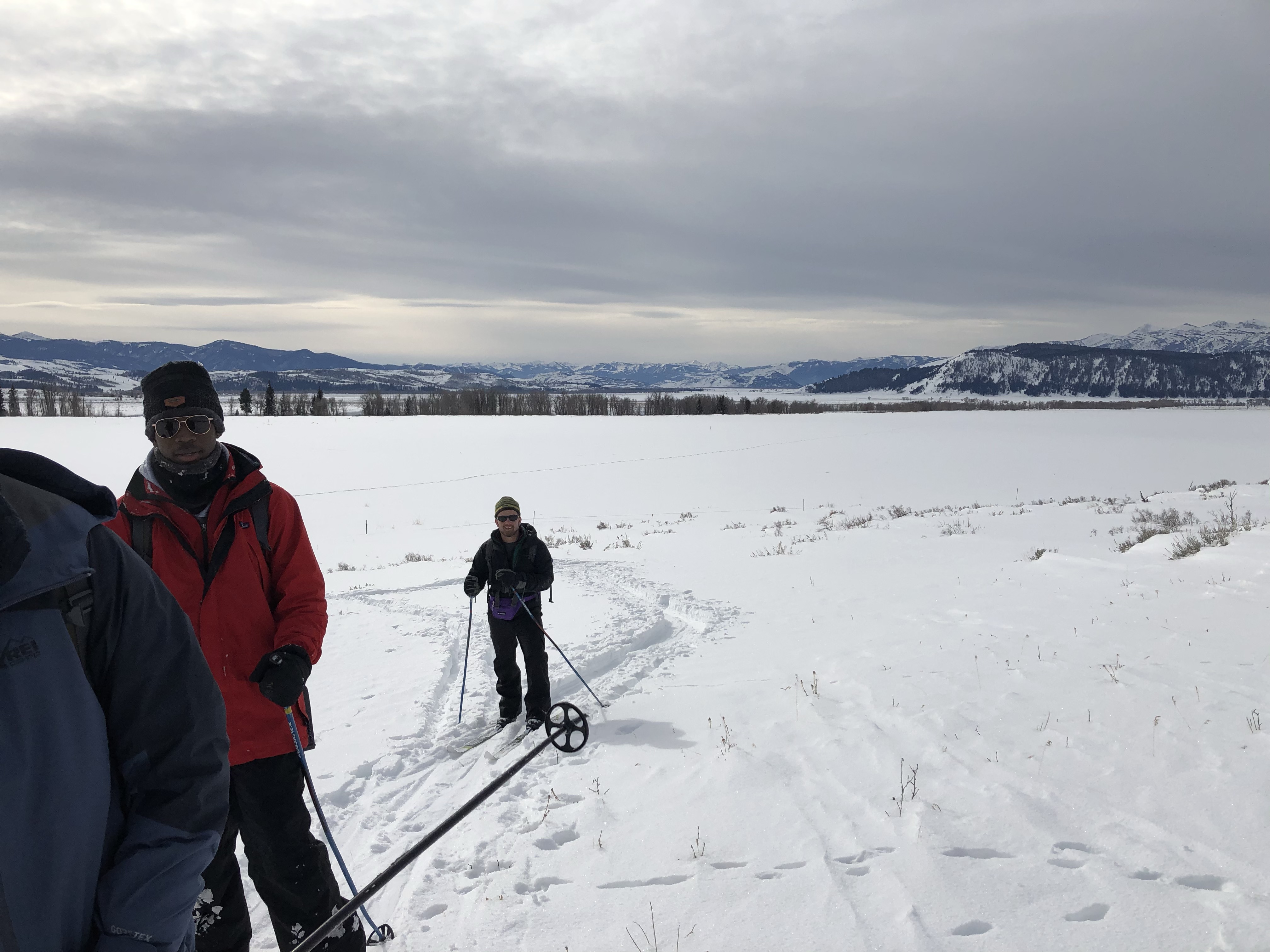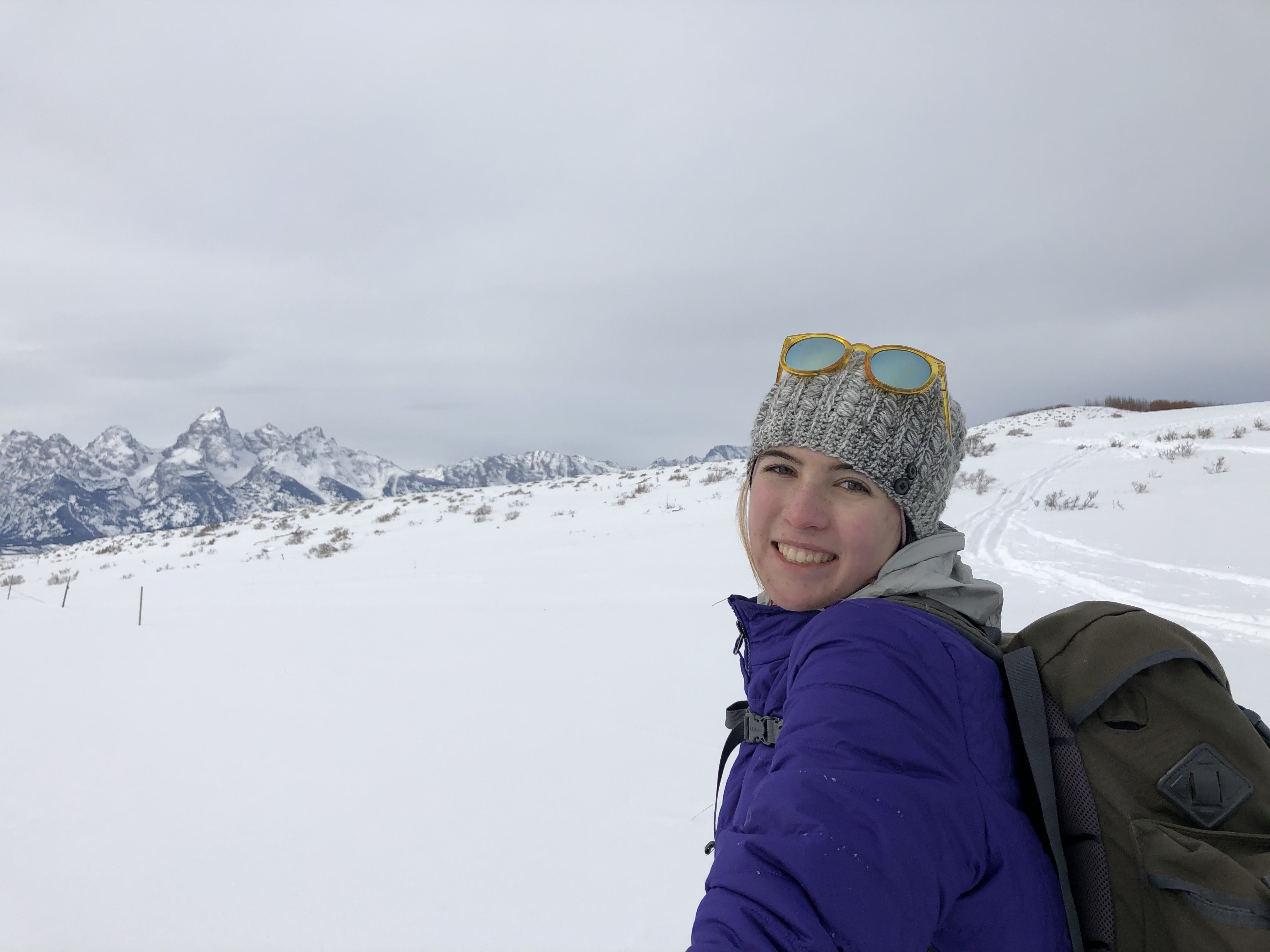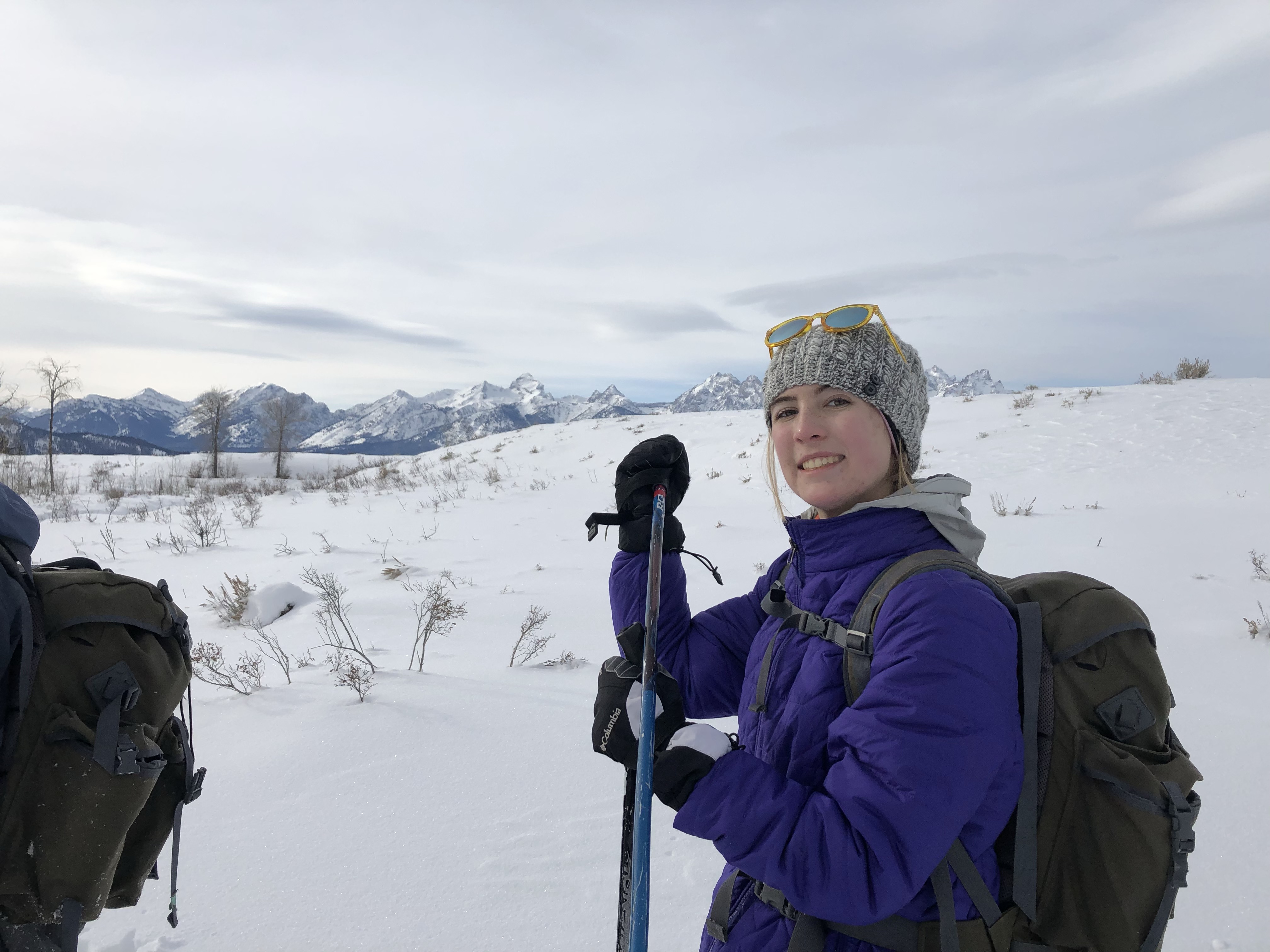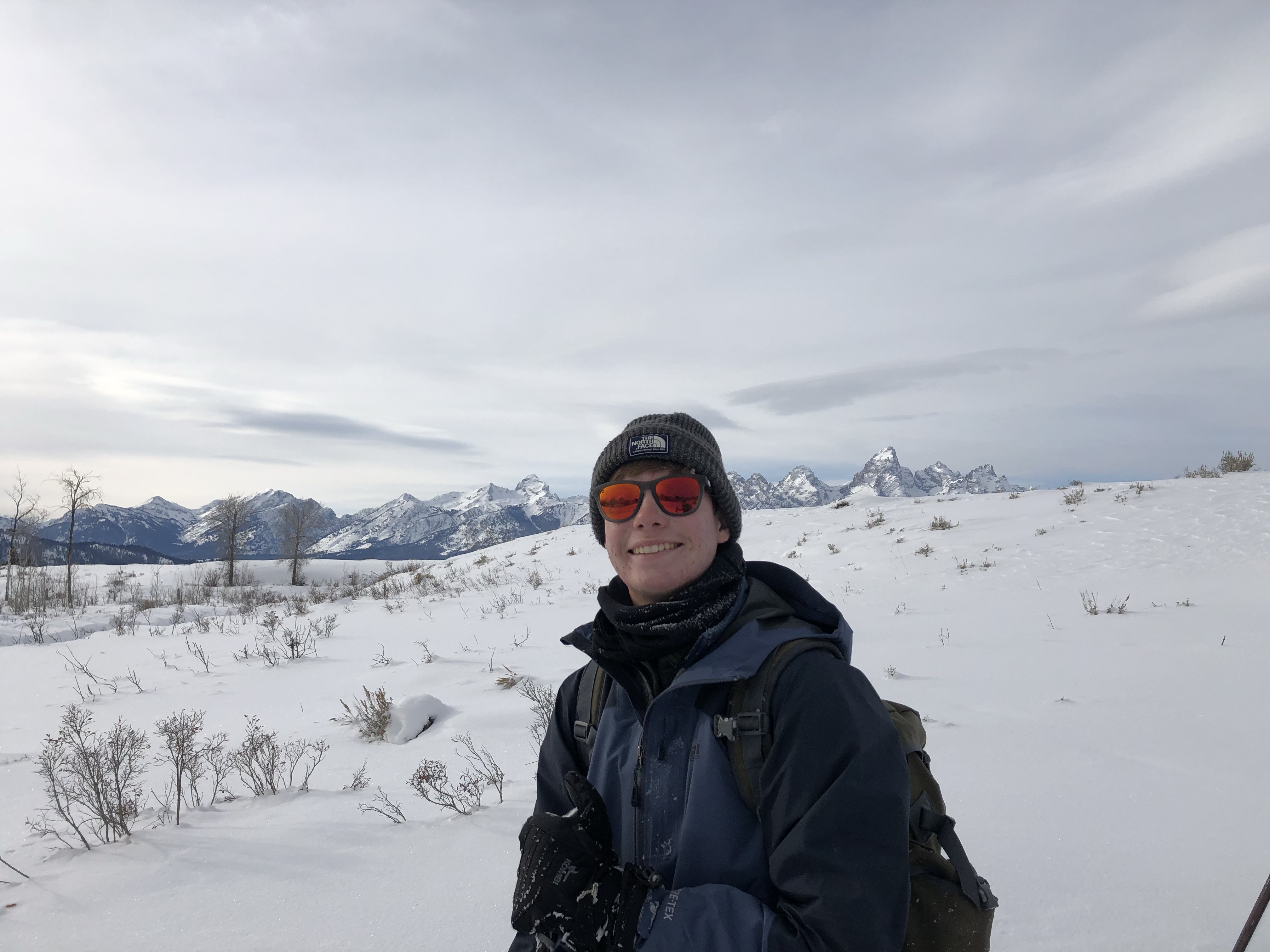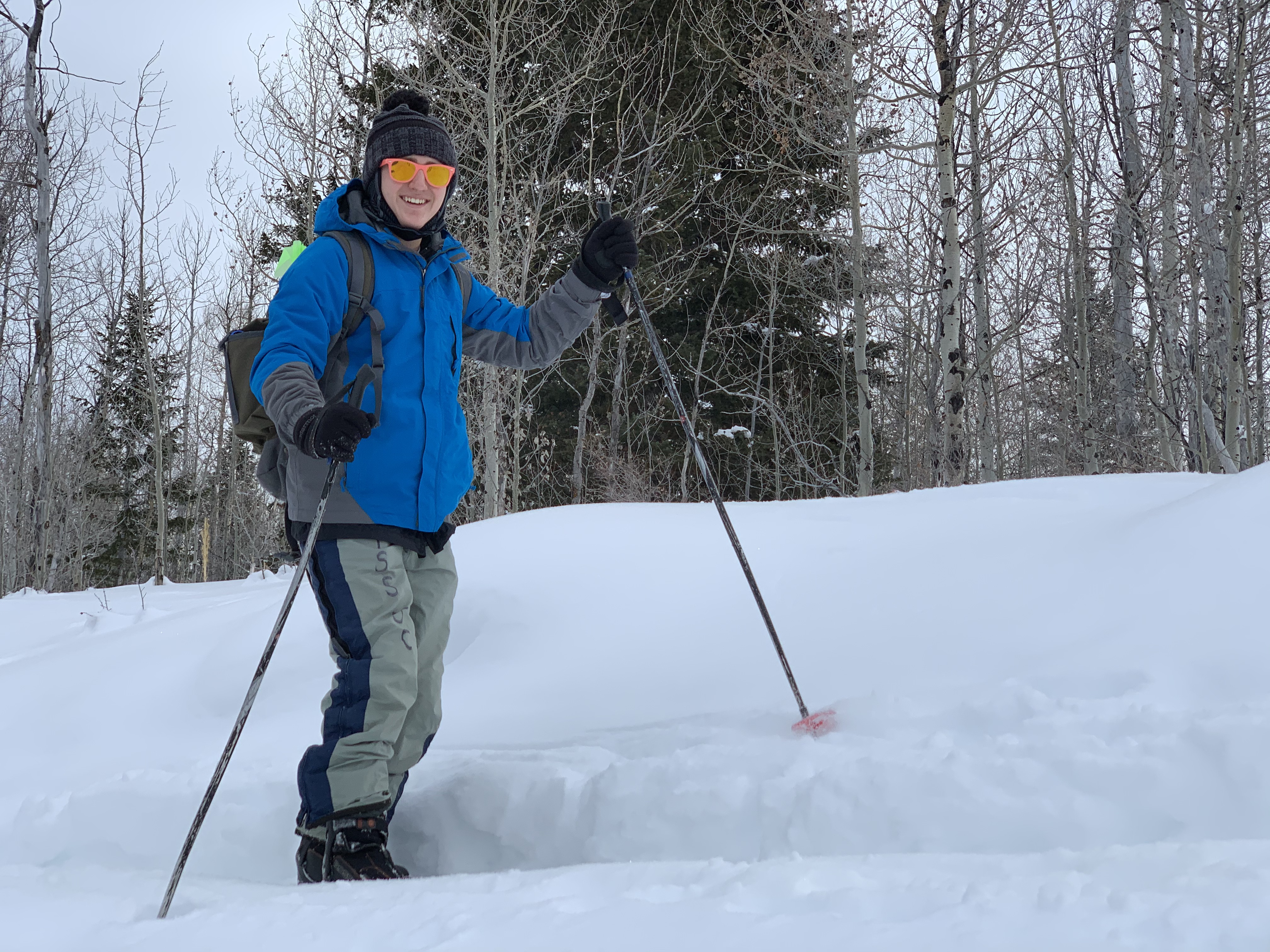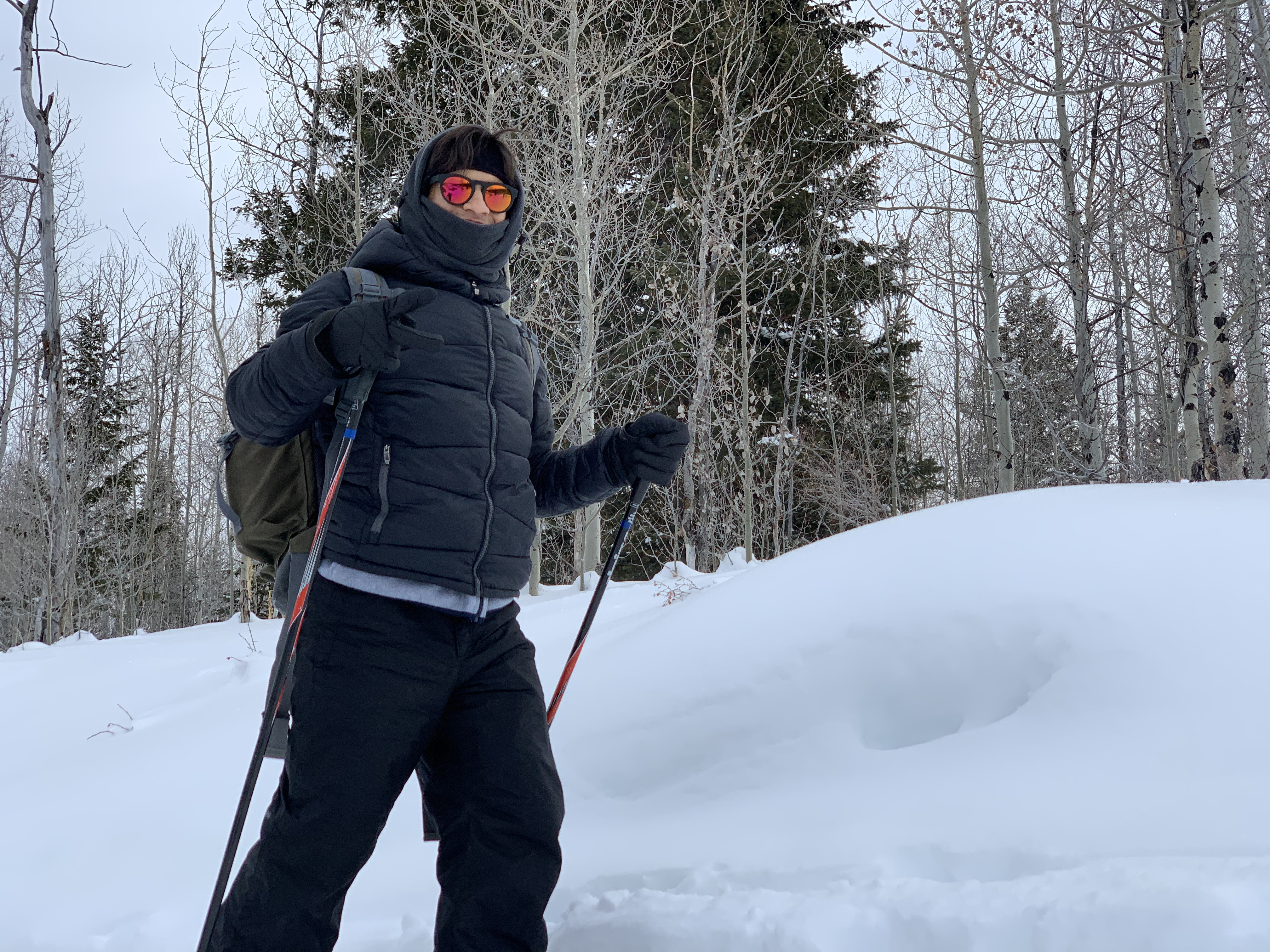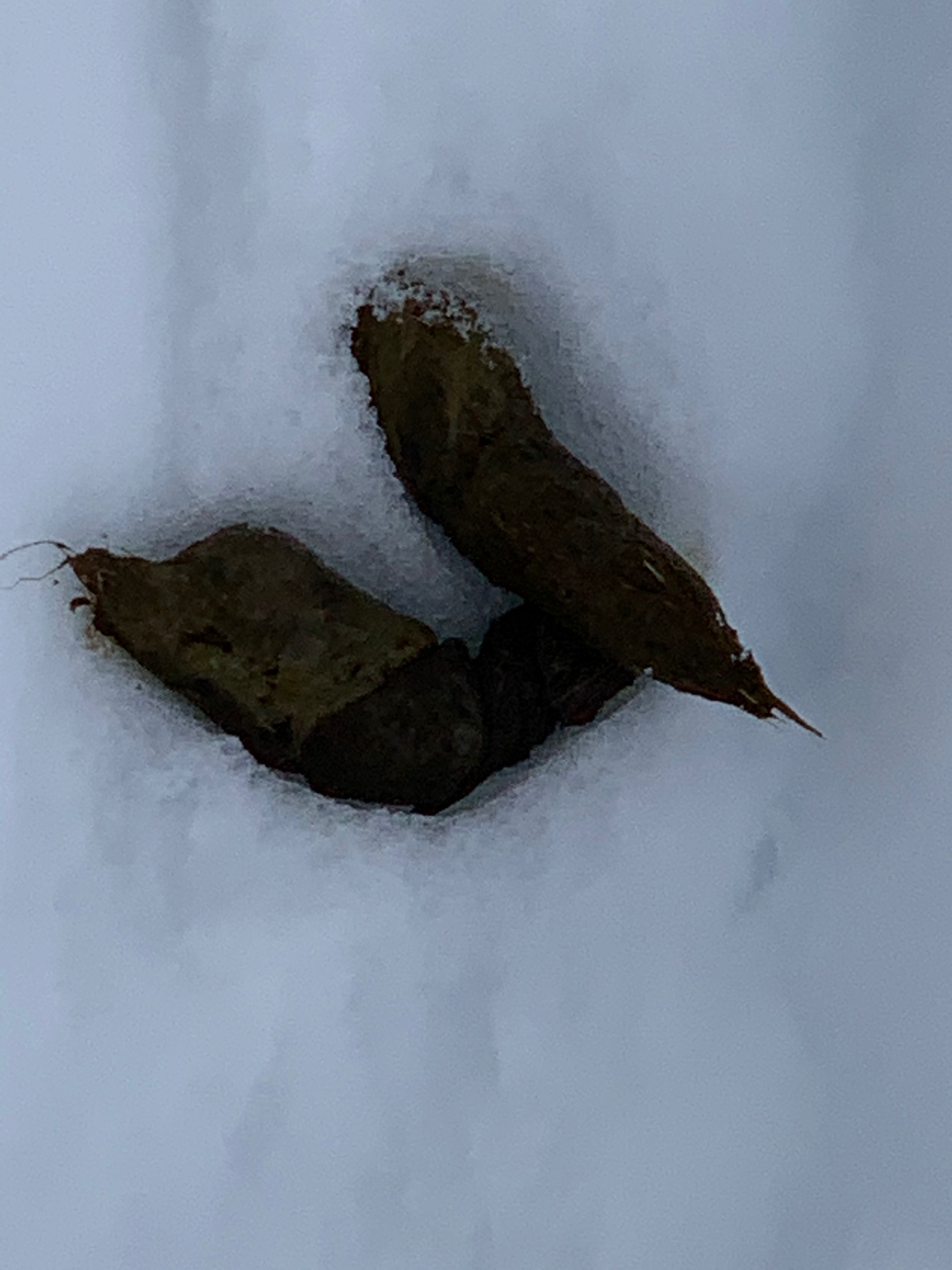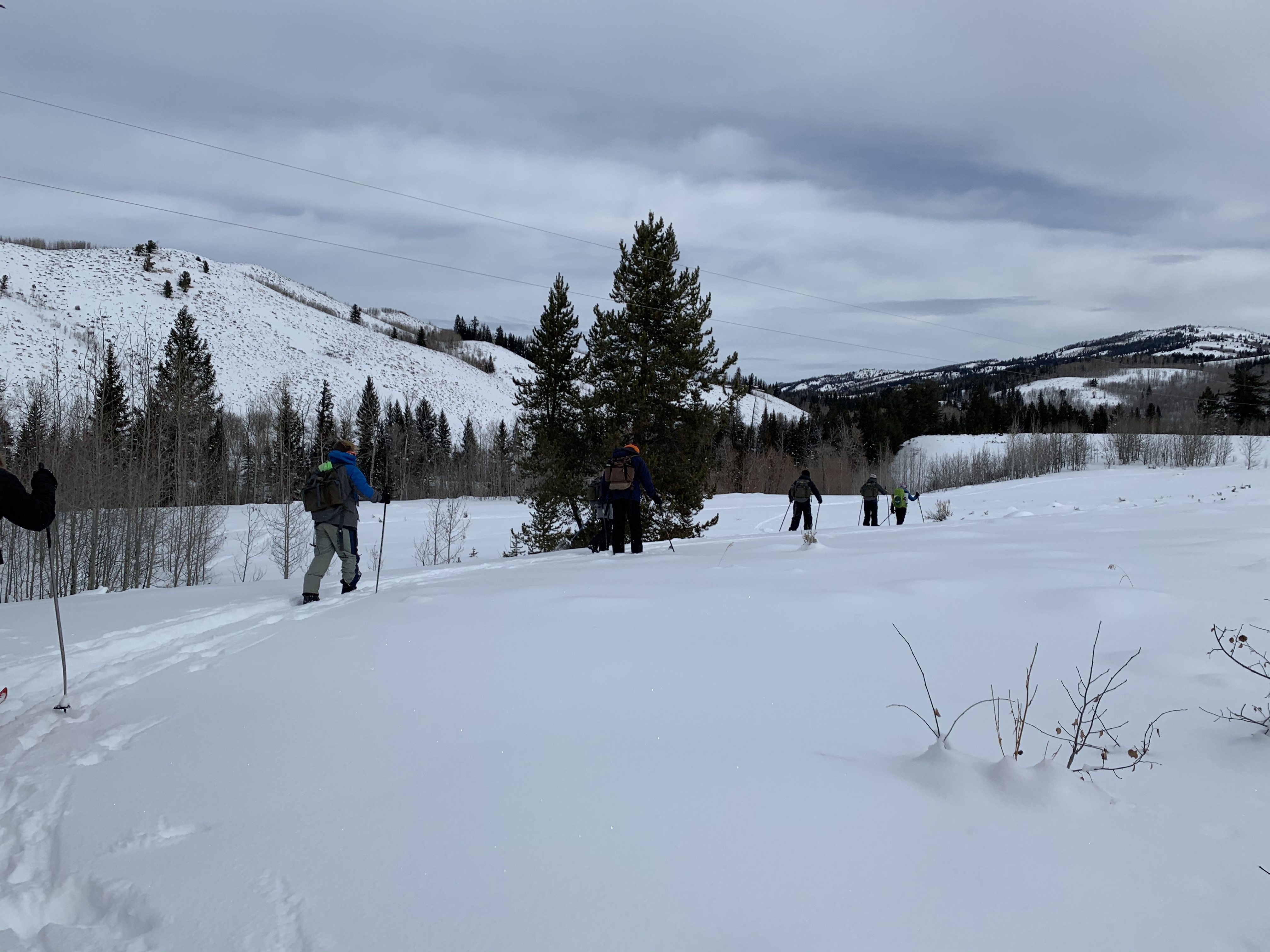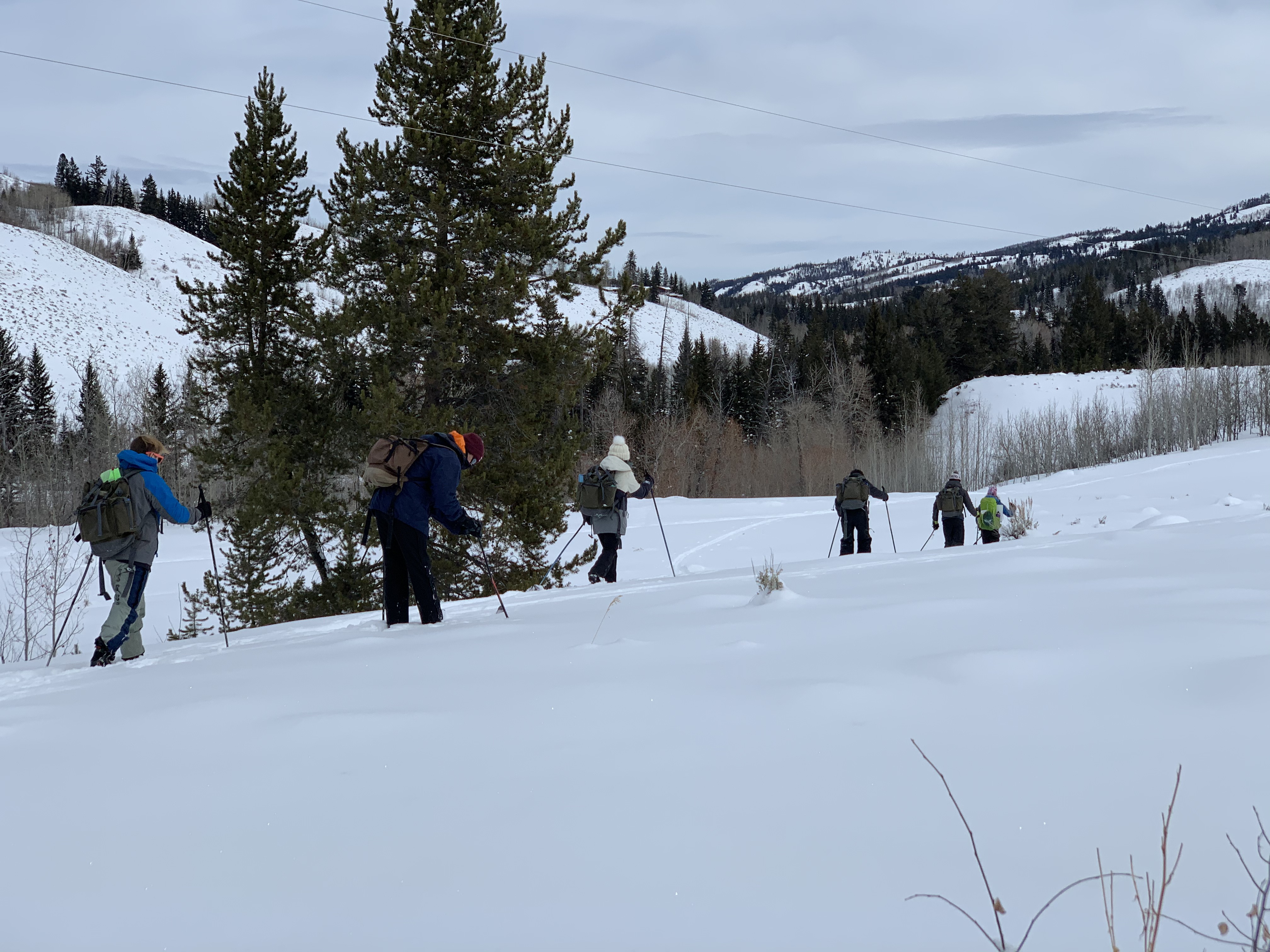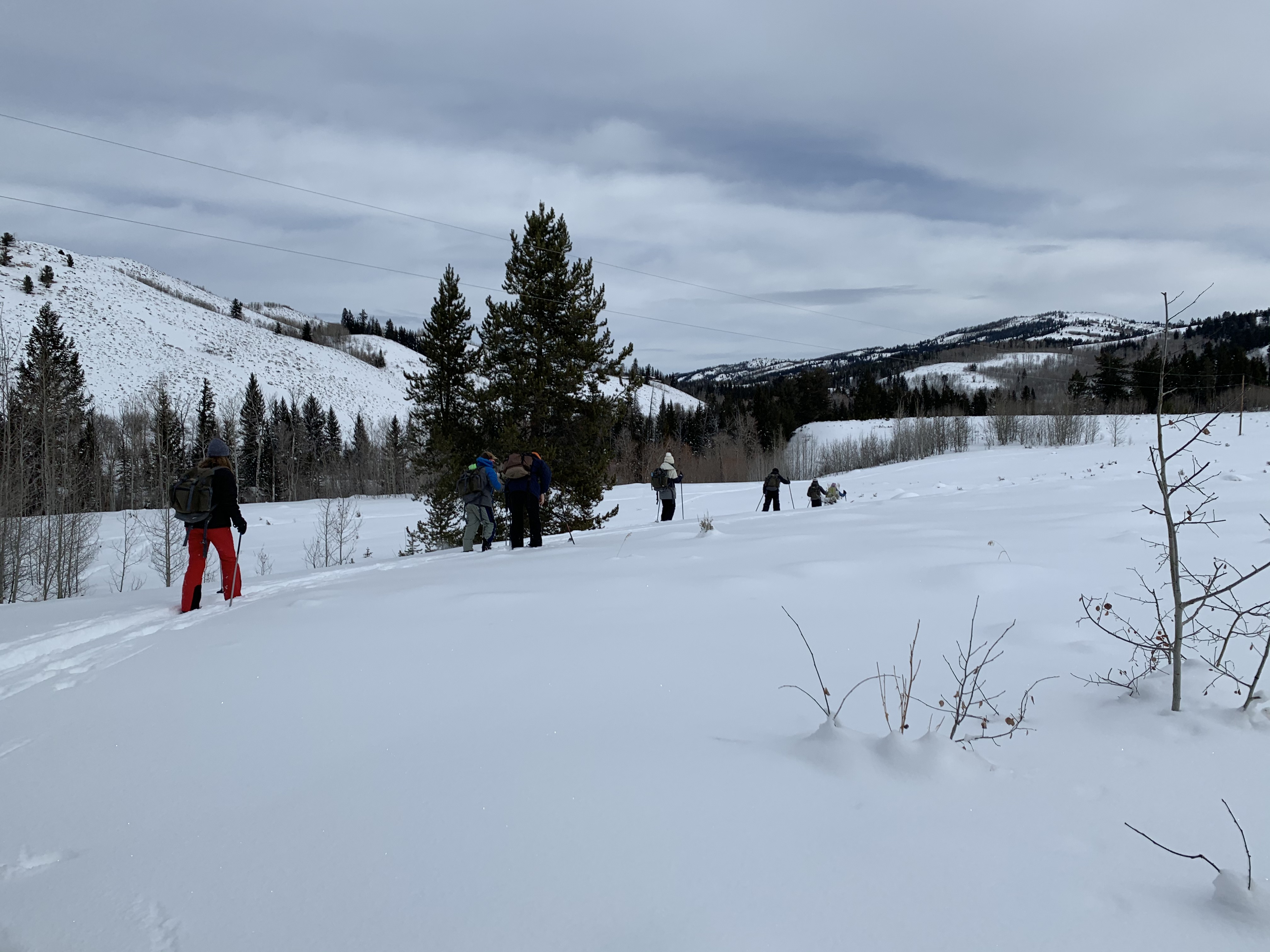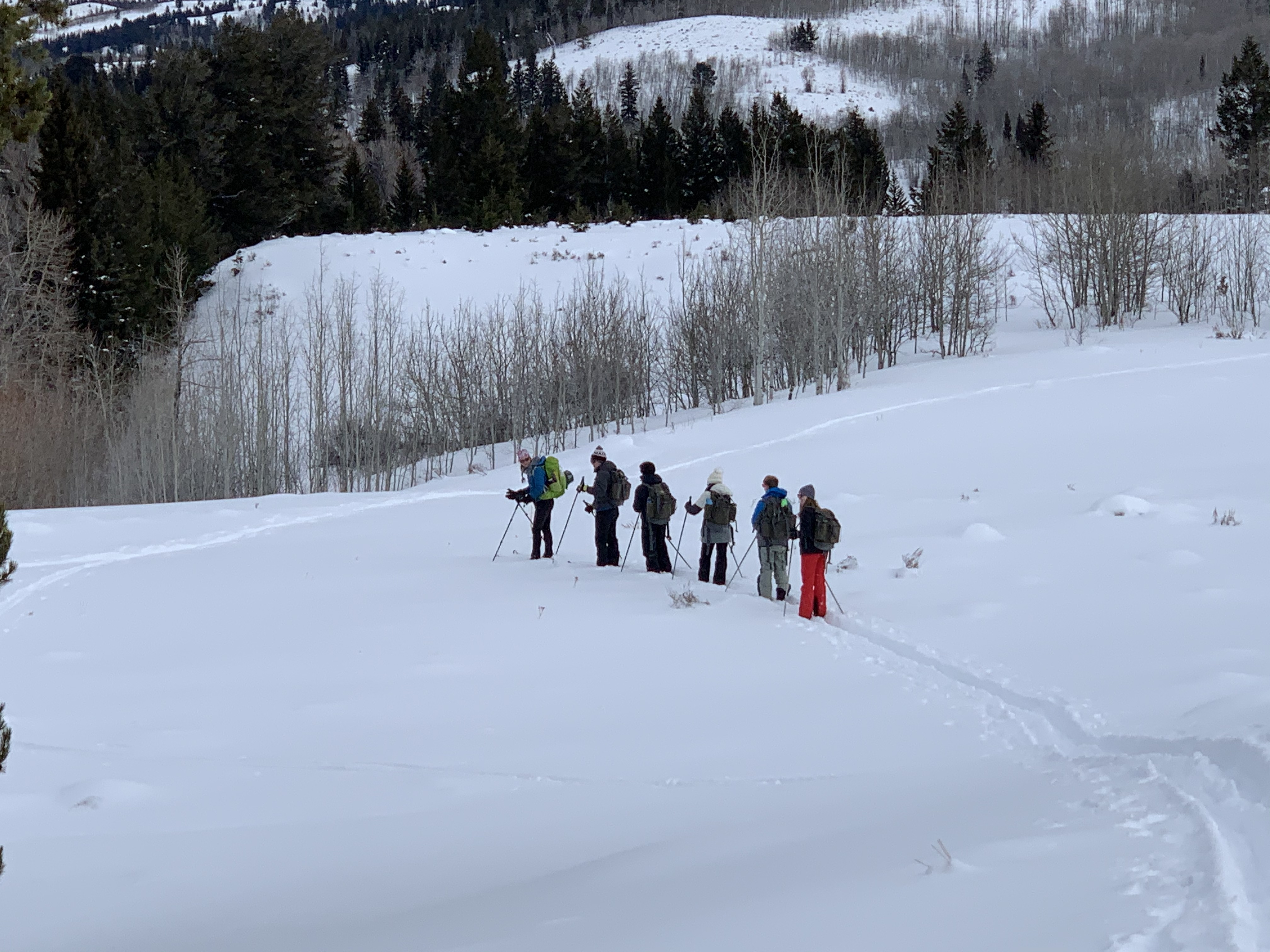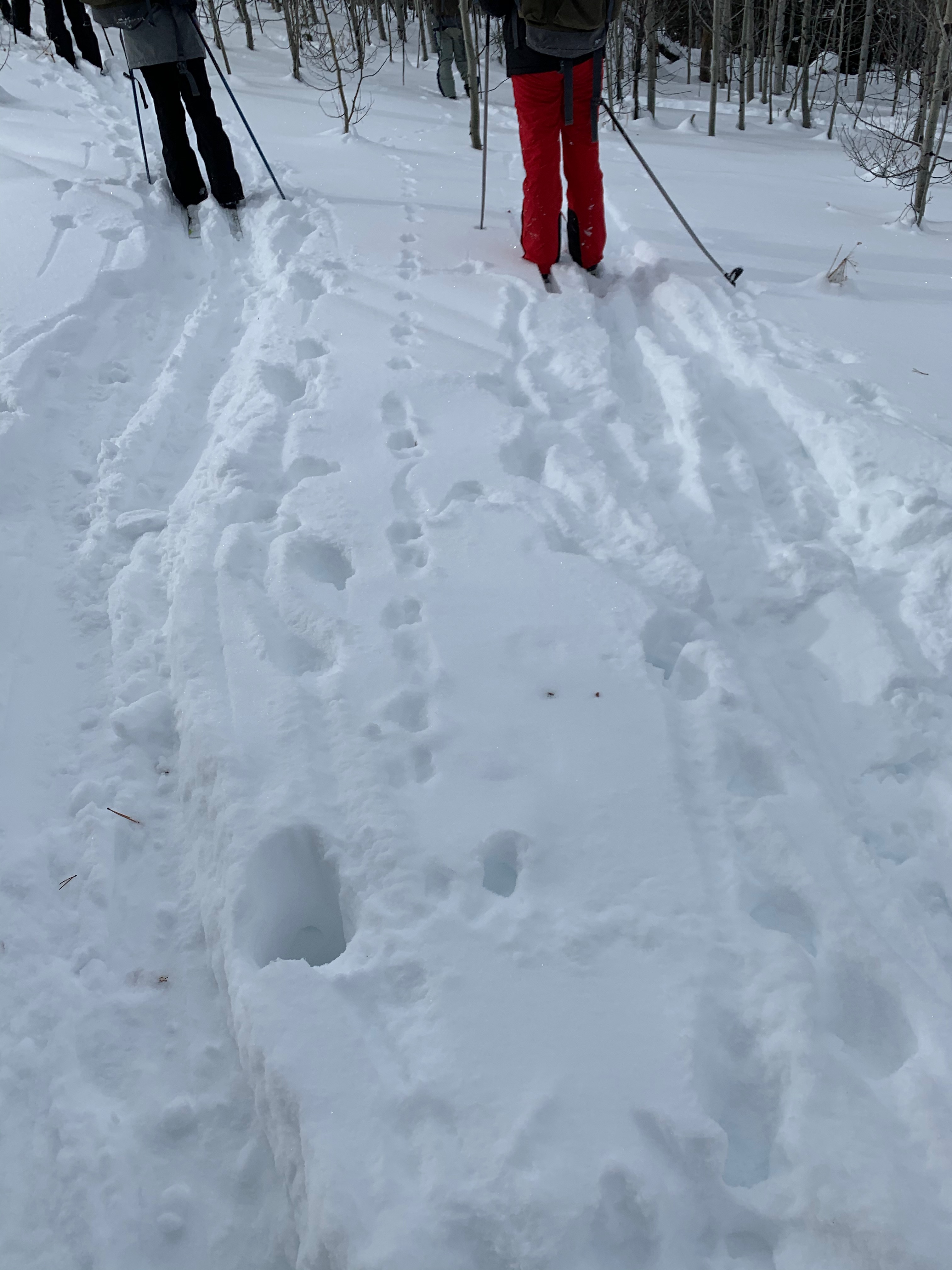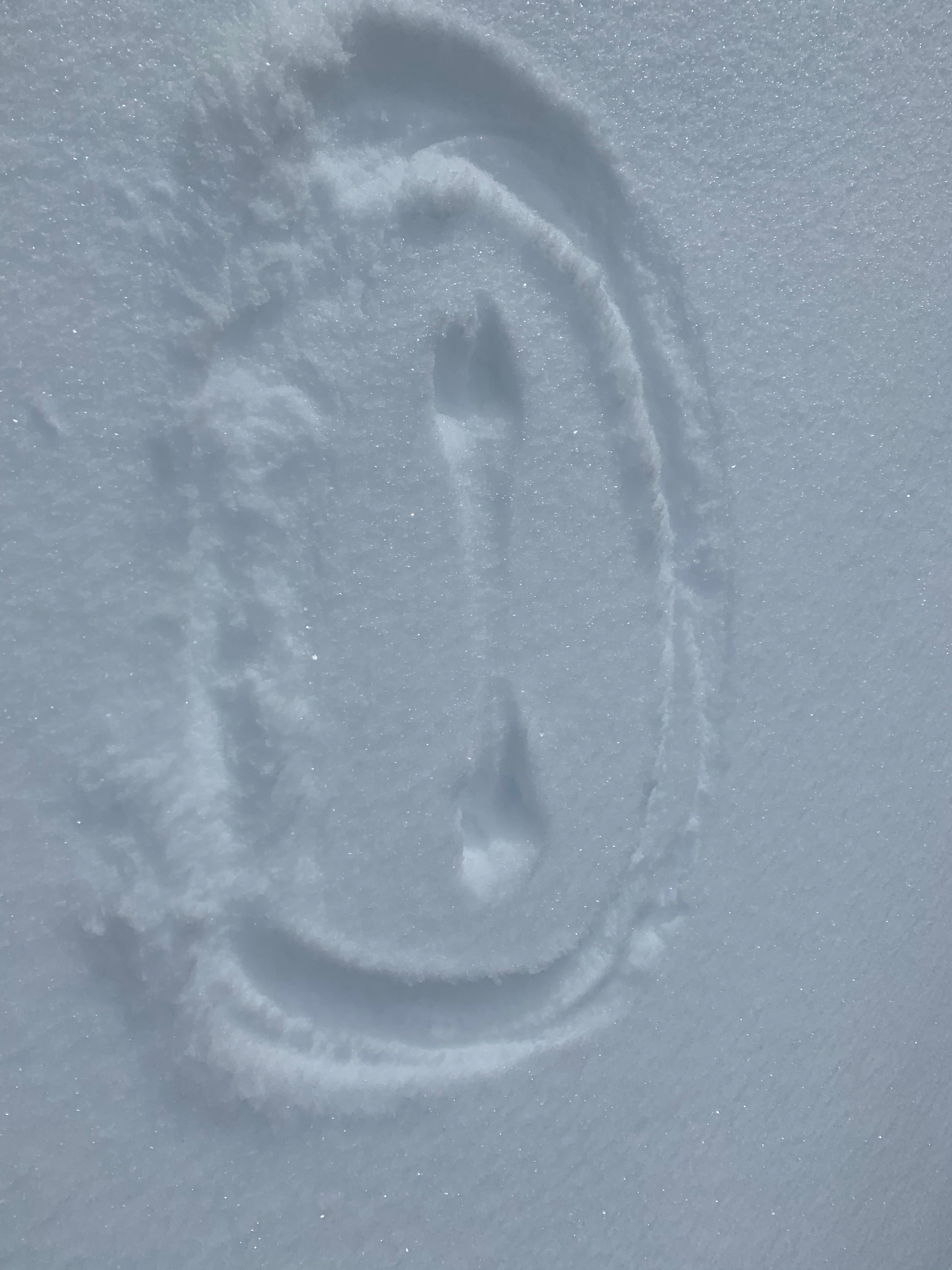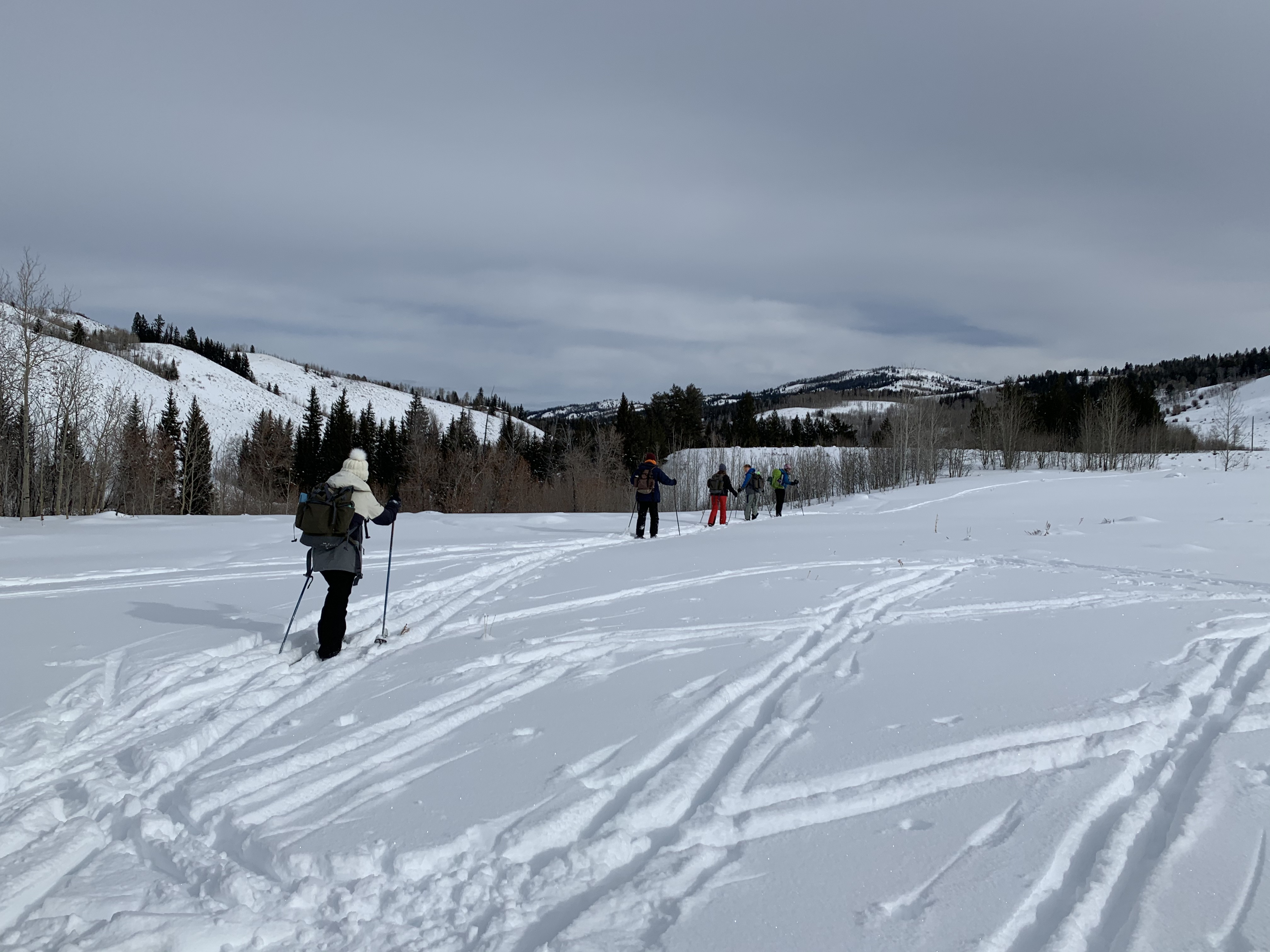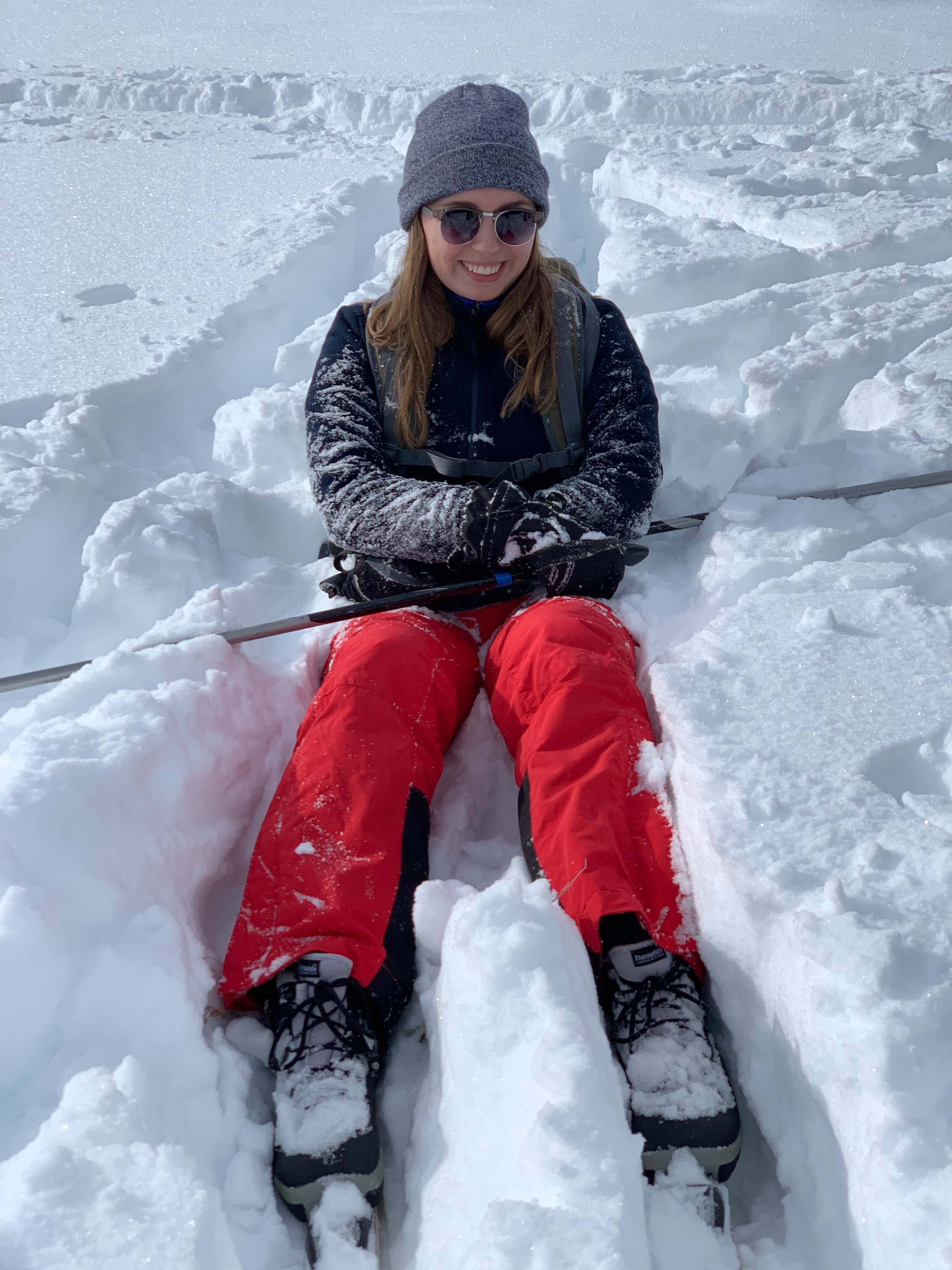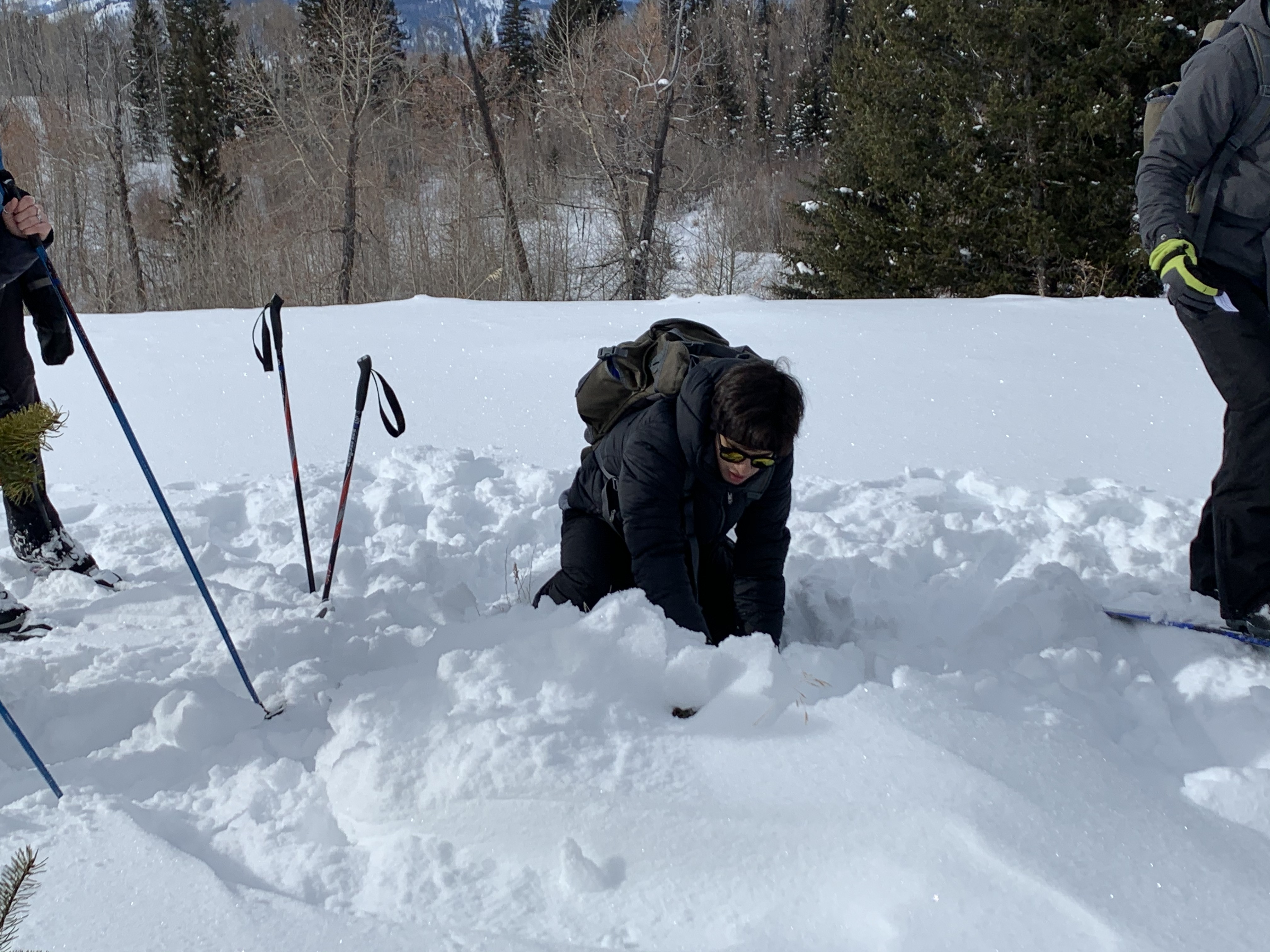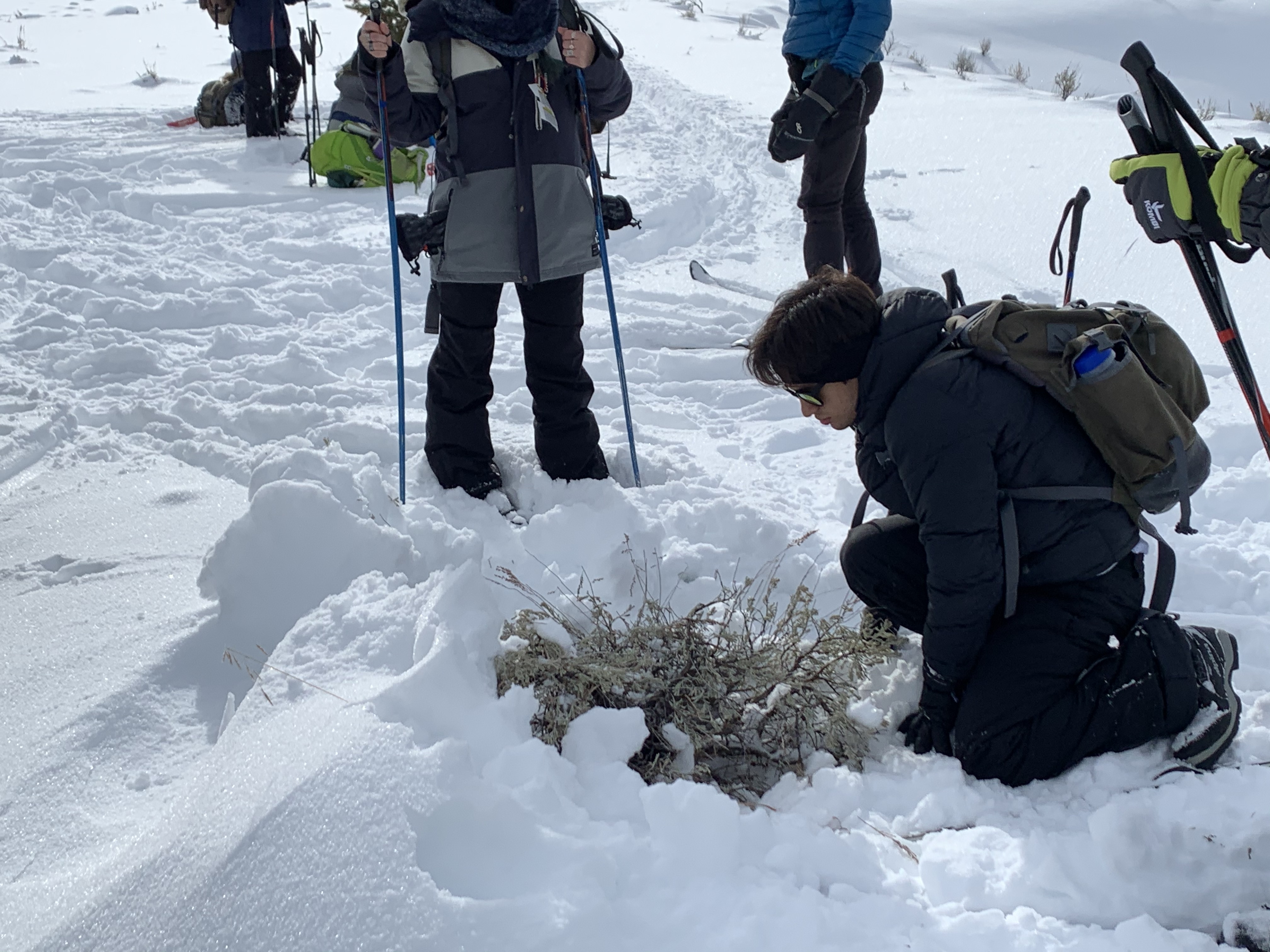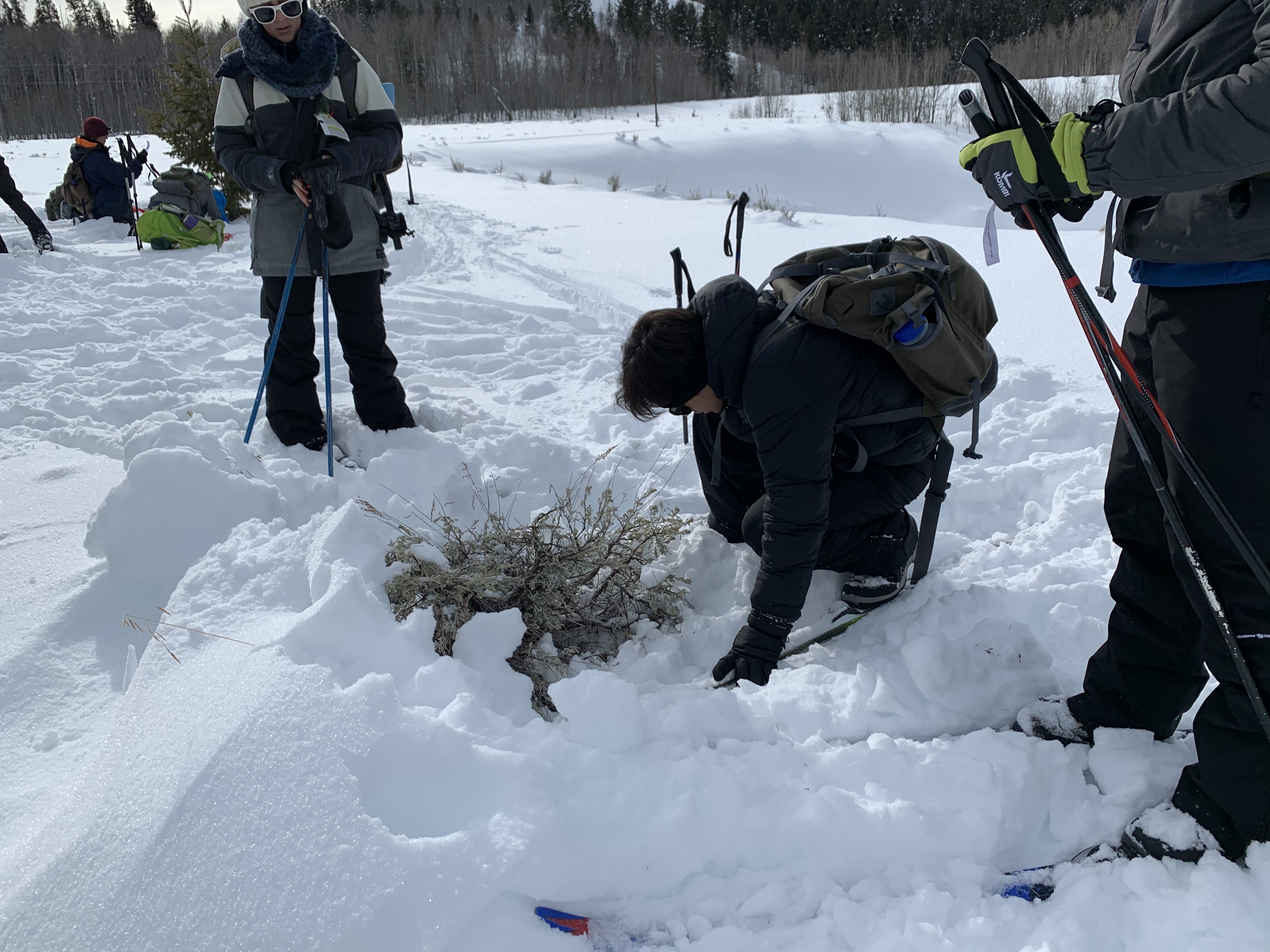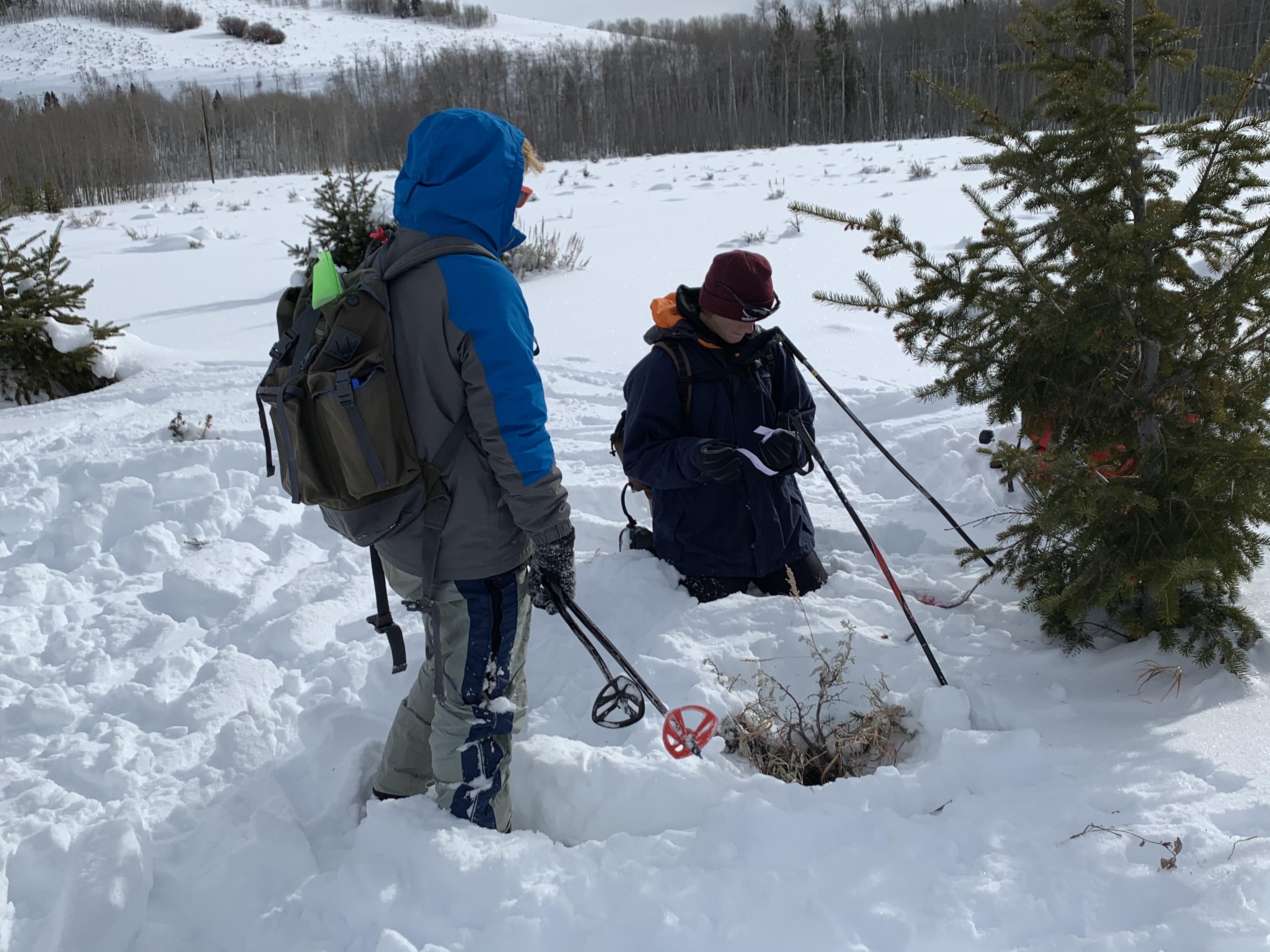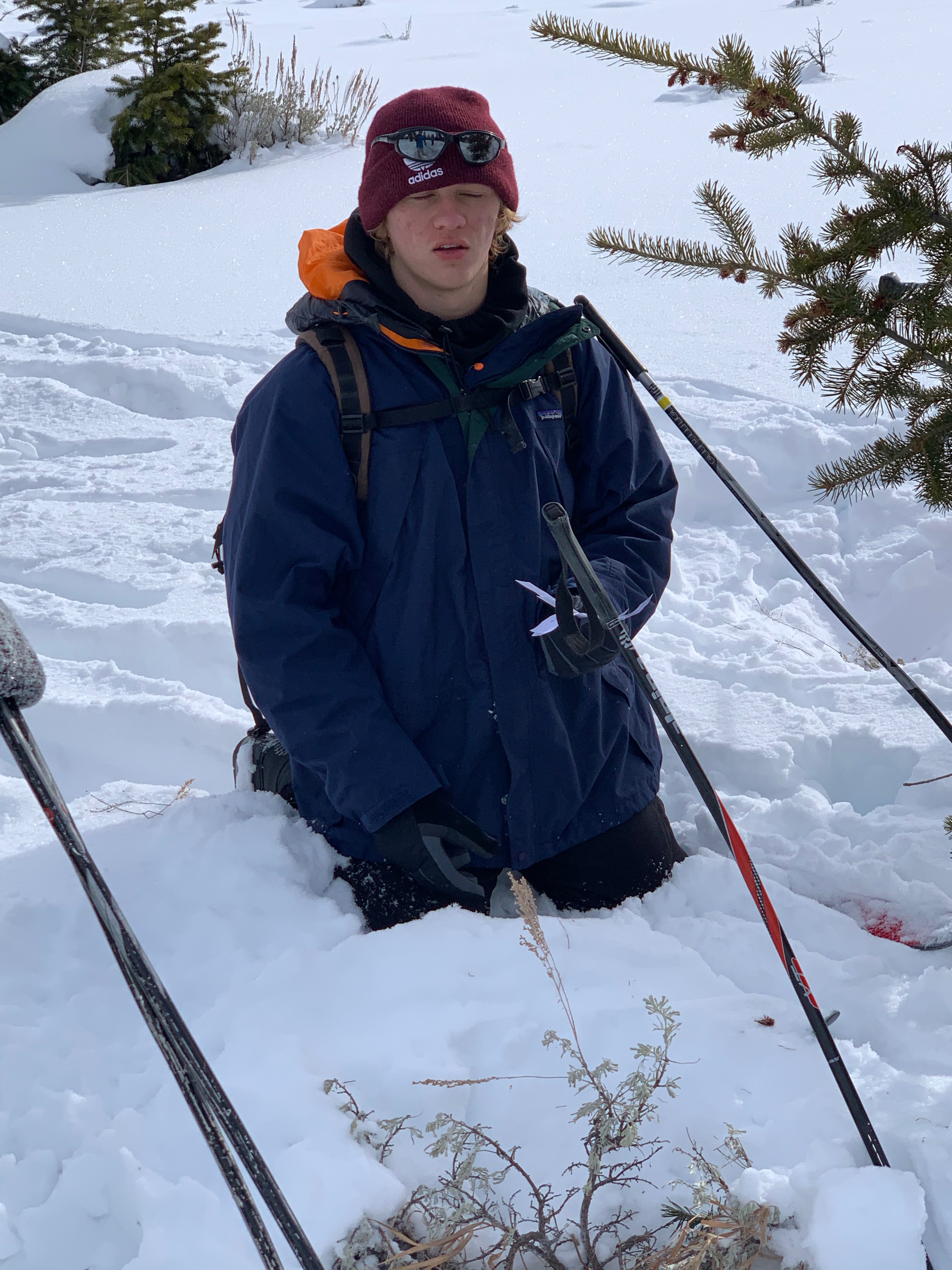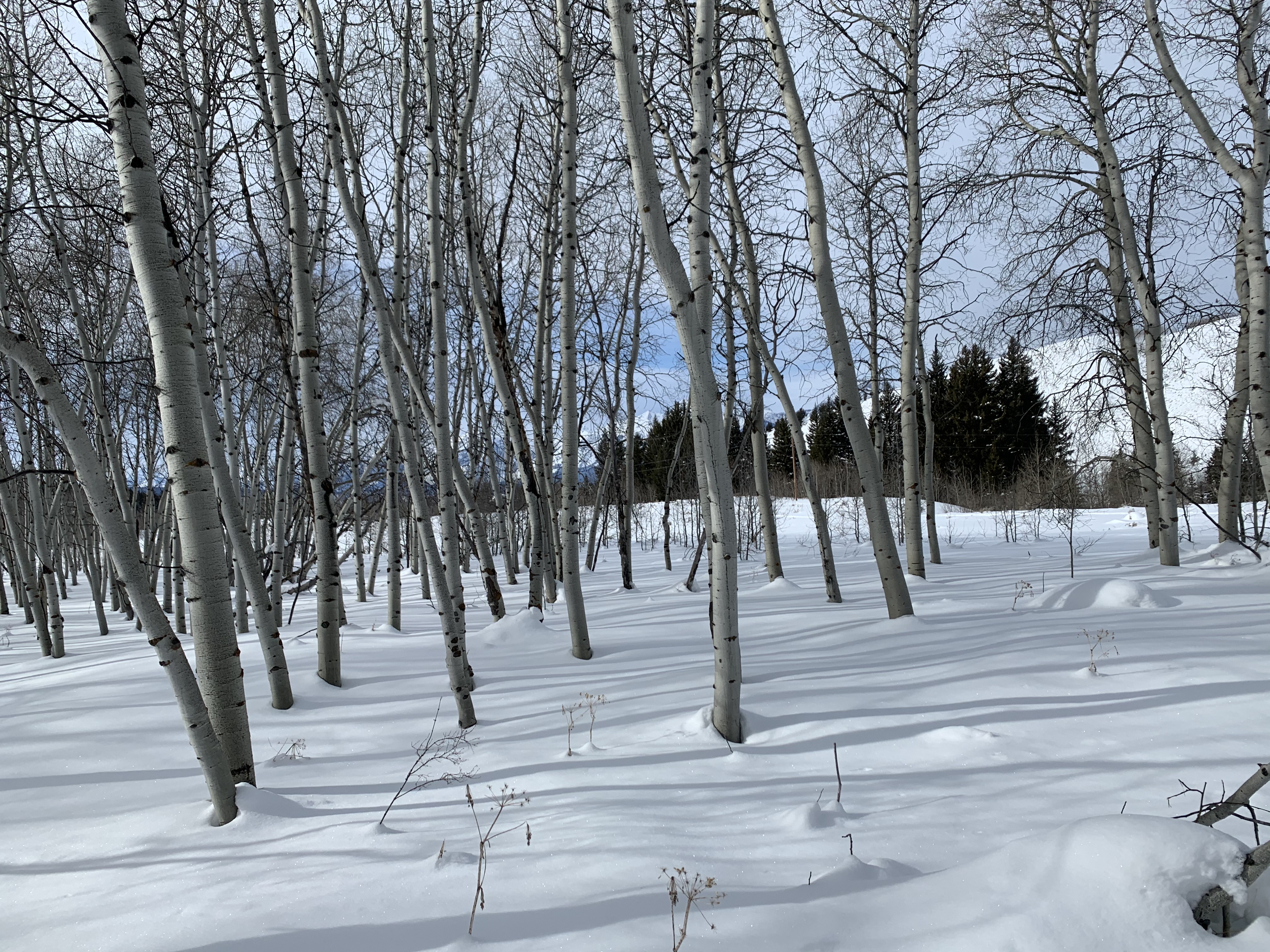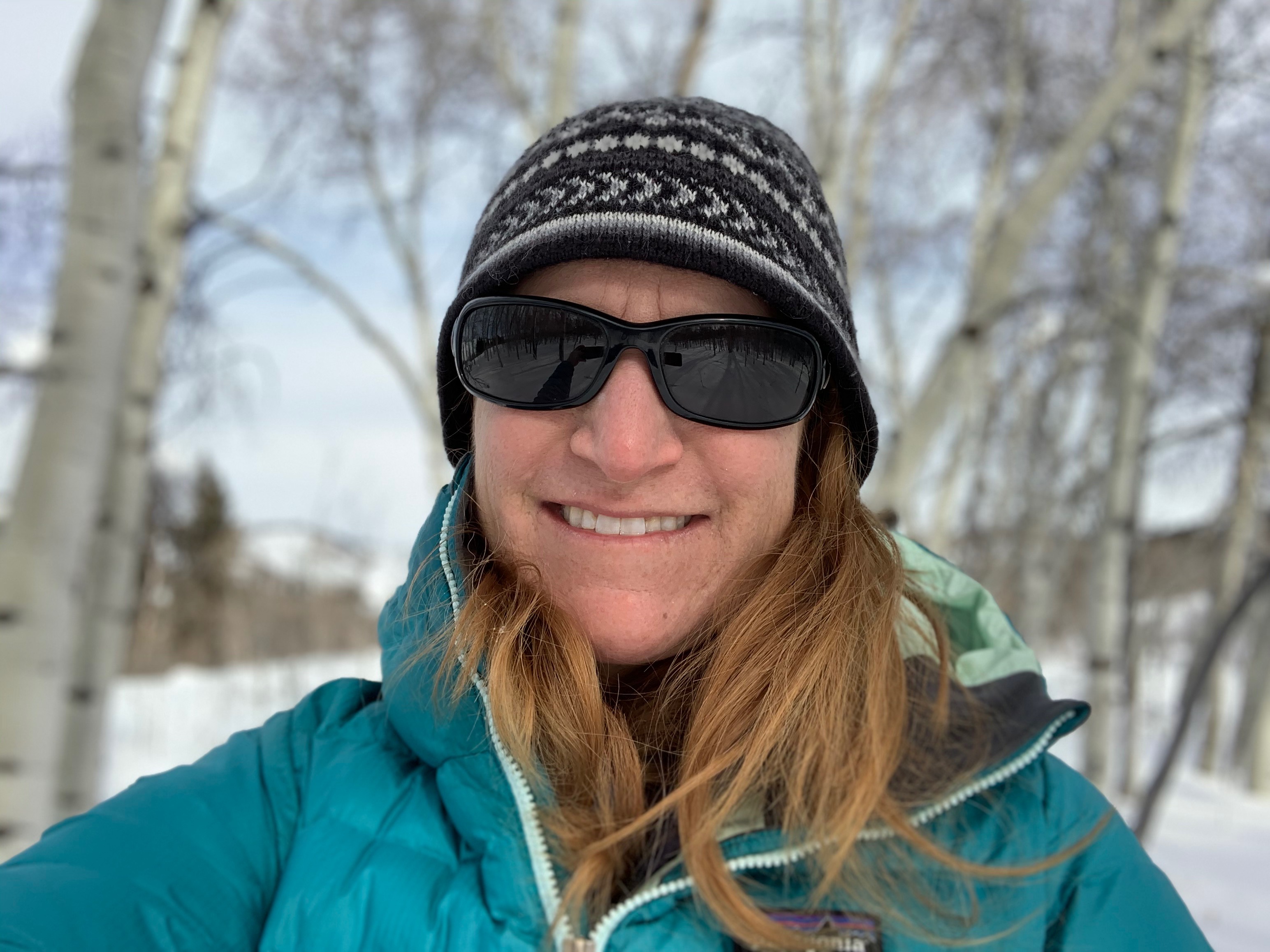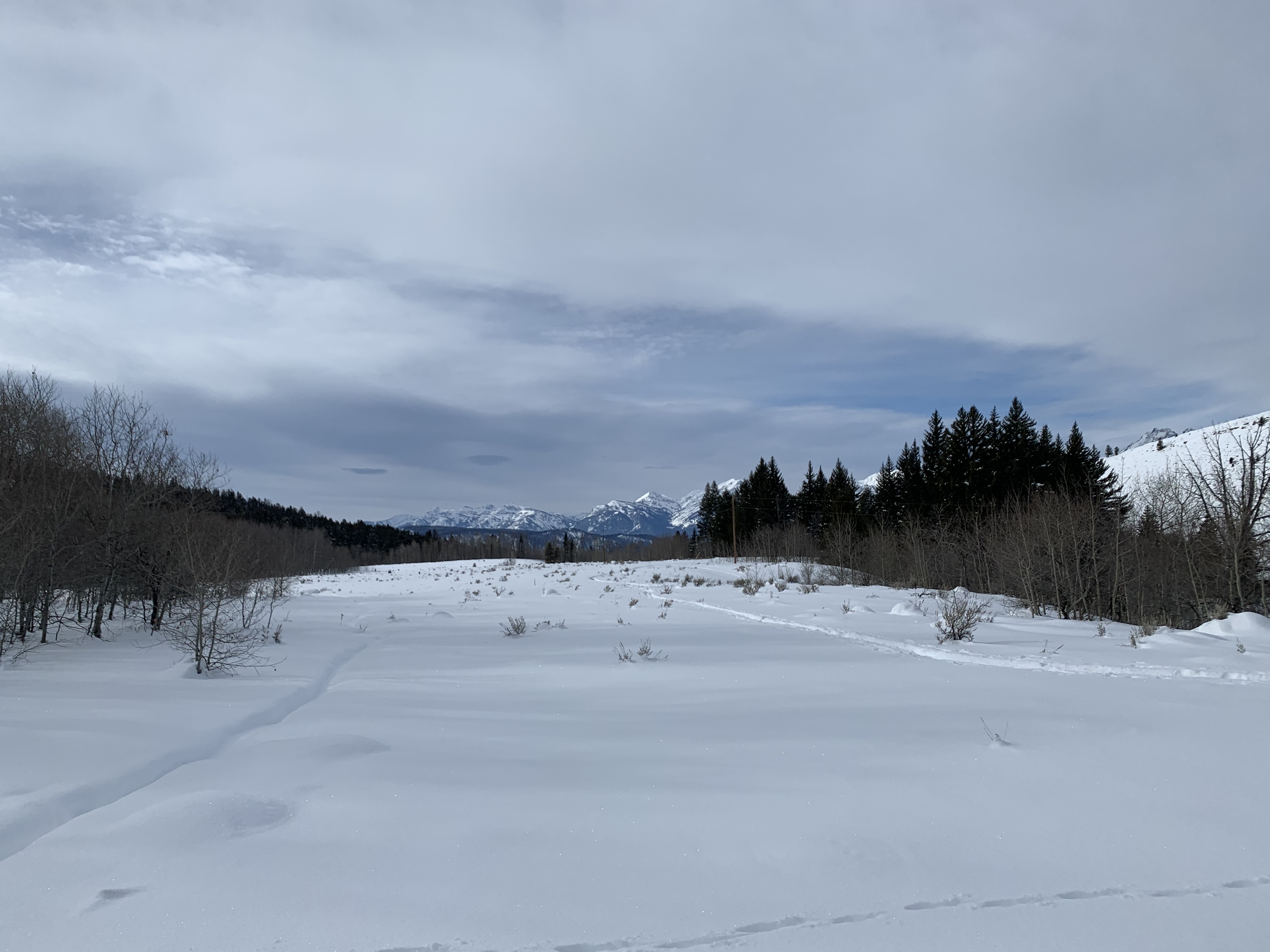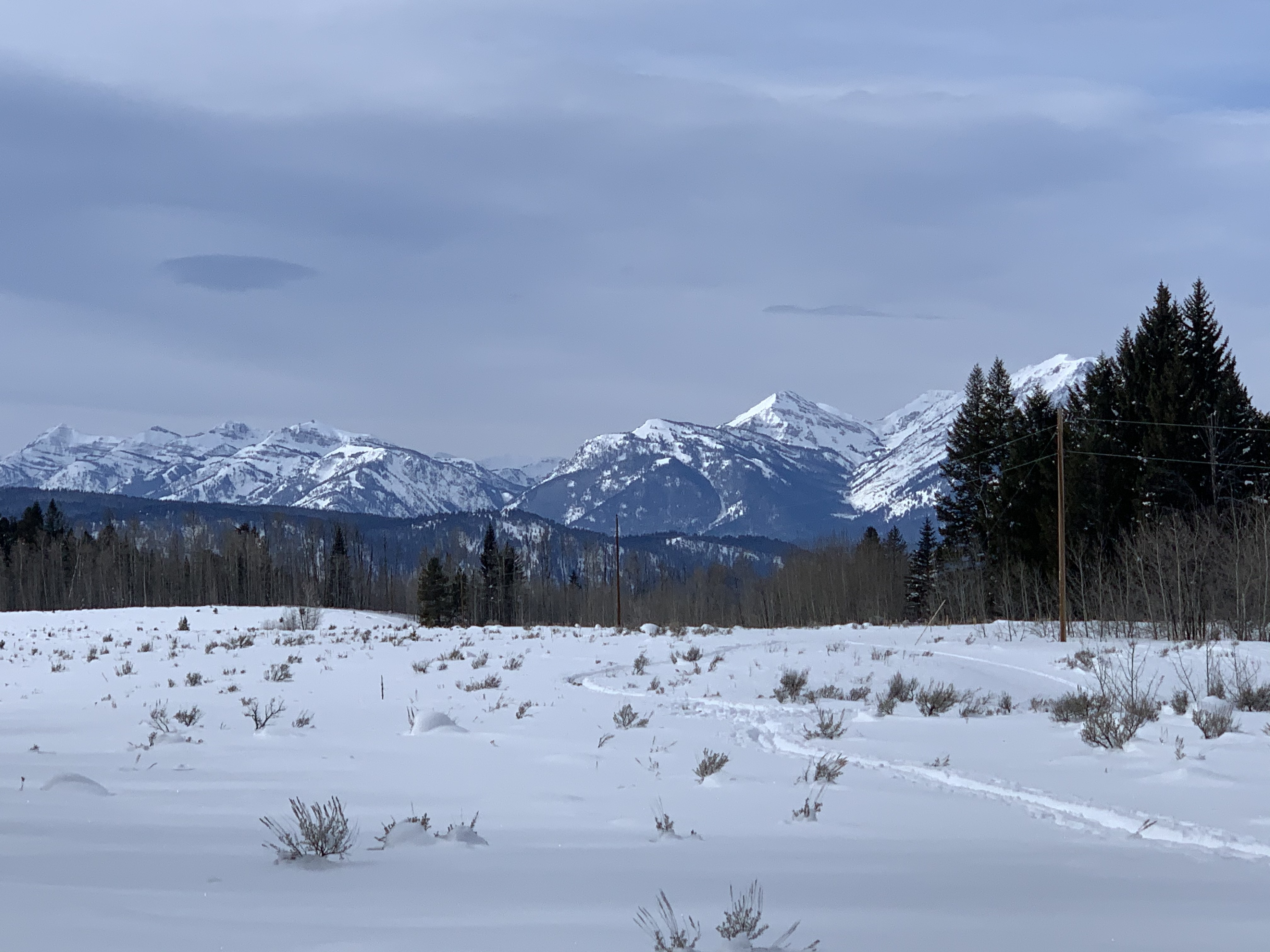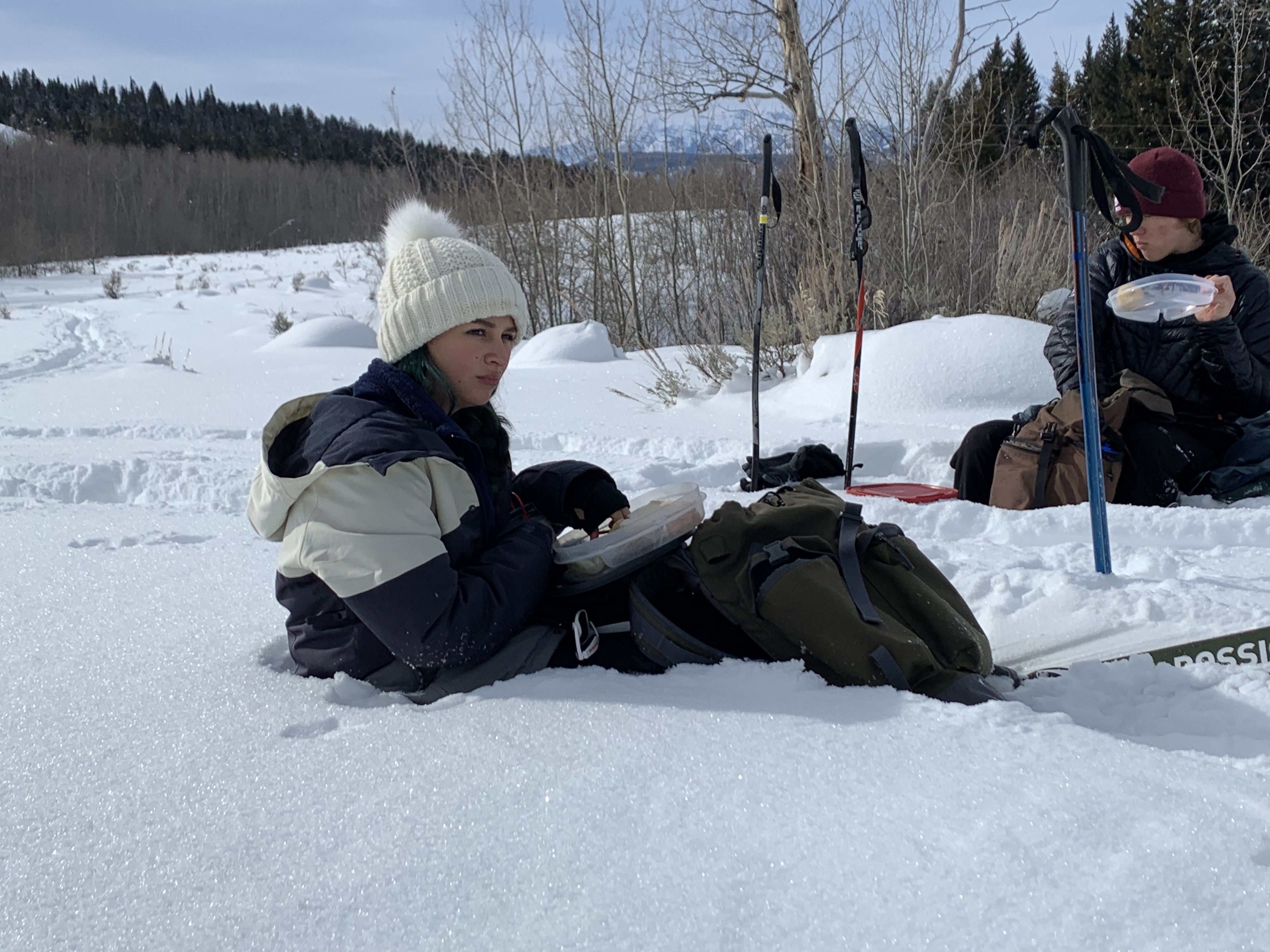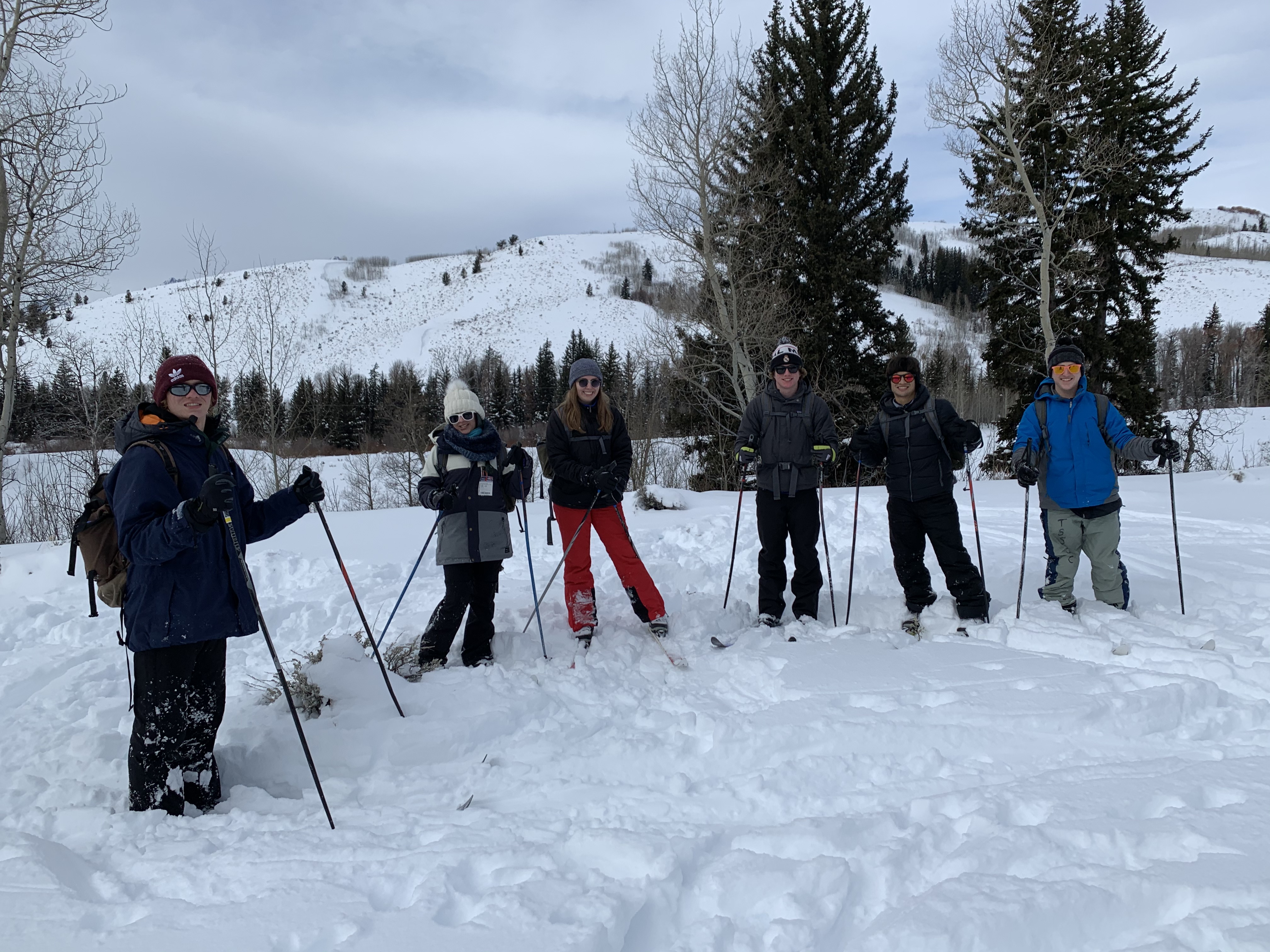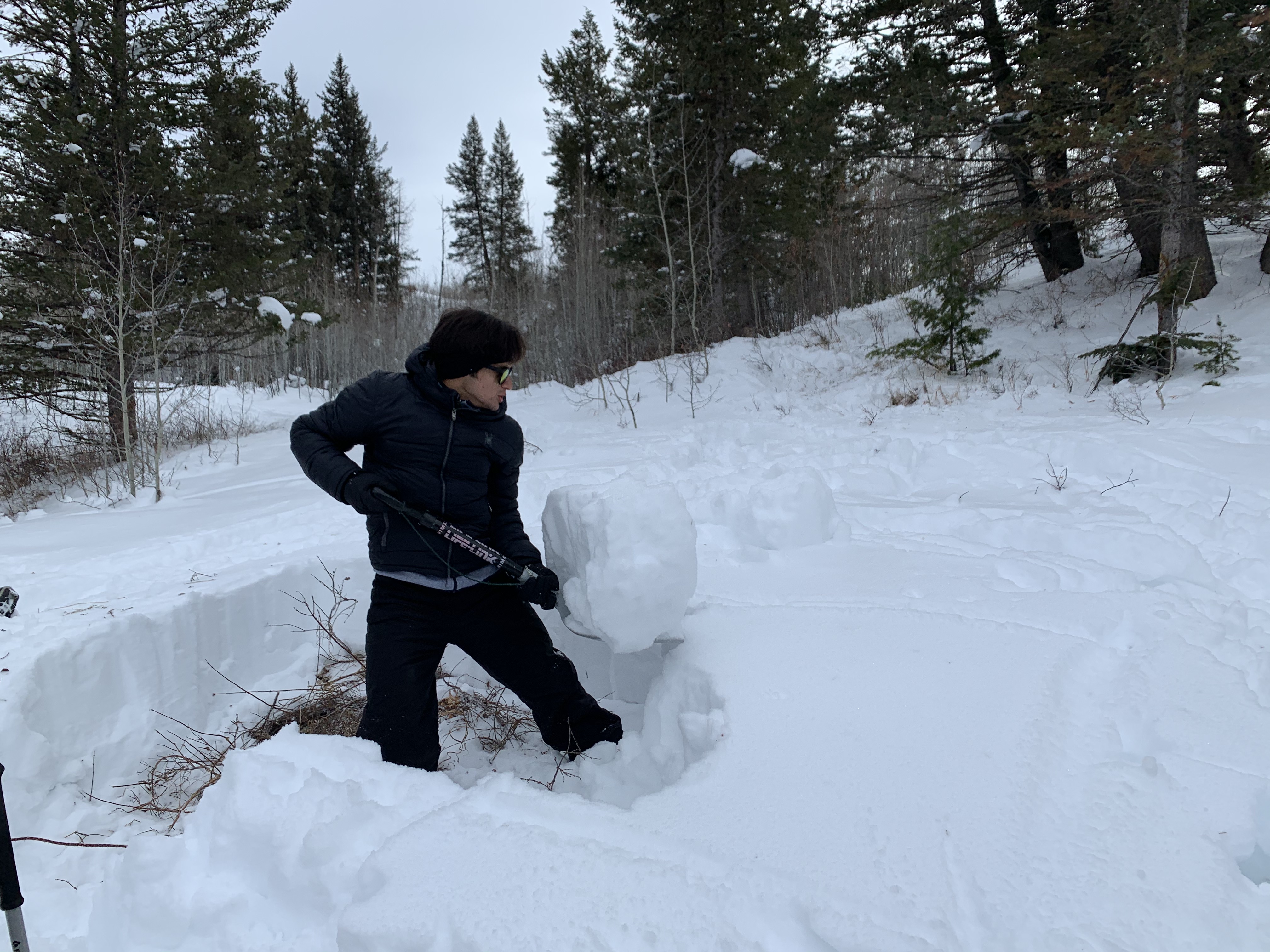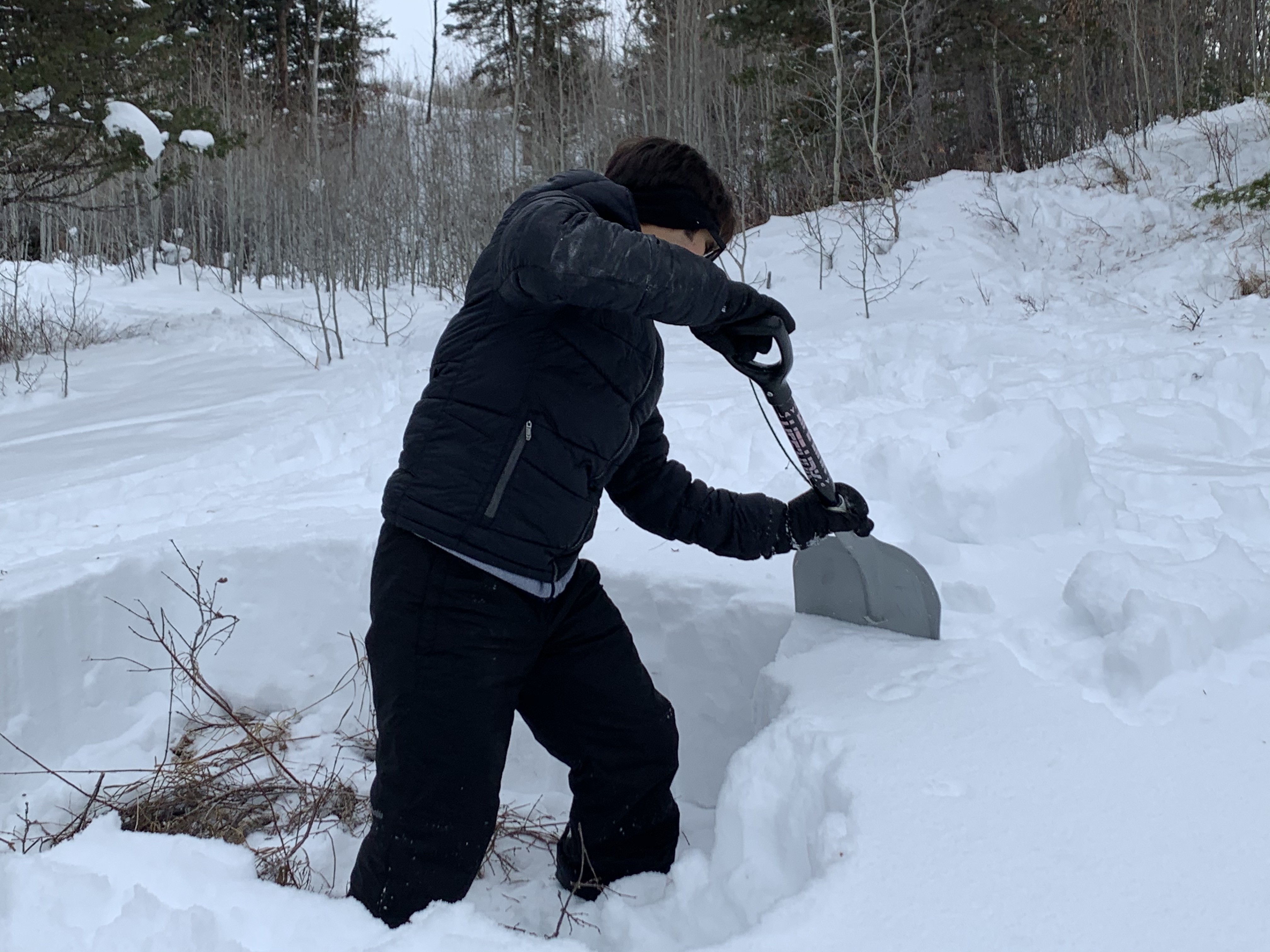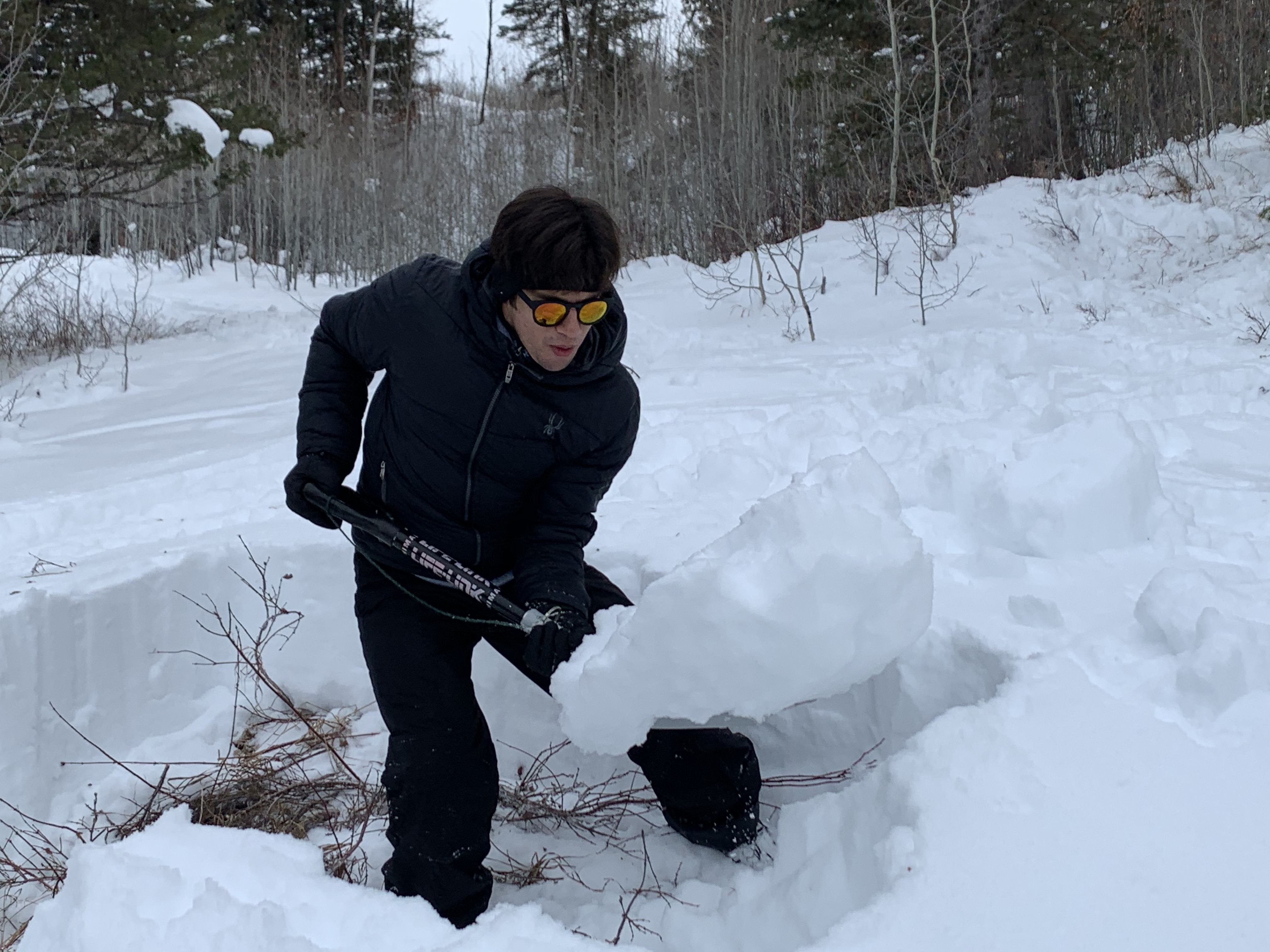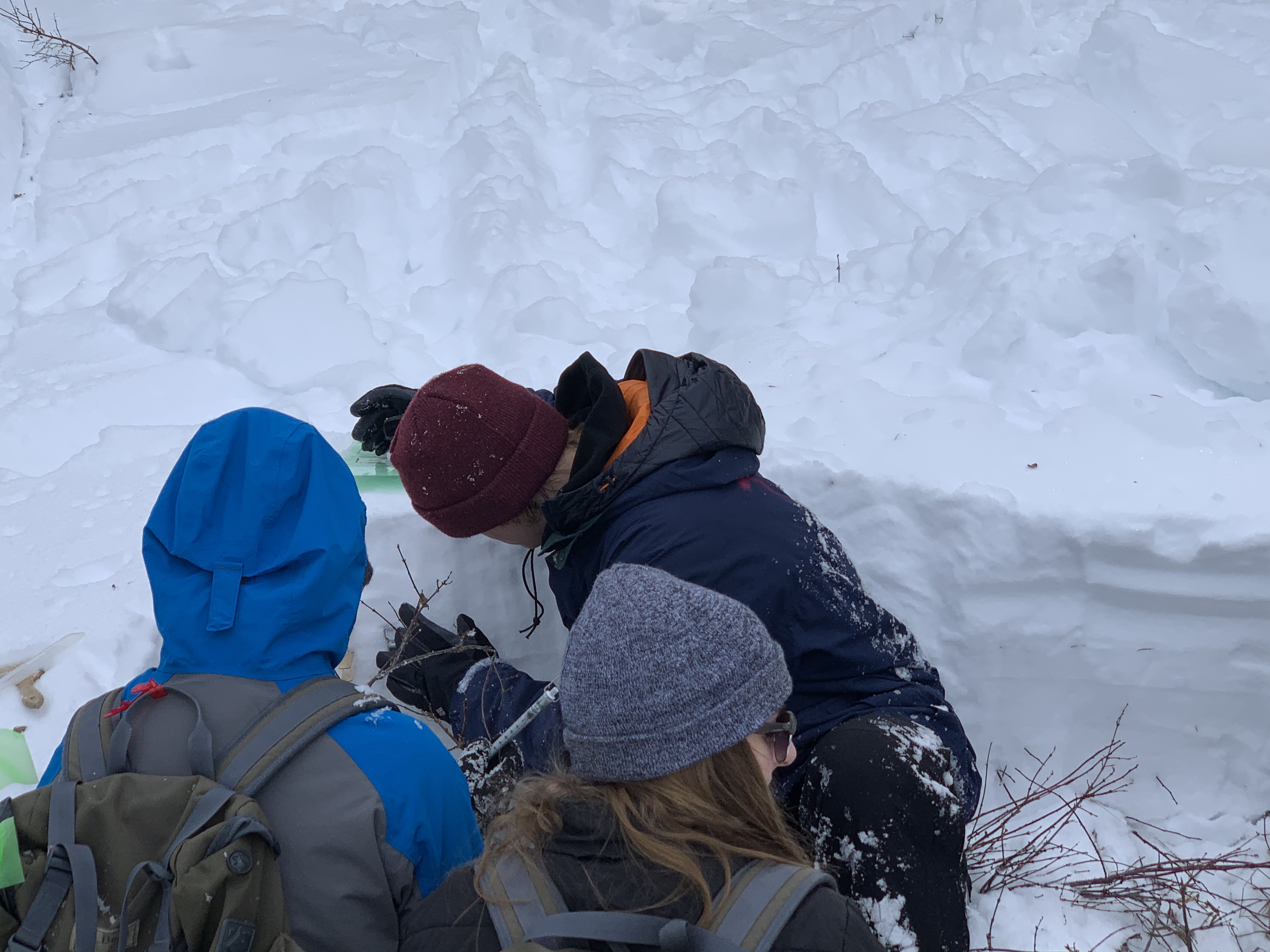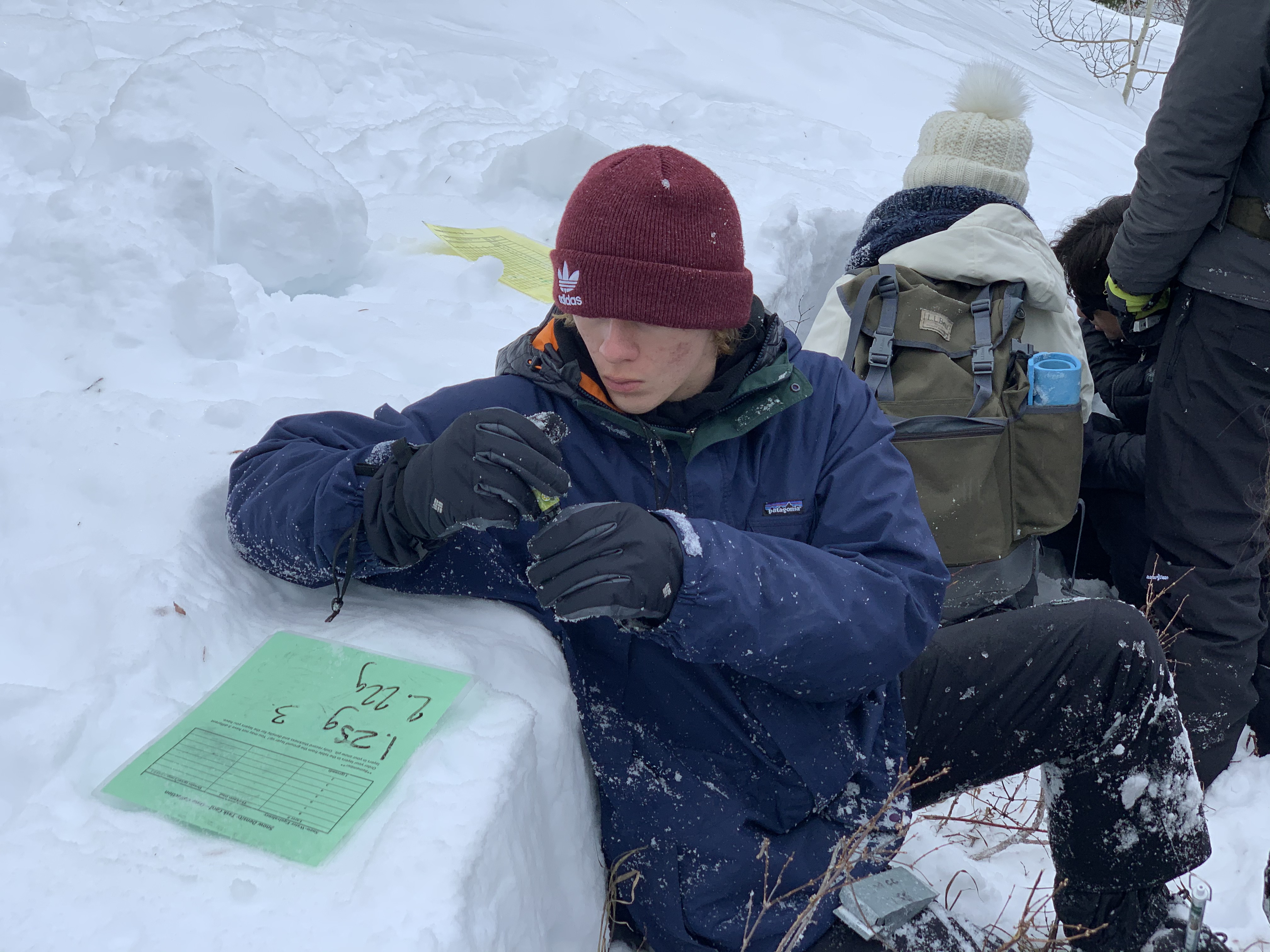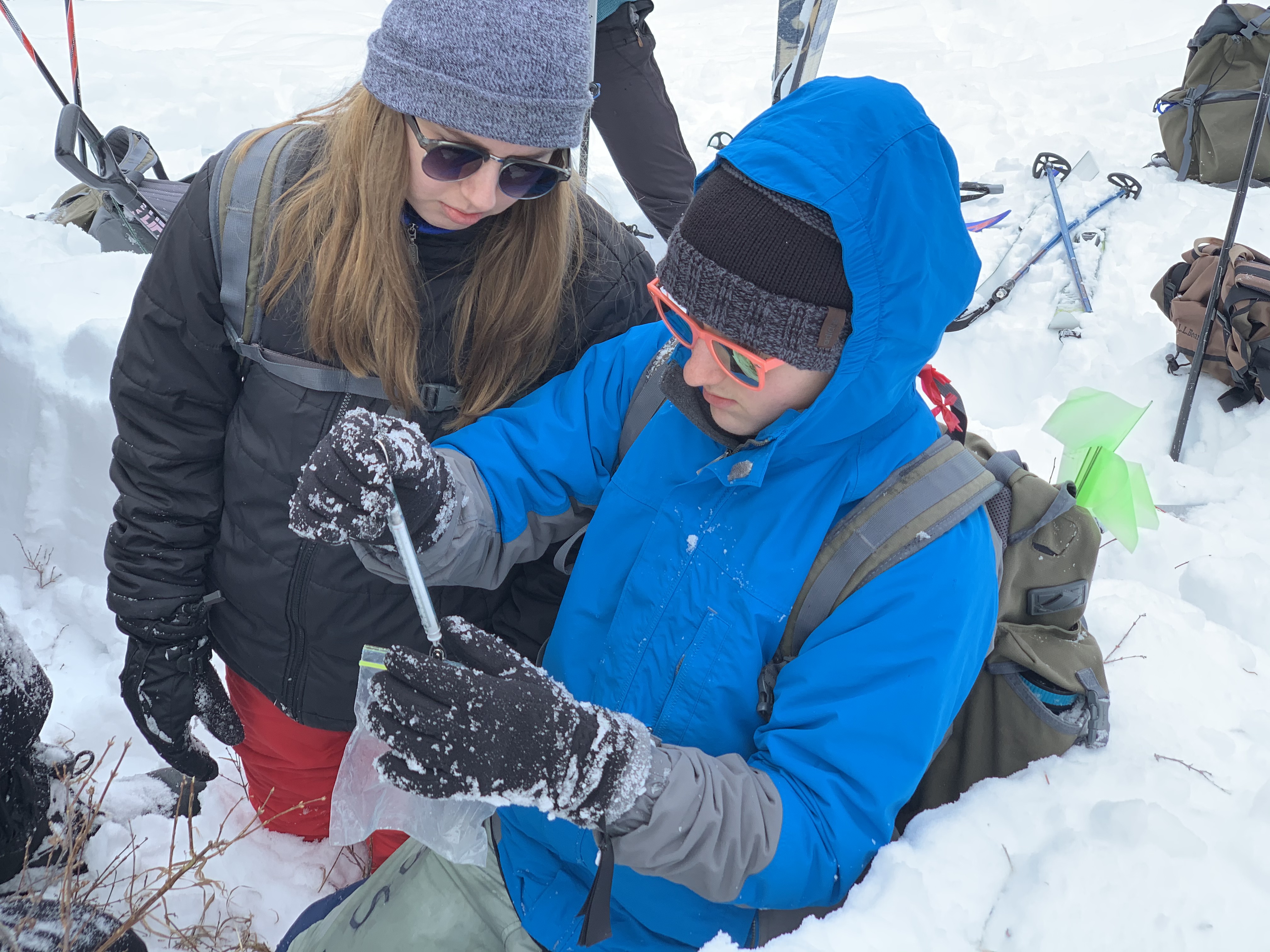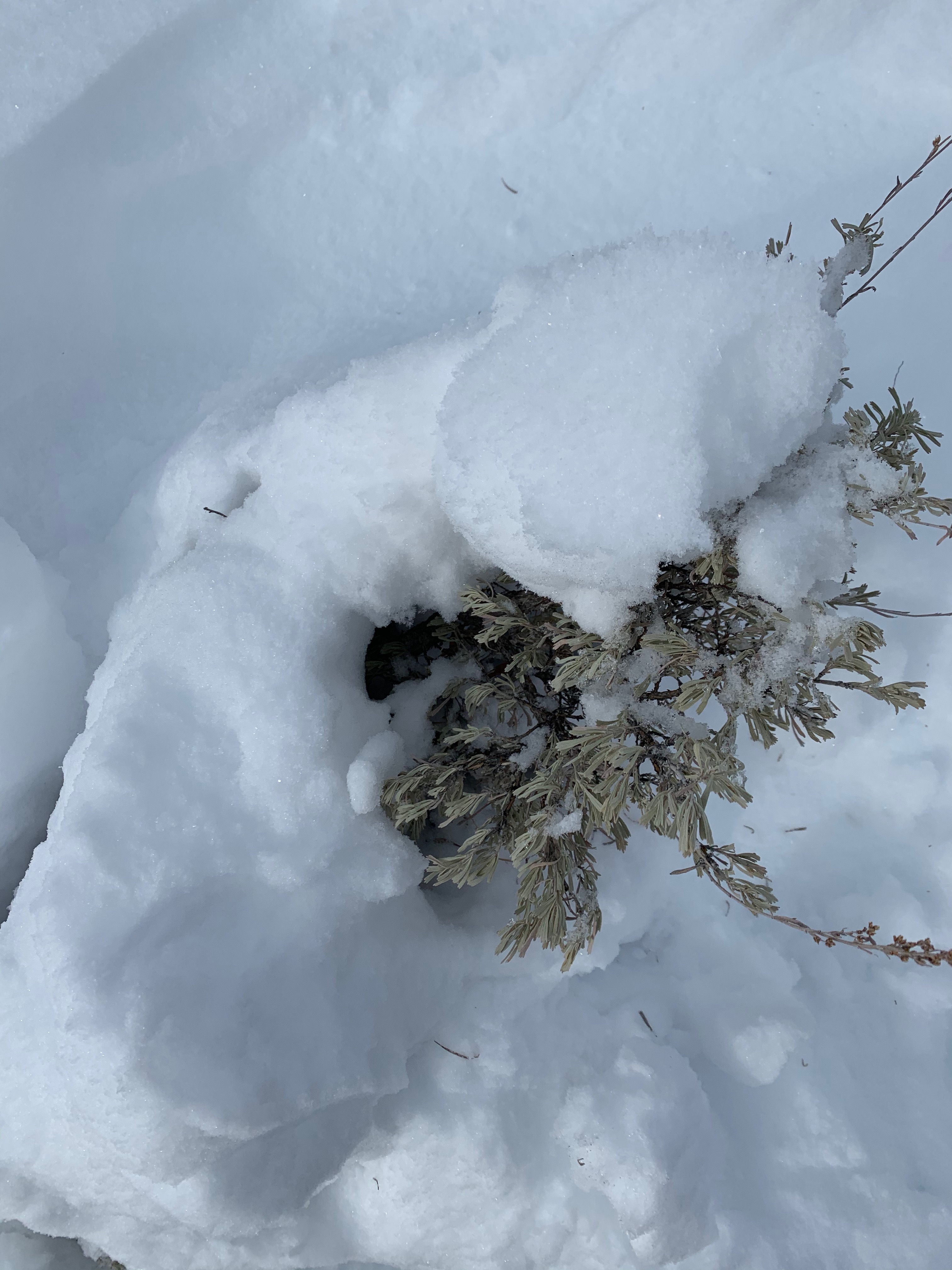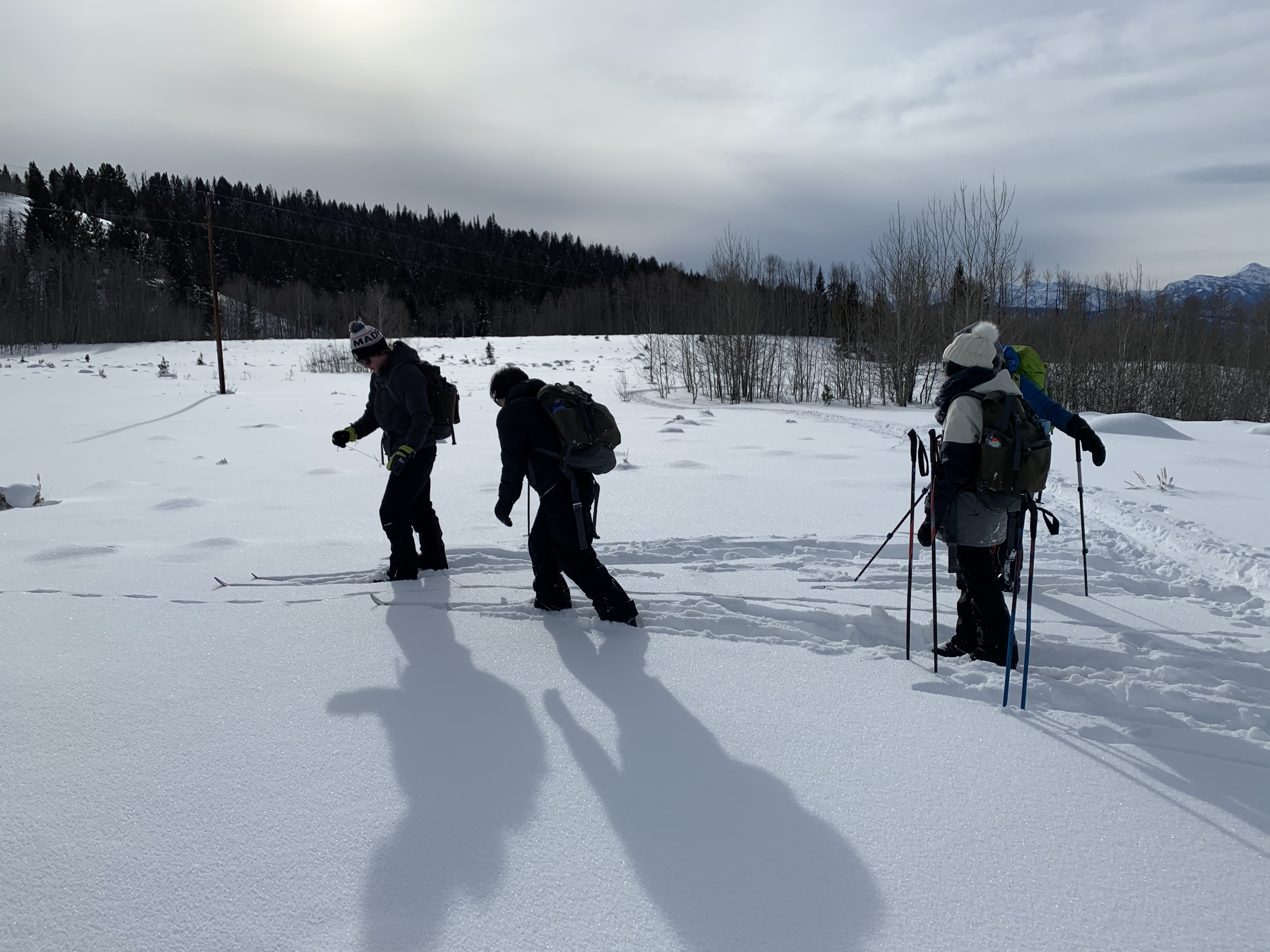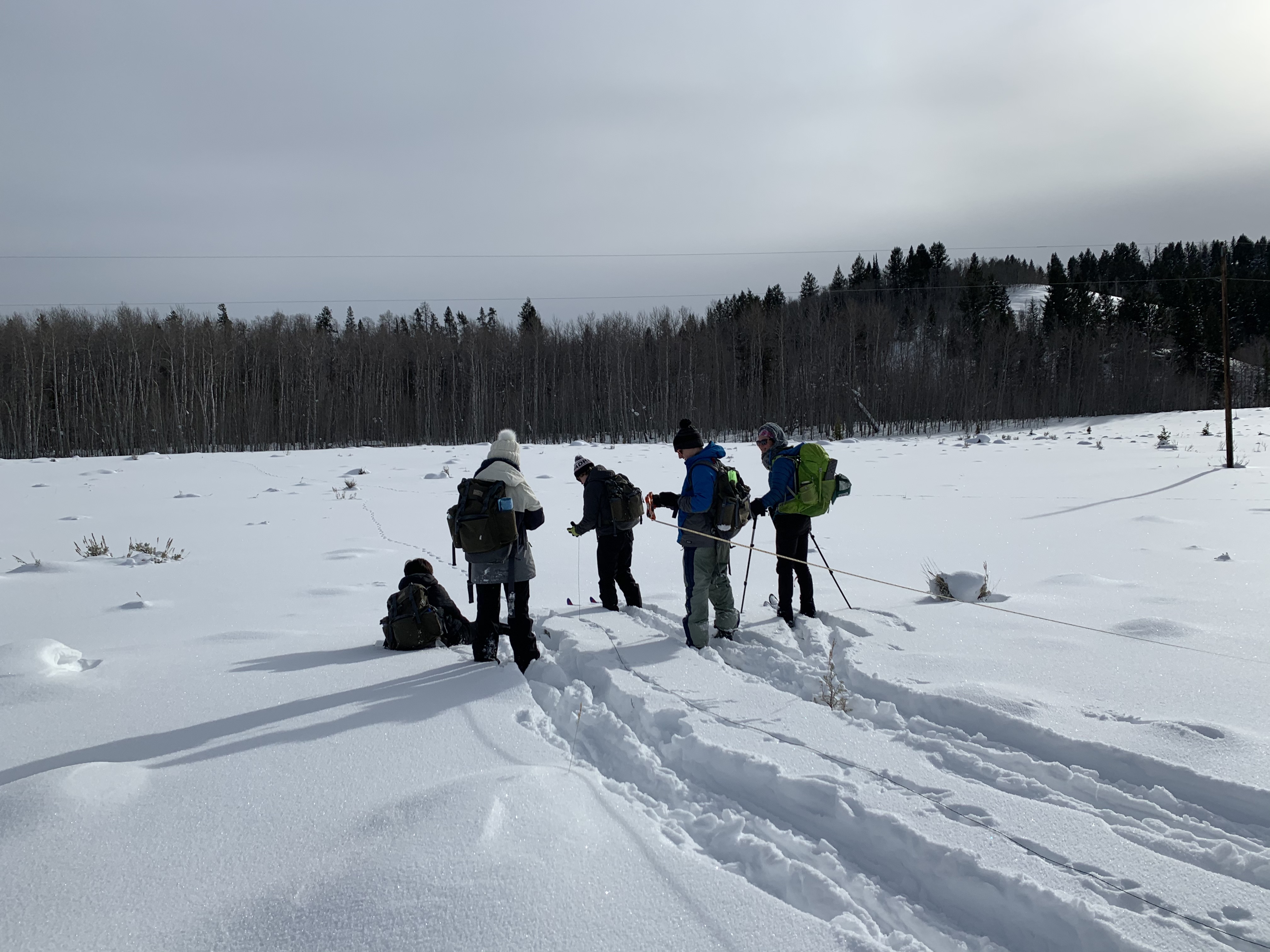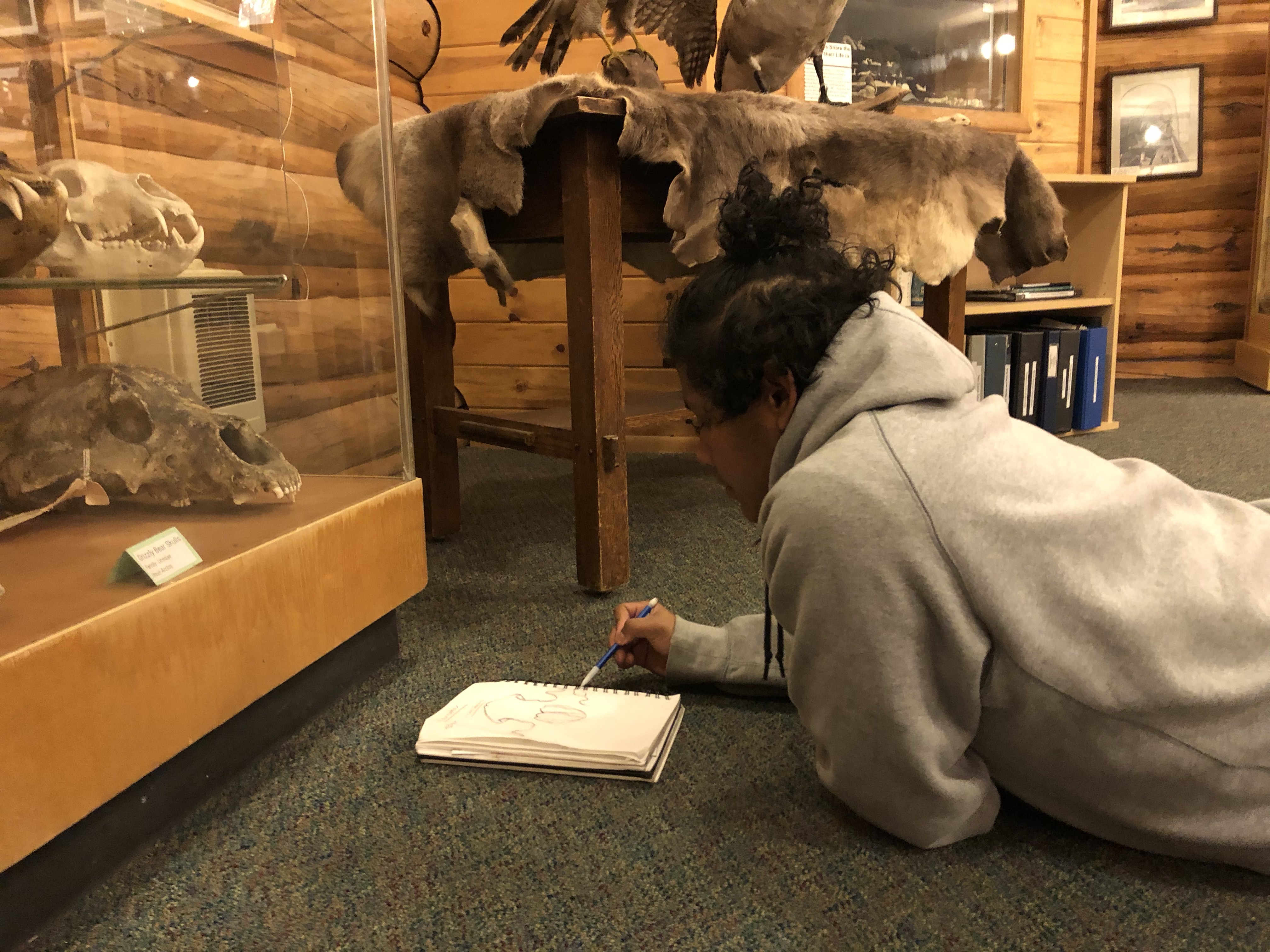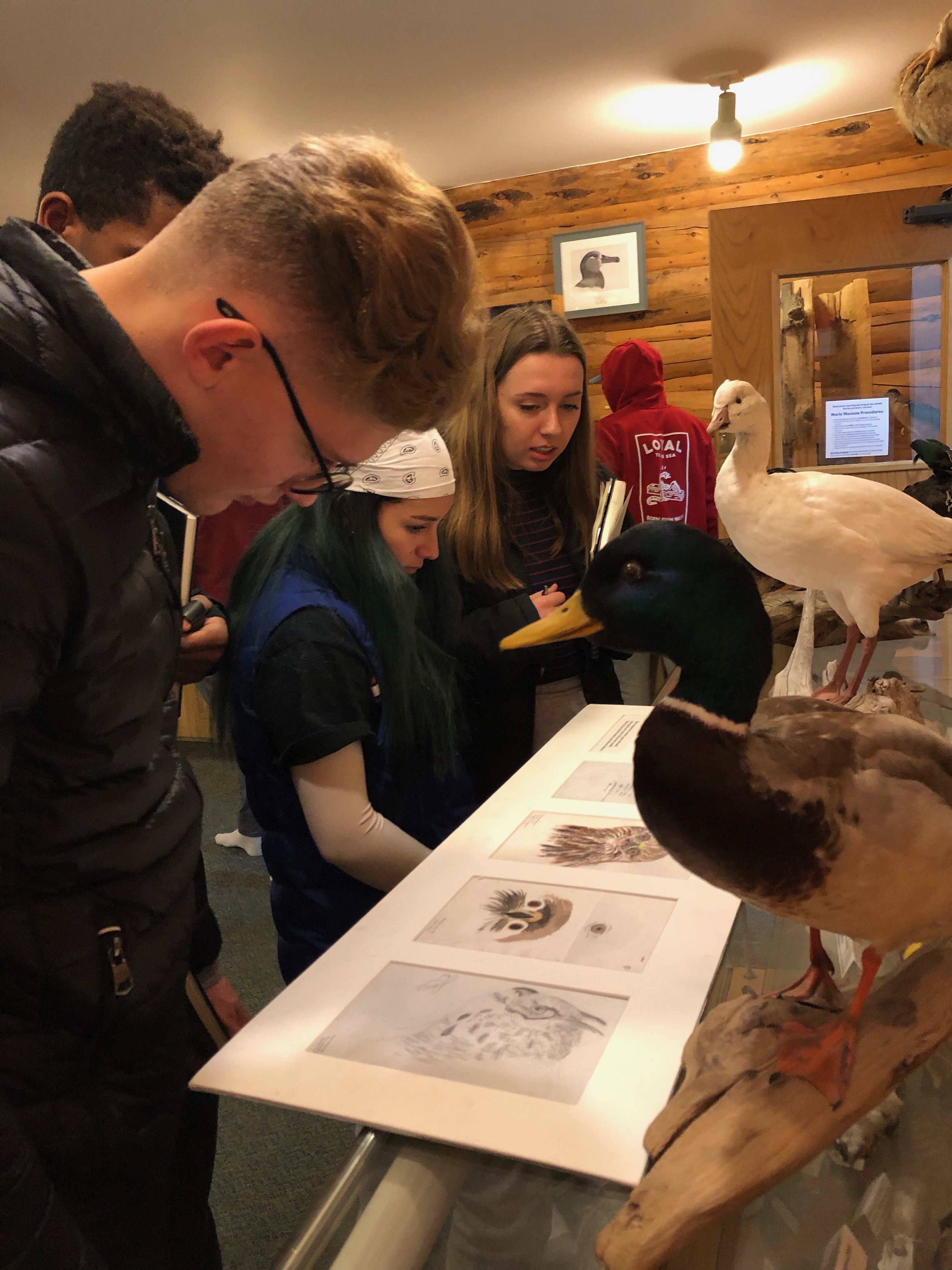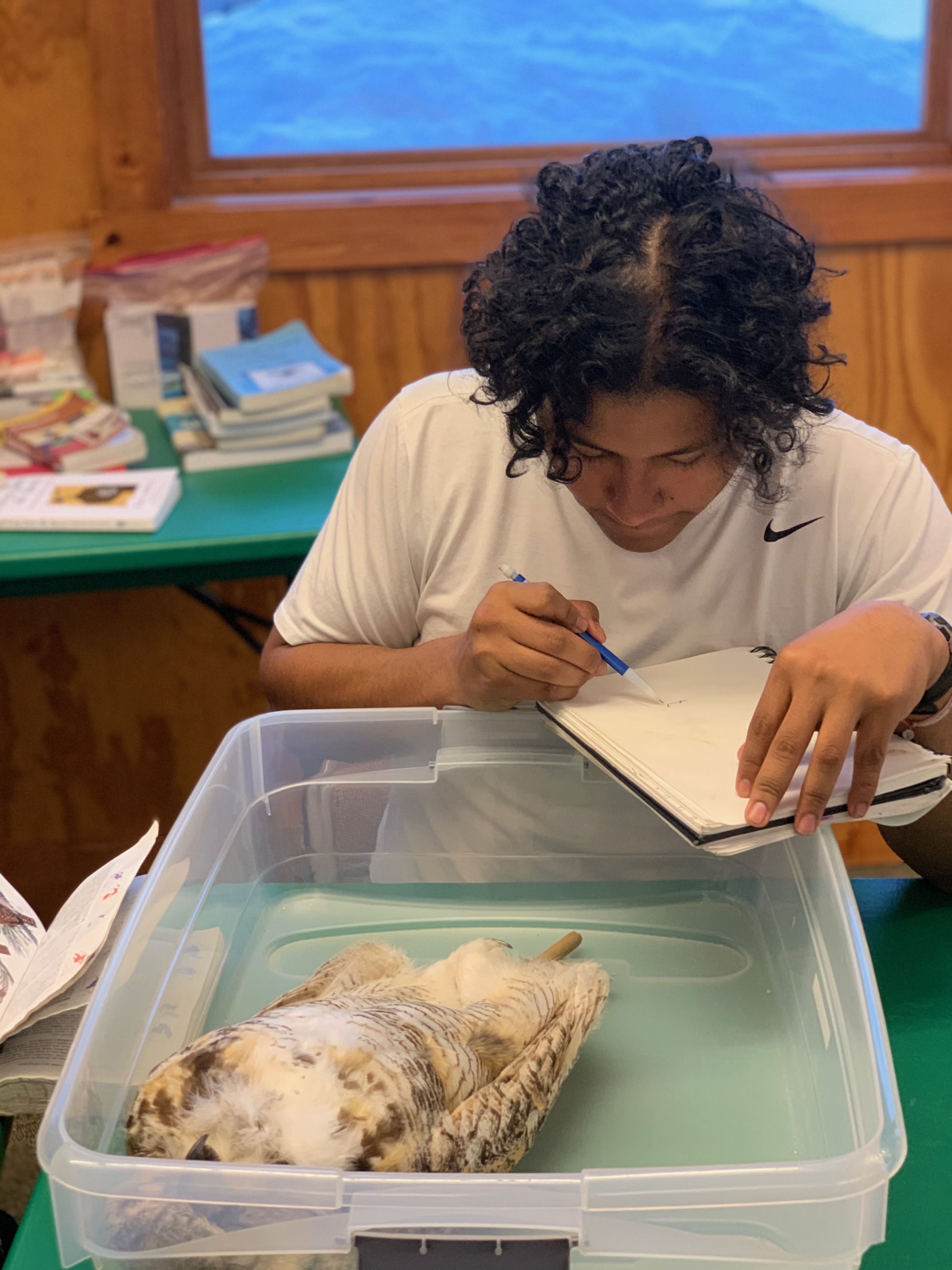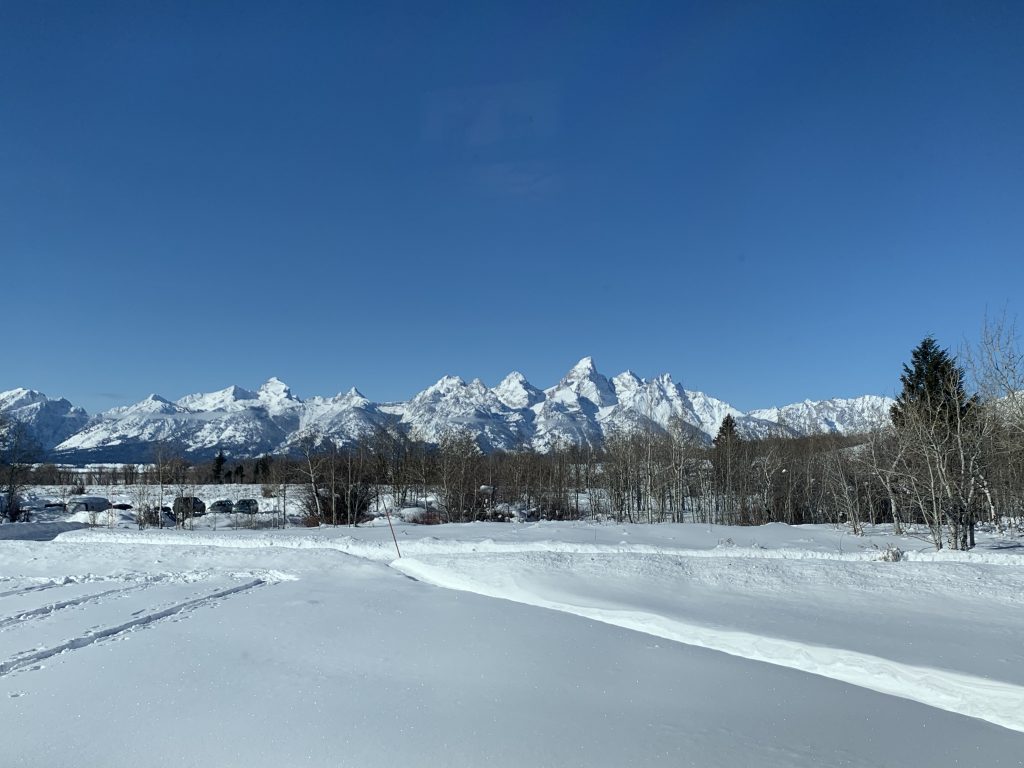After another delicious breakfast and a rousing Bible Lesson study time, we all suited up to go finish our research. Well seasoned students were quick to adorn their mode of locomotion and put their plans into action to collect final data. Those studying fire ecology put all they learned back home and at TSS to start and finish their project in a few hours. They left and returned happy that they finally were able to study what inspired them. Those studying snow science, animal tracks, and sagebrush had new questions from yesterday and used the morning to gain data that provided reassurance or greater insight. In the coniferous forest, everyone even saw a pair of moose which resulted in us yielding to them by traveling downhill. After lunch, the students analyzed their data, drew conclusions, and made posters in preparation for their evening presentations. Mid-afternoon was choice time. Some did further research, some x-country skied, while some did art. A good time was had by all: finishing projects; watching snow cascade off warming rooftops, encountering more moose, appreciating silence in the wilderness. After dinner, students presented research from the week in a data-driven sharing of their findings. Between the presentations were skits which recalled memorable, usually hilarious, moments from the trip. Afterward, gratitude was given by all for the program, the instructors, and each other. It was a great ending, but some nevertheless did a sort of a “polar plunge” by jumping into the snow without their usual winter gear. After that second ending of the evening, everybody finally went to bed satisfied from the full day!
Category Archives: Uncategorized
Day 4 – 2020

Jan. 22, 2020
Today we launched into formal research on the TSS campus. After exploring interests and considering scientific questions, students formed groups and determined a research question and methods for collecting data. Research topics include animal tracking, tree species frequency, snow temperature and density, and sagebrush dominance. Most of the groups spent a significant amount of time determining their scientific process which, while on skis or snowshoes, can feel tricky. We were fortunate to have beautiful weather again today, not too cold or windy to keep students from digging snow pits or measuring sinuosity. Everybody is eager to finish their data collection tomorrow morning. Students have been digging into their journals during morning art sessions and afternoon “resource time.” This evening, a TSS instructor is guiding a session on mindful communication. This week has stretched us to be more observant and inquisitive. Looking forward to our final field day and research presentations tomorrow.
Day 3 – 2020
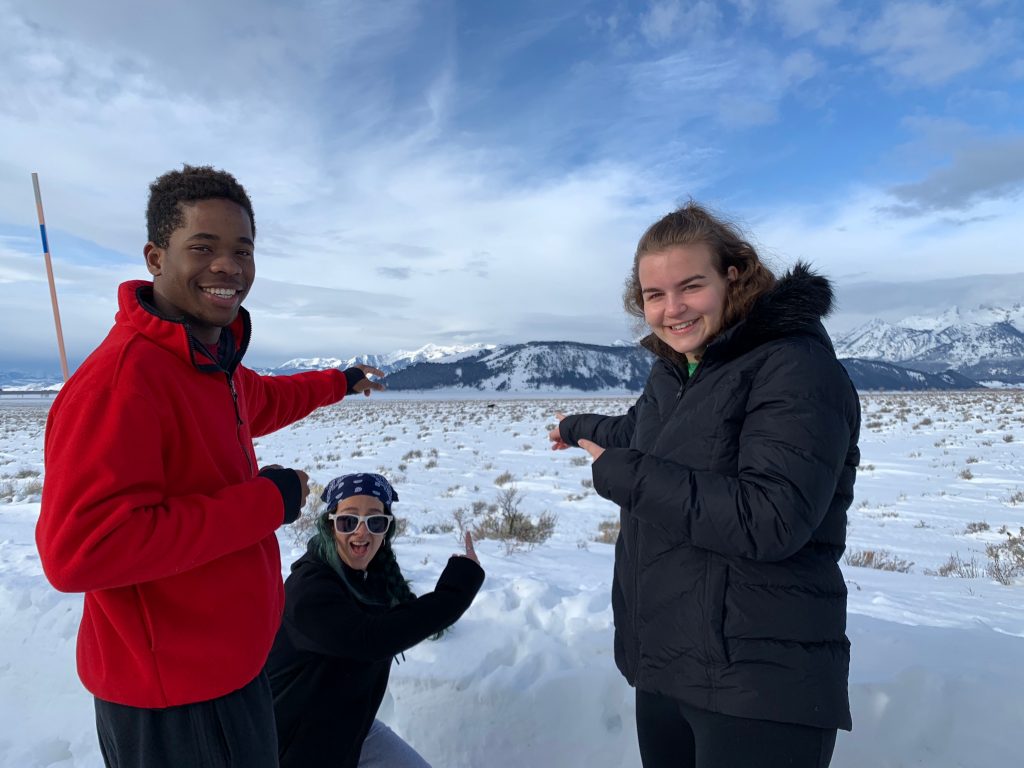
Jan 21, 2020
Our group has had another inspiring day of exploring field science and art in the Tetons. We started off in the National Museum of Wildlife Art, where we had a chance to explore the galleries, sketch, and make connections. The museum has a clear view of the National Elk Refuge, giving us the opportunity to learn about the controversial topic of feeding the elk. The afternoon was spent snowshoeing at the foot of the Tetons, starting from Bradley Taggart. We are gaining a deeper understanding of the relationships between abiotic, biotic, and cultural factors in this ecosystem.
Day 2 – 2020
January 20, 2020
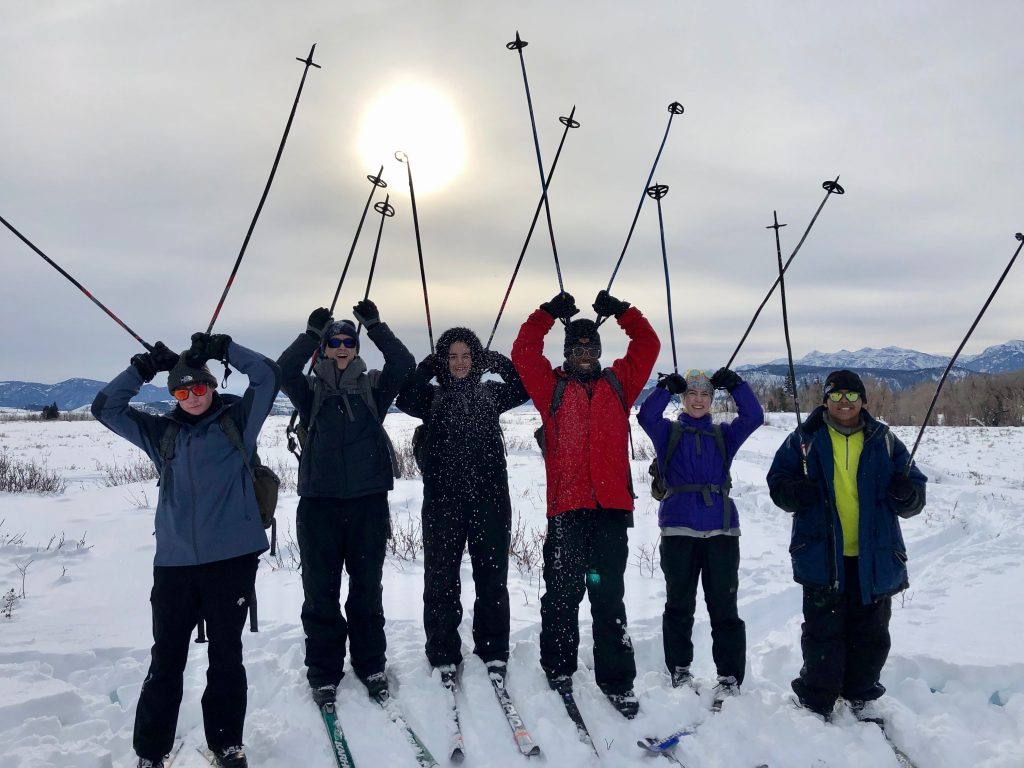
Today was an incredible first day in the field! We explored the Kelly Campus on cross country skis, making frequent stops for lessons on plant communities, winter adaptations, and data collection methods. In the evening, we explored the extensive collection of specimens in the Murie Museum. Students created species accounts and looked closely at field notes and drawings of Olas Murie.
Day 1 – 2020
Day 6 – 2019
Our last day in the Tetons was full, productive and fun! We awoke to a sky full of stars and the mountains literally glowing in the moonlight. In the morning we gathered the last bit of data needed for our individual projects. We then came inside to do analysis and create posters for a final presentation. Following that, students chose whether they wanted to go out for a cross-country ski or stay indoors to do art. The group split up and enjoyed time to explore how they wanted. The evening culminated with a symposium where they shared their research findings following by a celebration of the week. What a fantastic group of thoughtful individuals. Each person made the most of the week by expressing perseverence, humility and gratitude, making the experience a joy for all.
Day 5 – 2019
For many, the pancakes and bacon were a great way to begin a big day in the field. After a student-led Bible lesson time and a wonderful program on communicating data through infographs, based on their interests, the students created scientific questions to investigate. Four groups formed around the following questions: 1) How does species richness vary across elevation? 2) How does snowpack among different communities impact conditions favorable for subnivian life? 3) Which biotic community attracts the most animal biodiversity? 4) How do biotic factors impact snow crystal formation across the snowpack? The evening was filled with leadership and teambuilding activities, capping off a fantastic day. The instructors who led the team building activities were floored by this group’s kindness, respect, and functionality. It was a full day of great data collection and awesome student energy.
Day 4 – 2019
This morning we were greeted by the magnificent Teton range out in all its glory. Sunny day provided clear views and a gorgeous sunrise and sunset. In the morning, we went to the National Wildlife Art Museum and explored the question, “How does art inspired by wilderness contribute to conservation?” It was powerful to see how students identified ethics expressed in works of art. After the museum, we drove to Miller Butte in hopes of seeing big horn sheep. We were not disappointed! Following the exciting finds, we took a sleigh ride at the National Elk Refuge, learning in depth about the controversial topic of feeding the elk. We wrapped up the evening with a fiery (yet very respectful) debate that highlighted each of the stakeholders who are part of this controversial management practice. We sought consensus and some groups found it. Be sure to ask what their thoughts are on feeding the elk and why!
Day 3 – 2019
What an active day we had! After french toast for breakfast, Bible lesson, and journal/art time, we boarded the vans and went deep into Teton National Park to the renowned Bradley Taggart Lake trailhead. There, we put on snowshoes, learned some basic skills, and set off in our two study groups. To answer today’s essential question – How have major abiotic forces shaped our biotic communities? – we studied the unique geology of the area, better understood what burning can do to a lodge pole pine tree community, and dove into snow science. At the end of the day, the last of our classmates arrived so it is wonderful to all be here. It looks like tomorrow will more cold and clear and again promises to be a fun day packed with learning!
Day 2 – 2019
Our first full day in the Tetons was full of discovery! Cross country skiing to learn about winter adaptations in the Greater Yellowstone Ecosystem was the order-of-the-day. Lots of people were getting outside their comfort zones trying cross country skiing for the first time. Students gained a deeper appreciation of this winter landscape as they tried their hand at watercolor painting. This evening, they had the opportunity to visit the Murie Museum here on the Teton Science School campus. It’s a world-renowned collection of Olaus Murie’s work as a naturalist. The group supported one another magnificently all day. We’re looking forward to snow-shoeing and snow science tomorrow!

